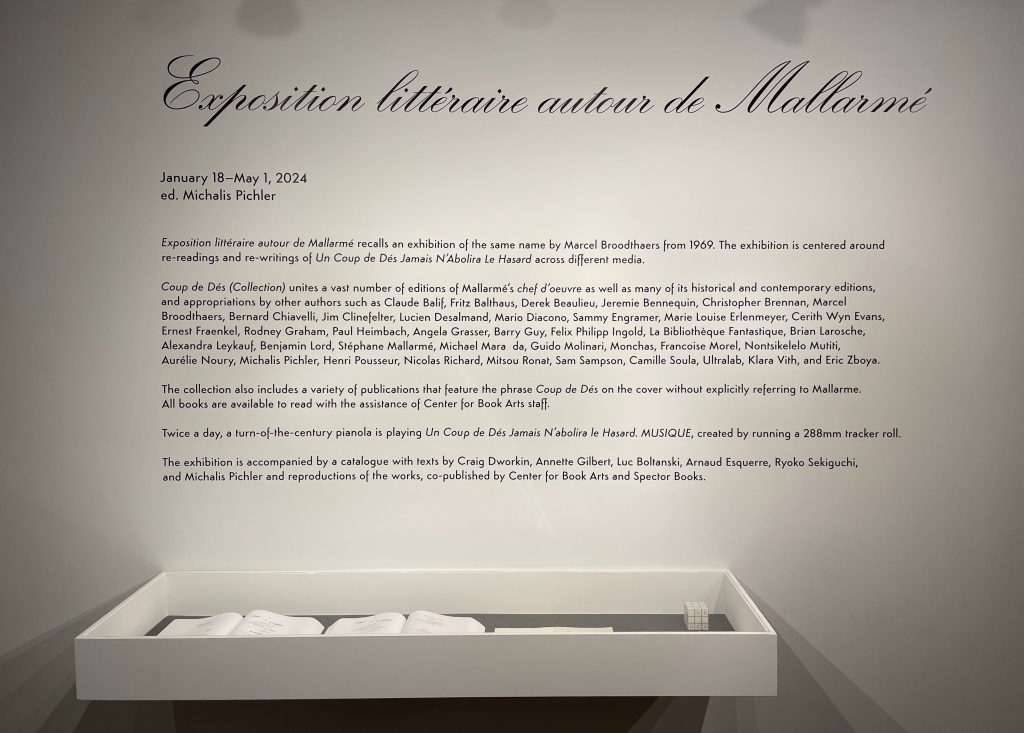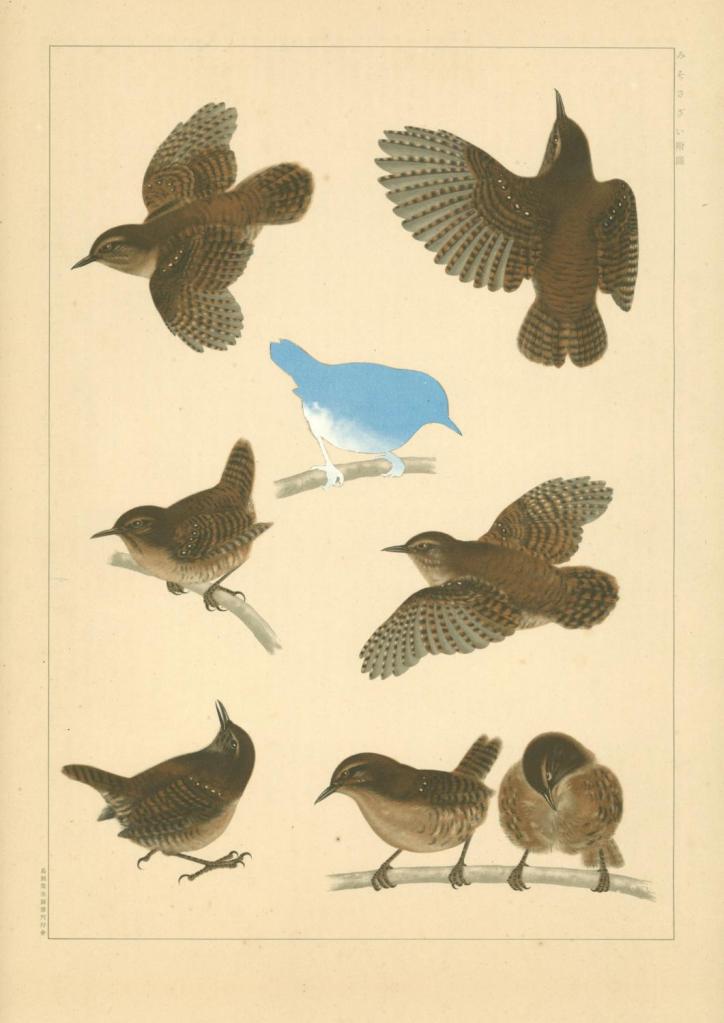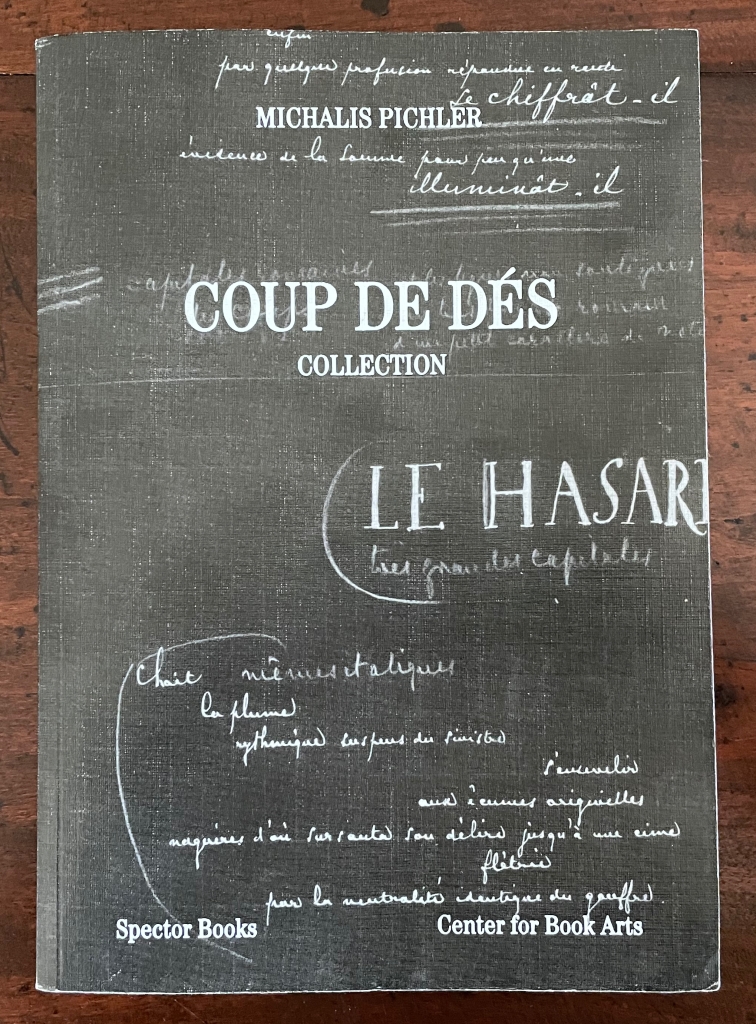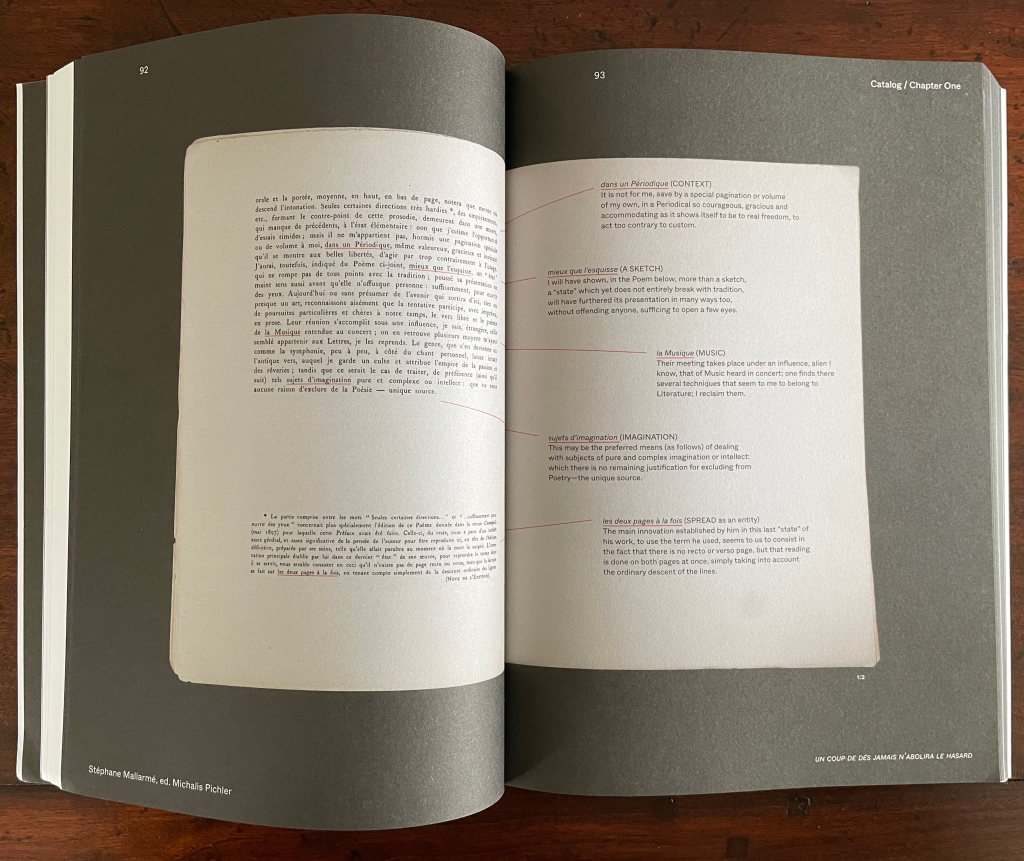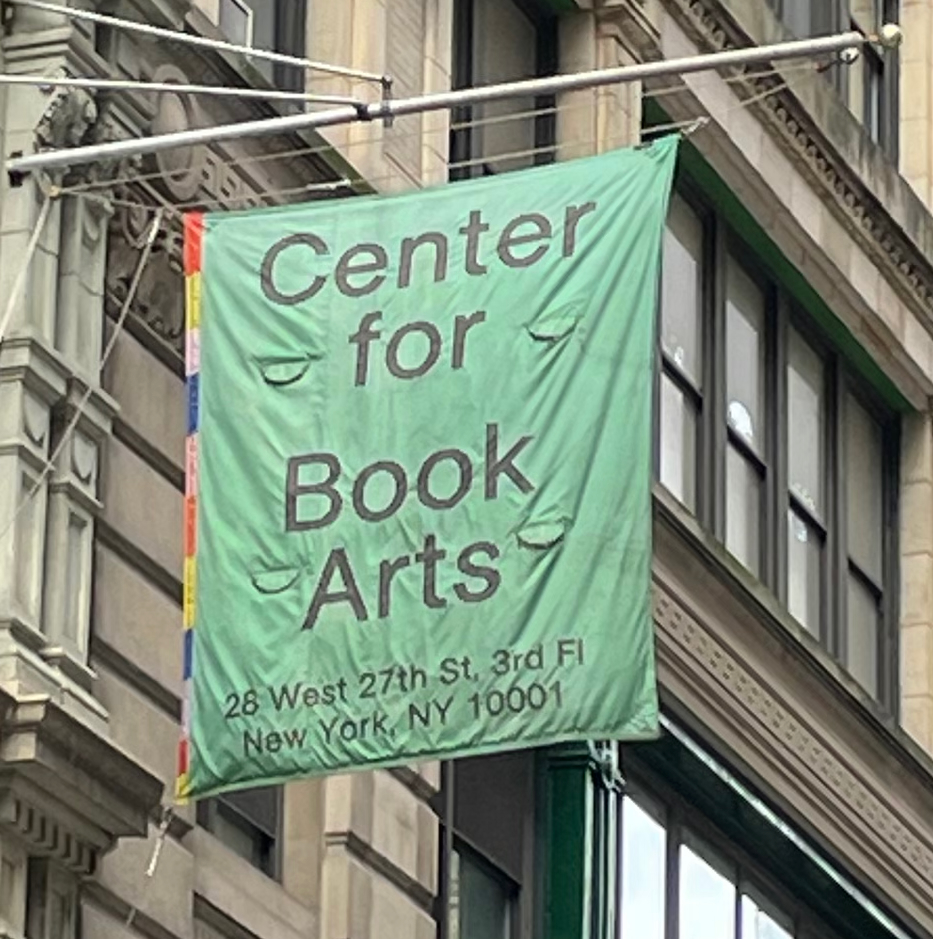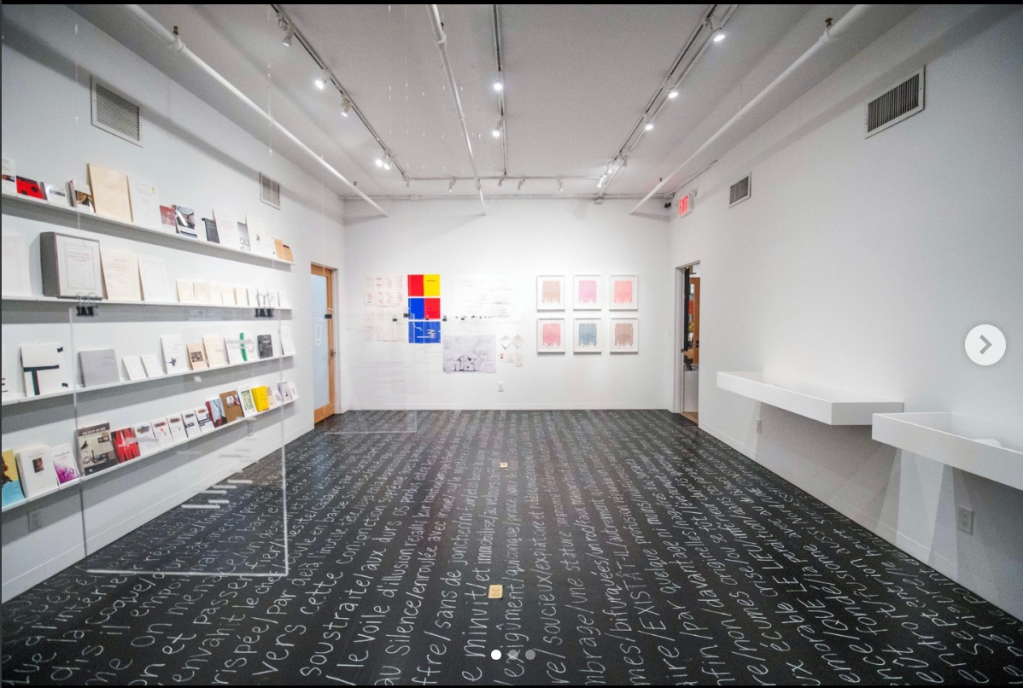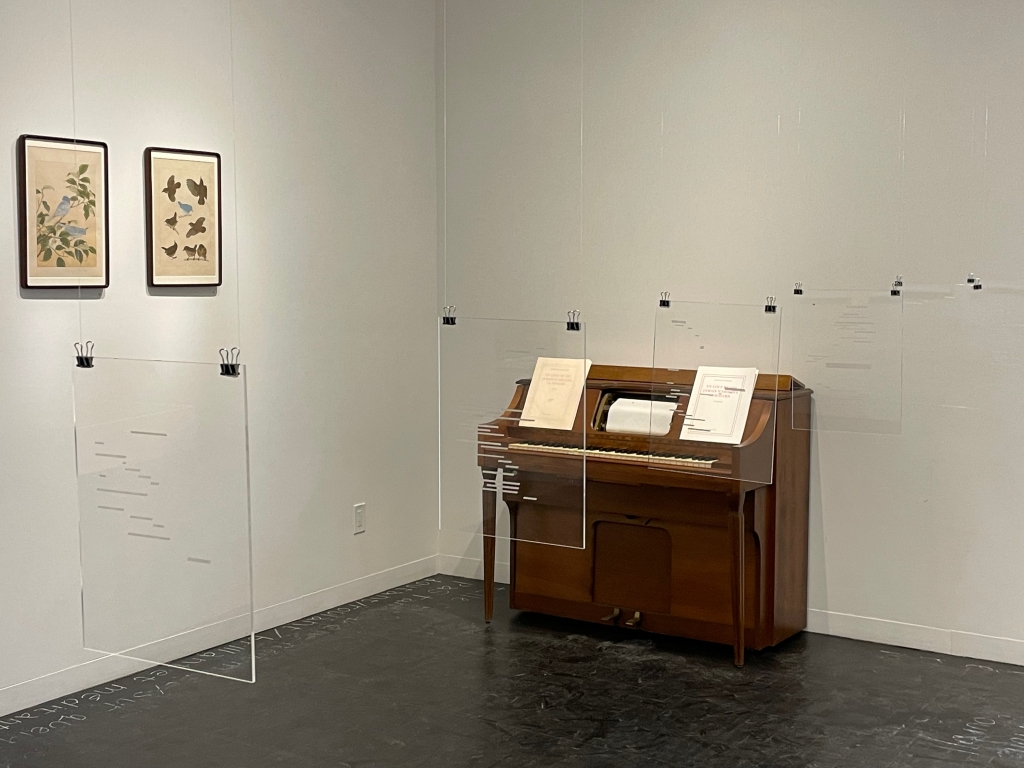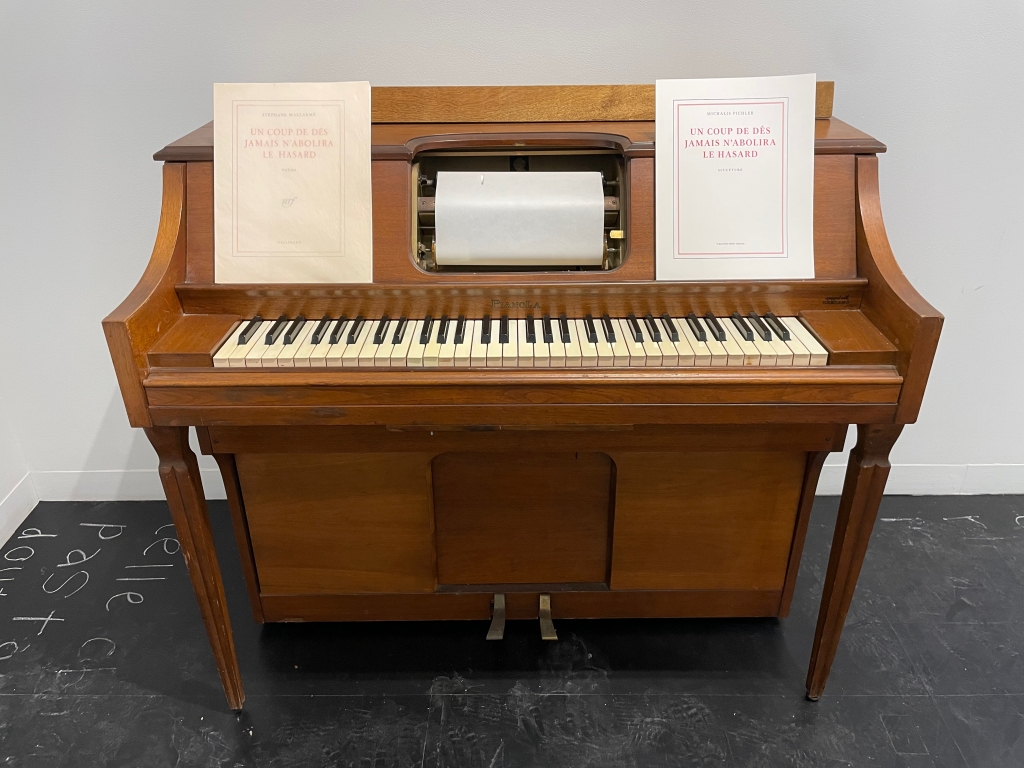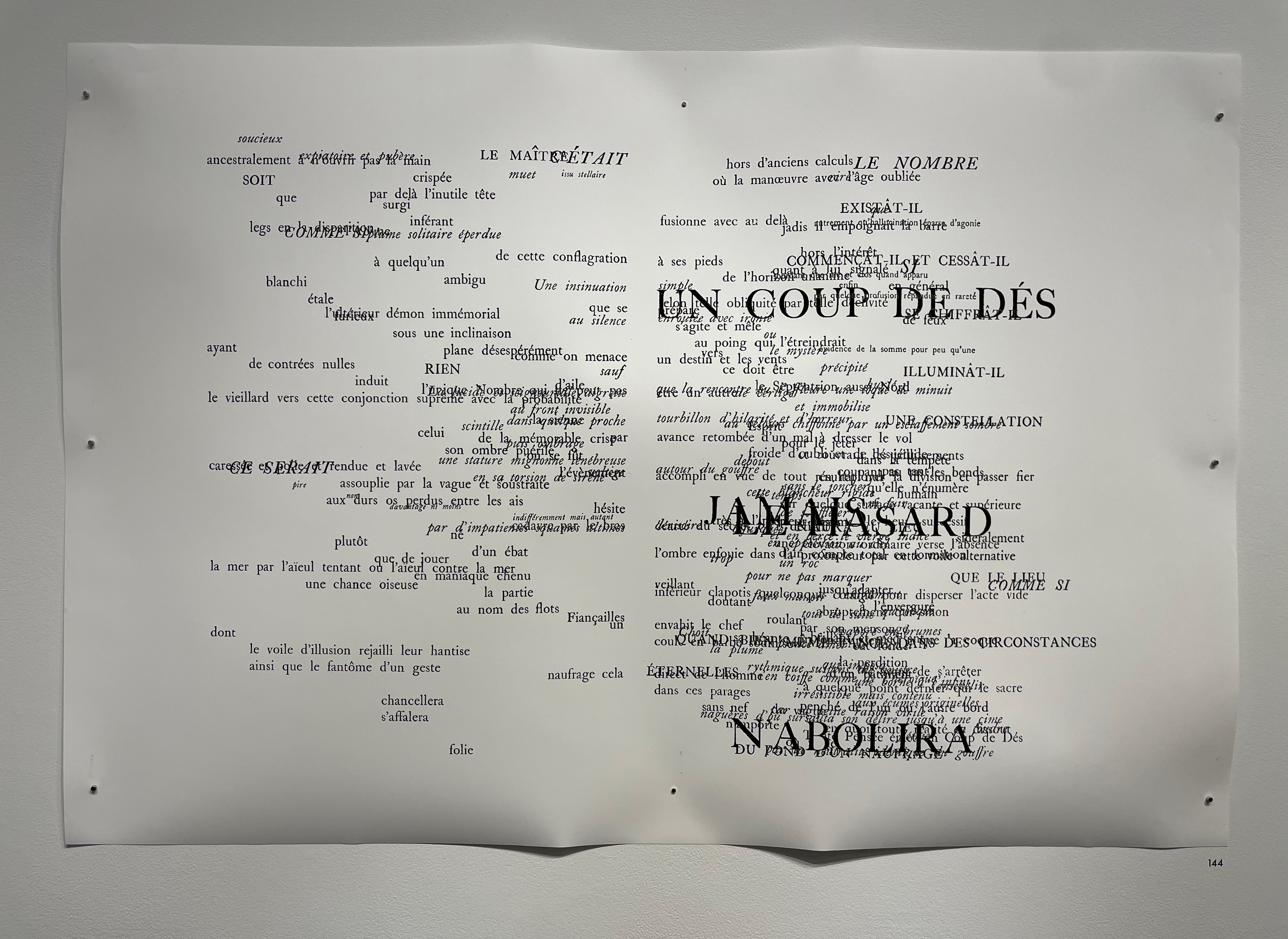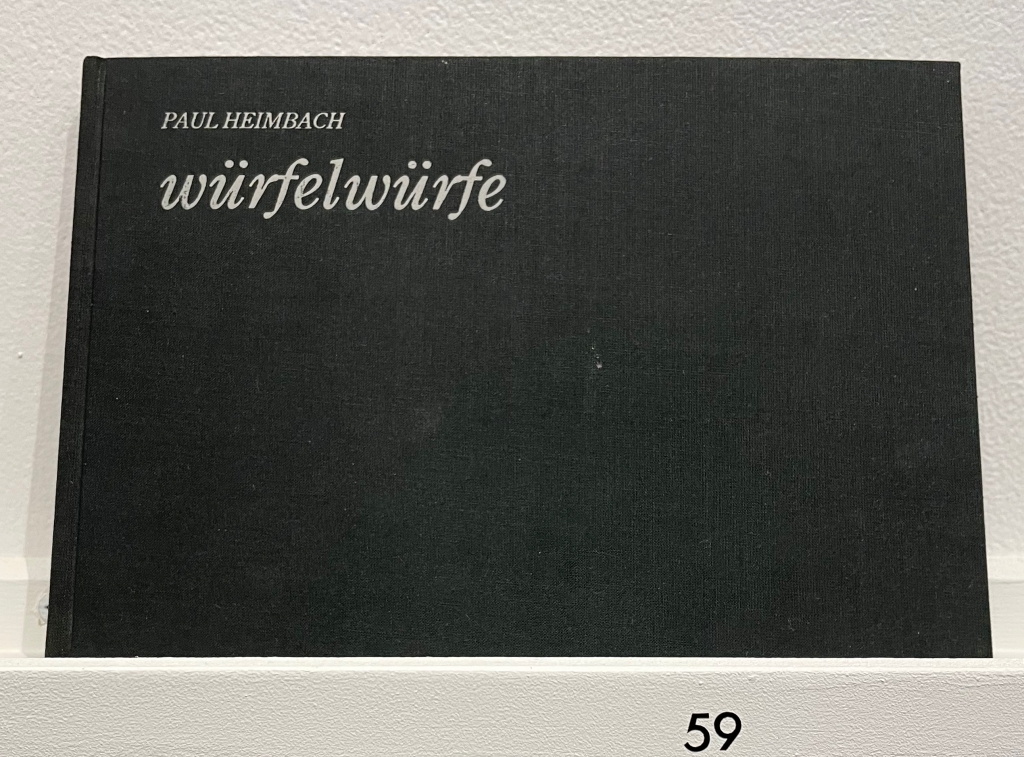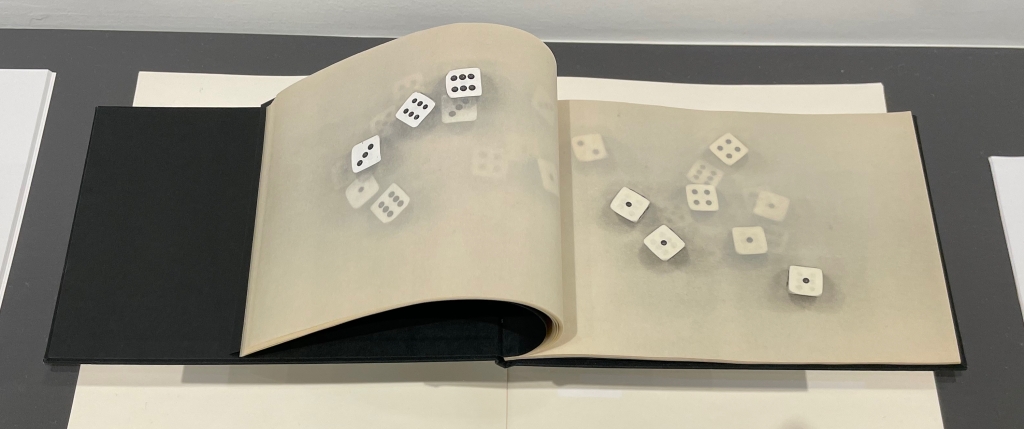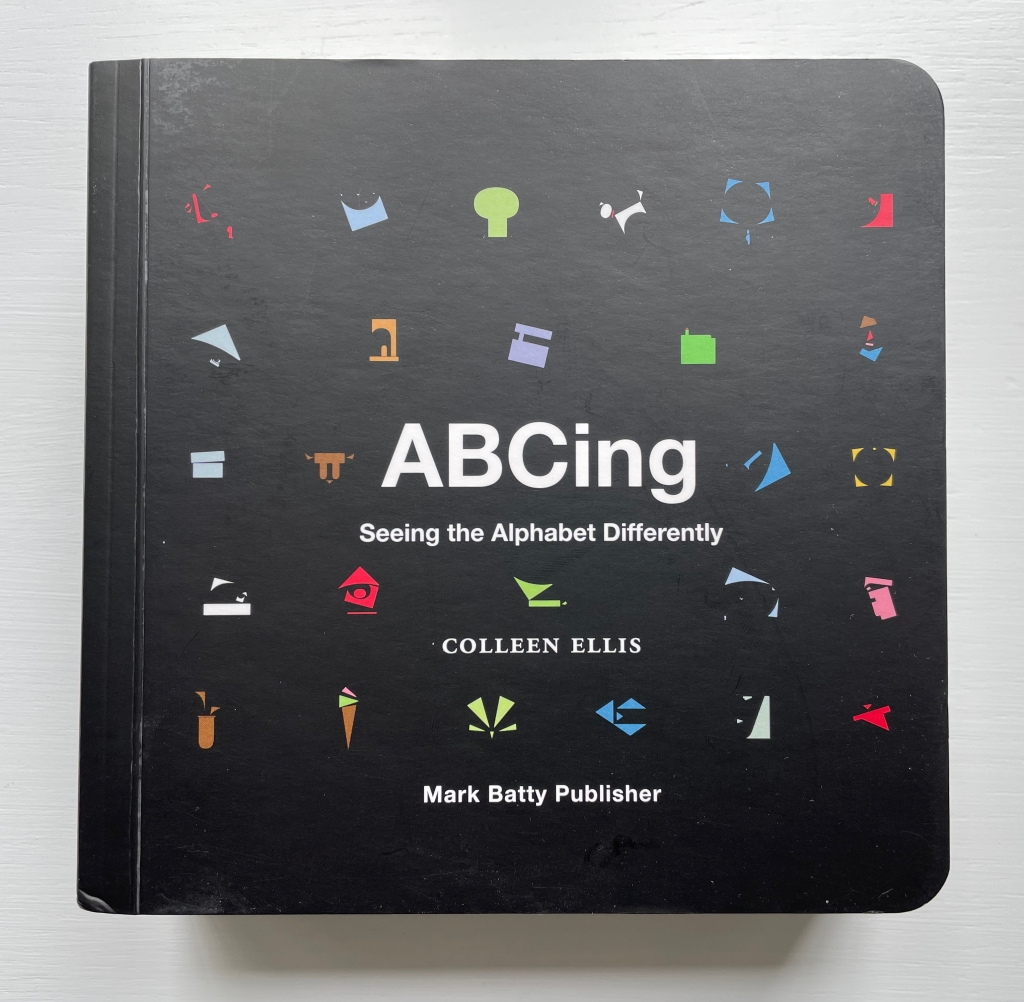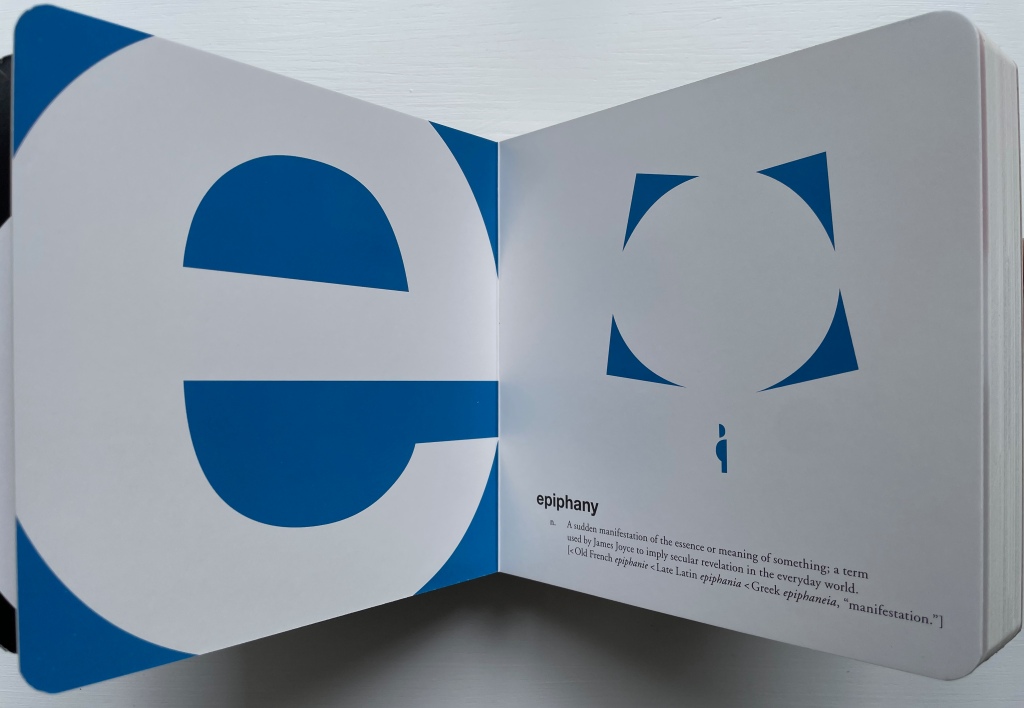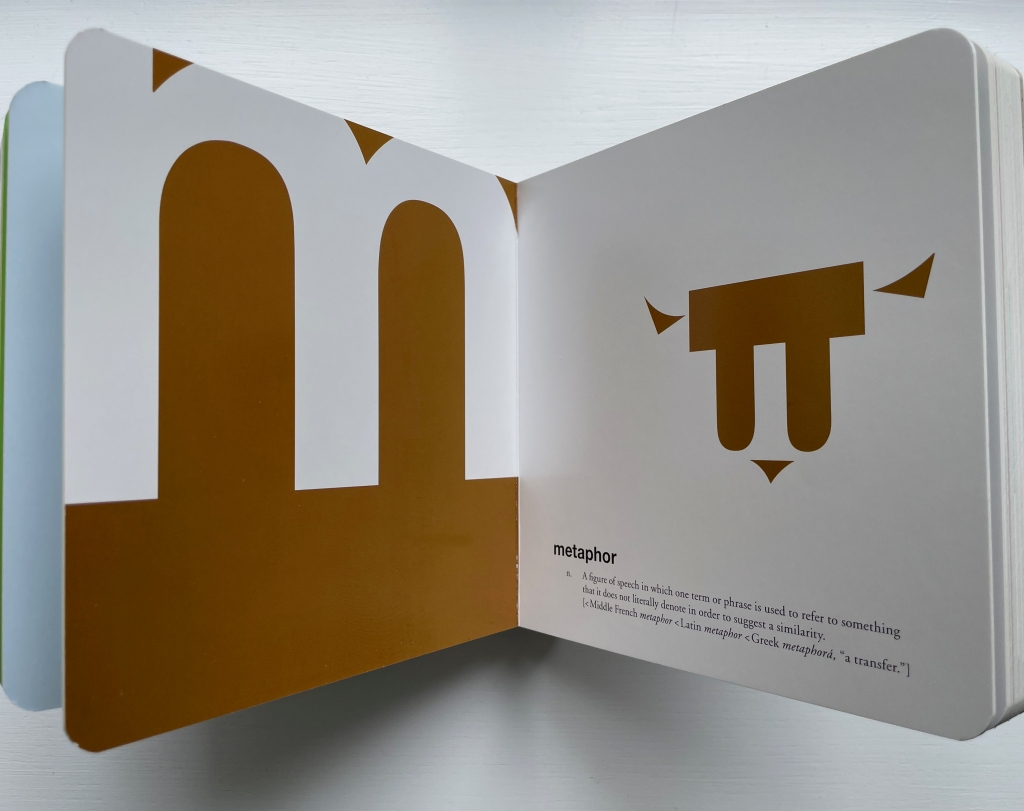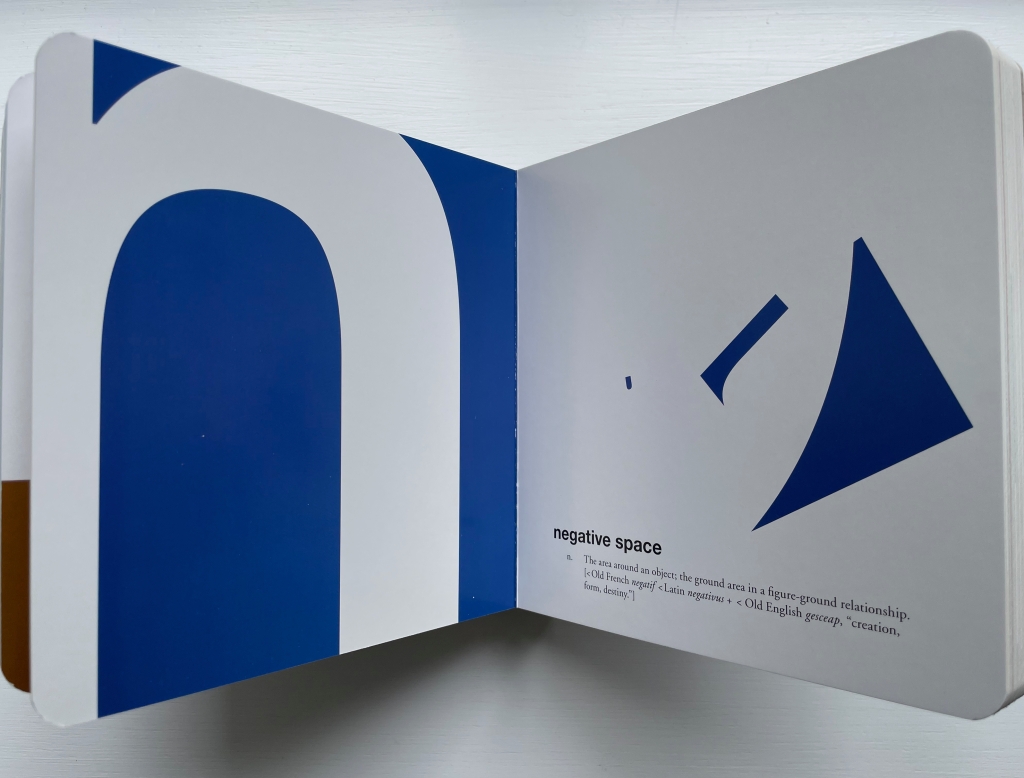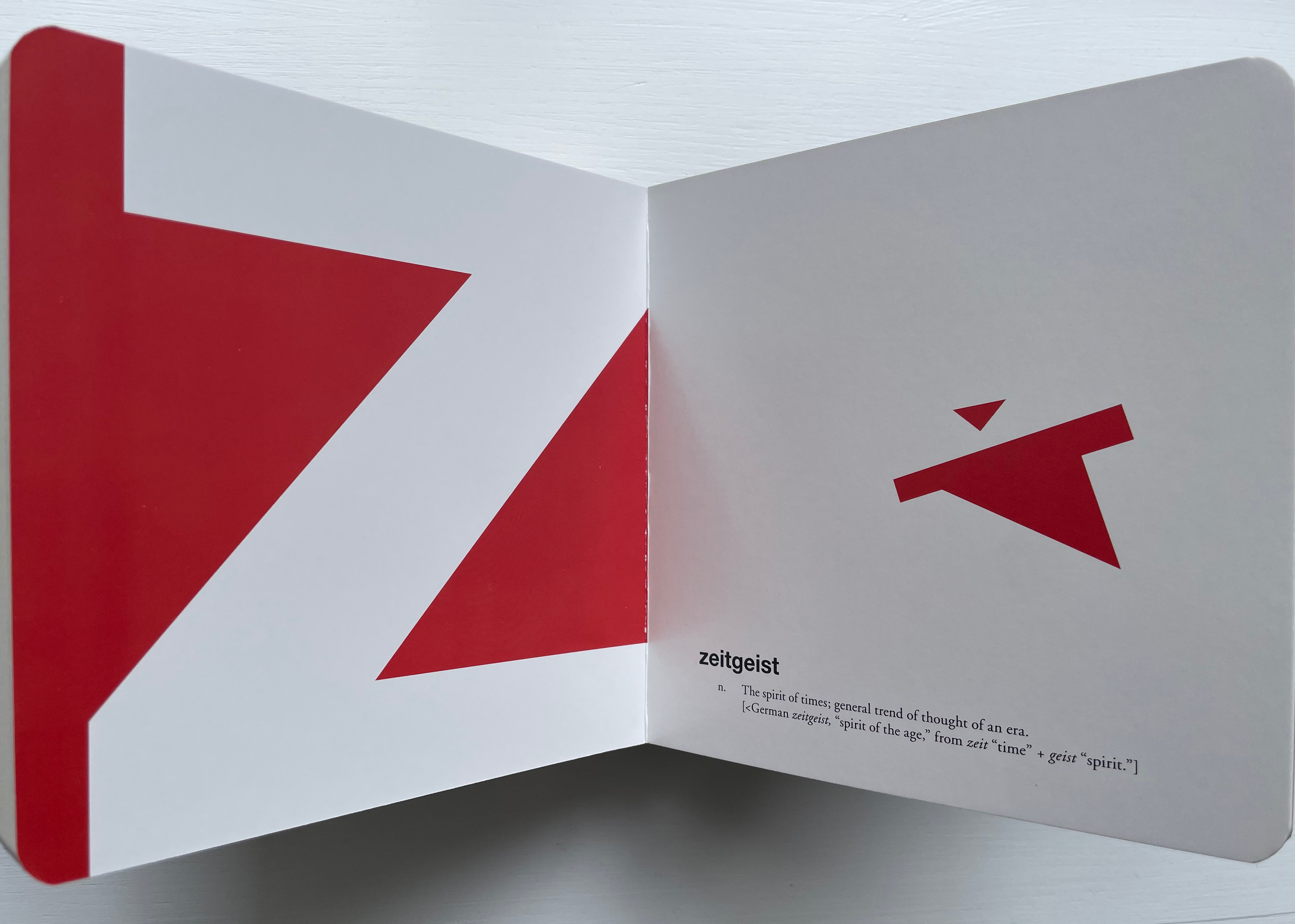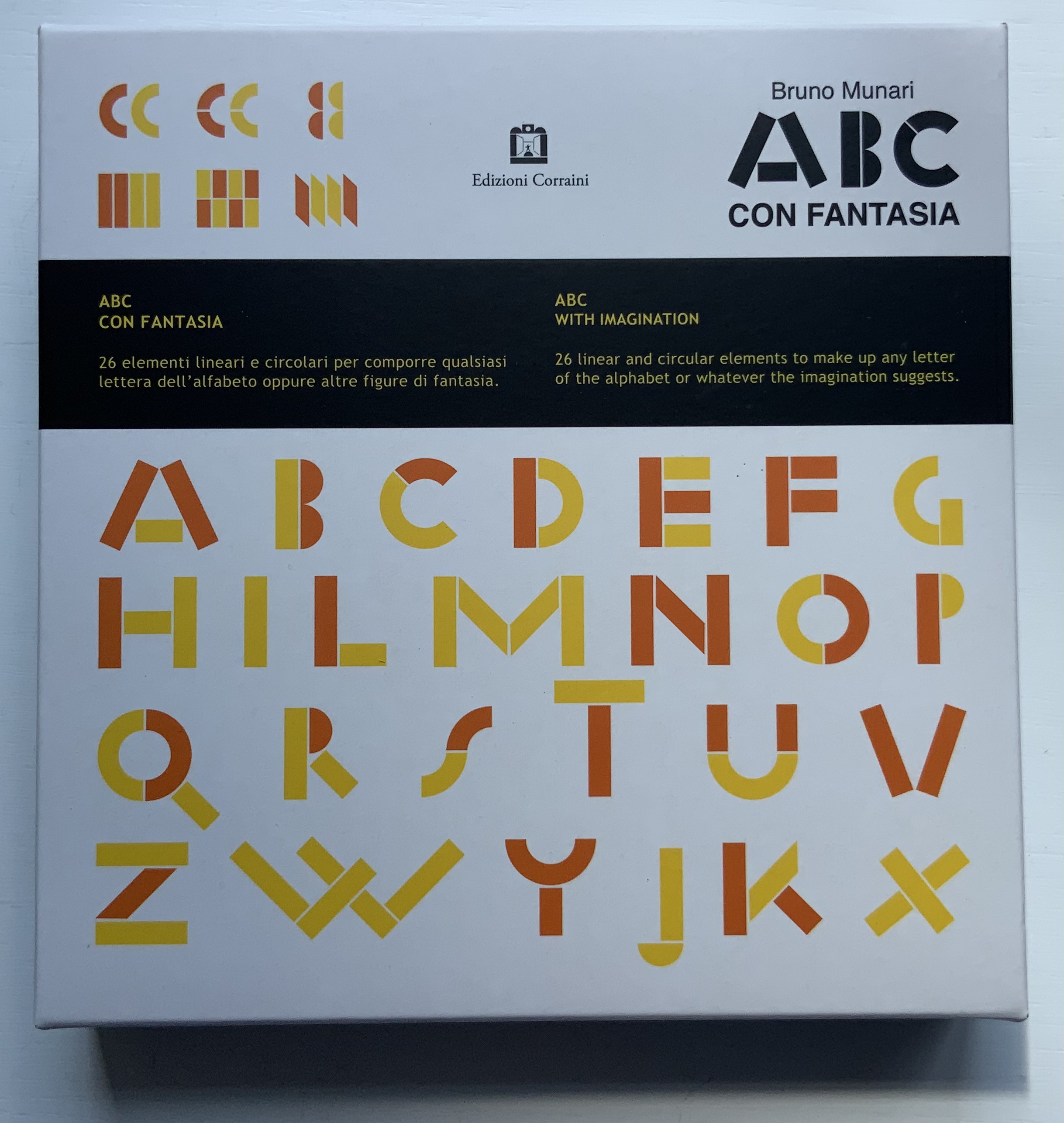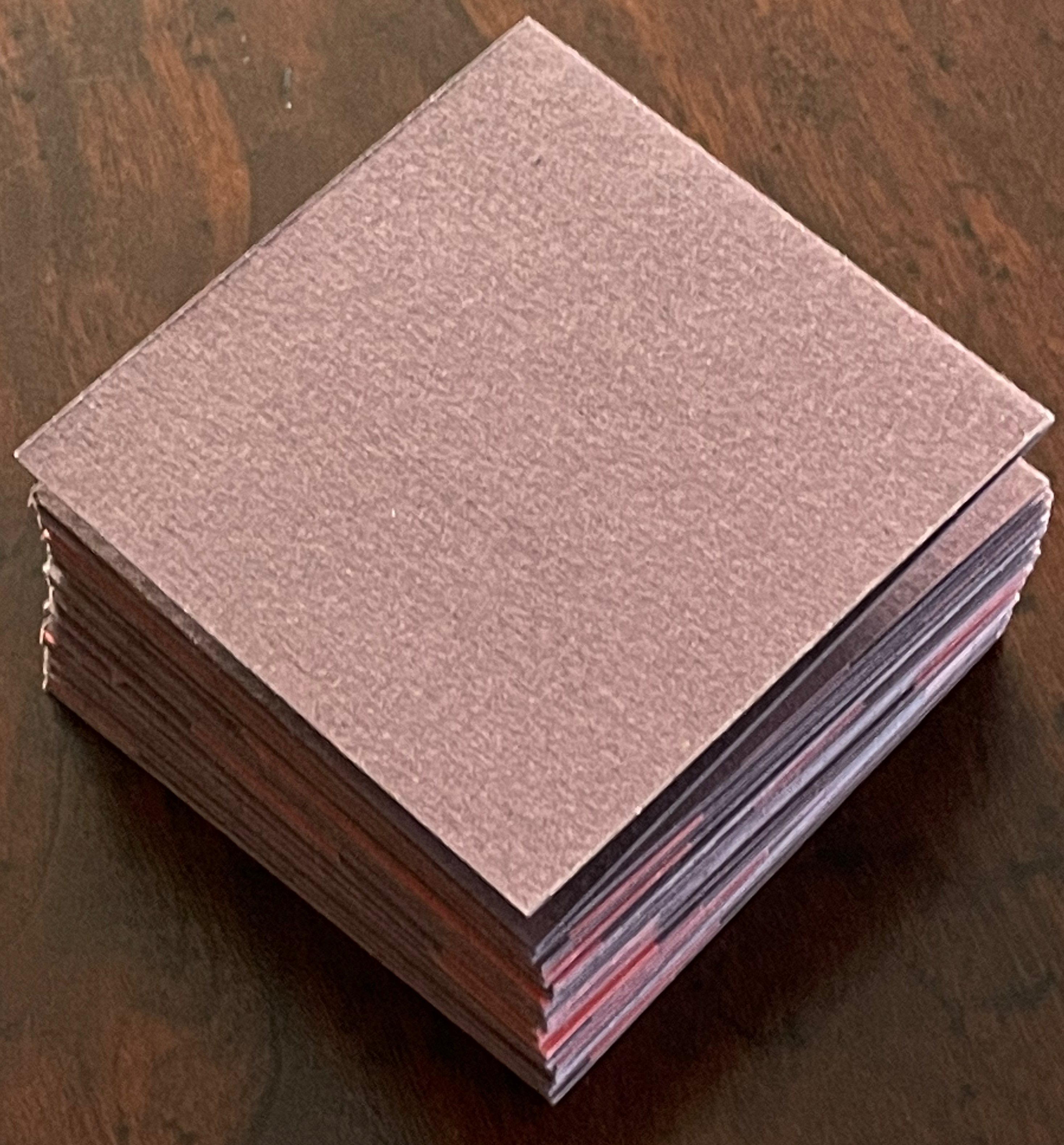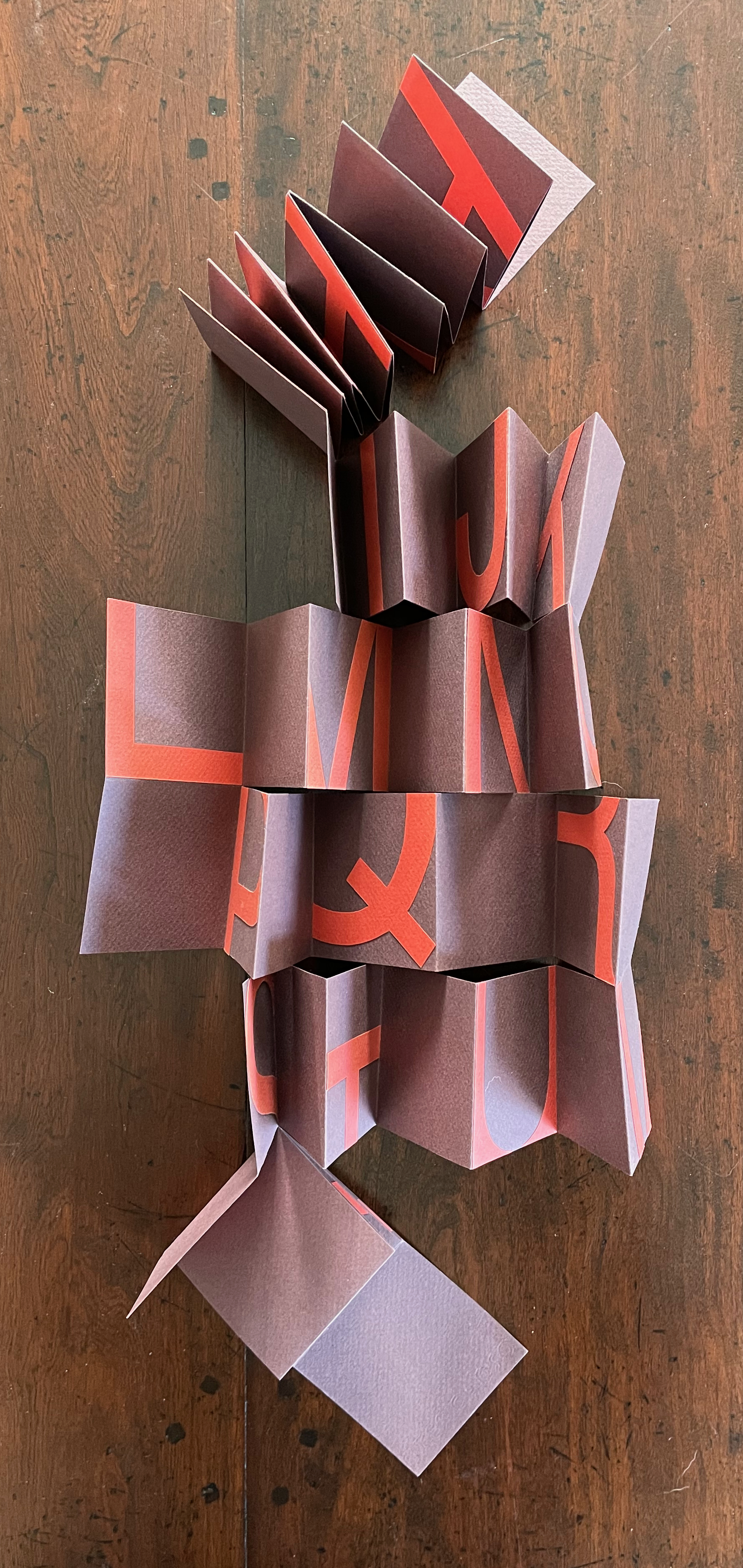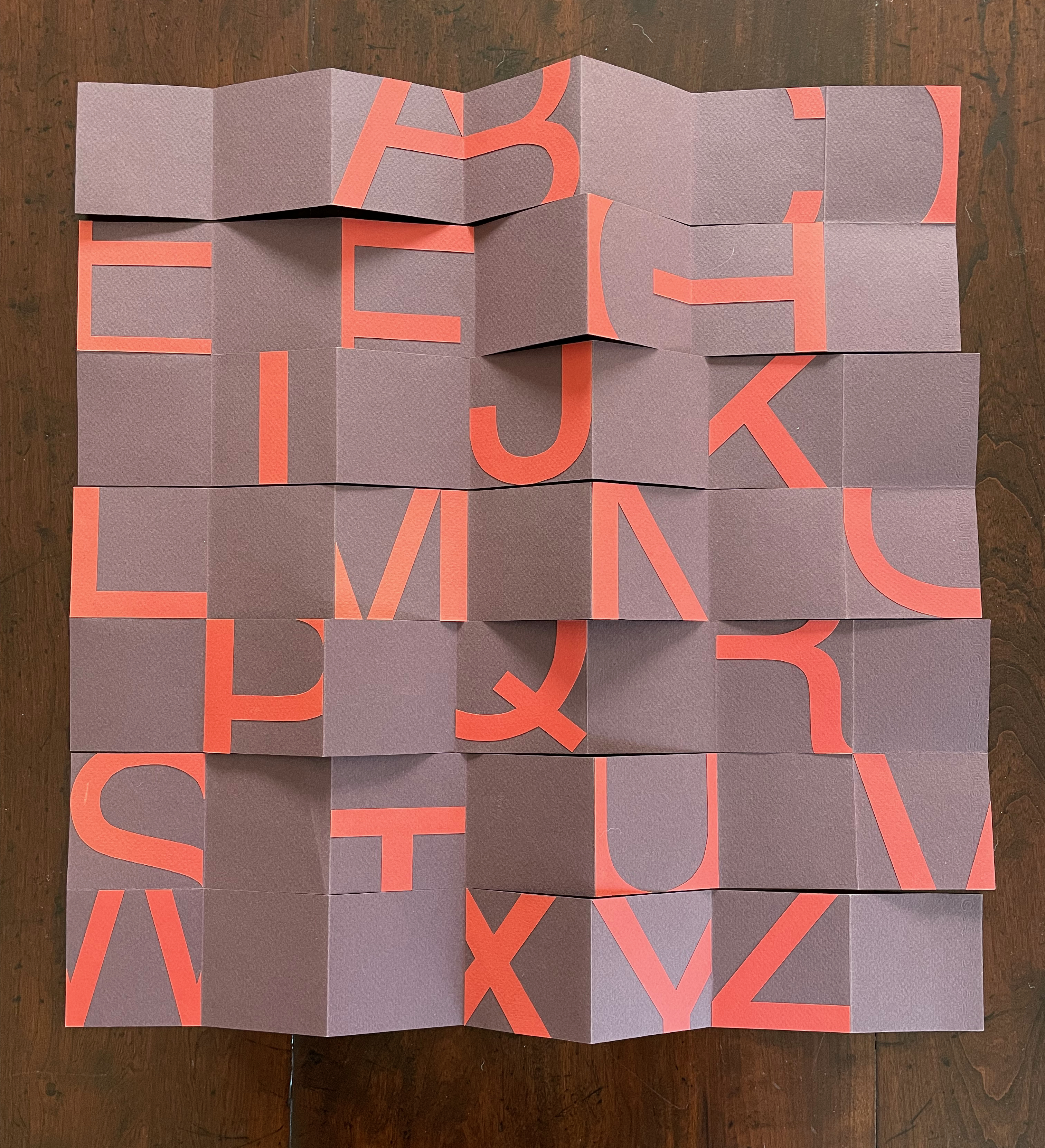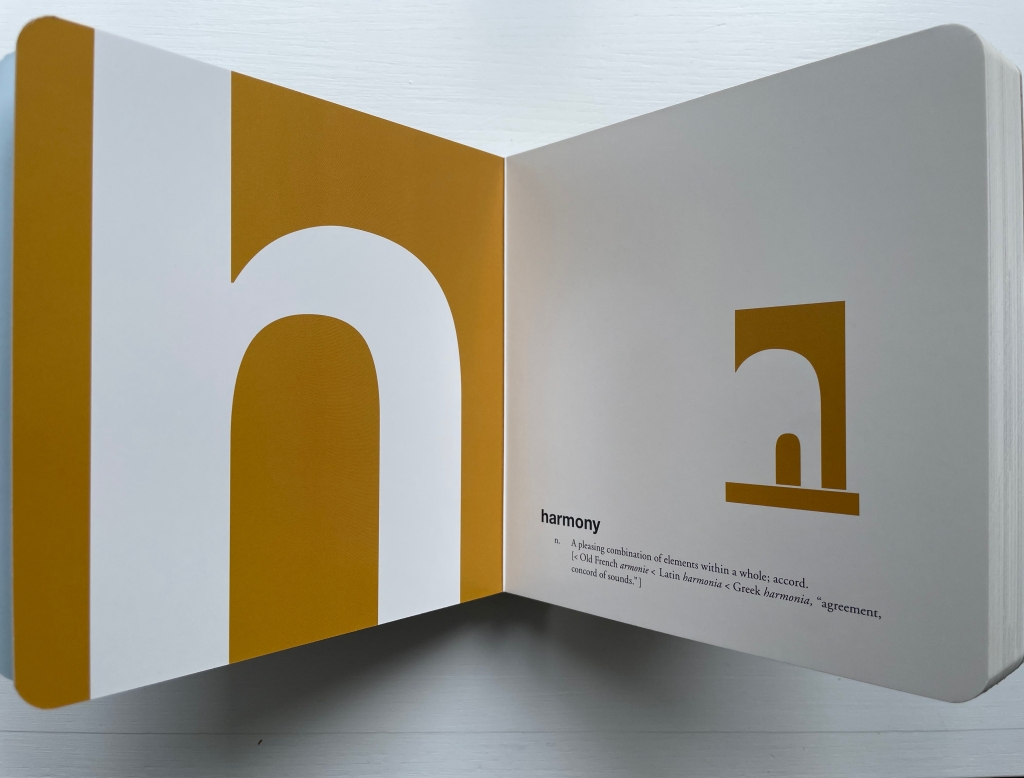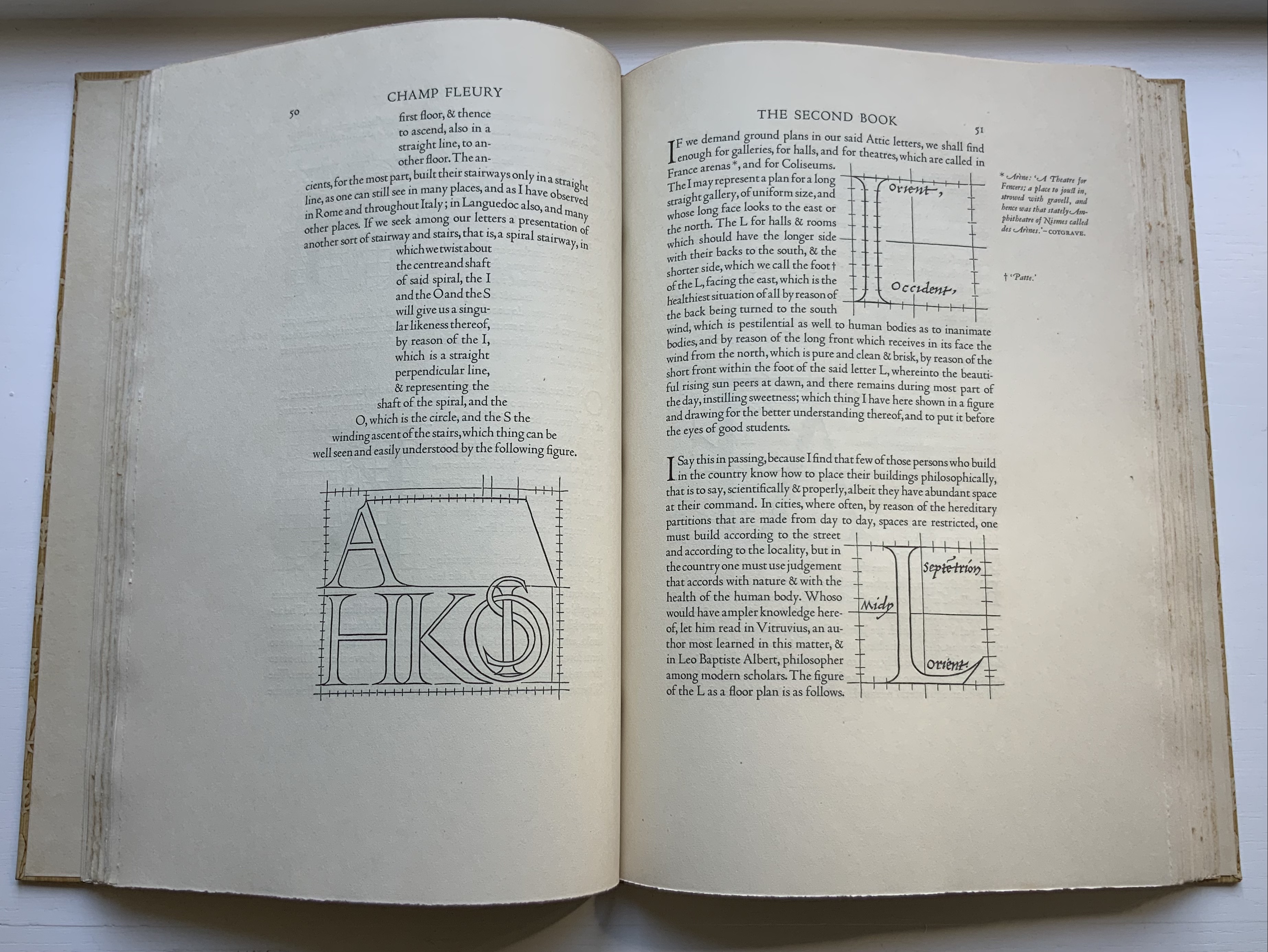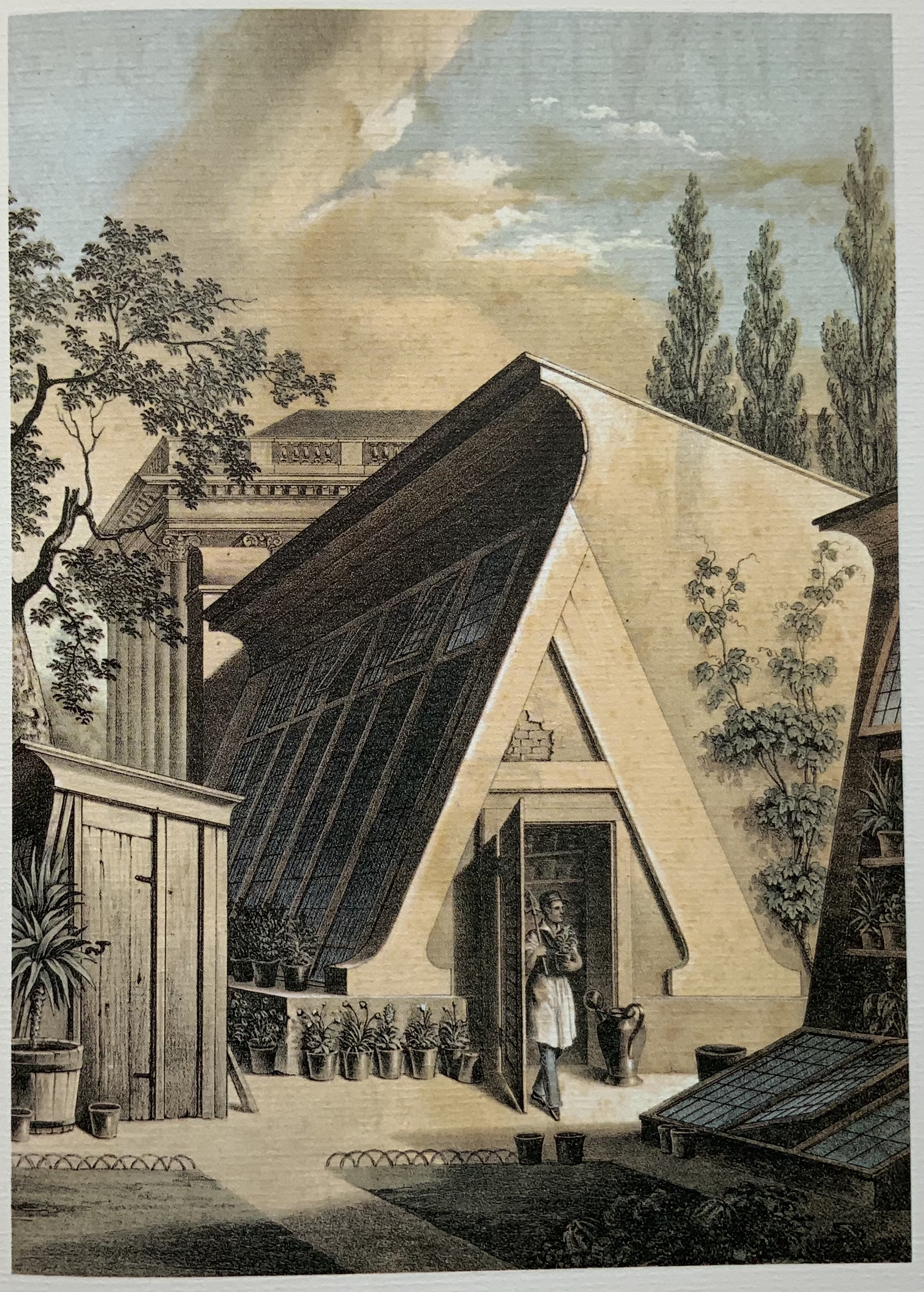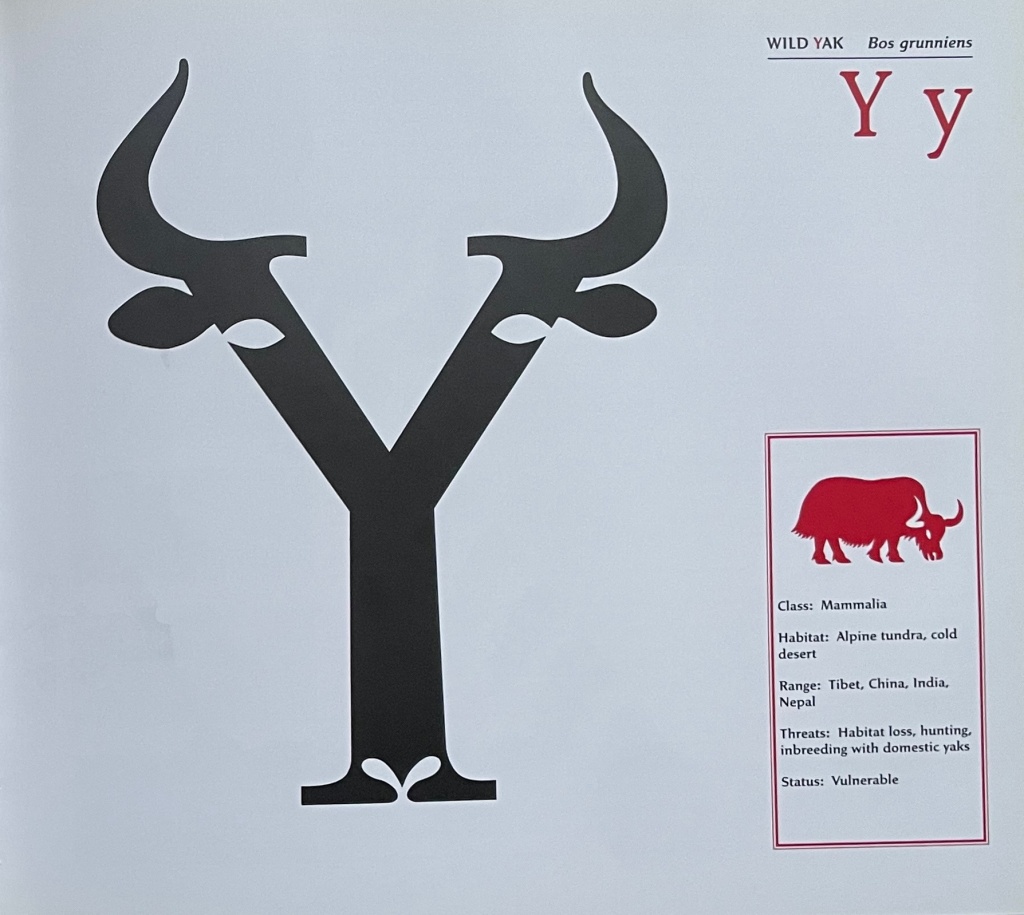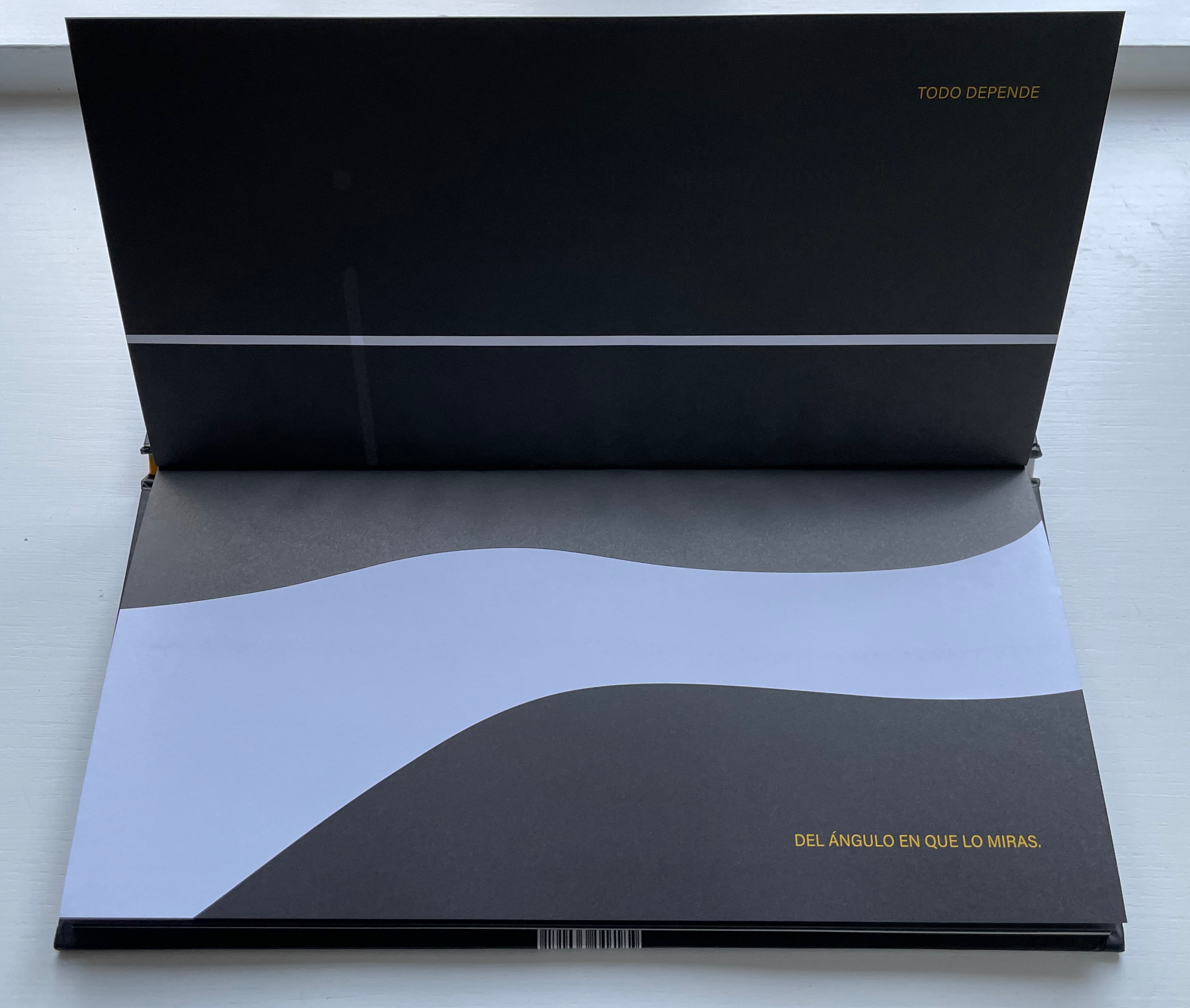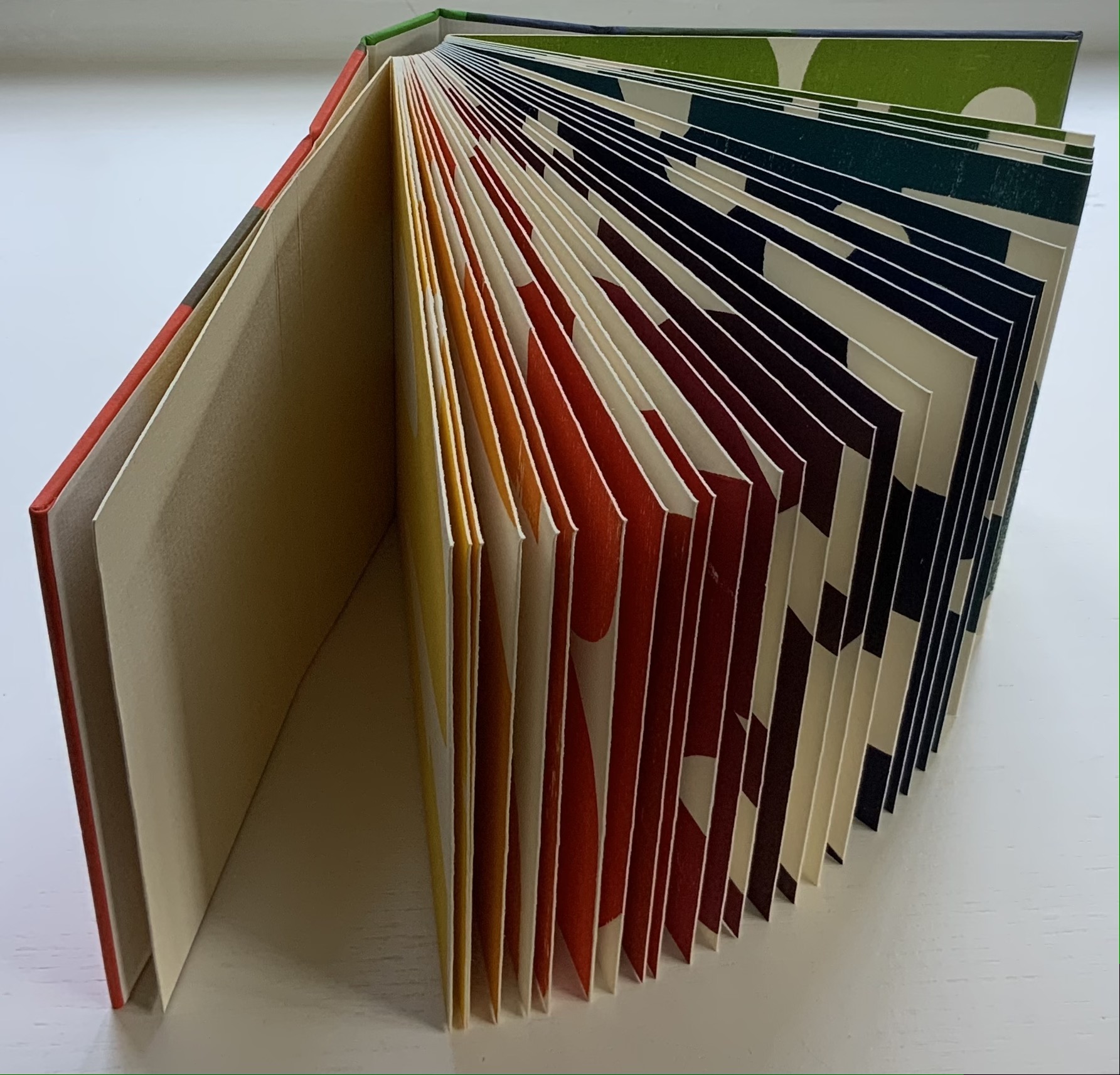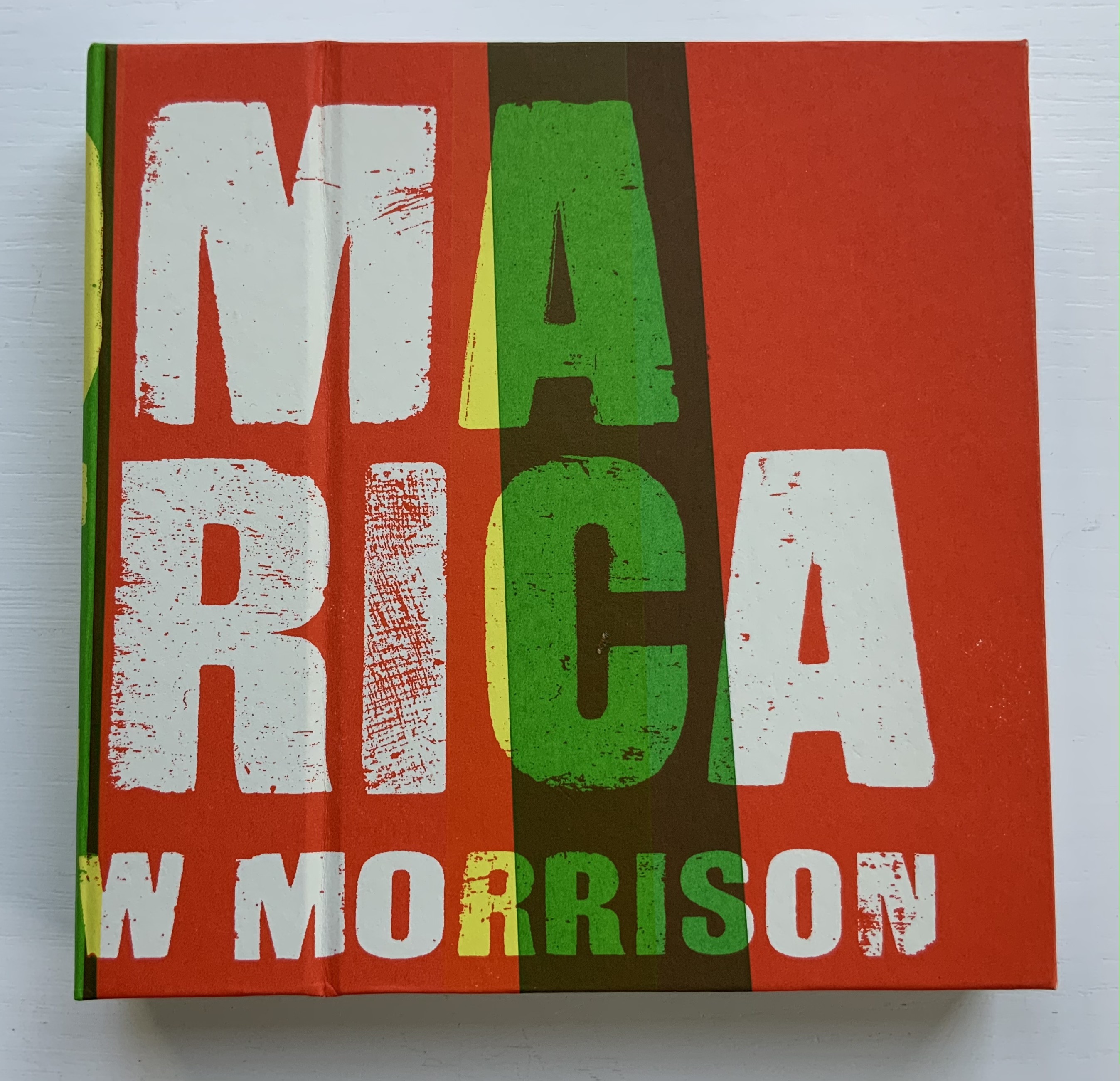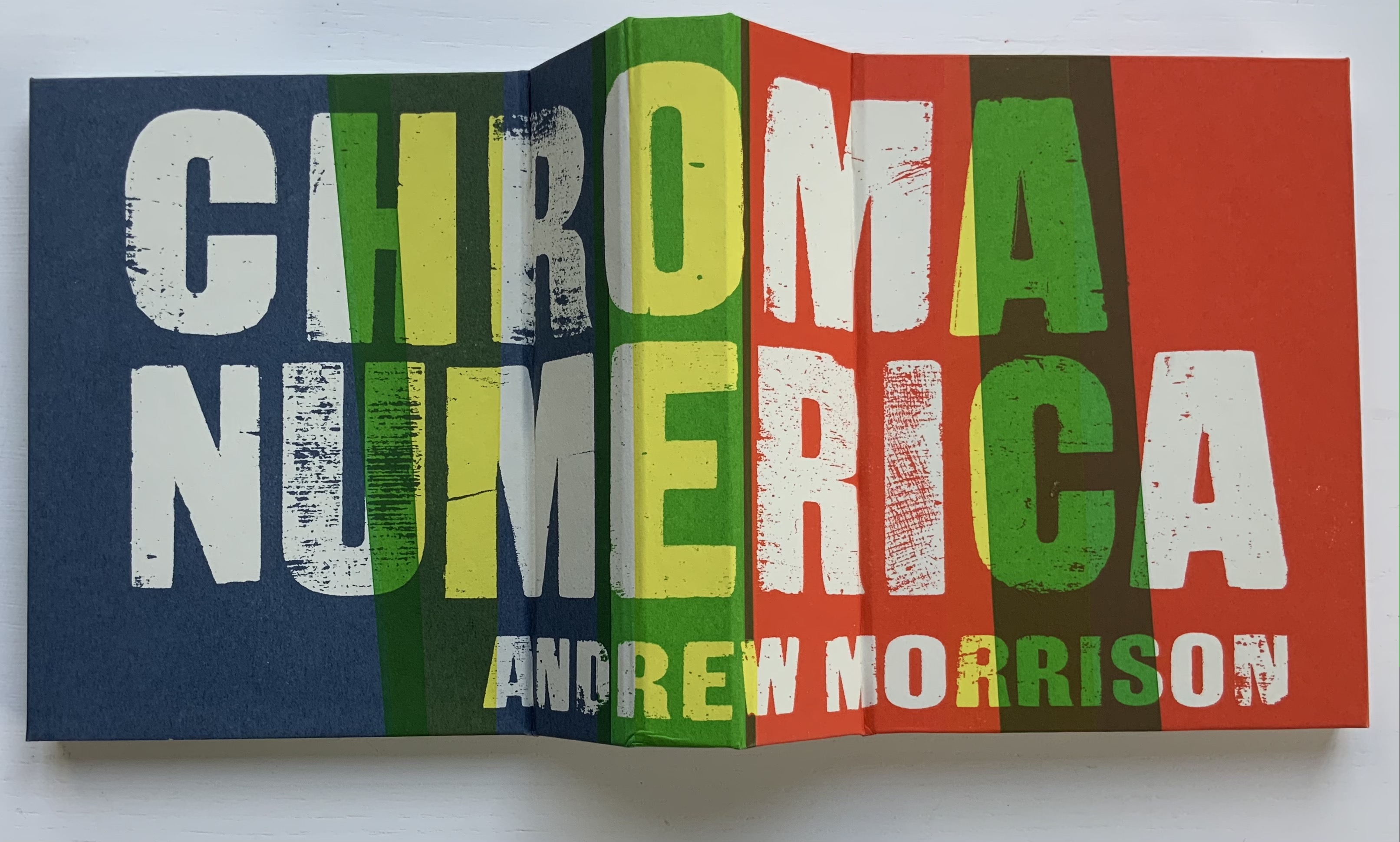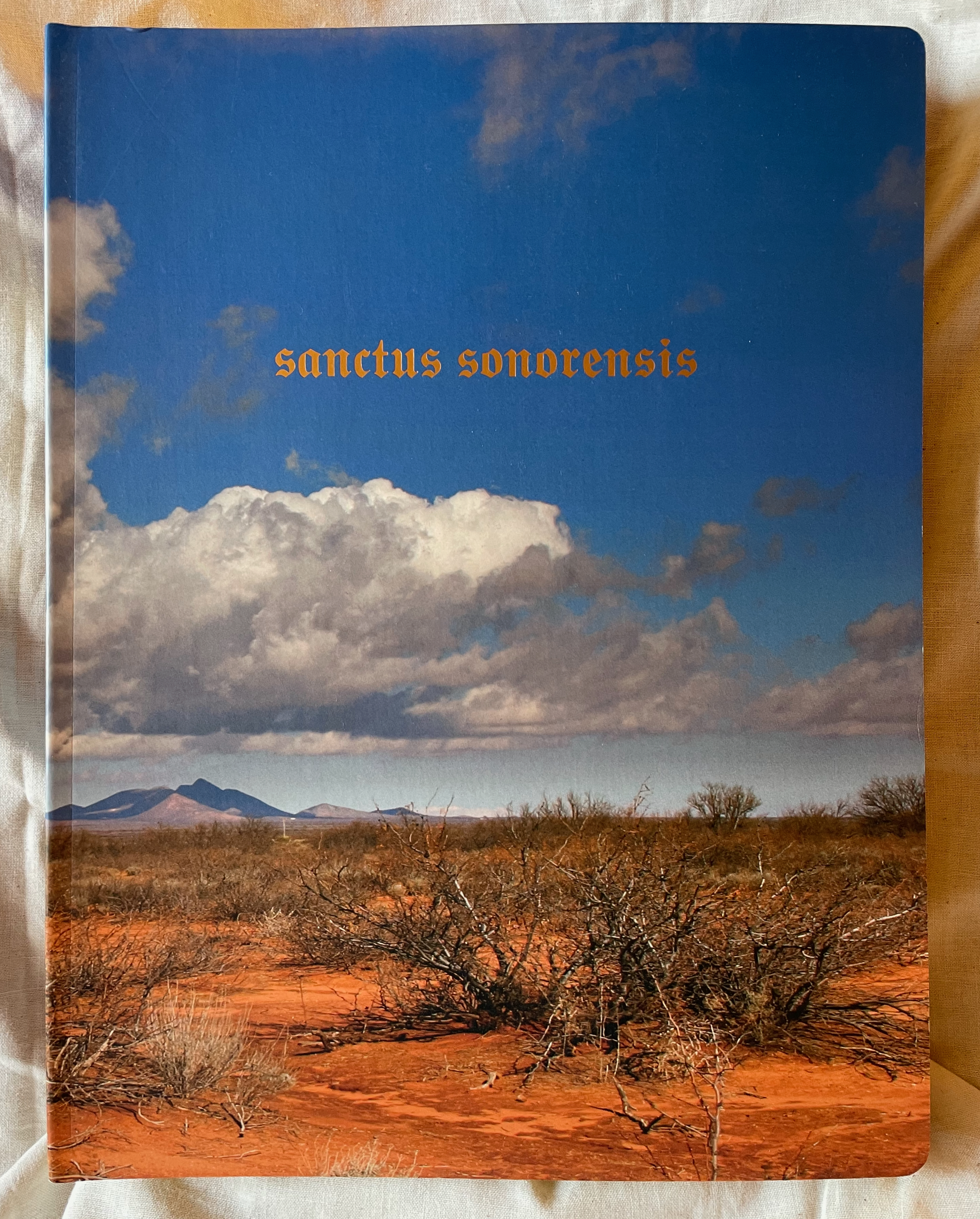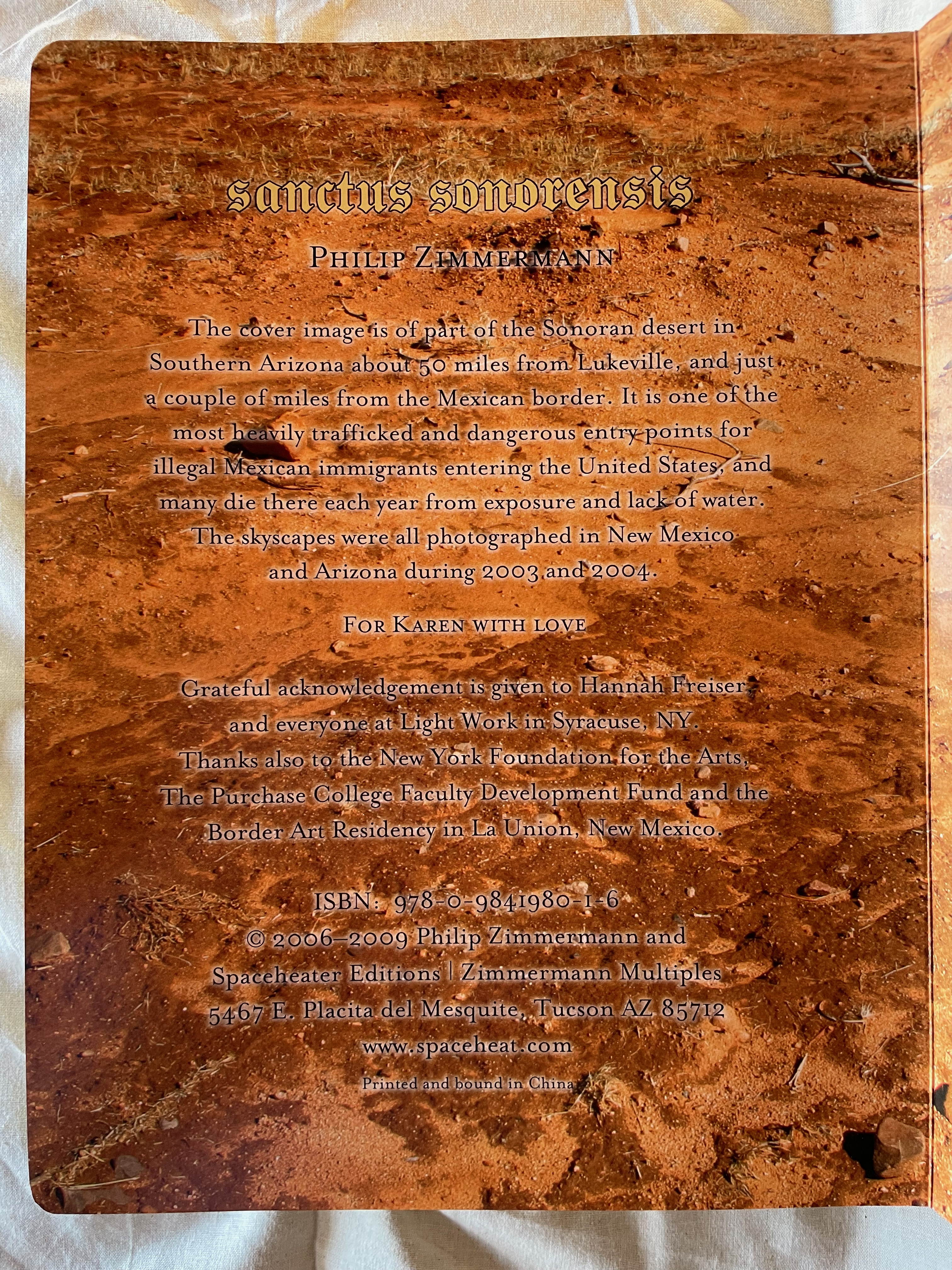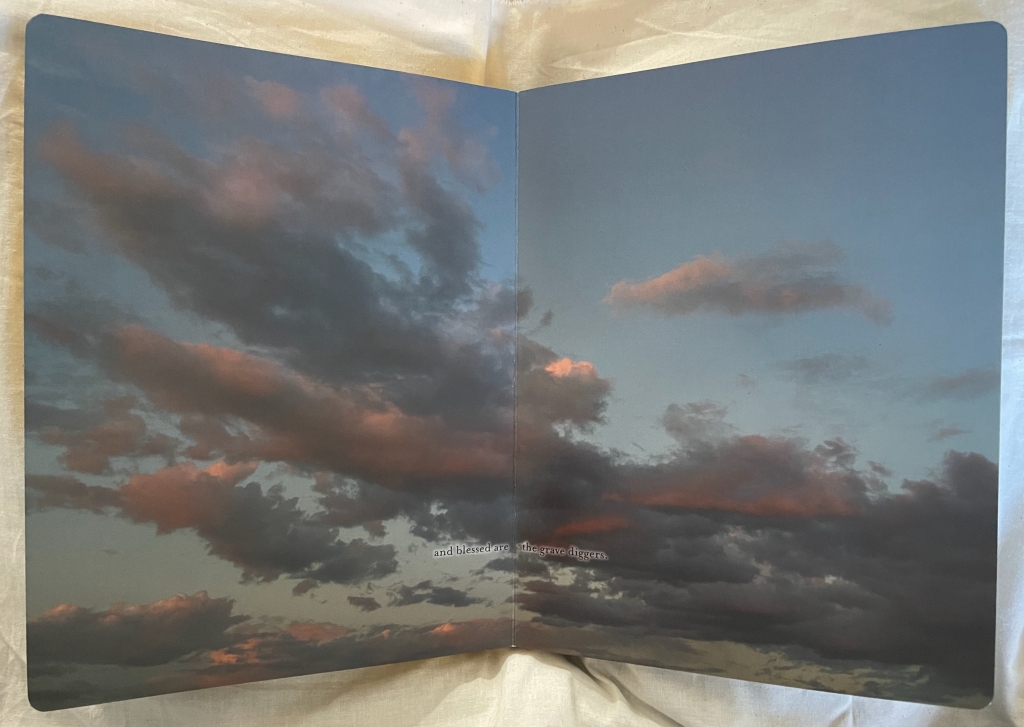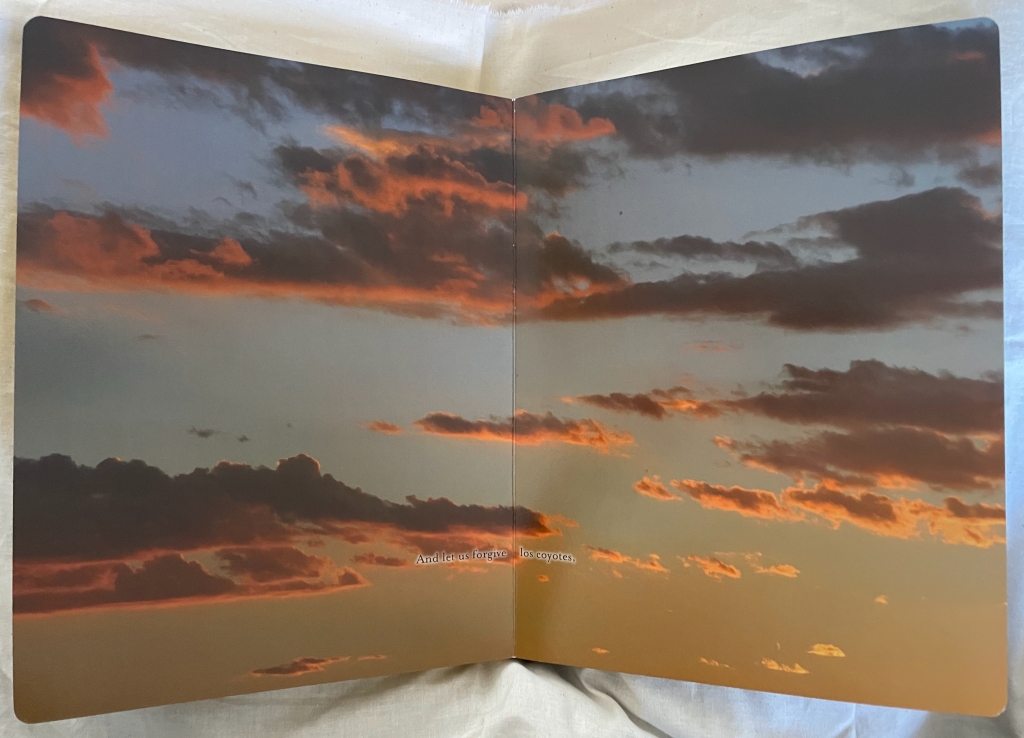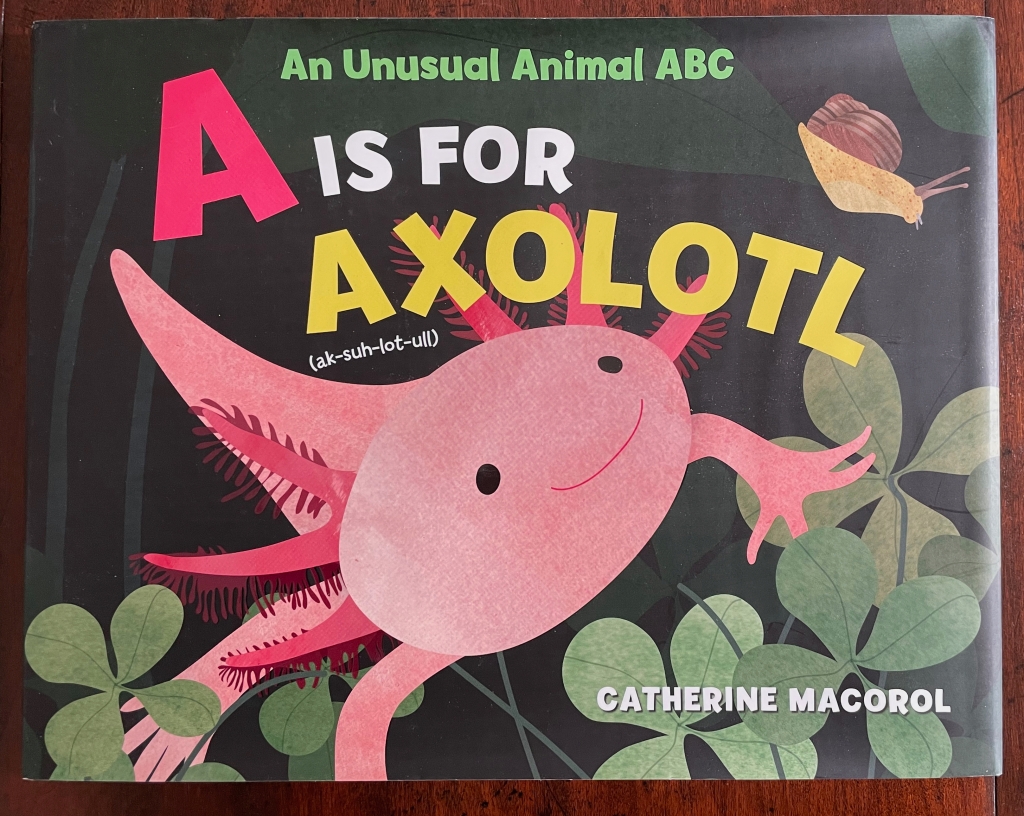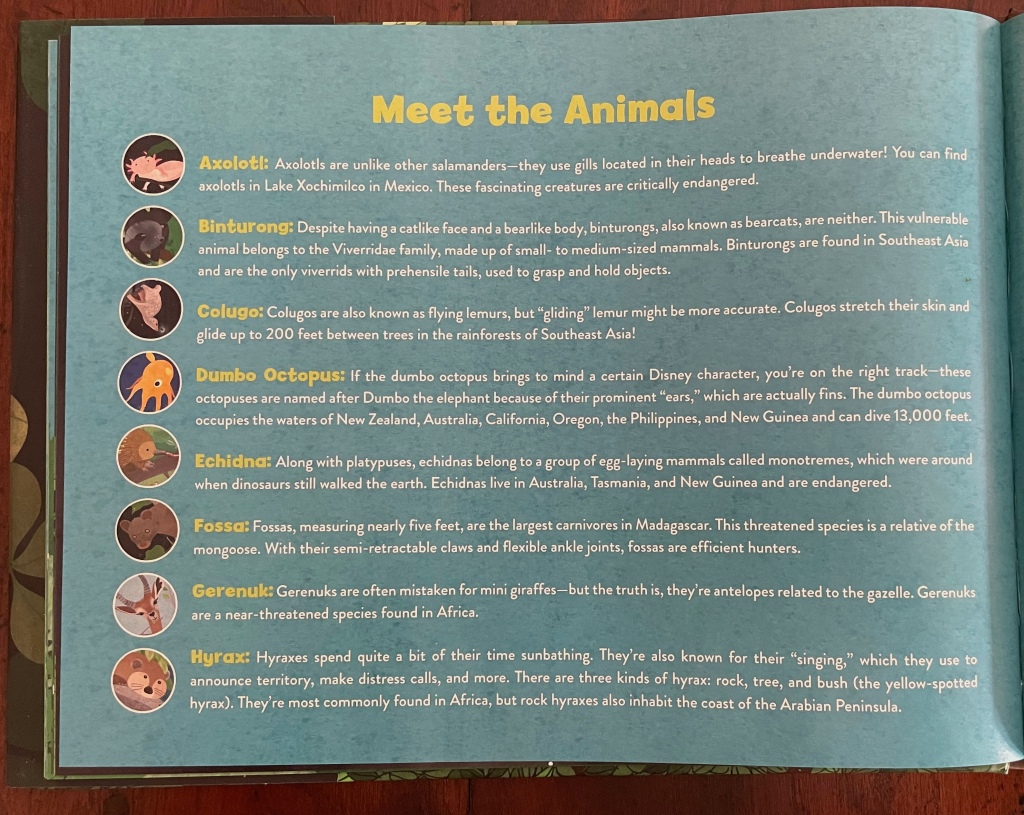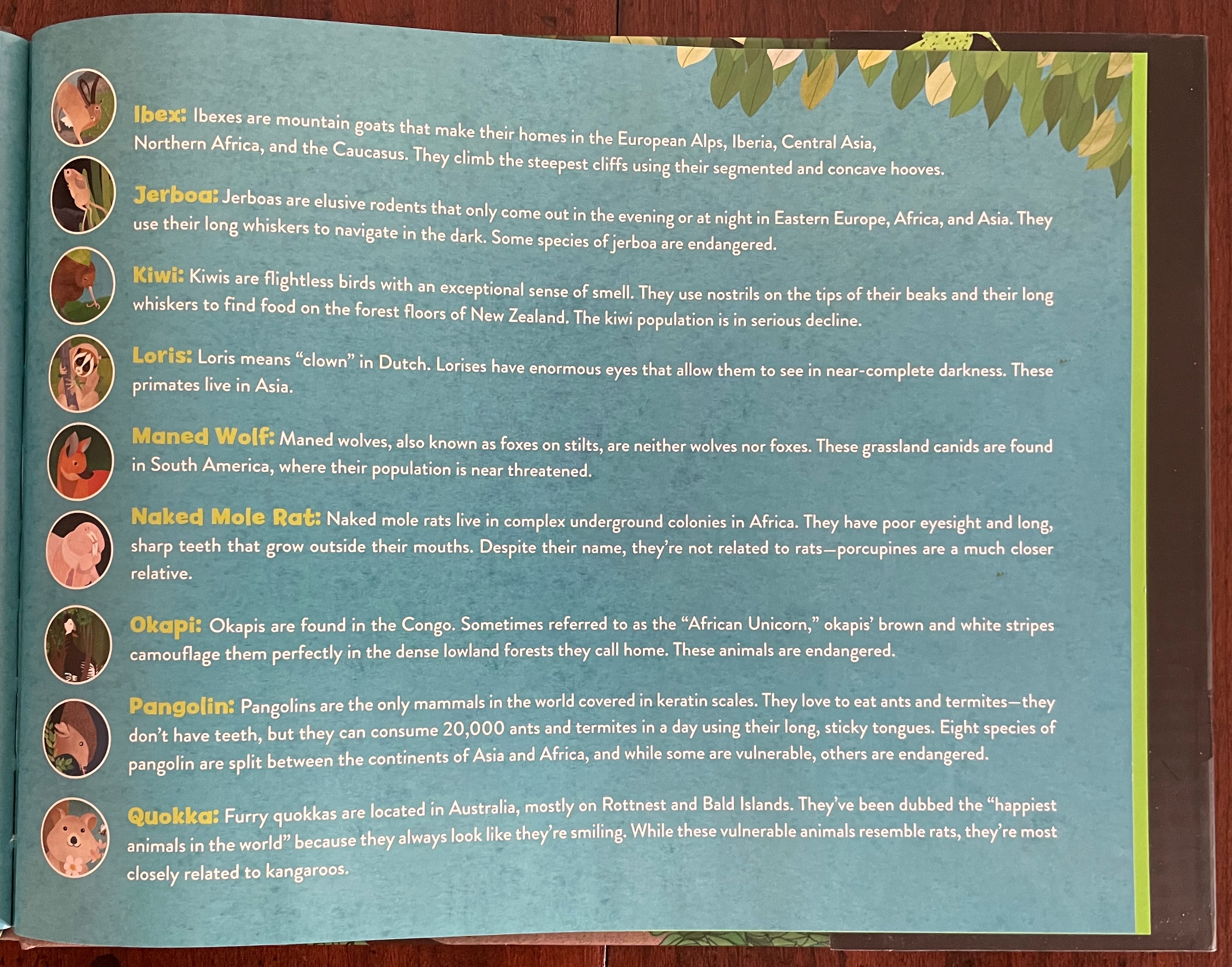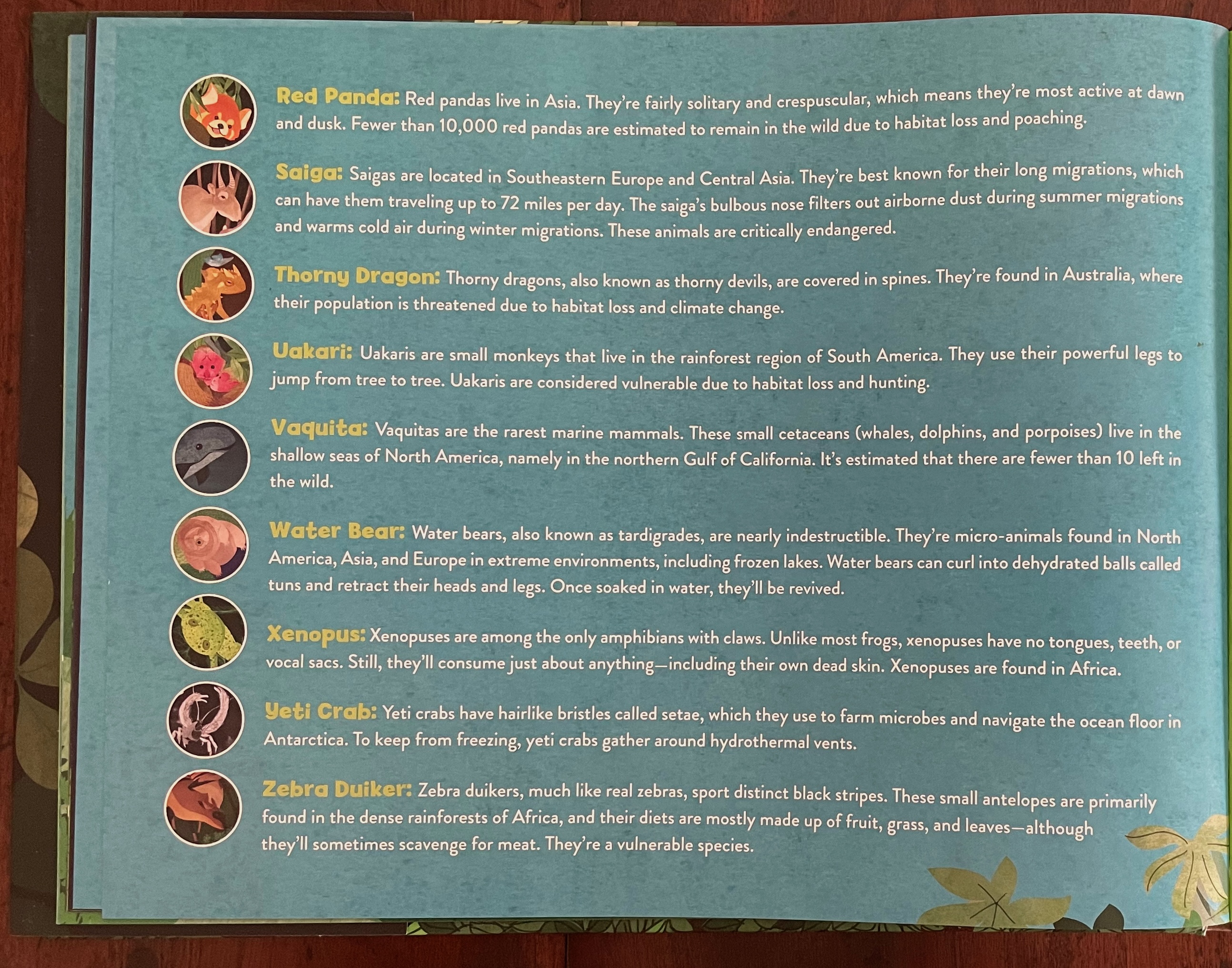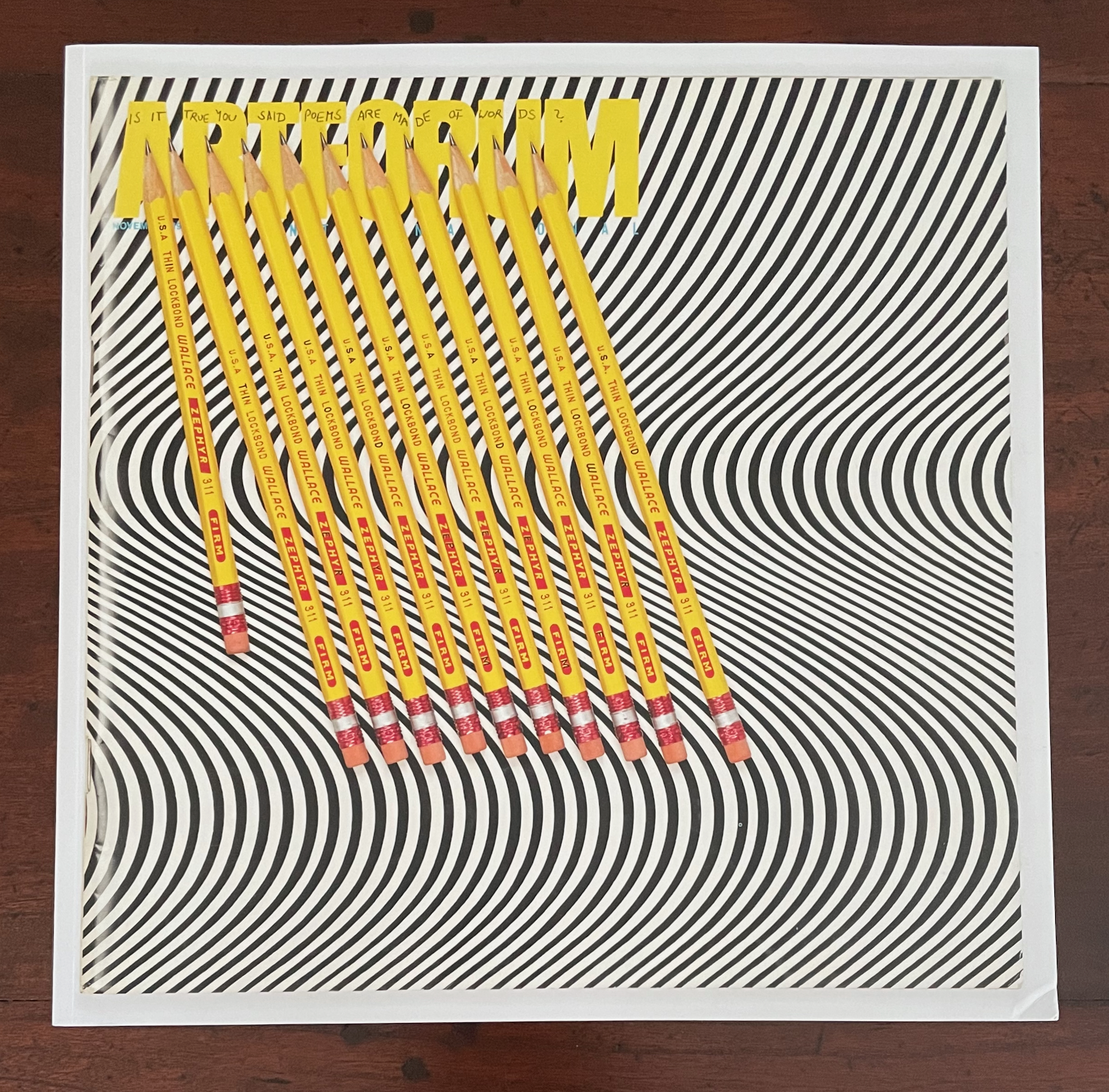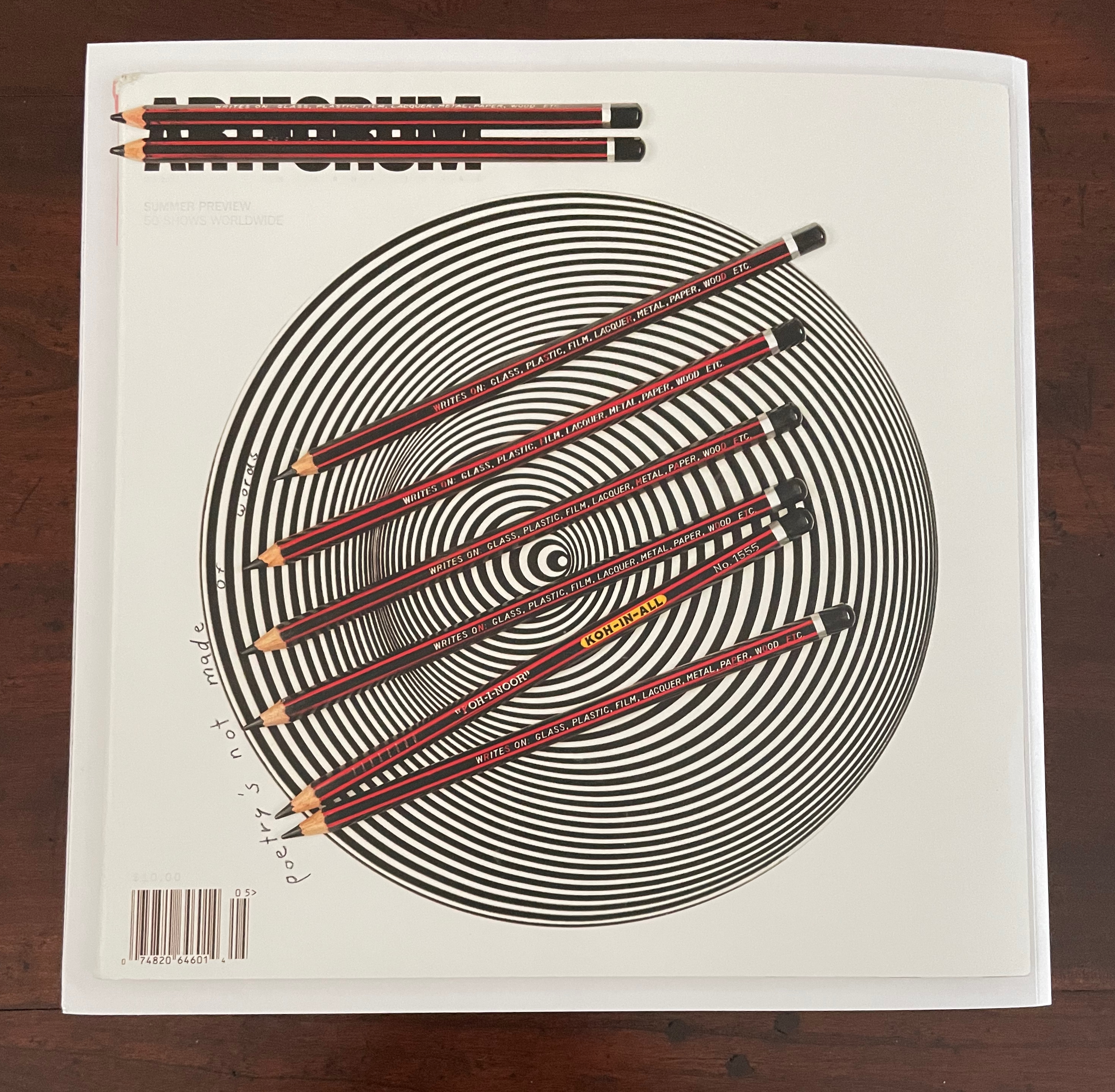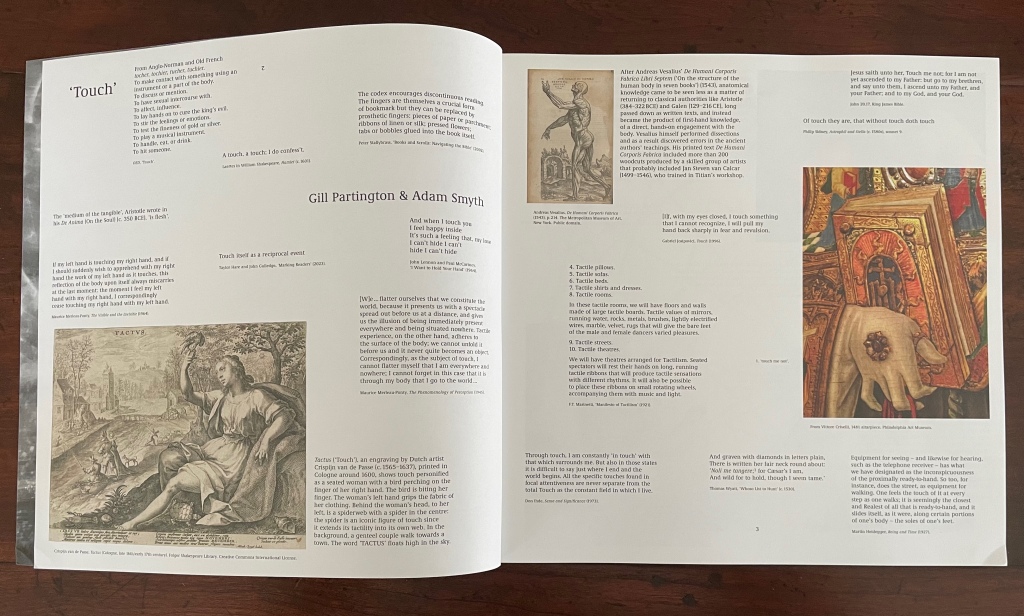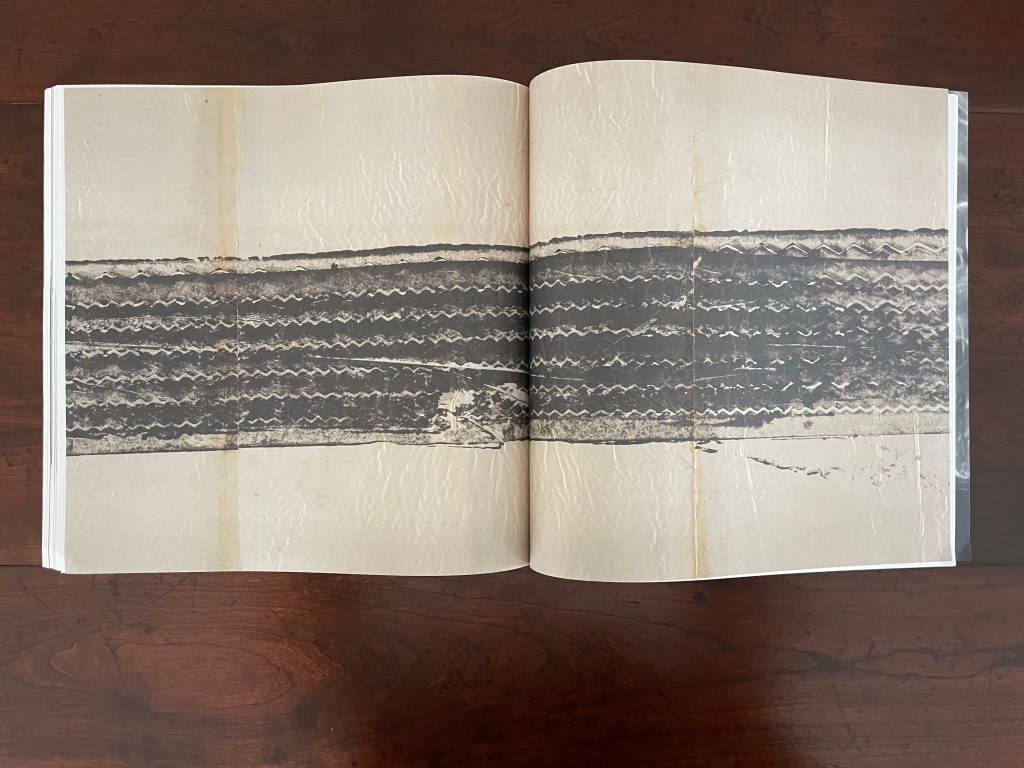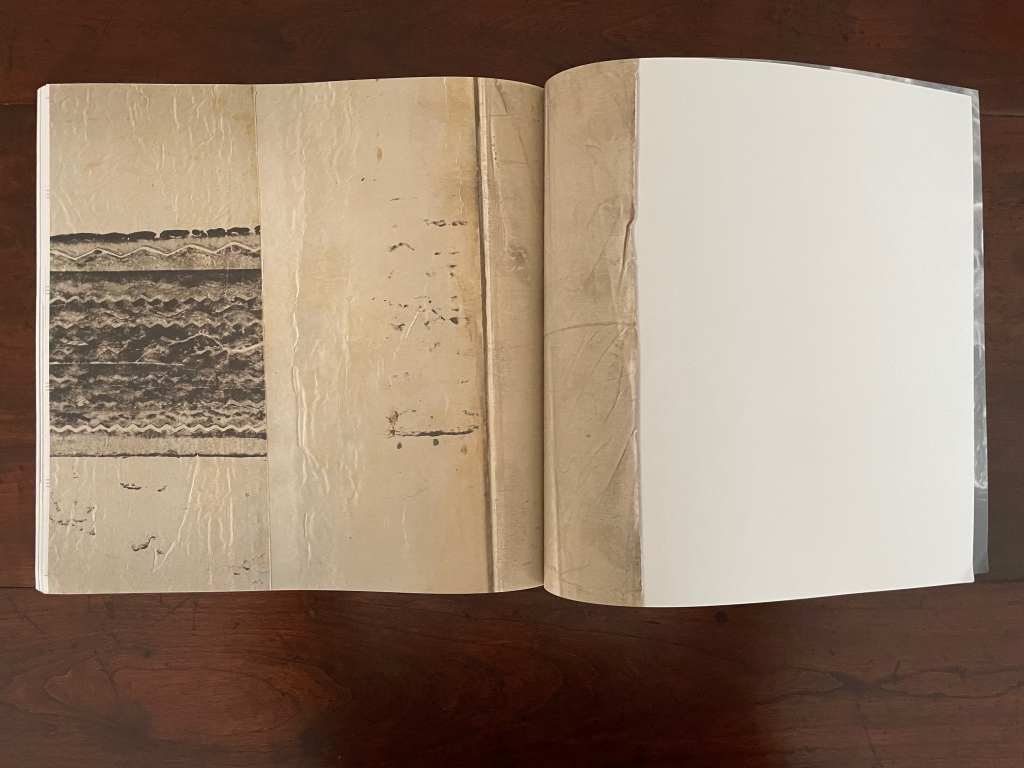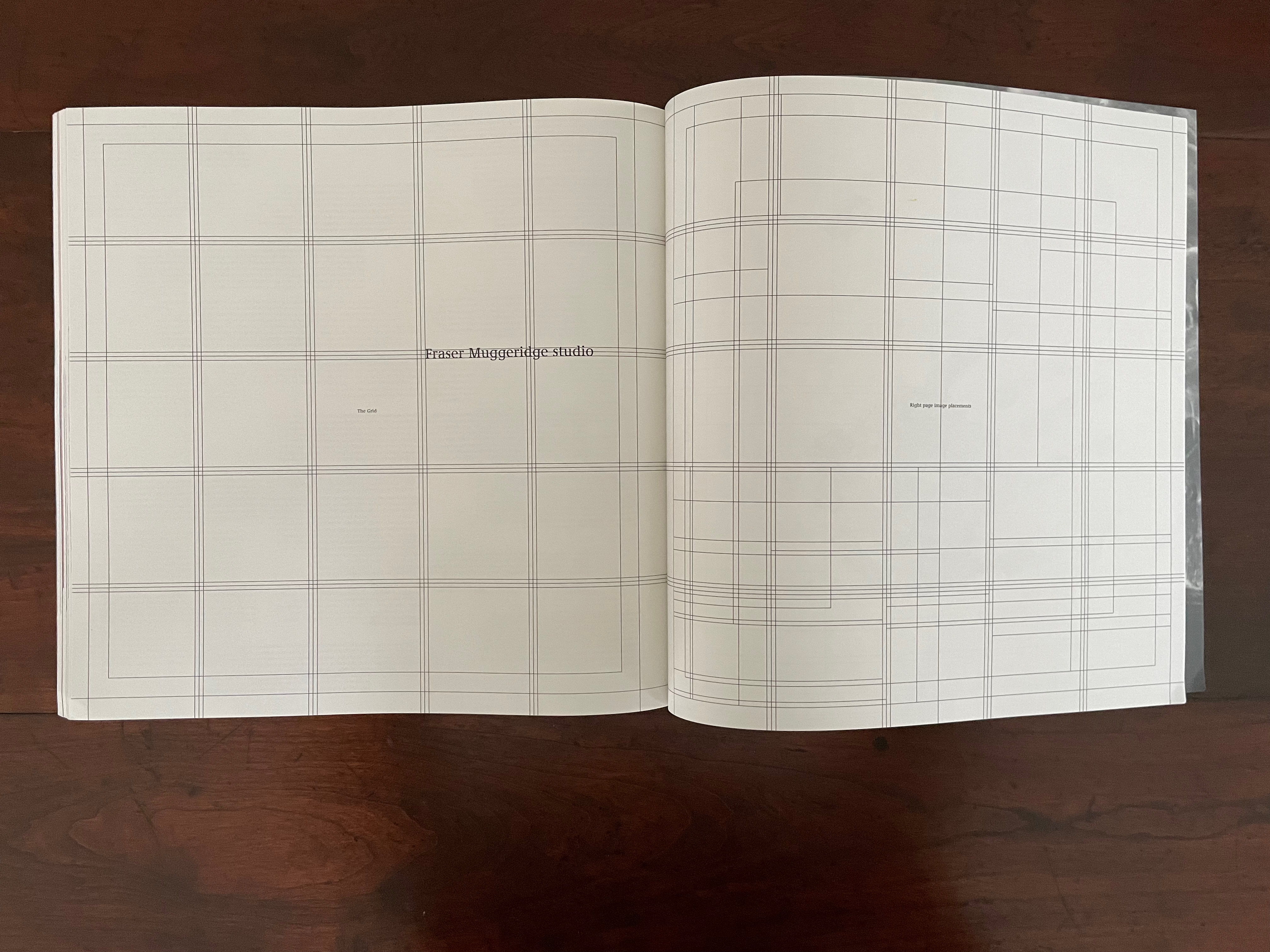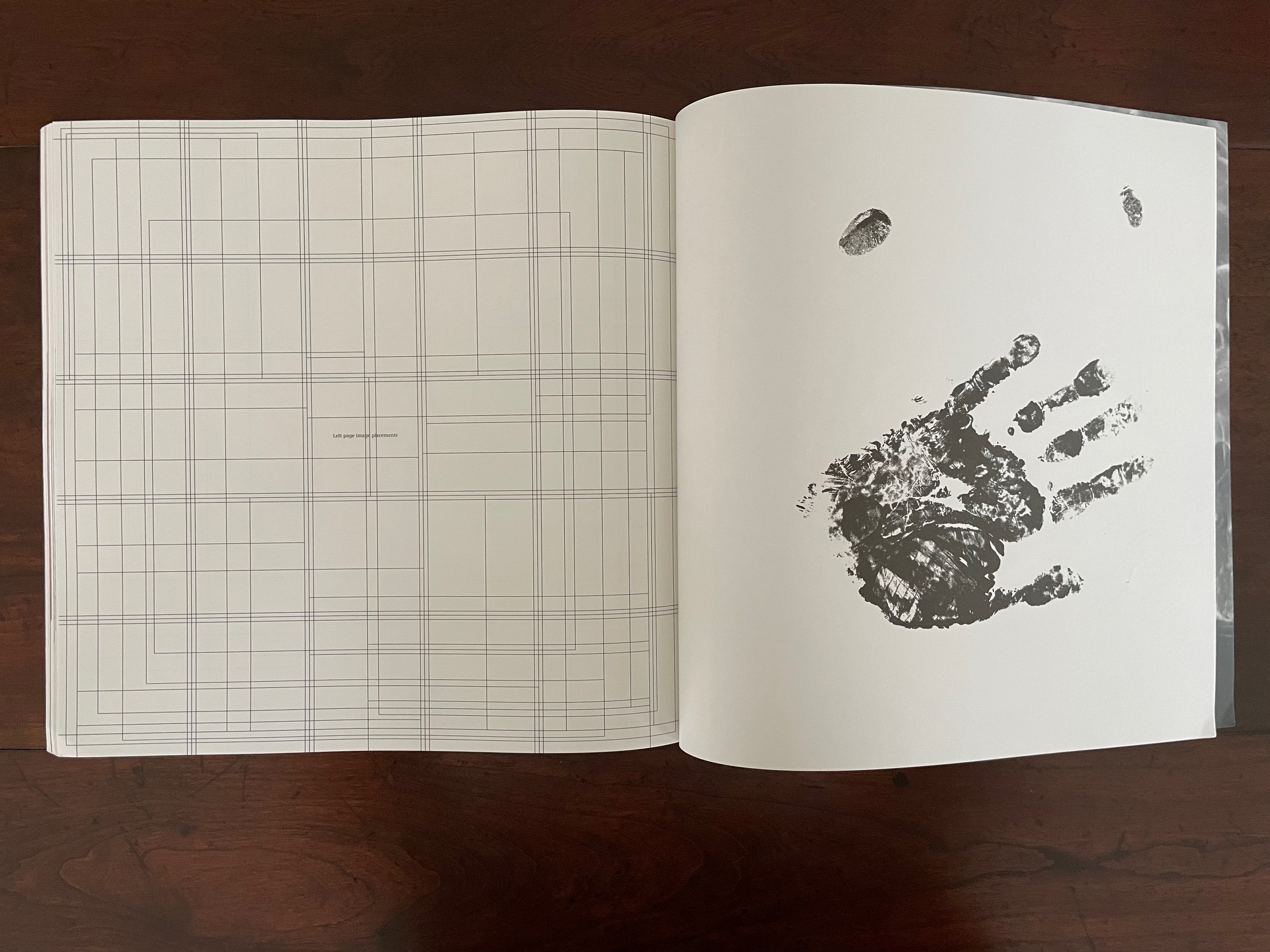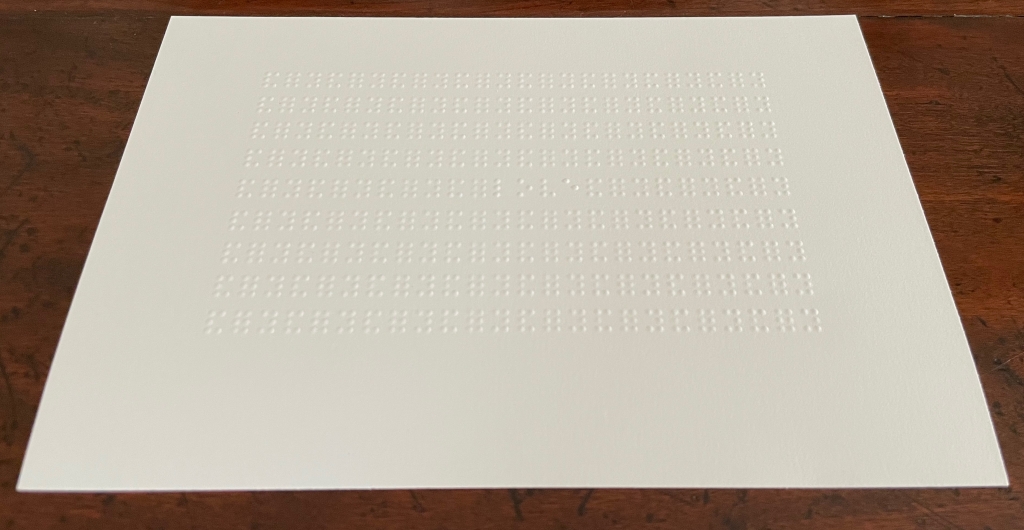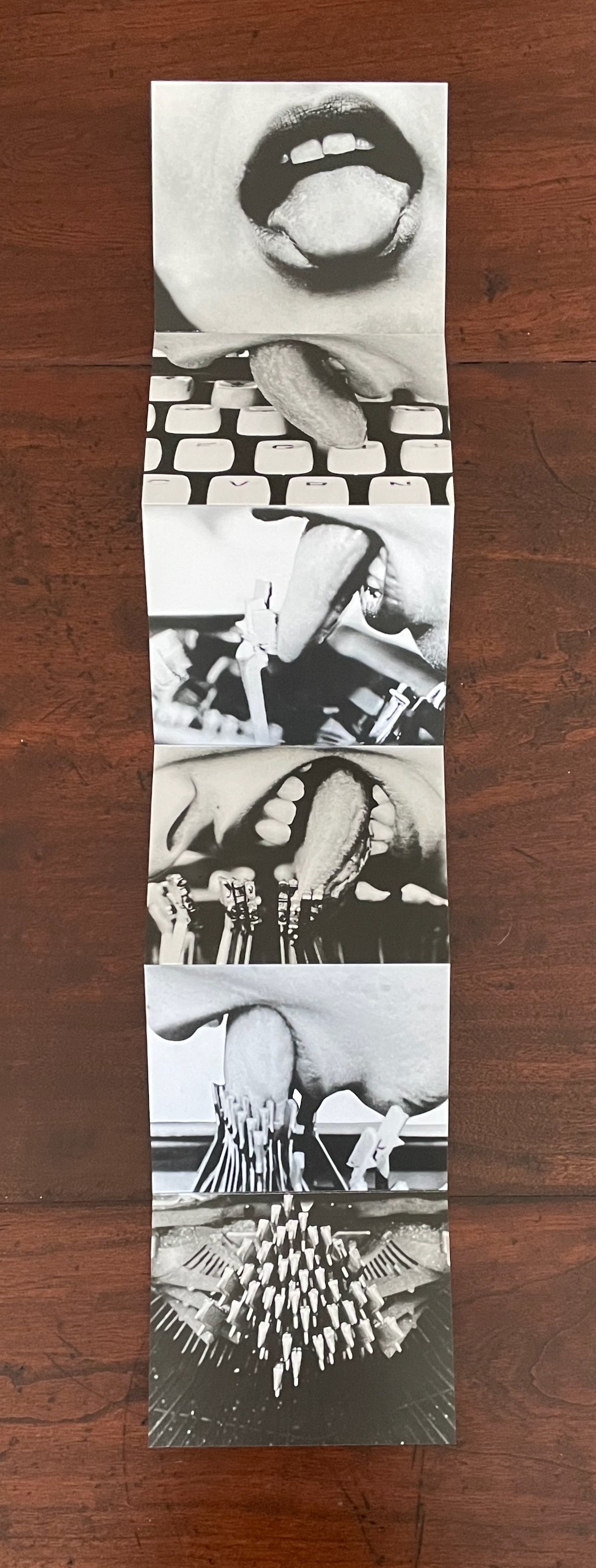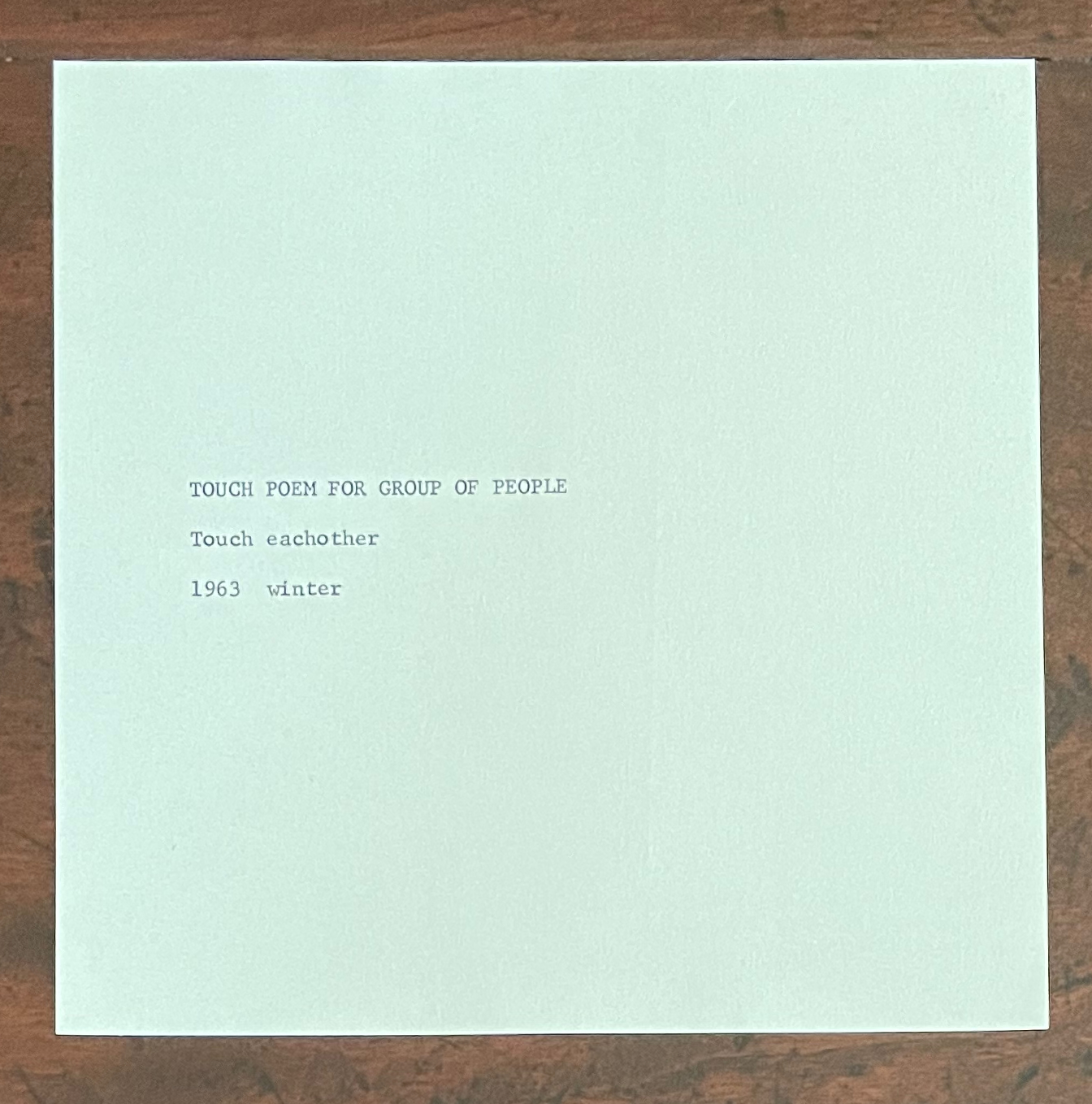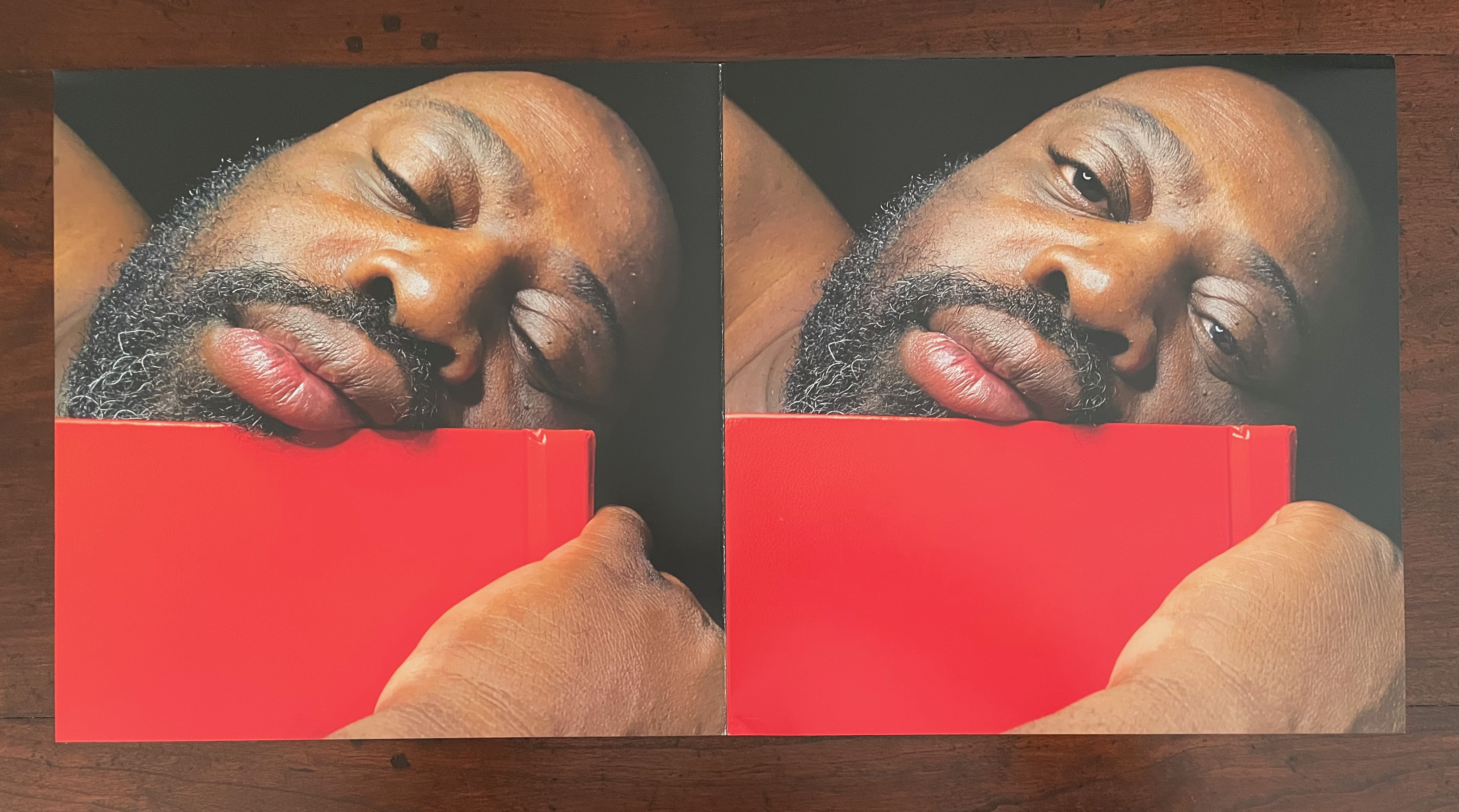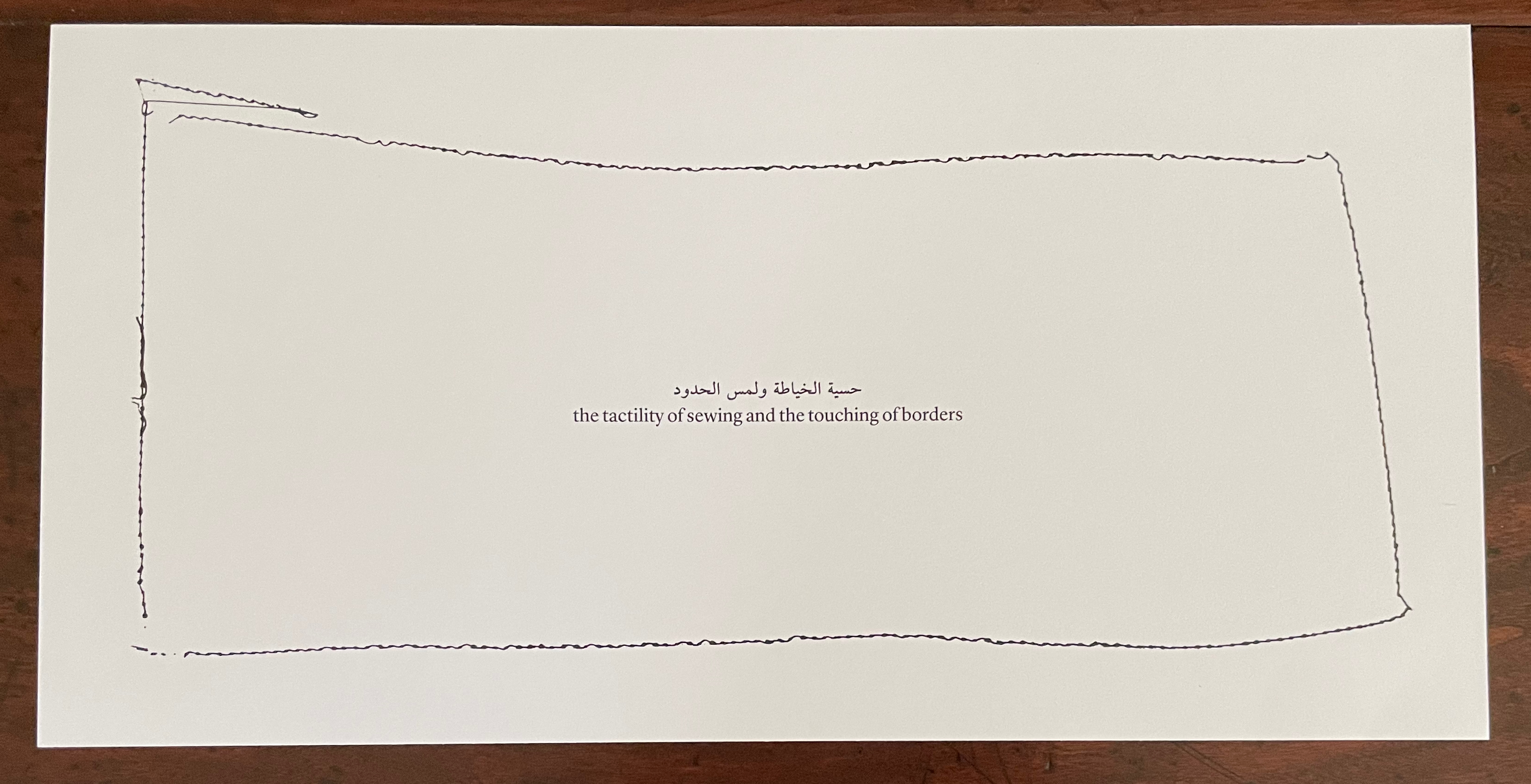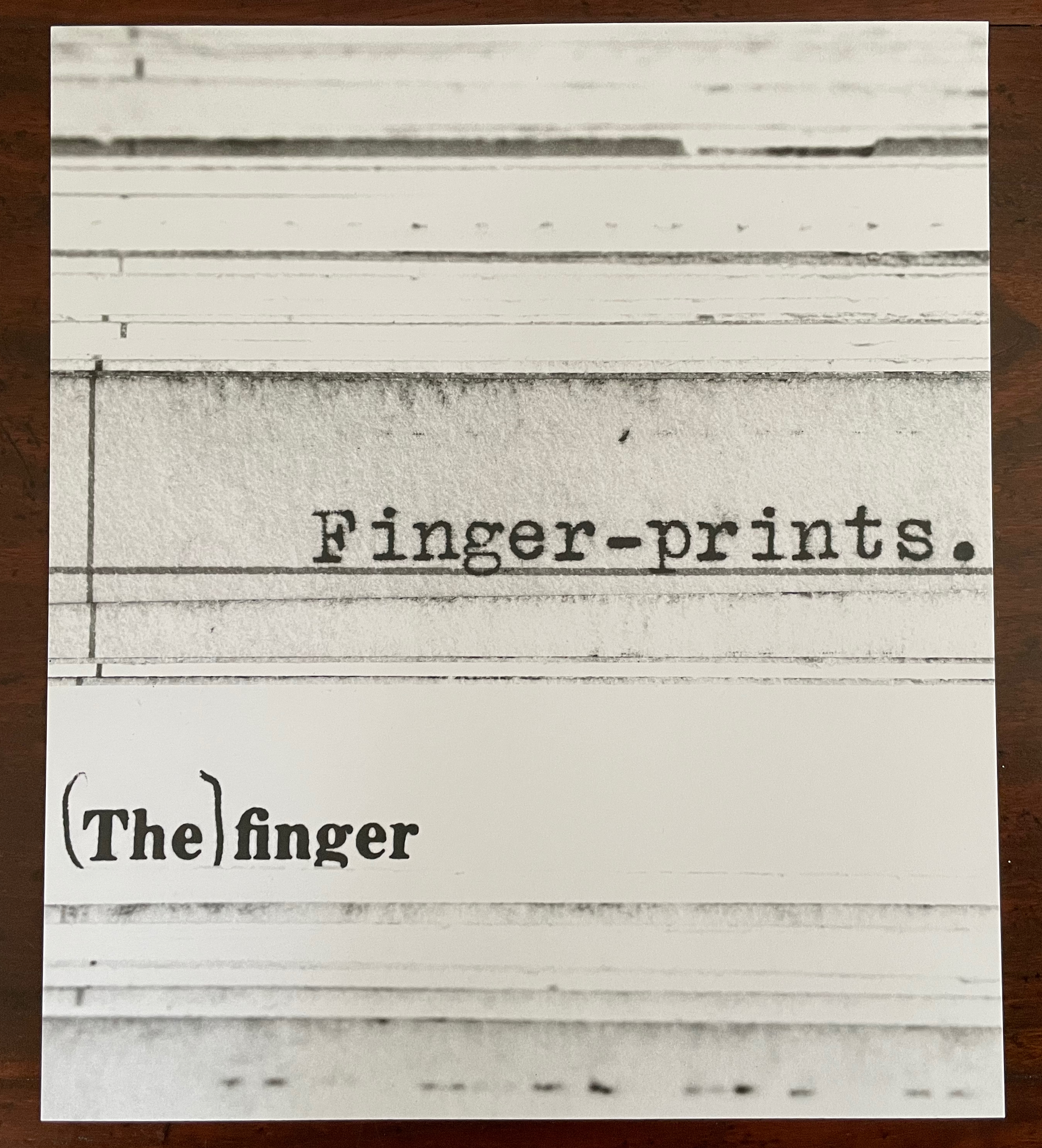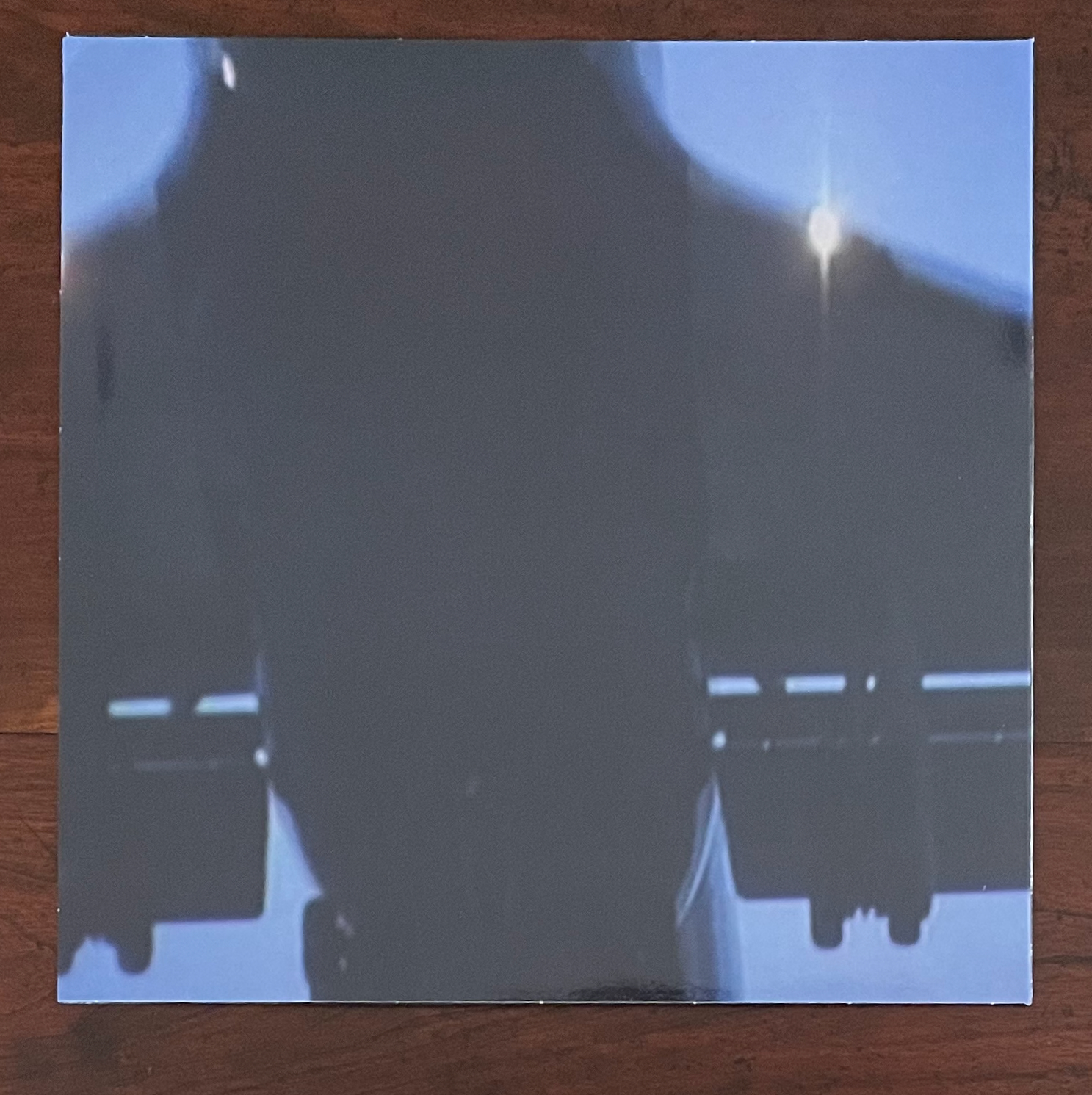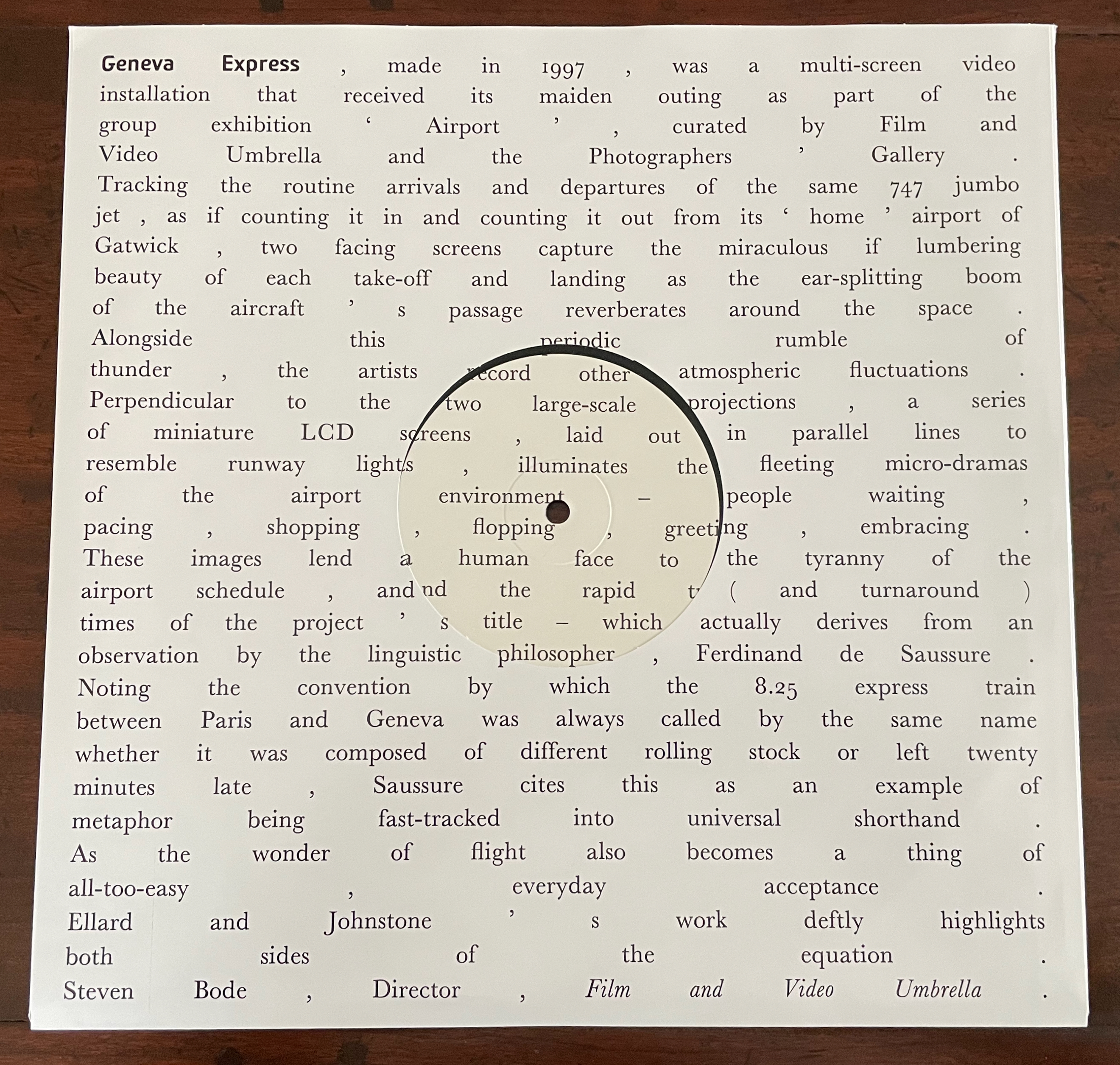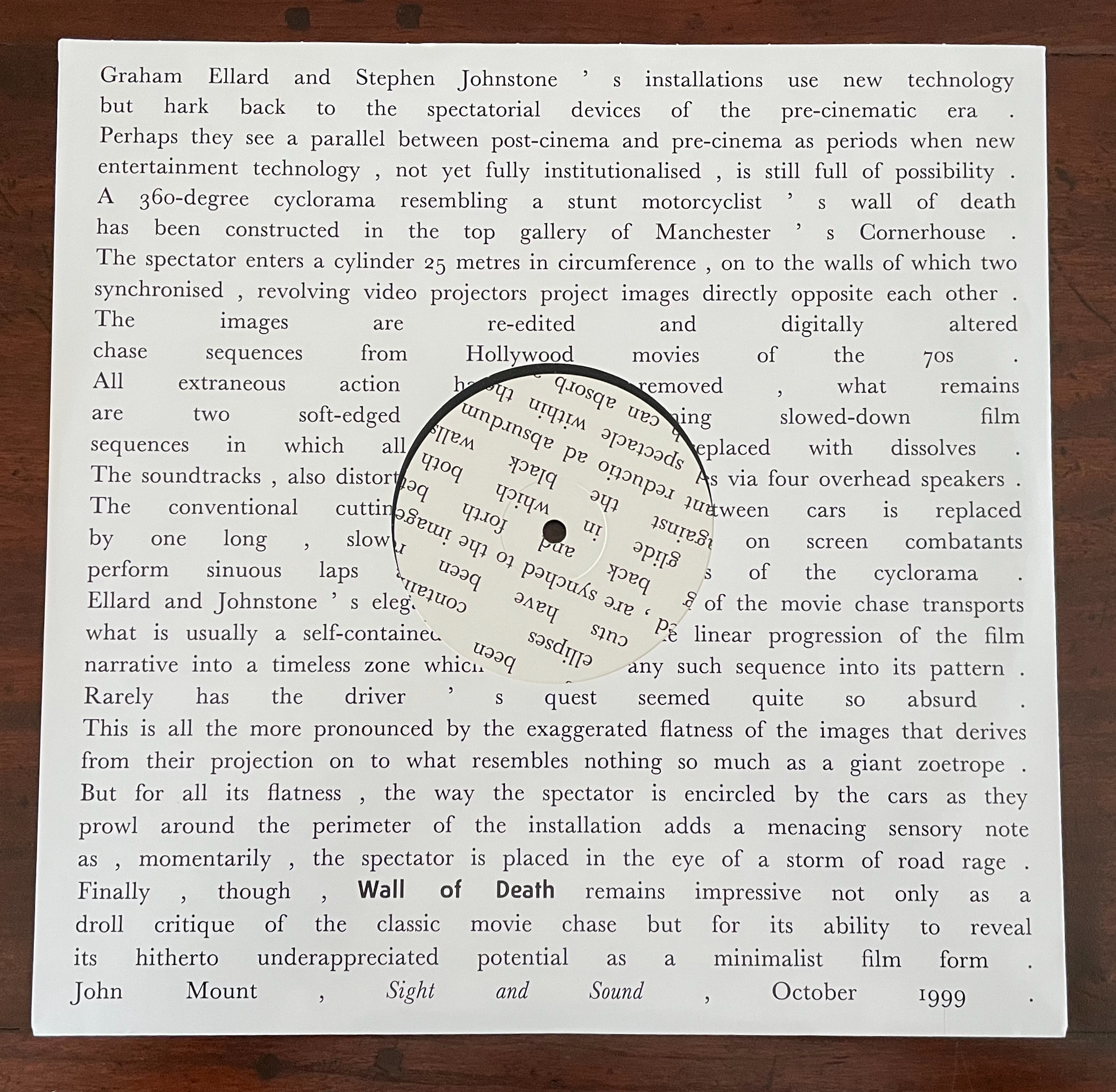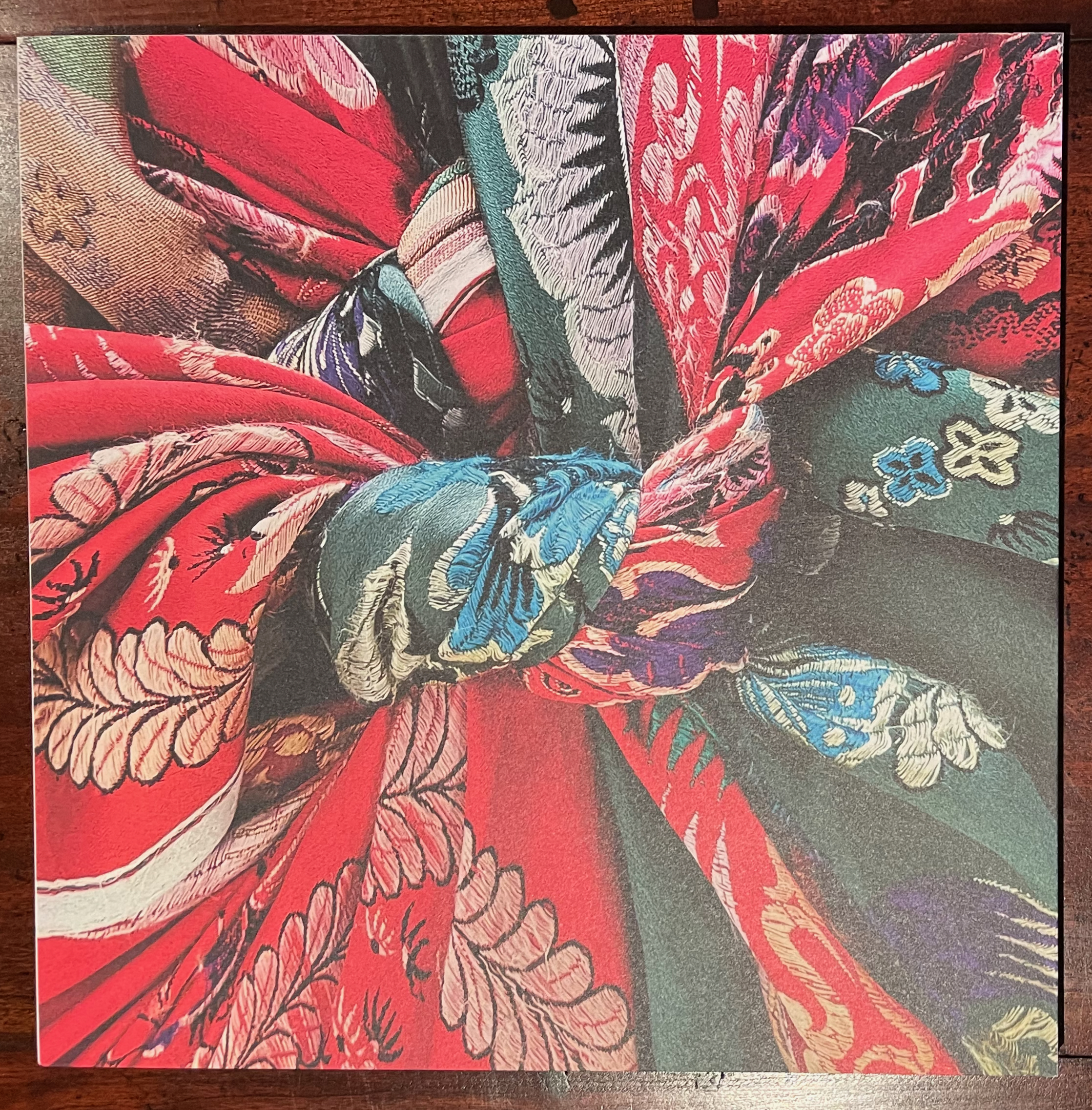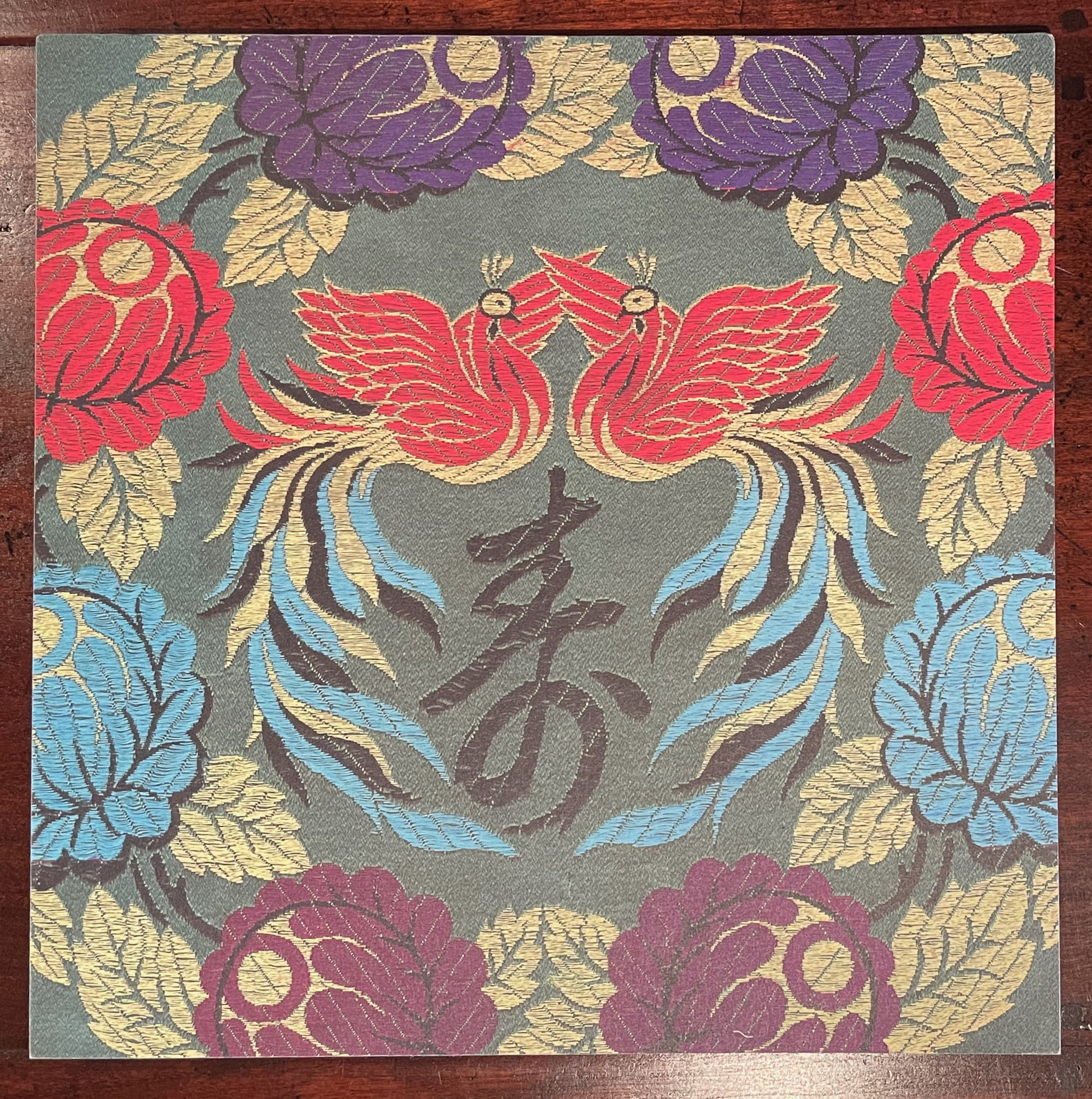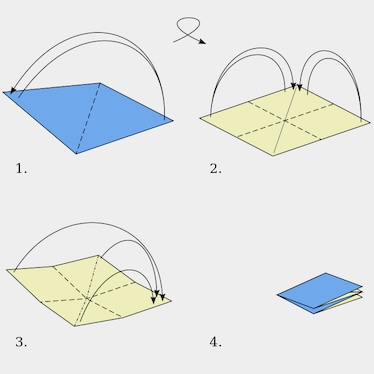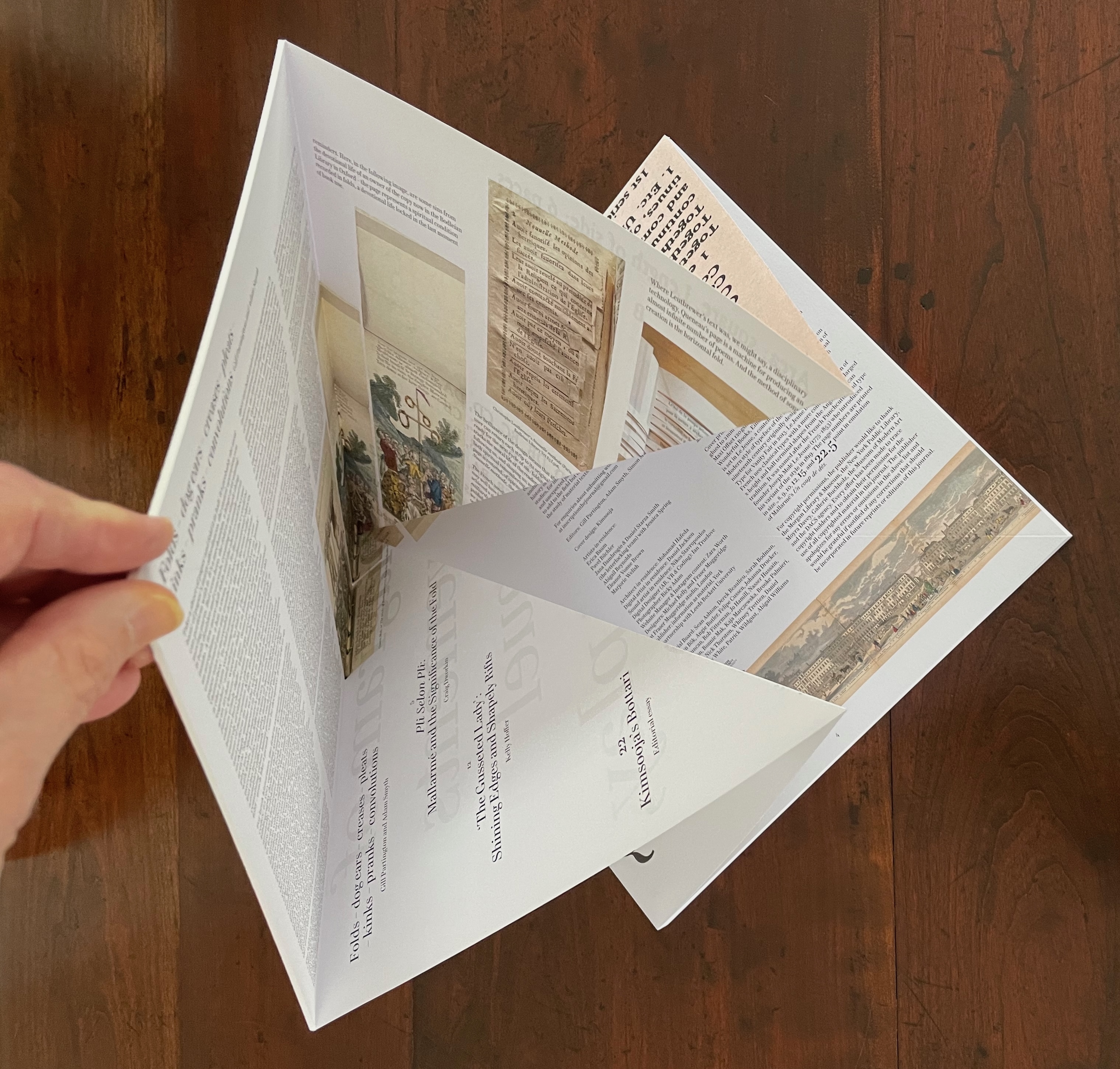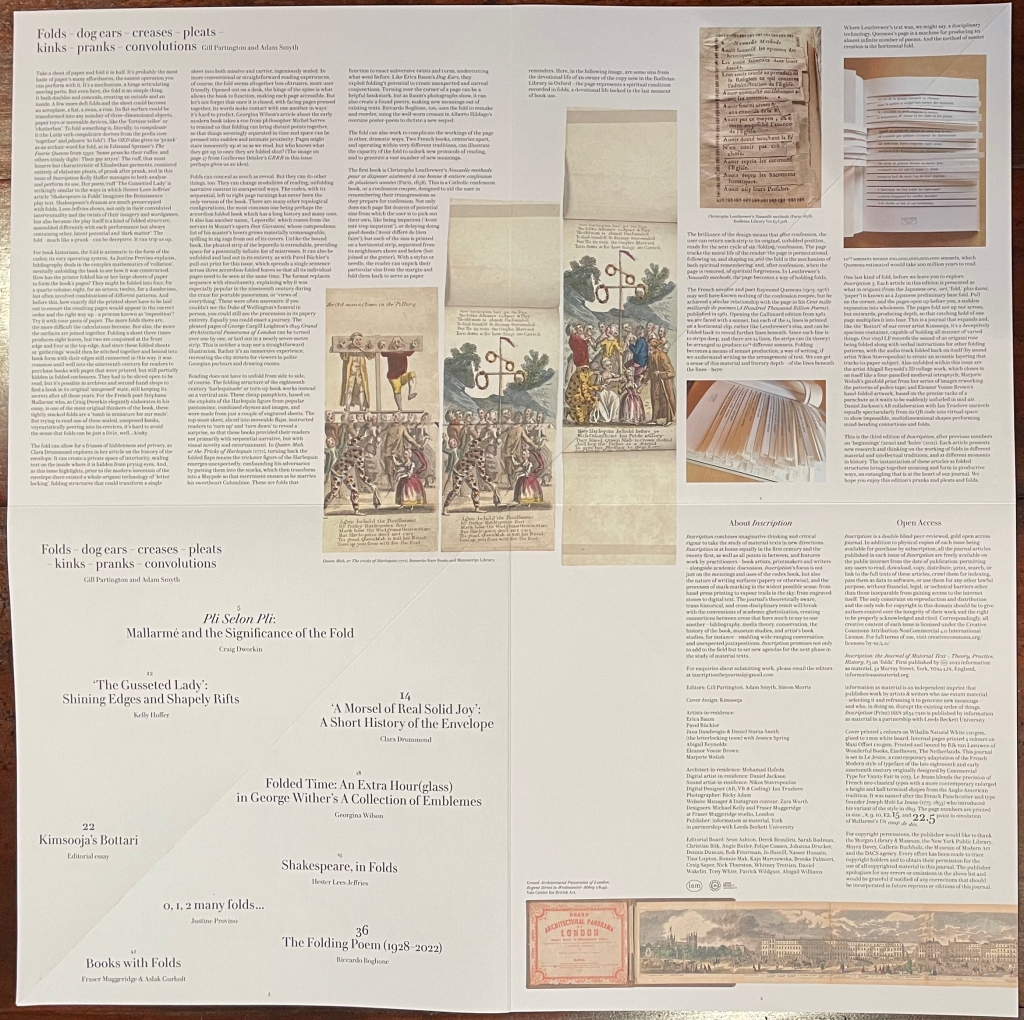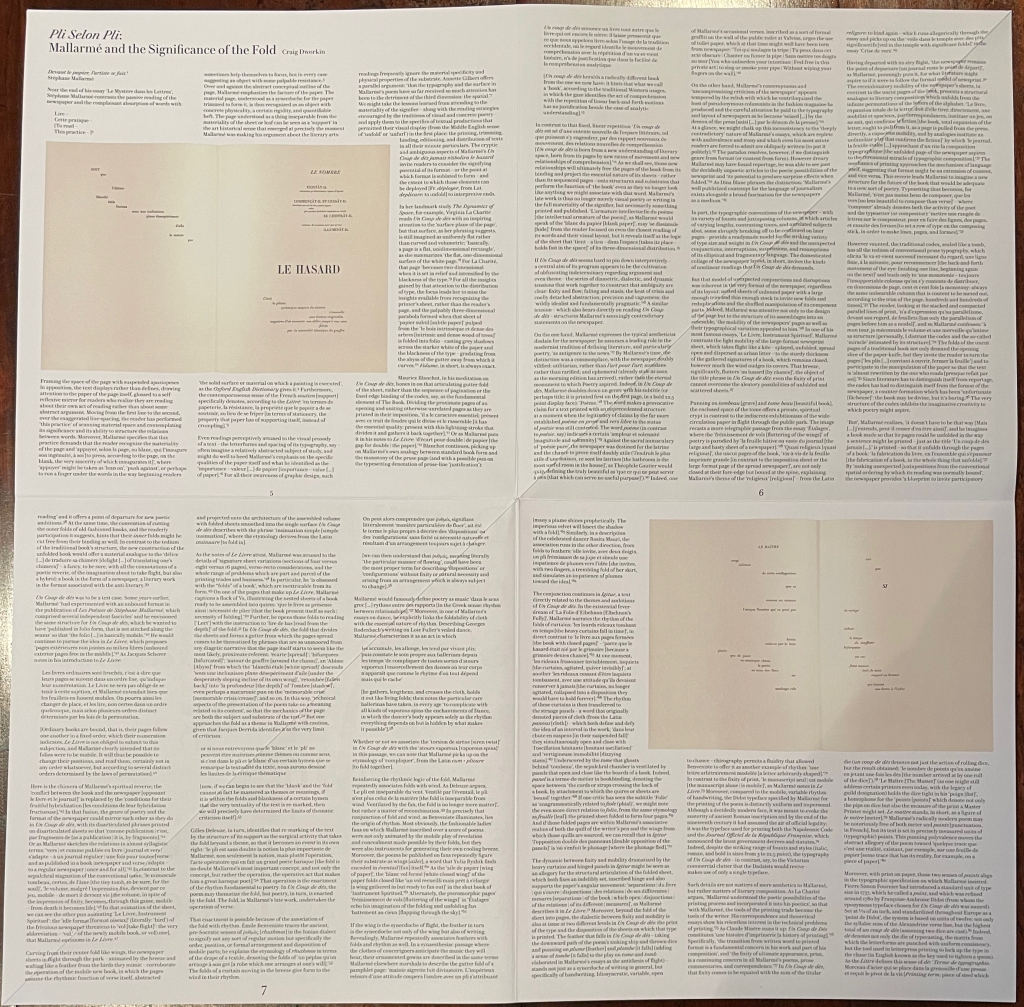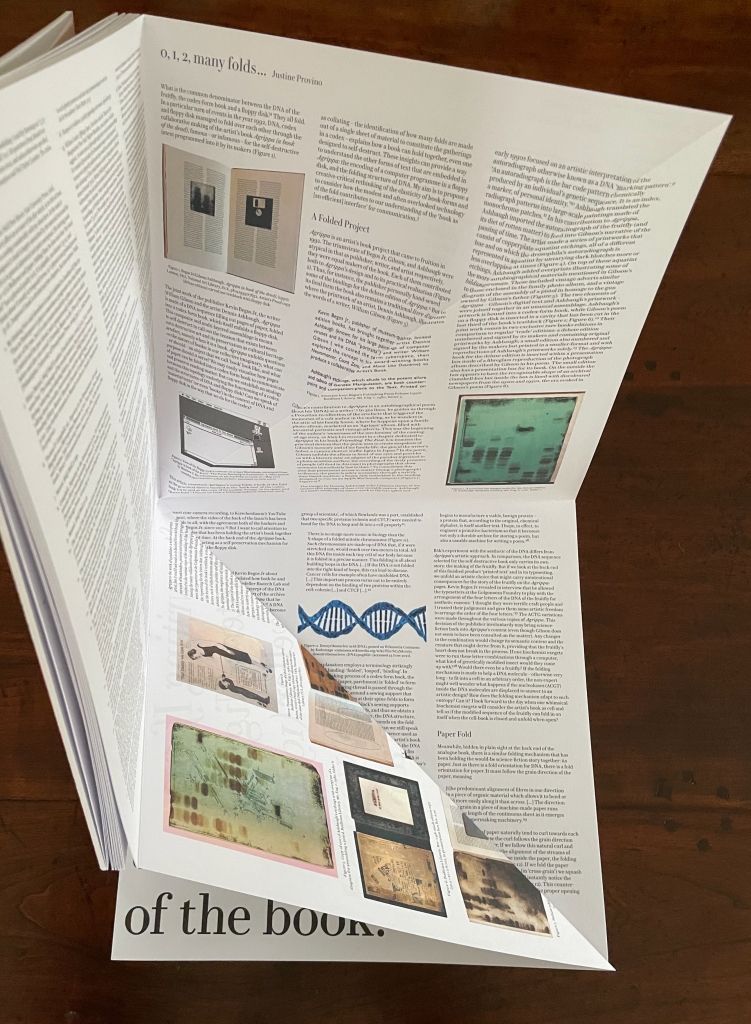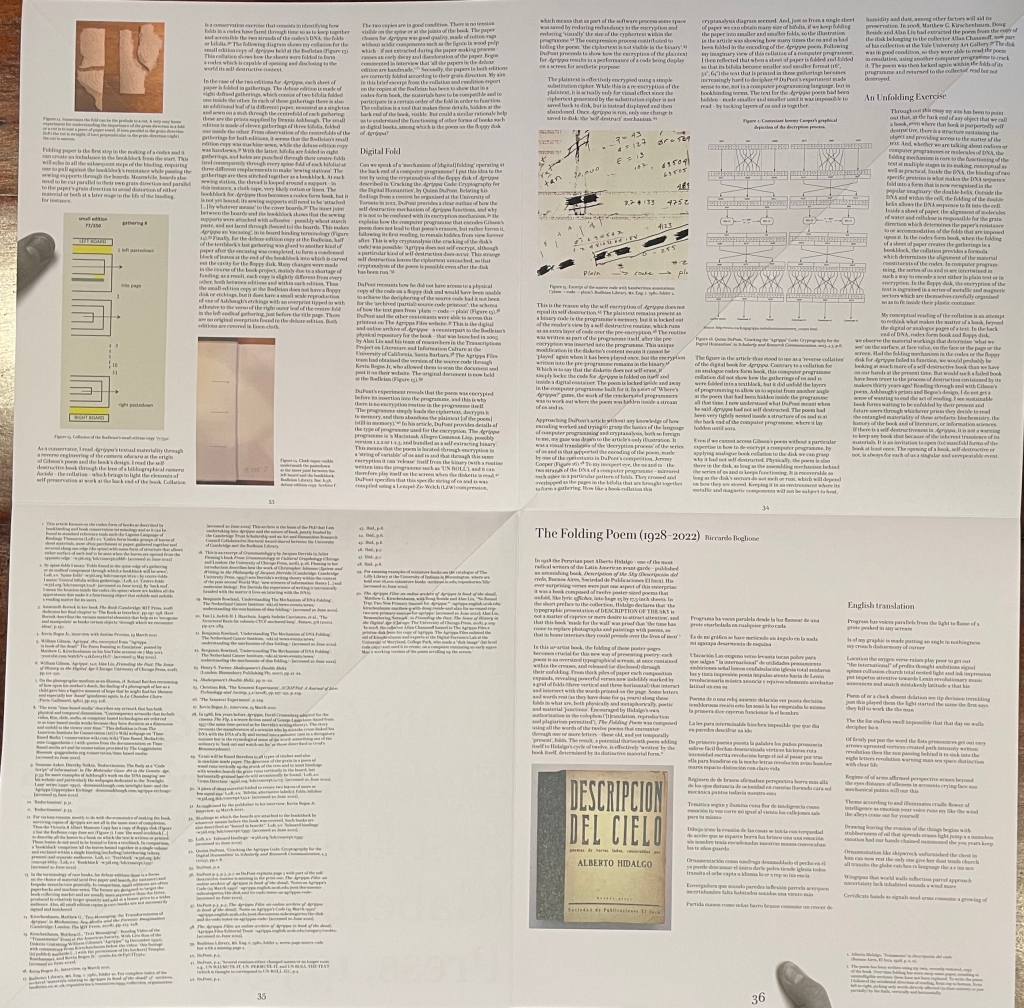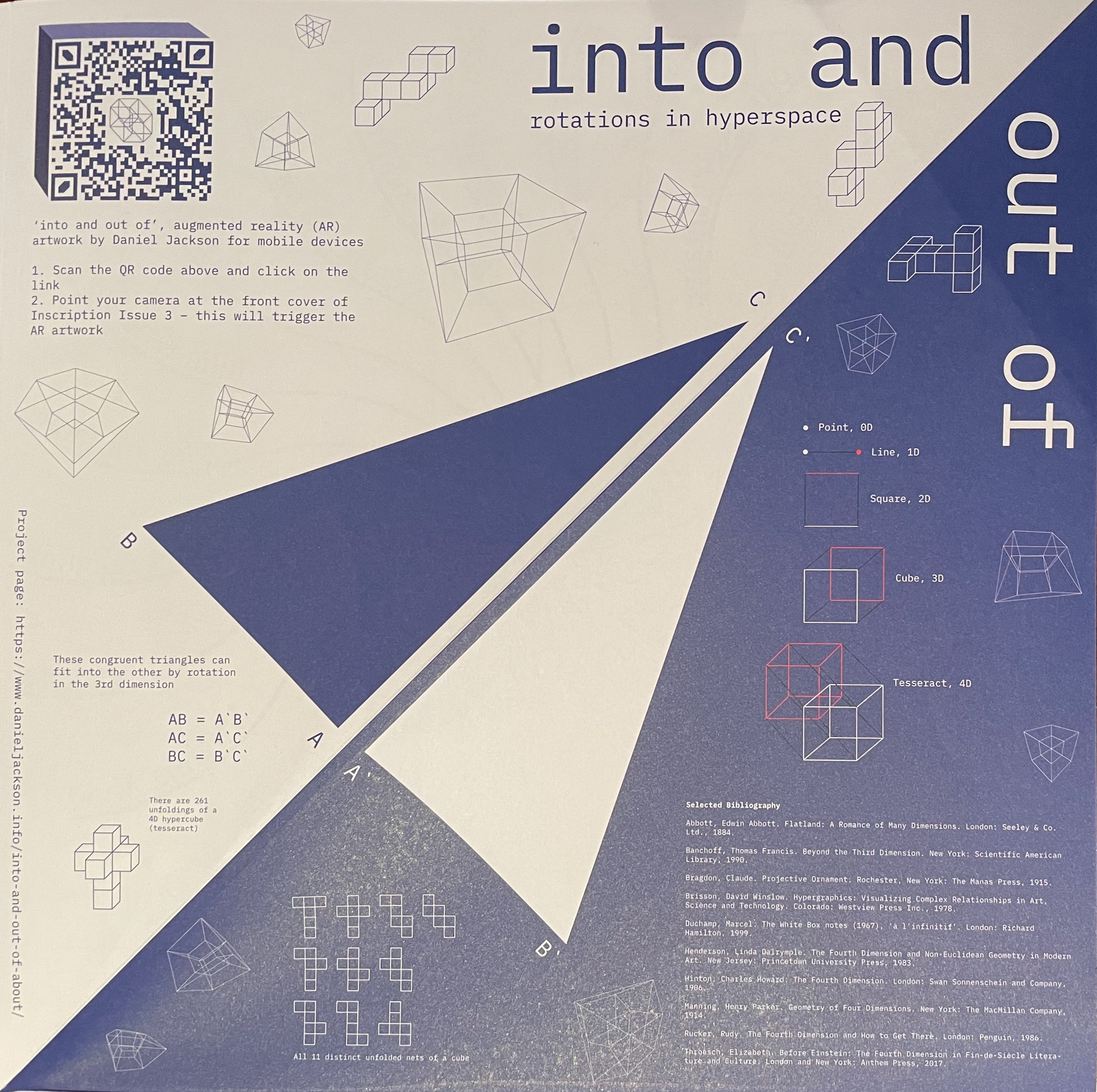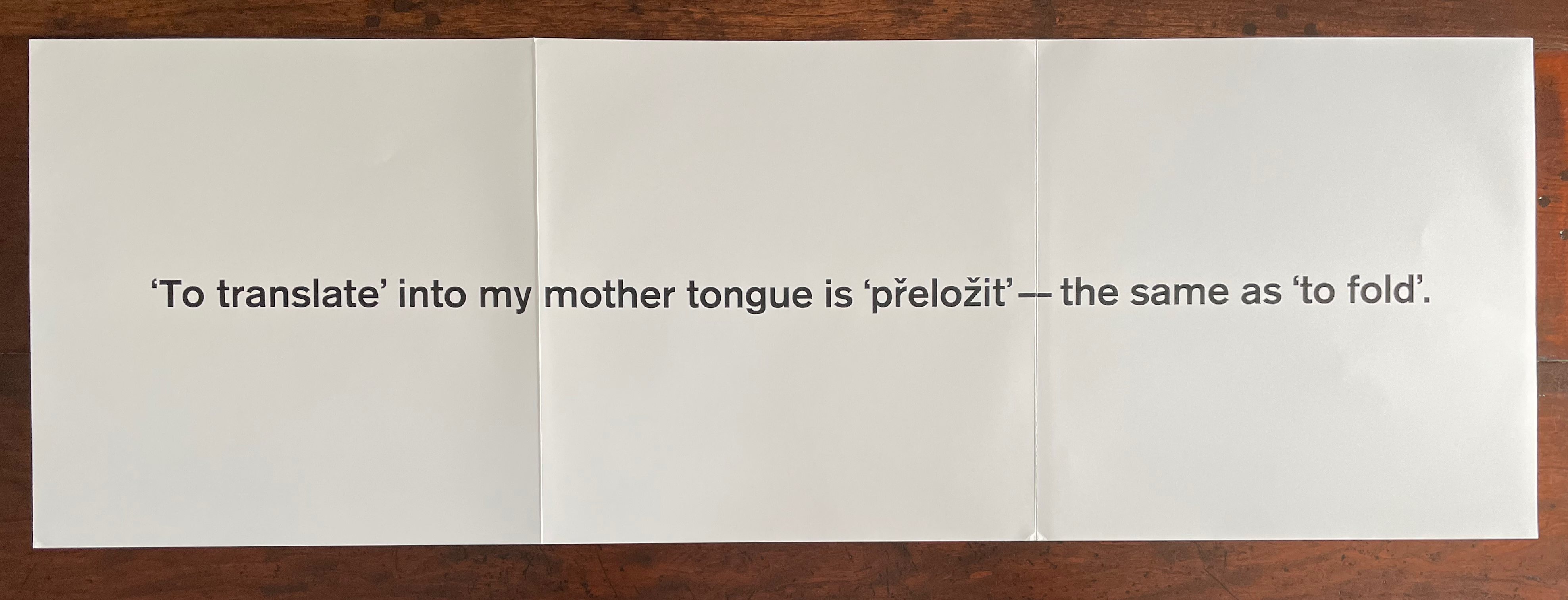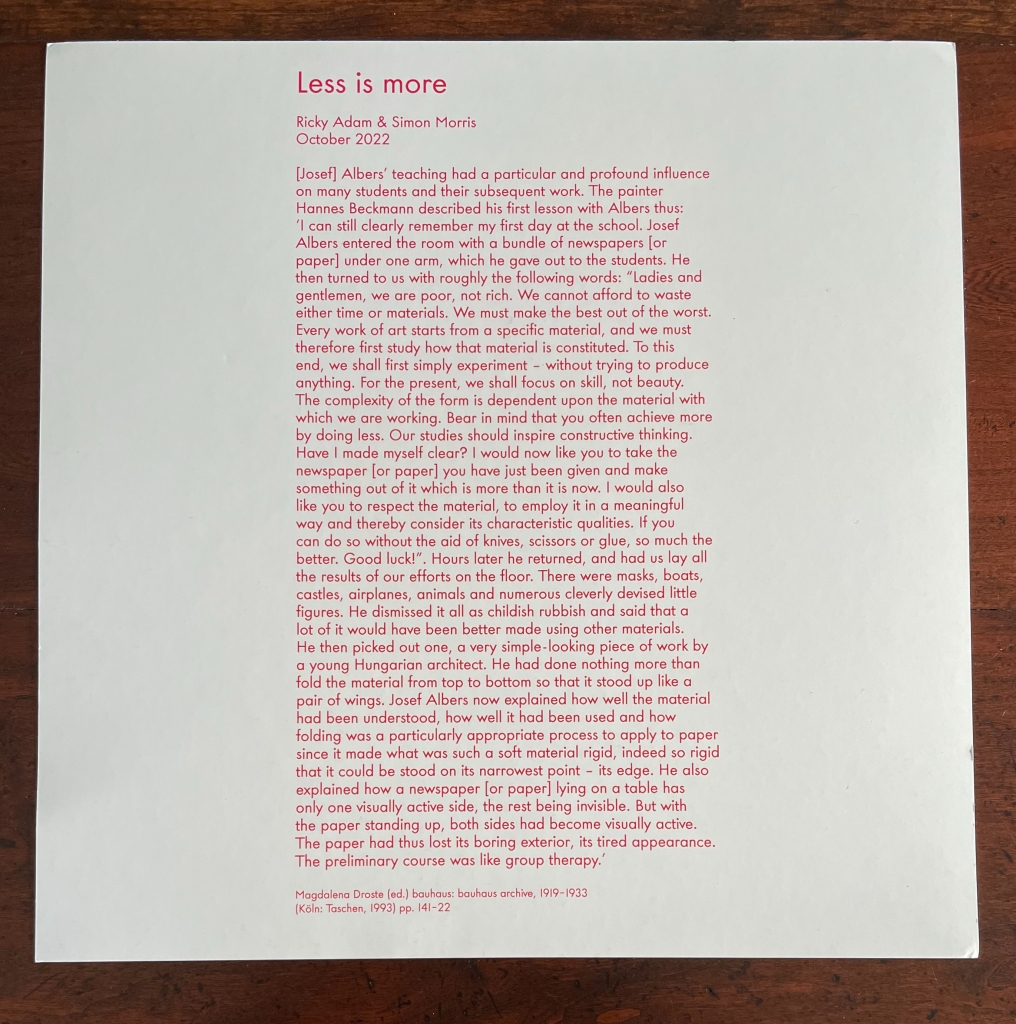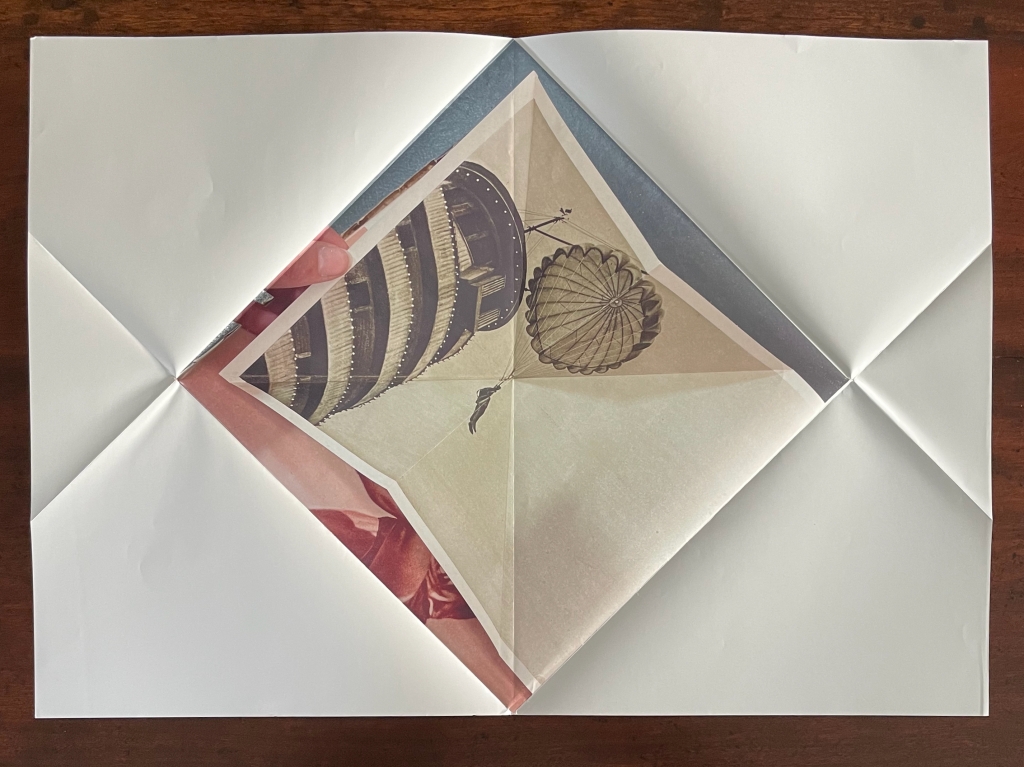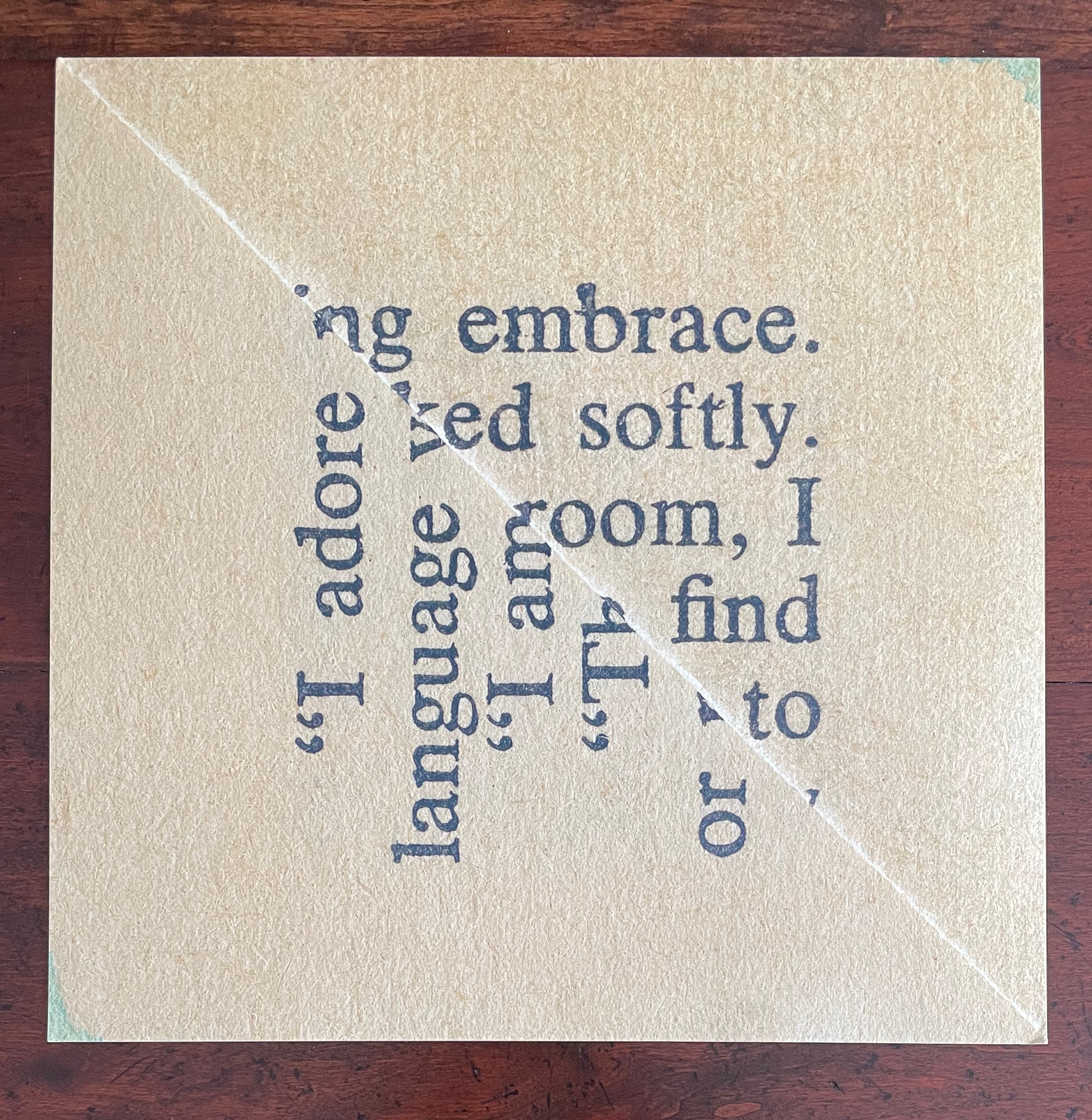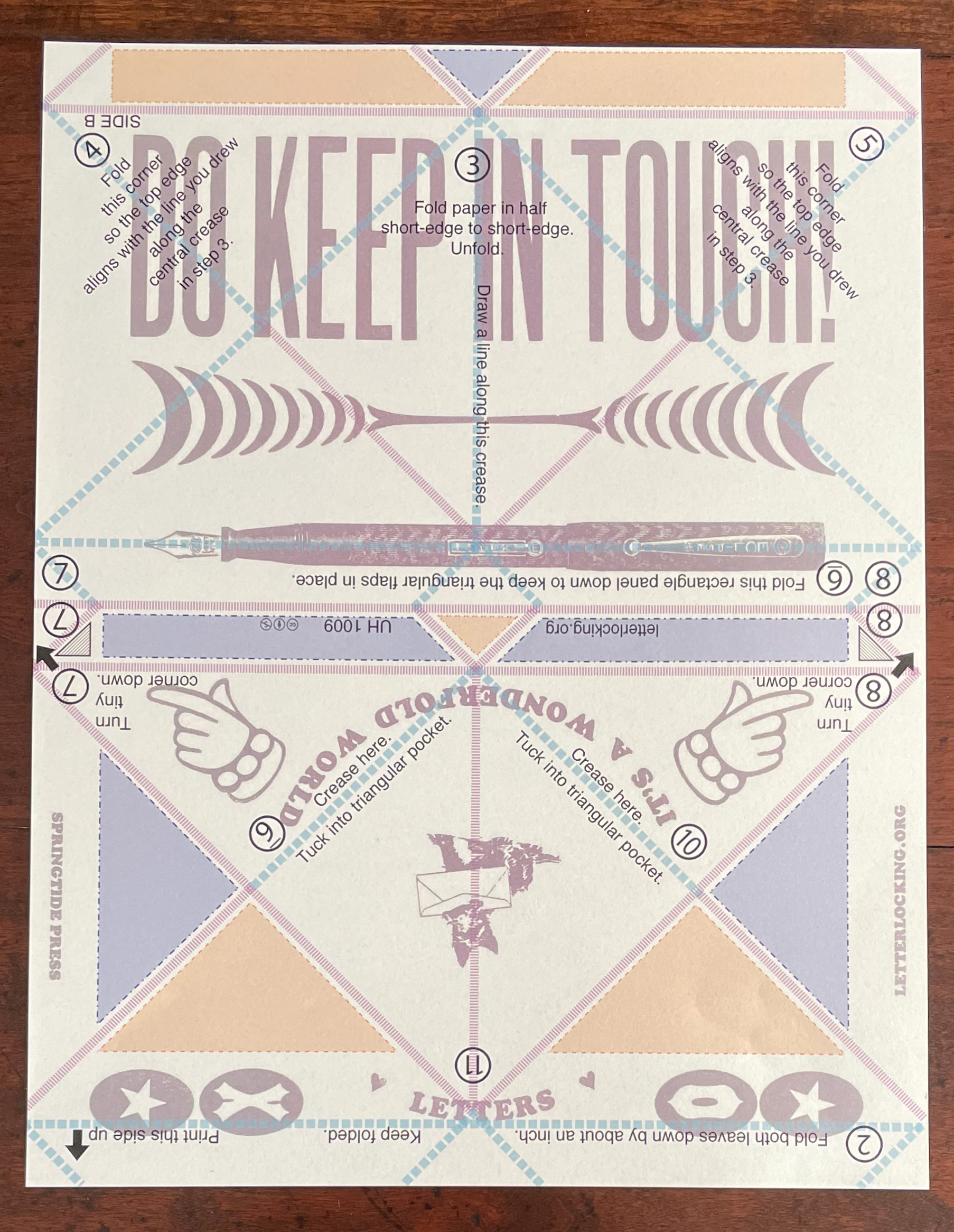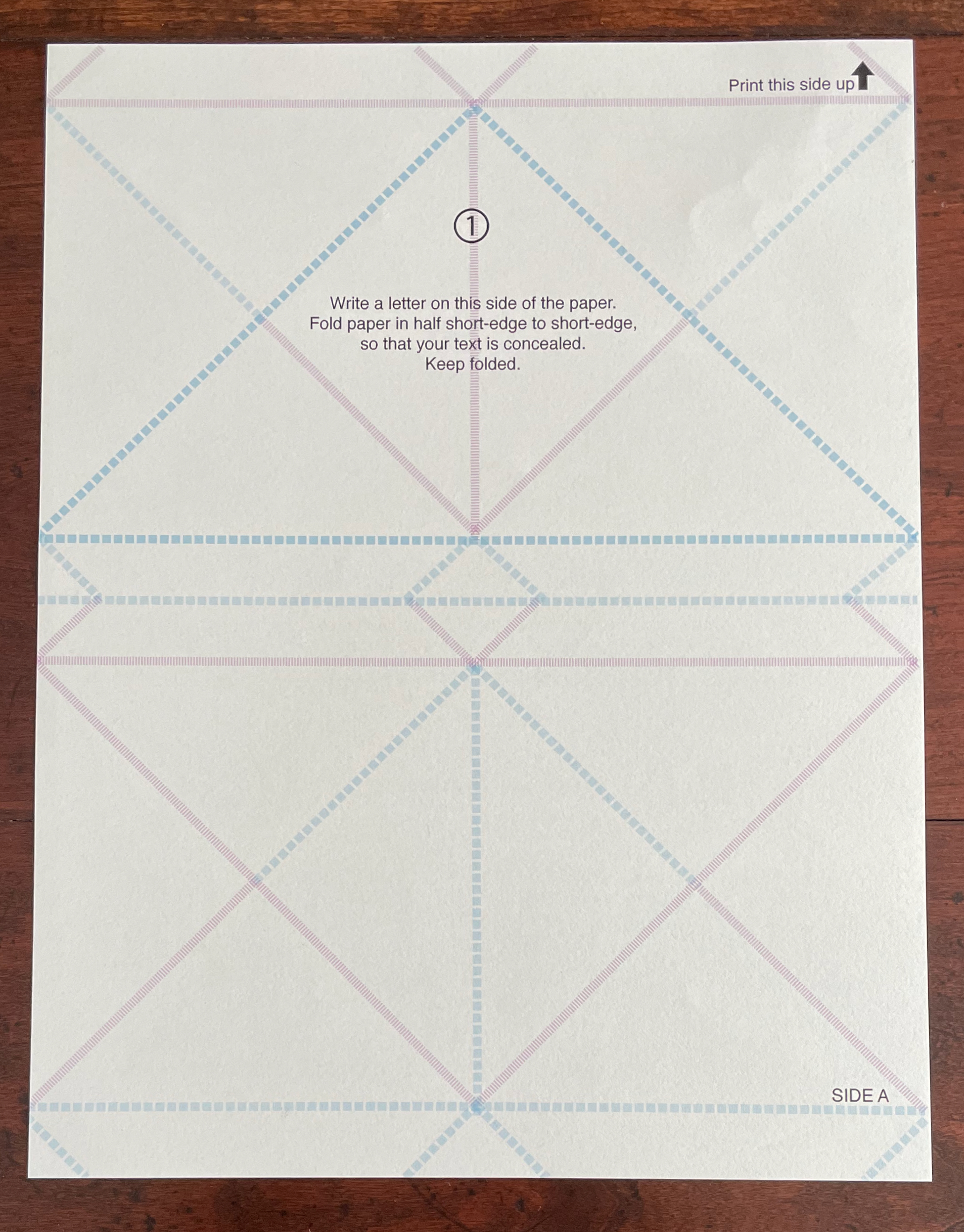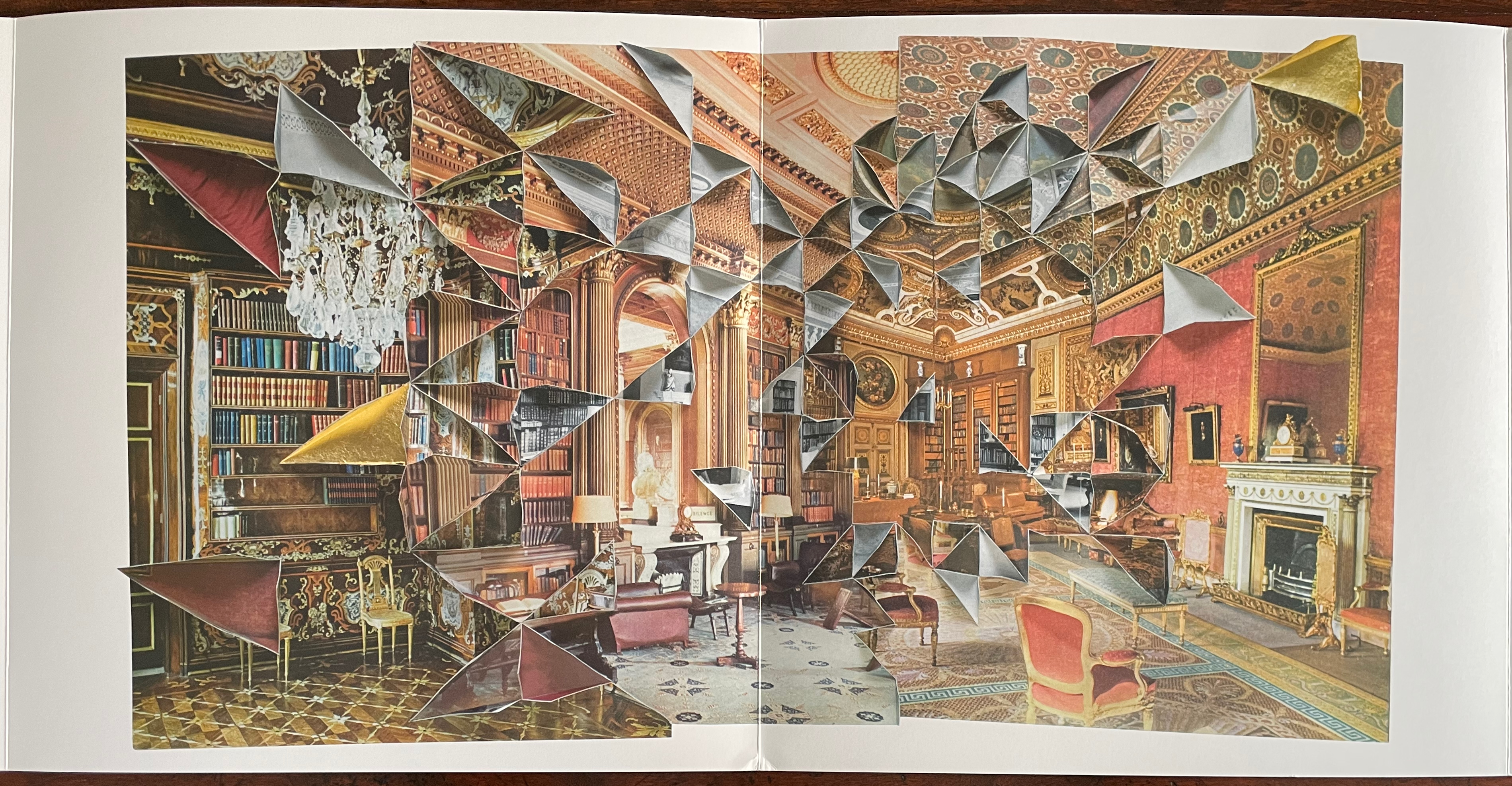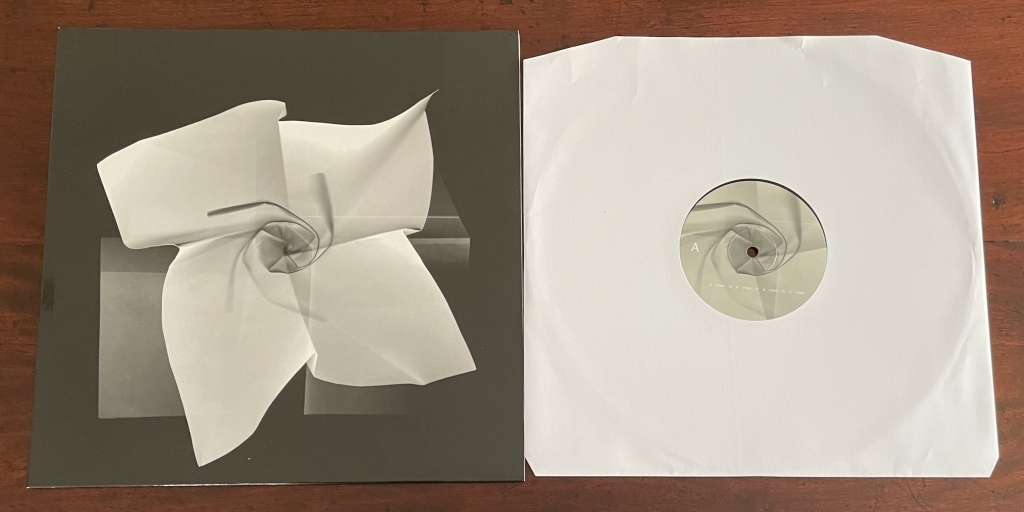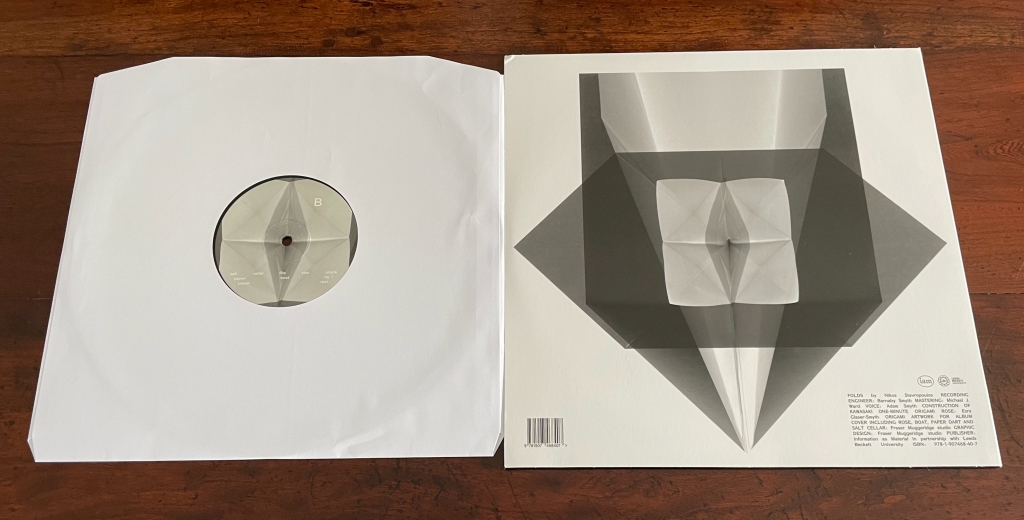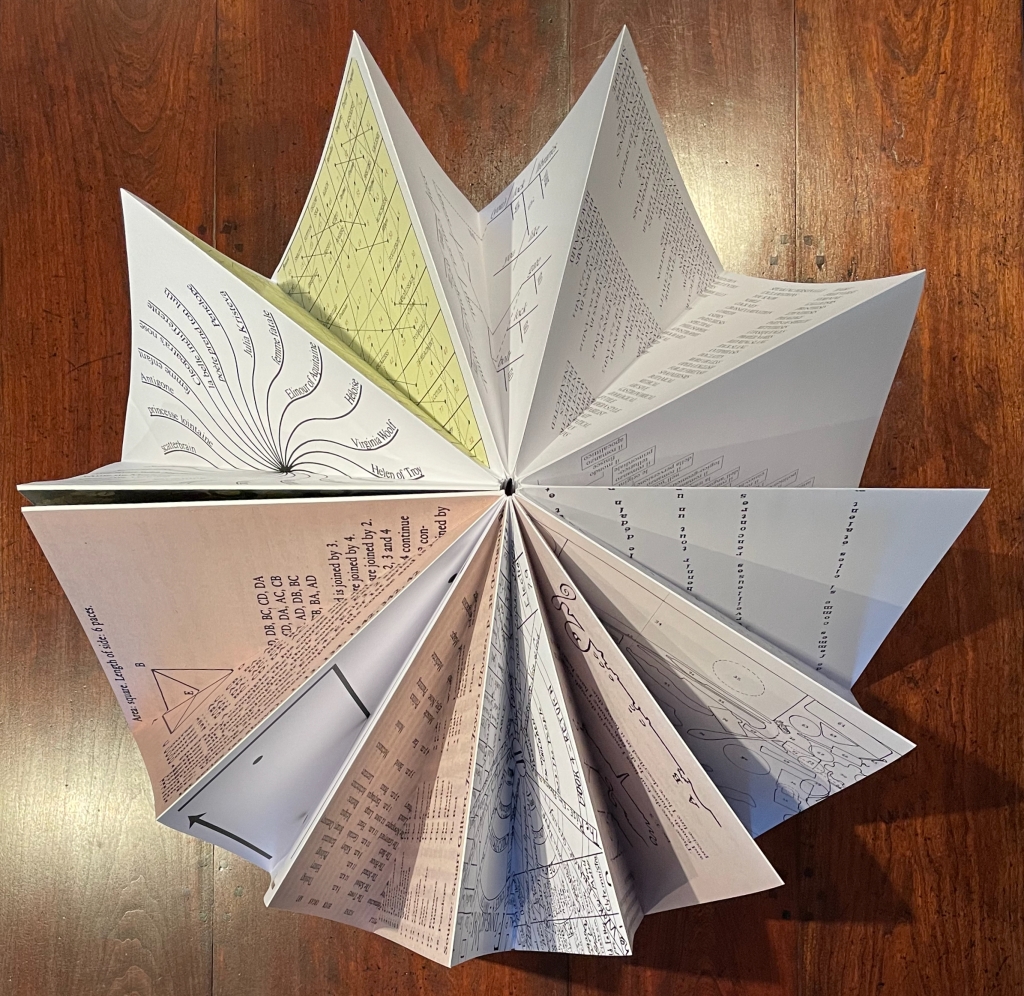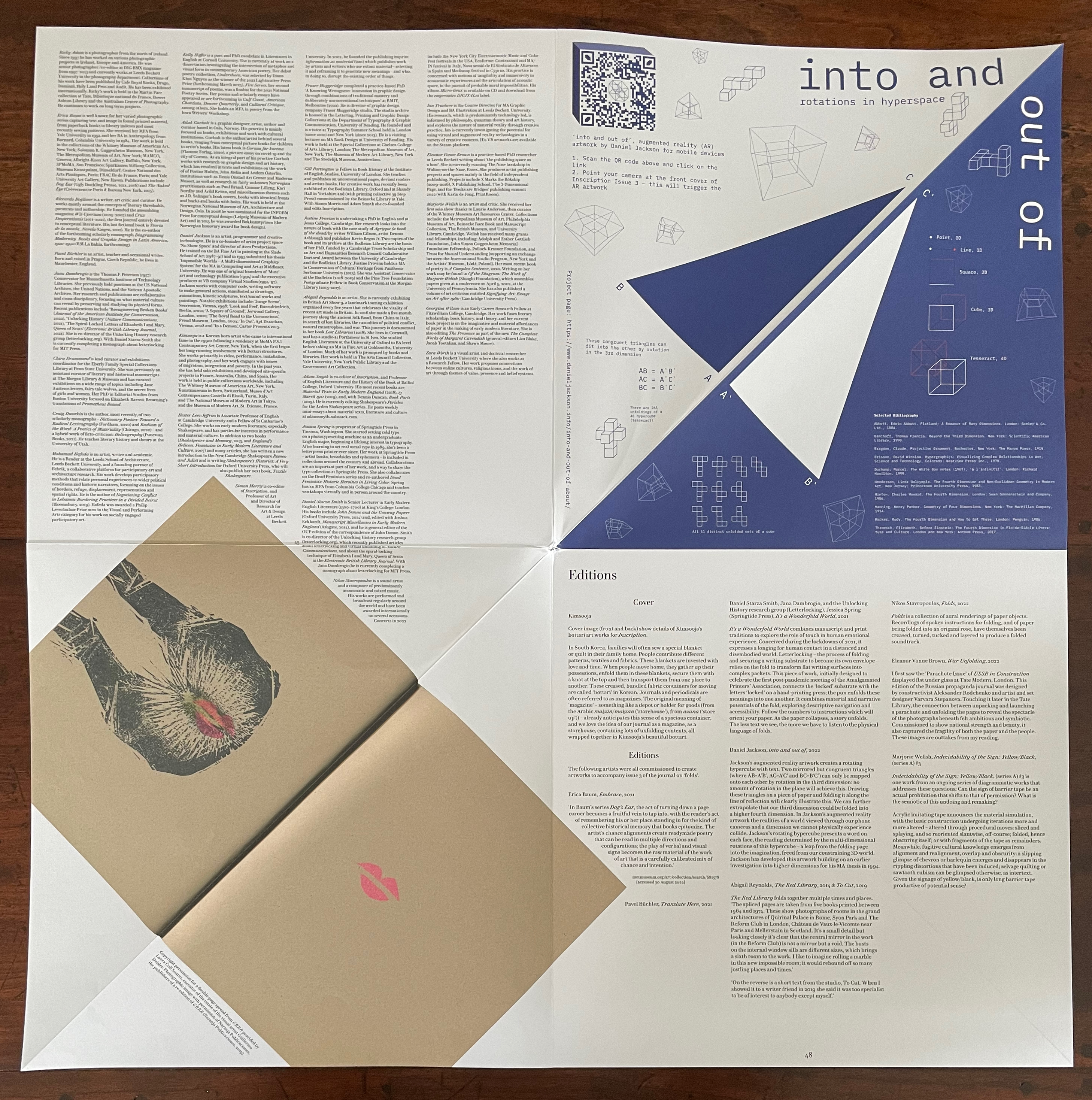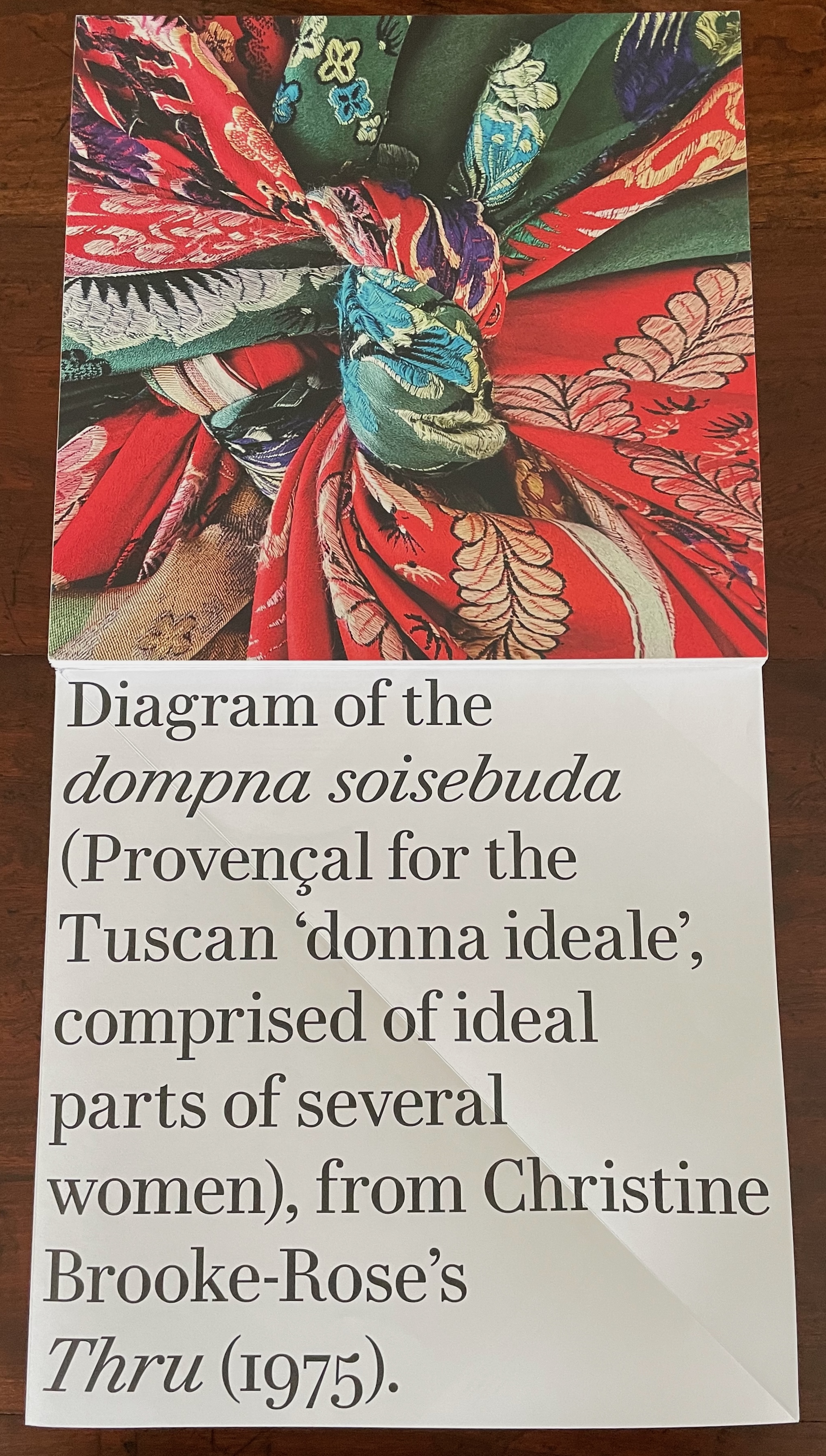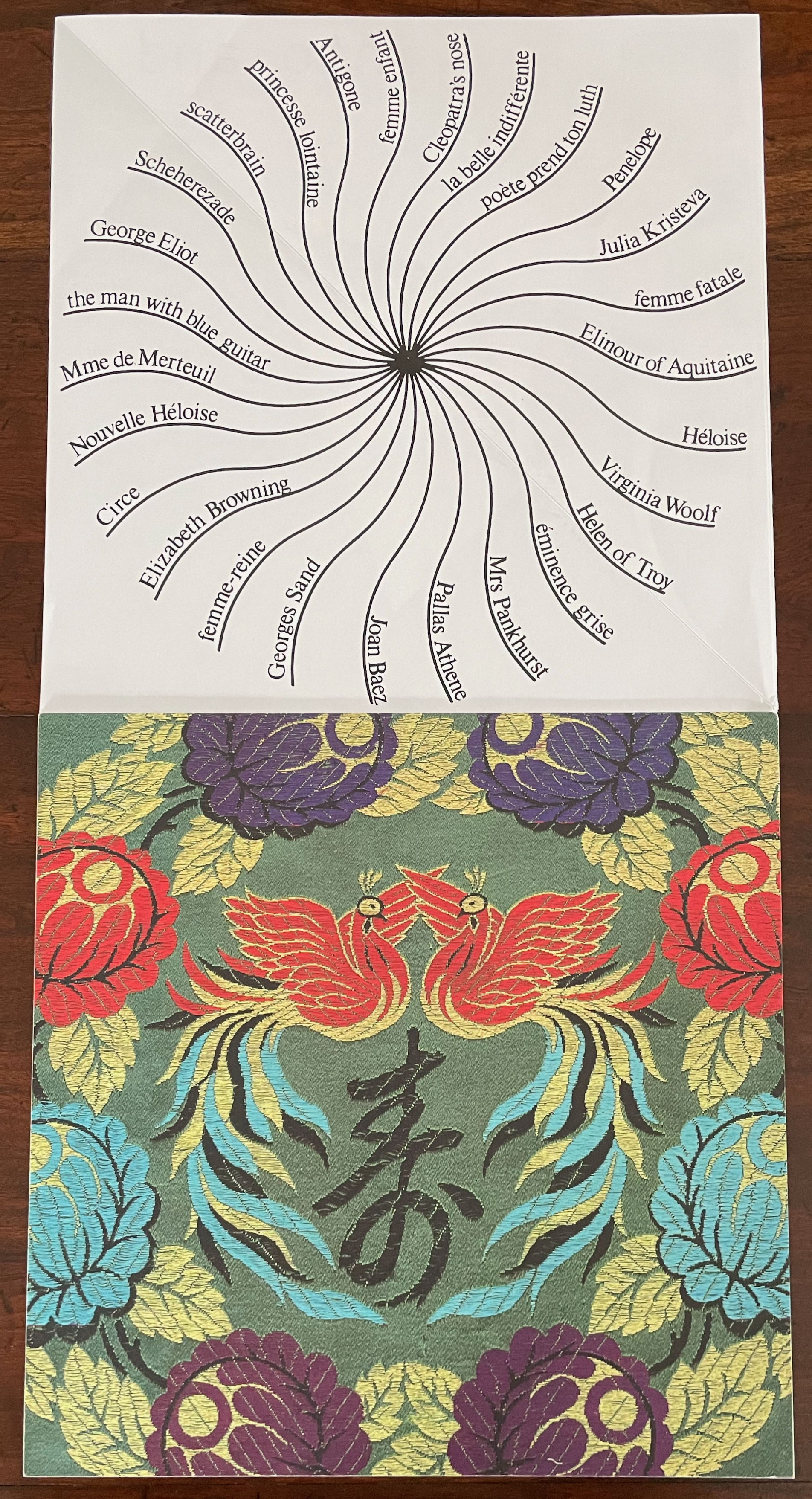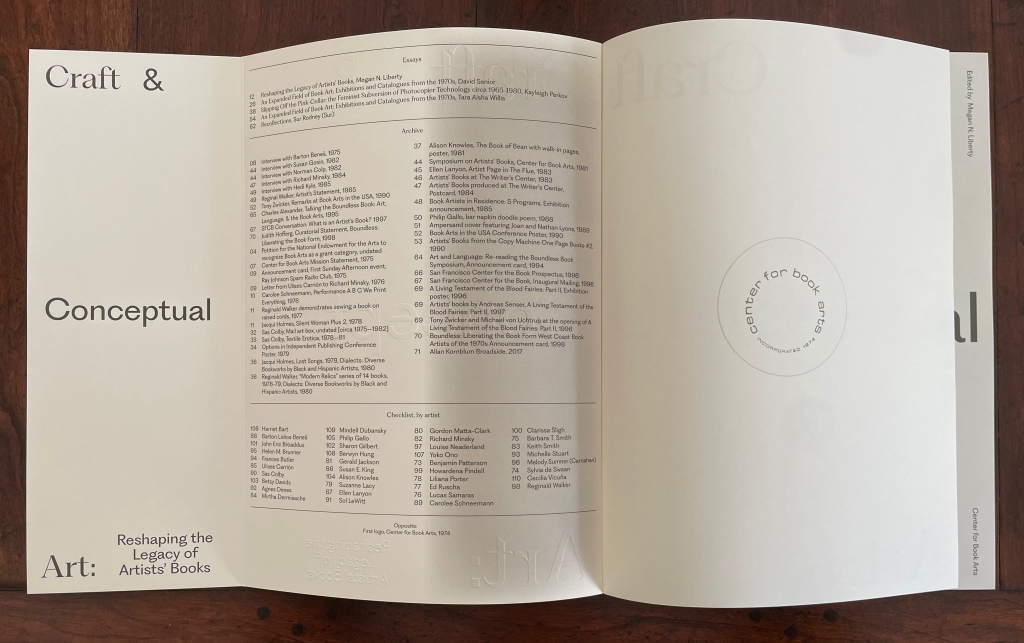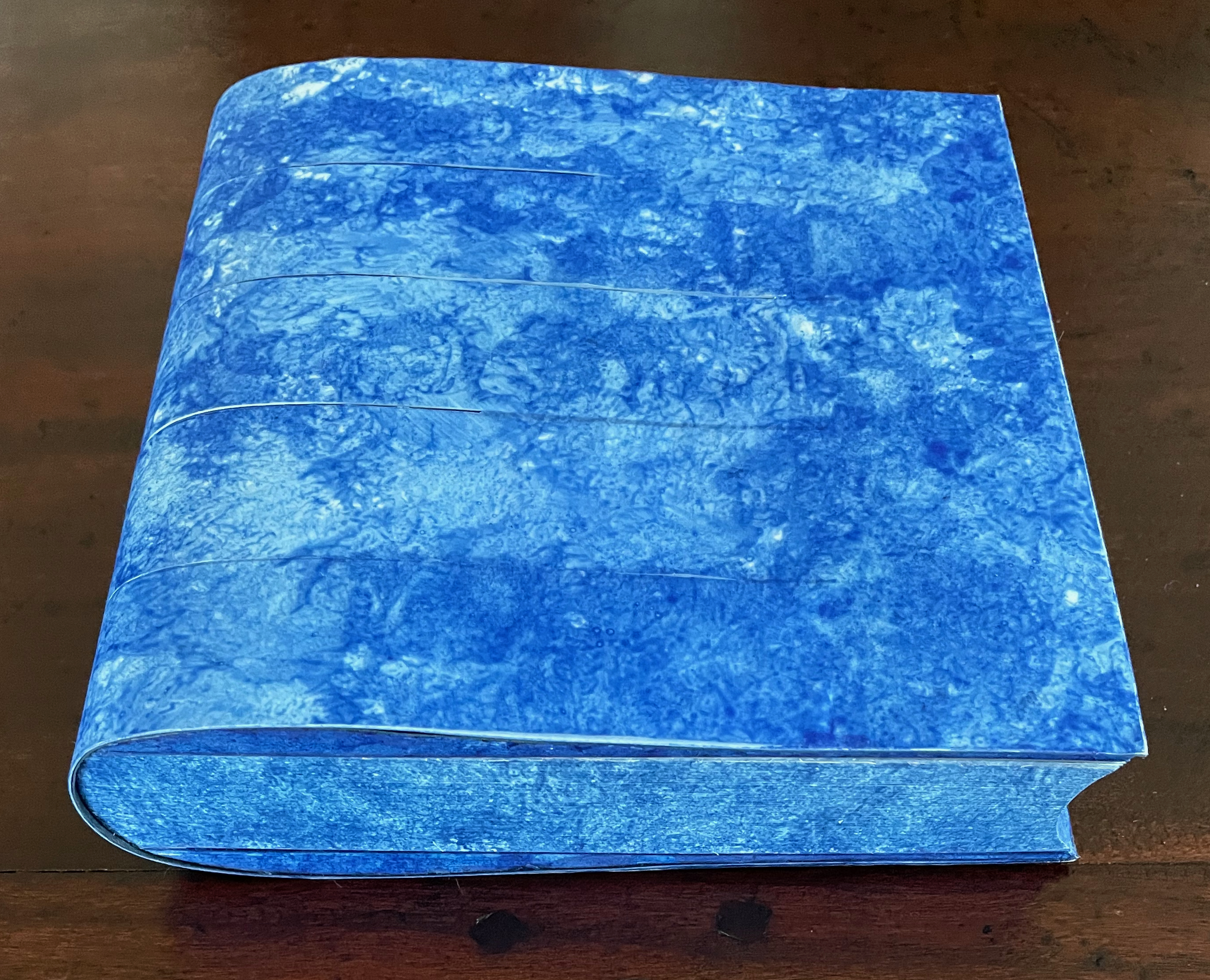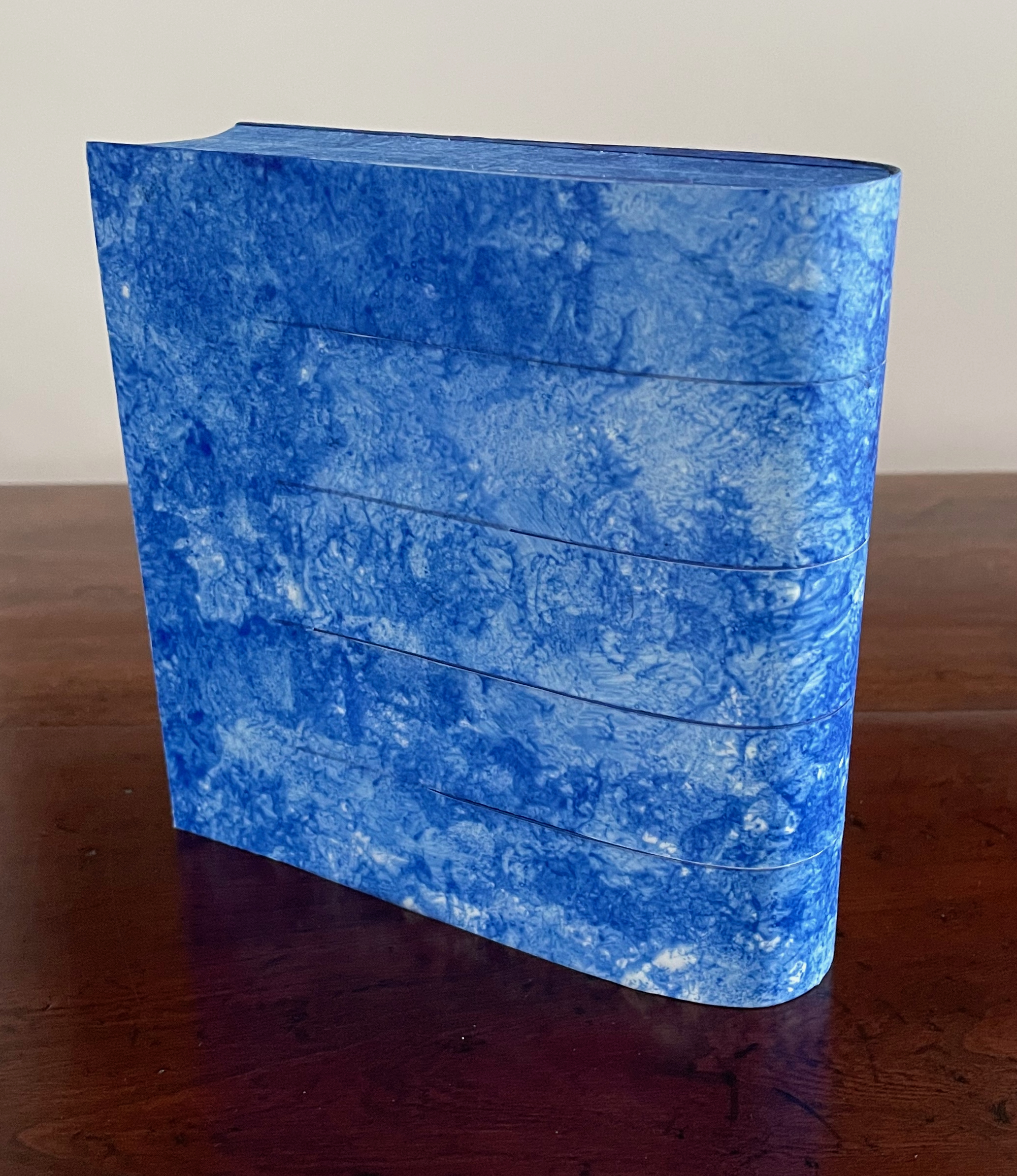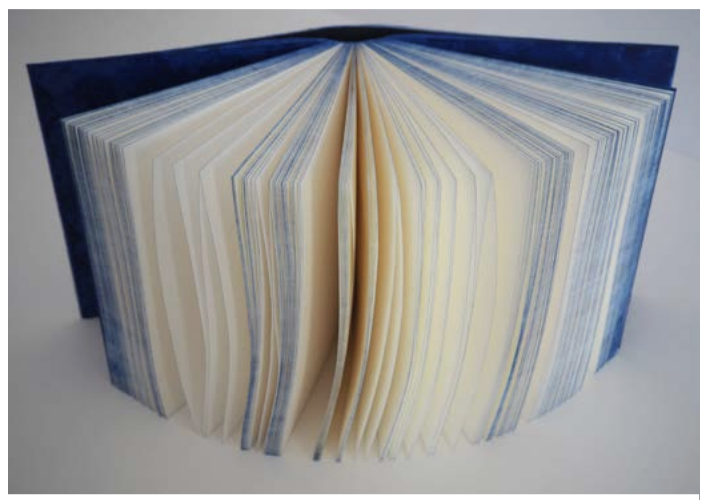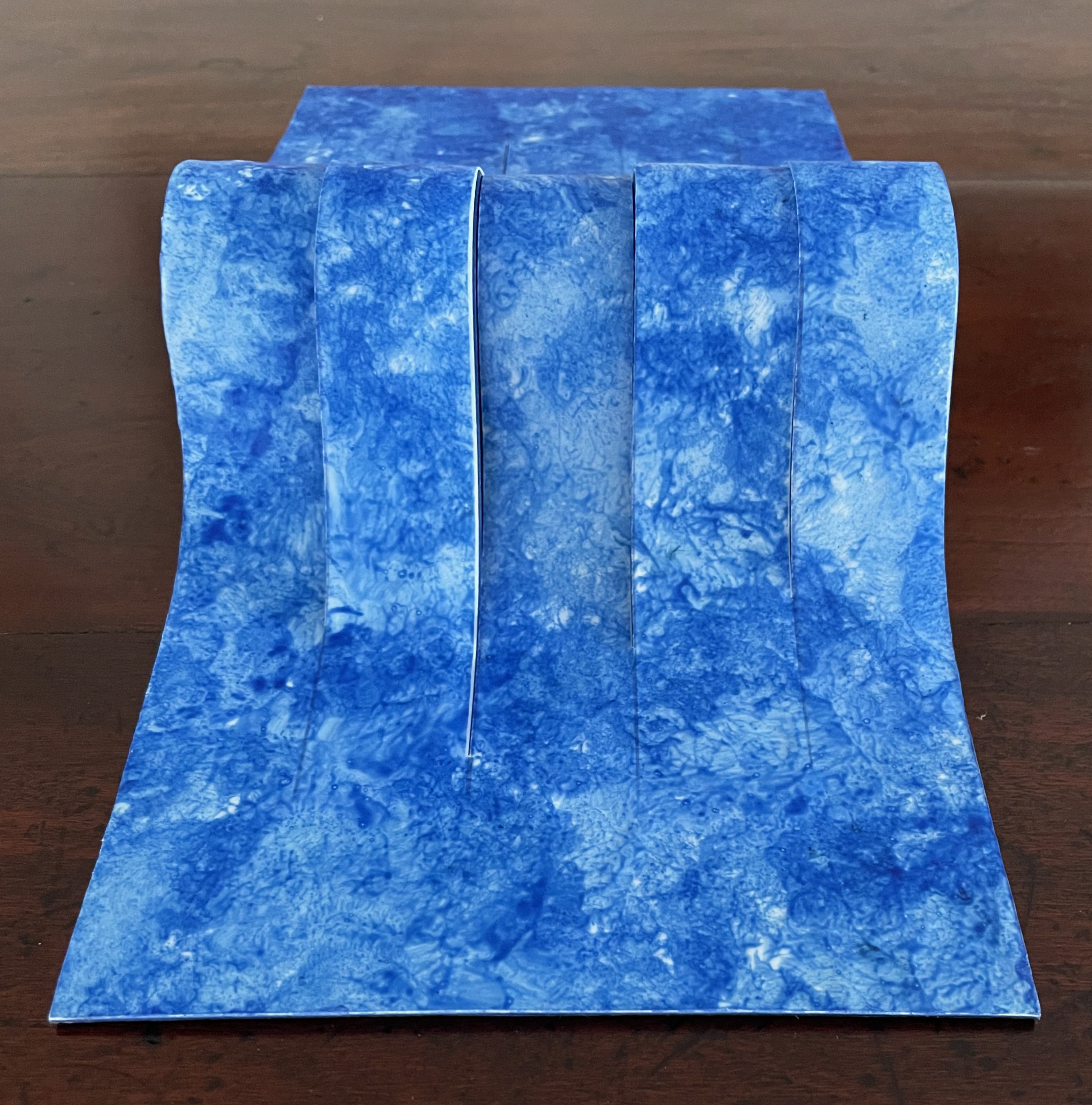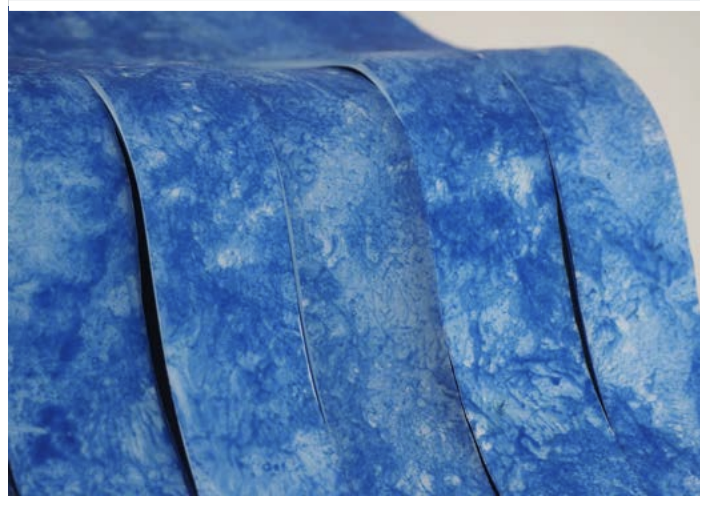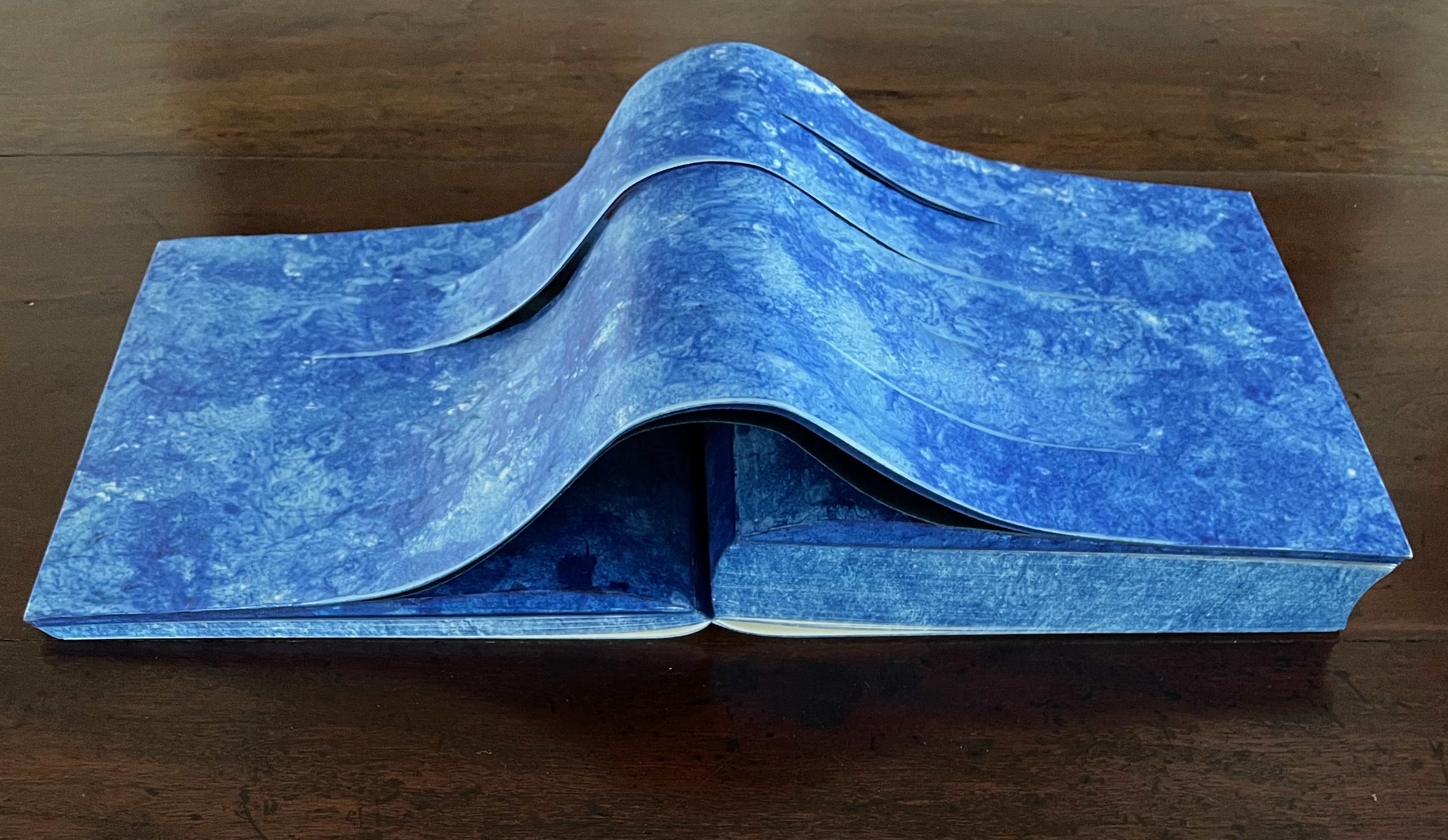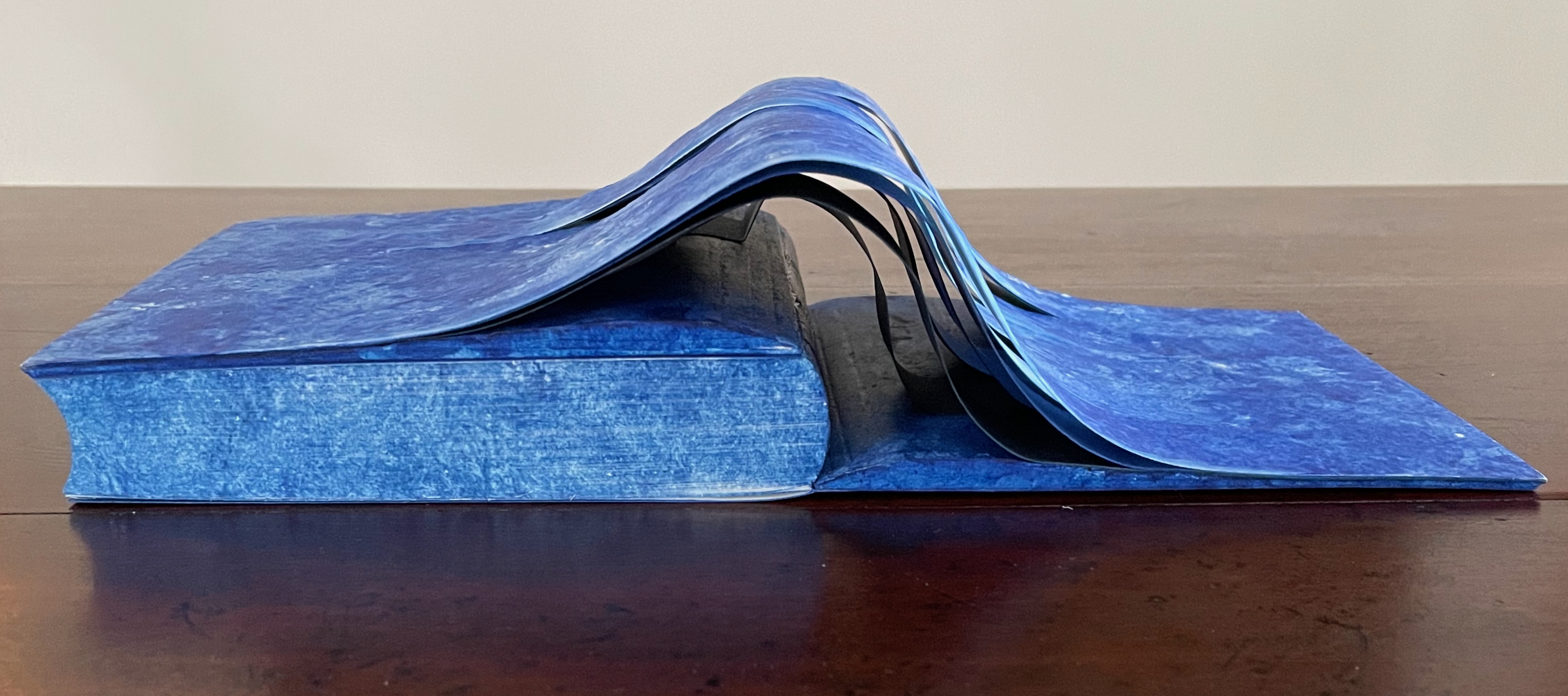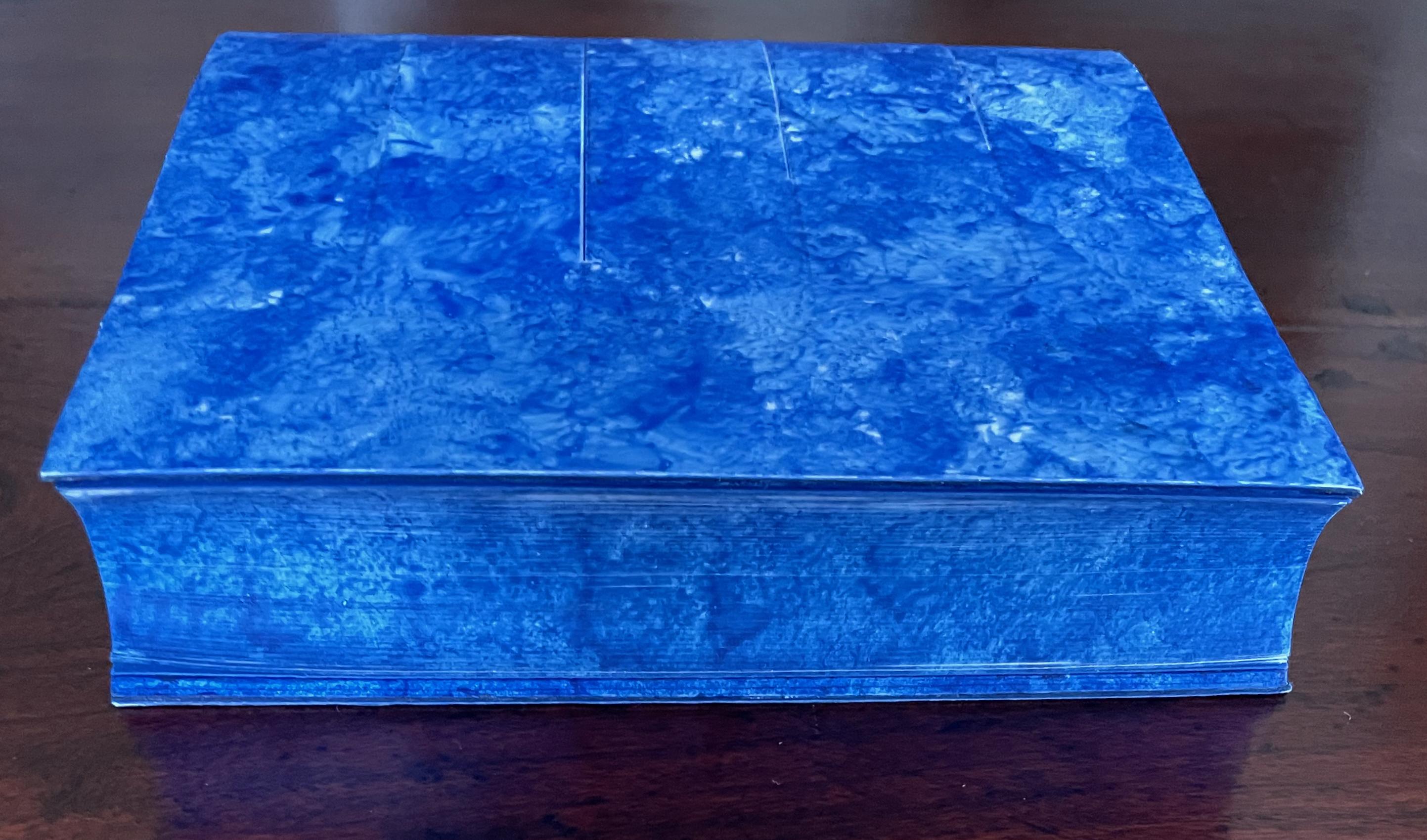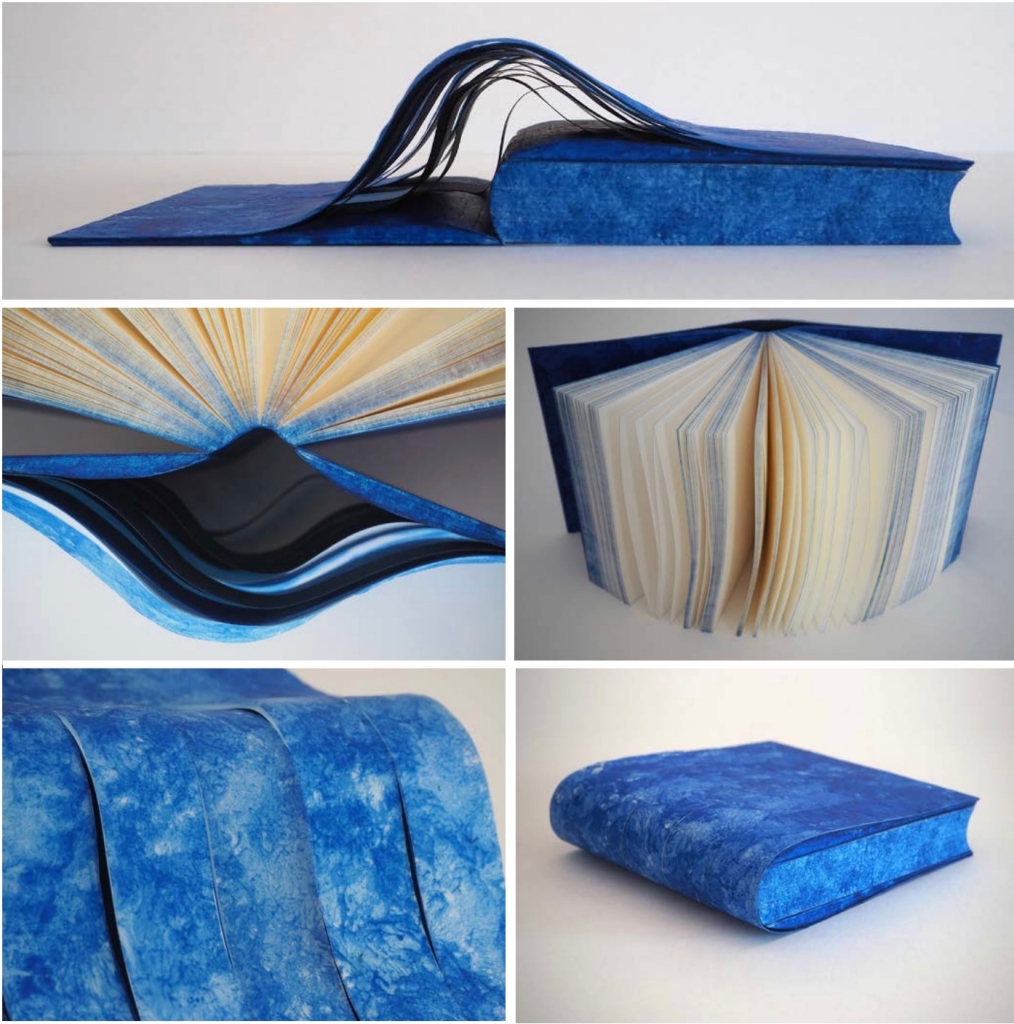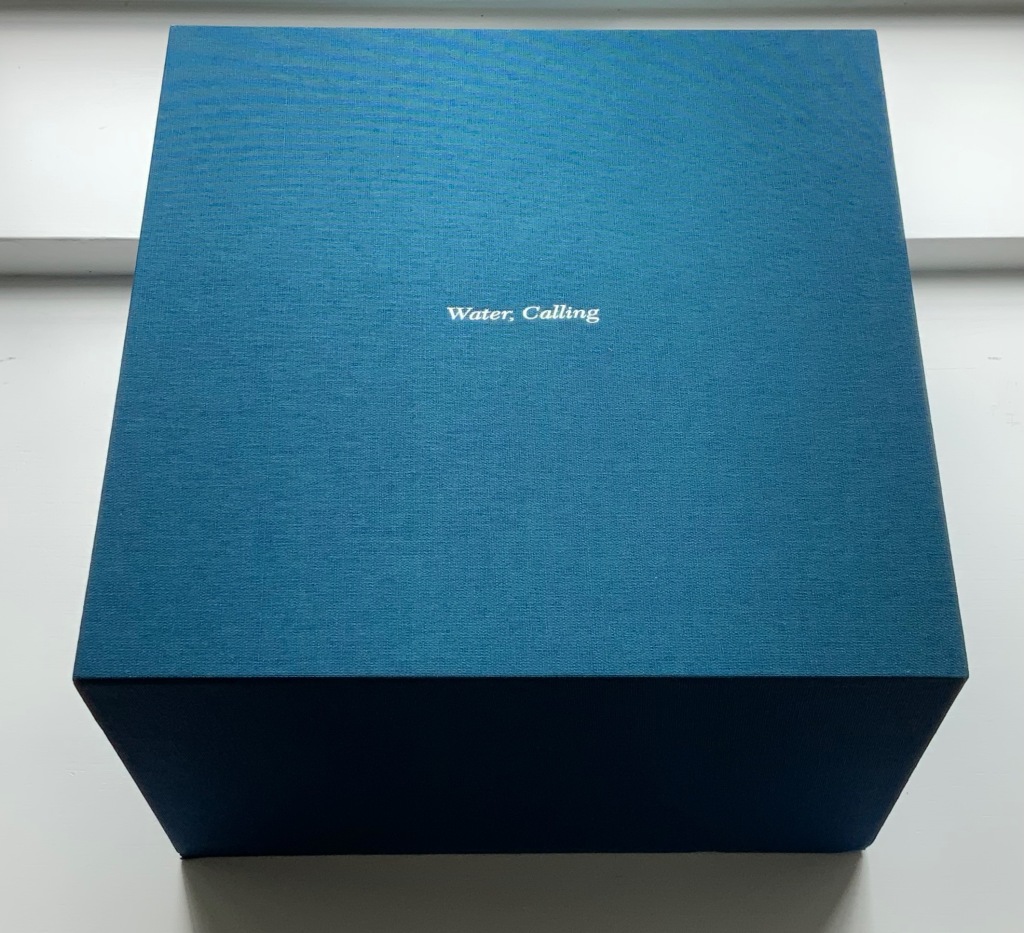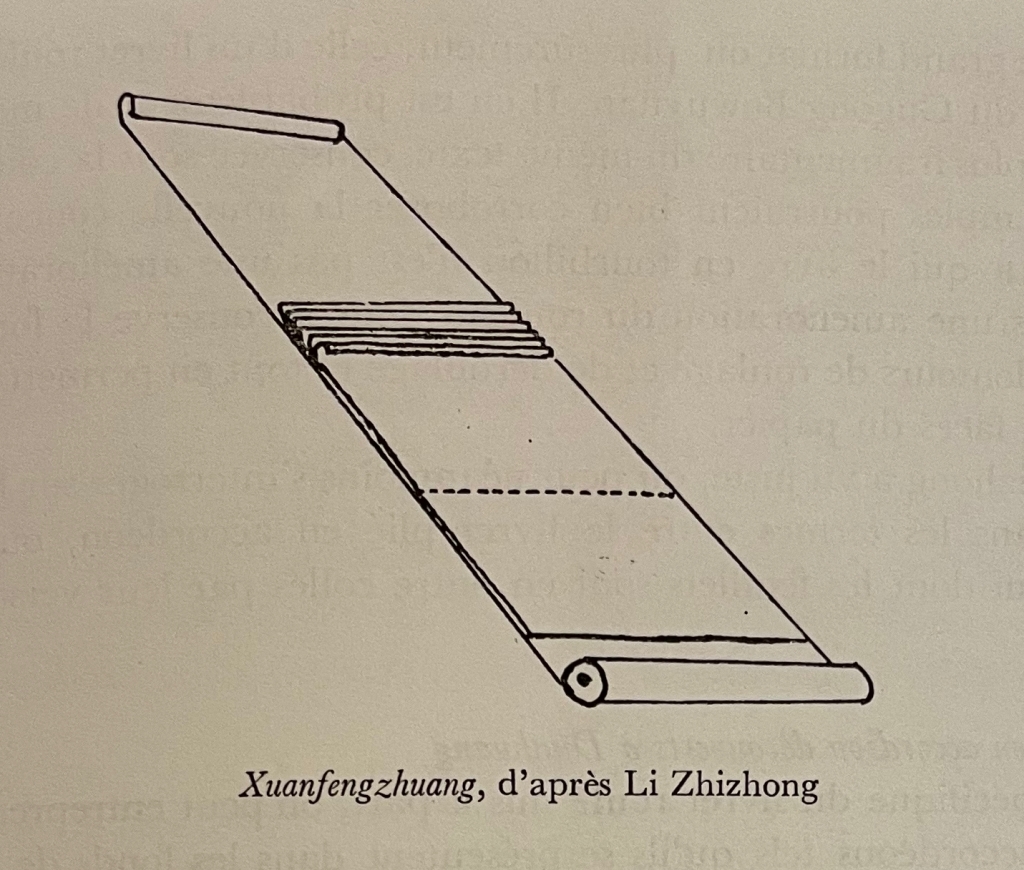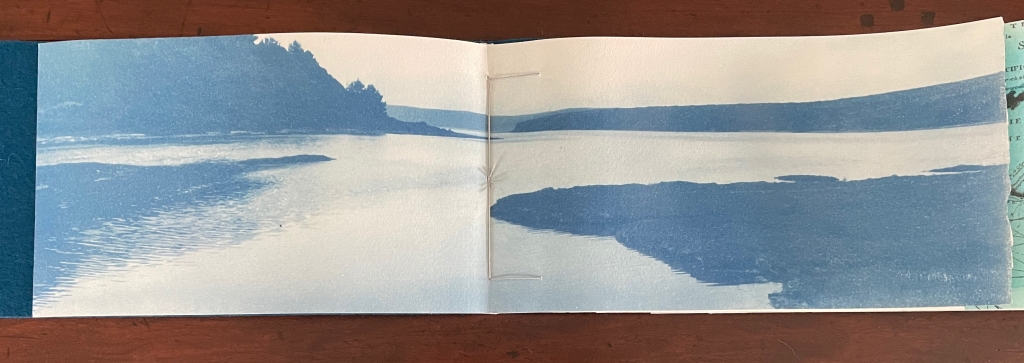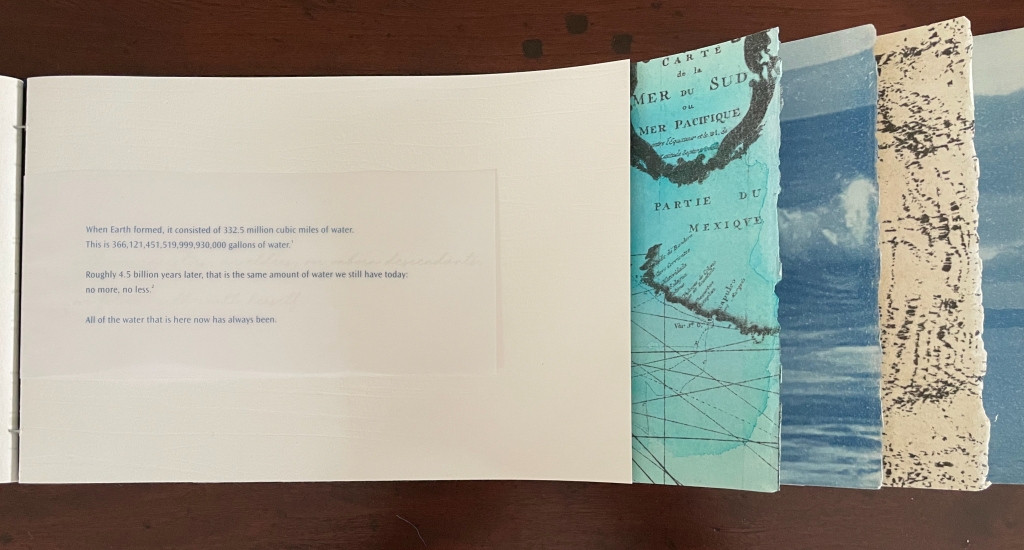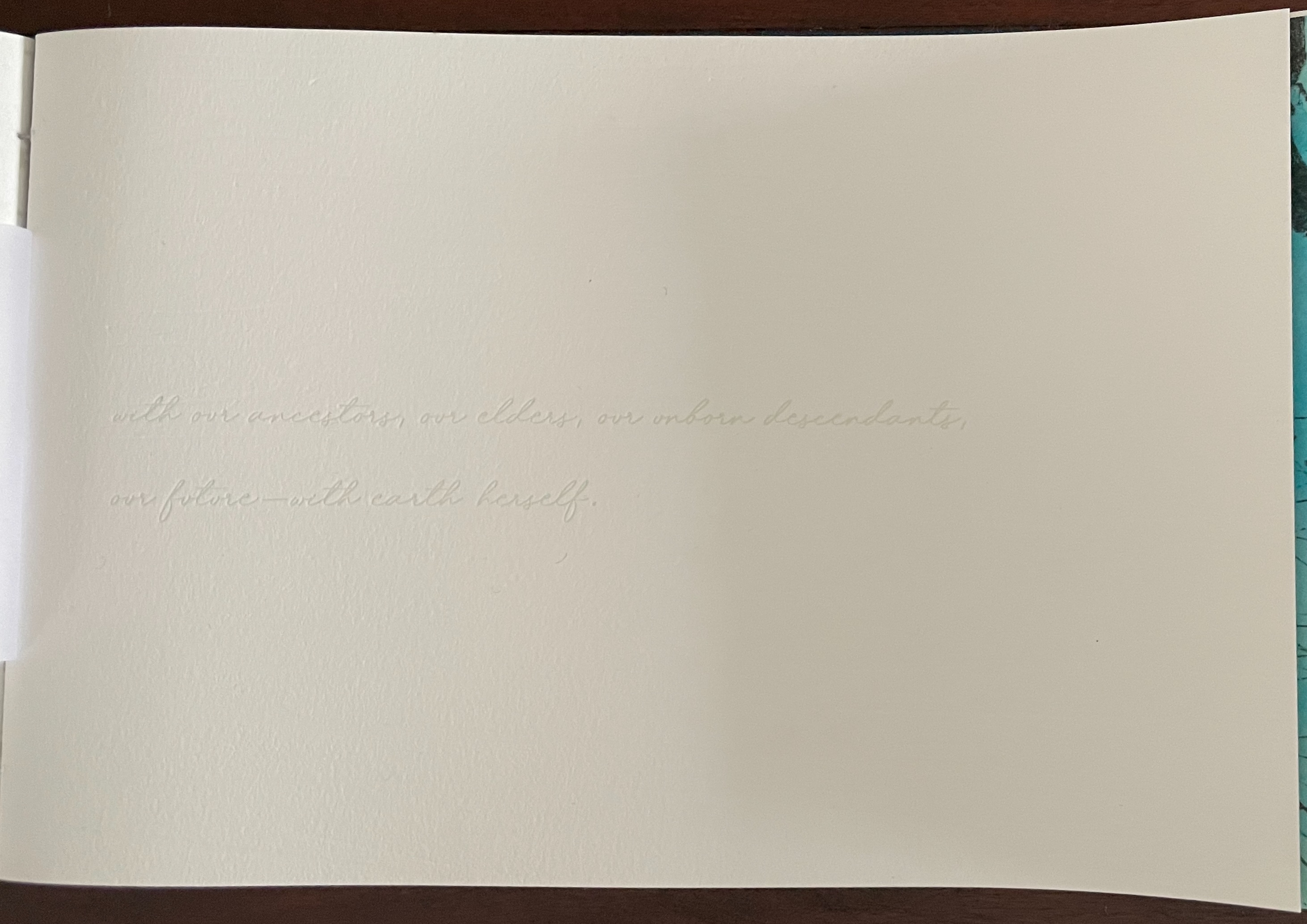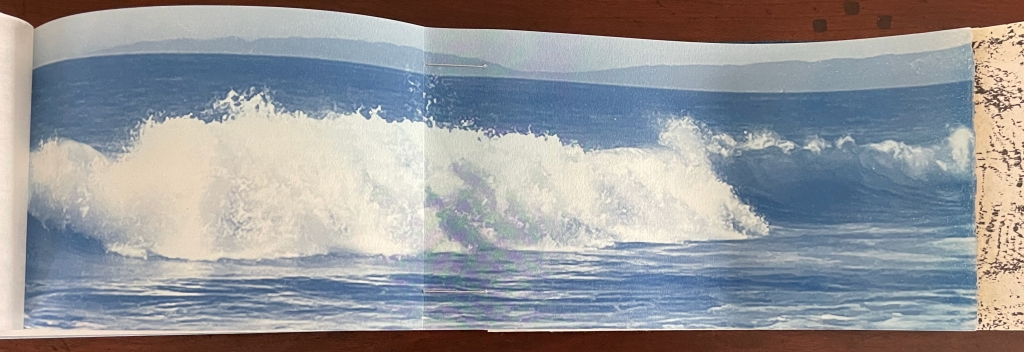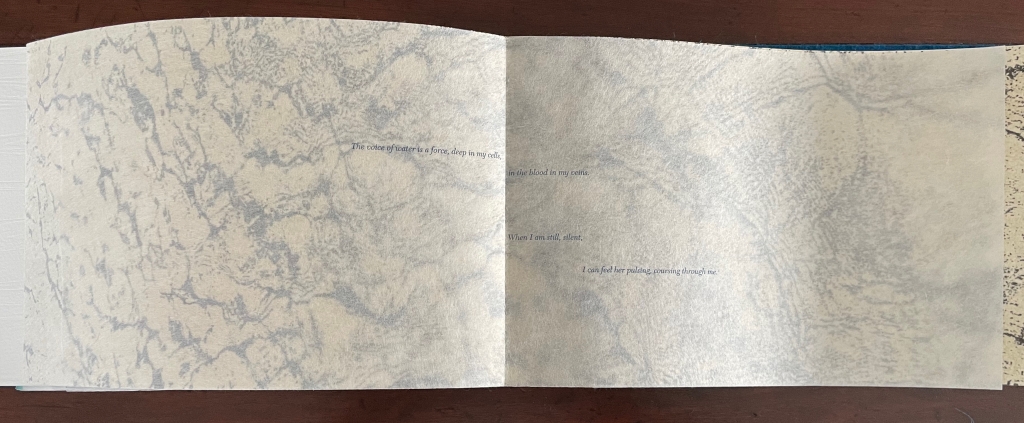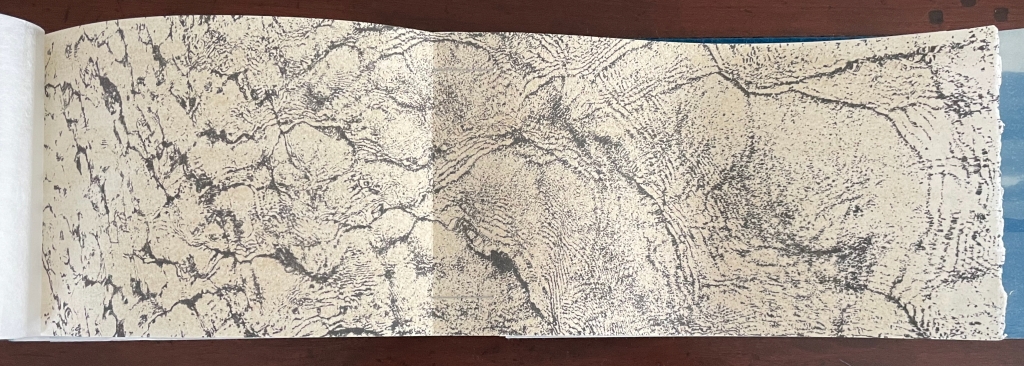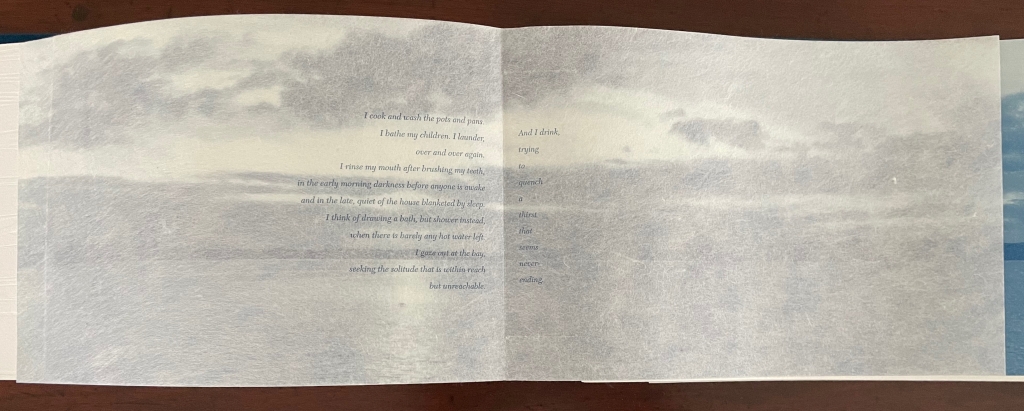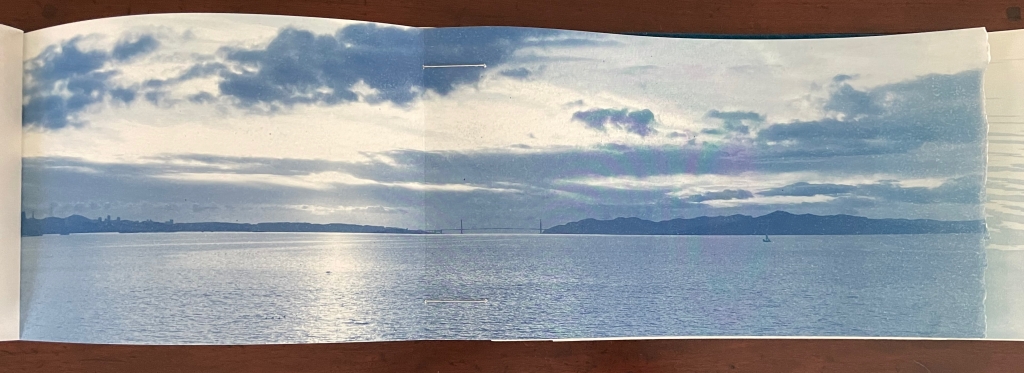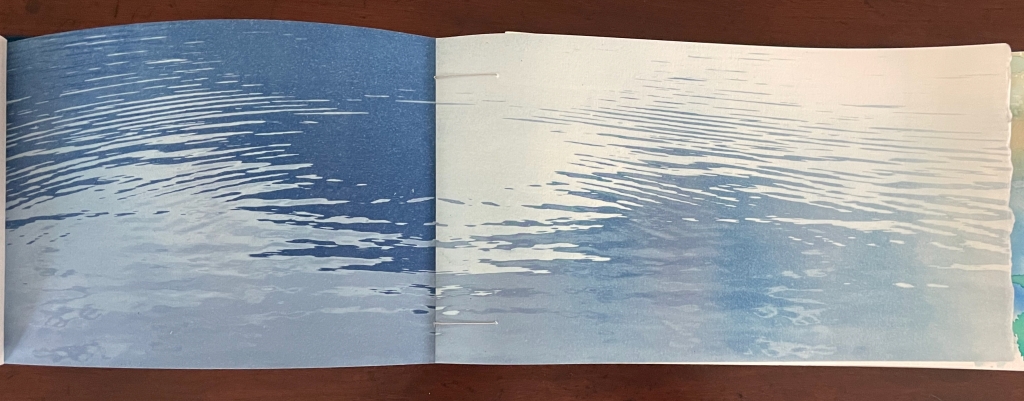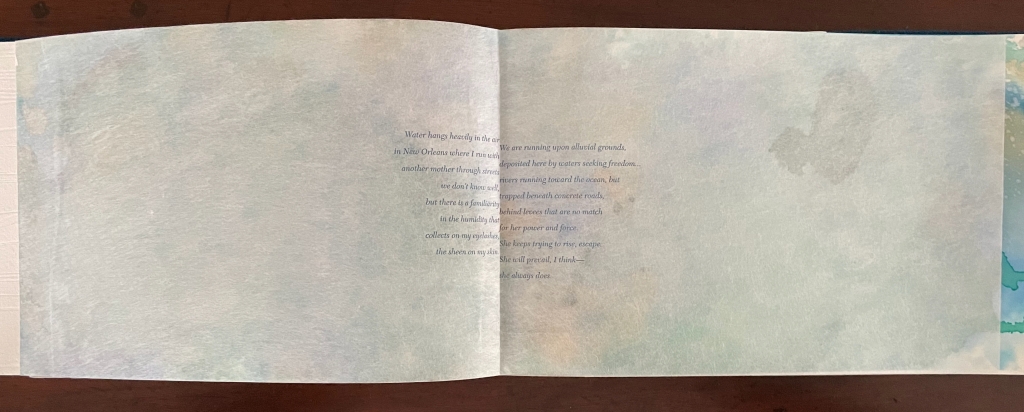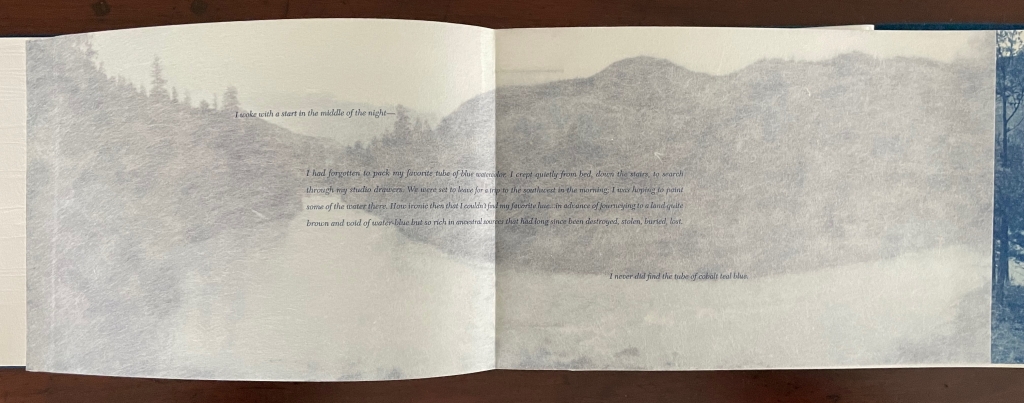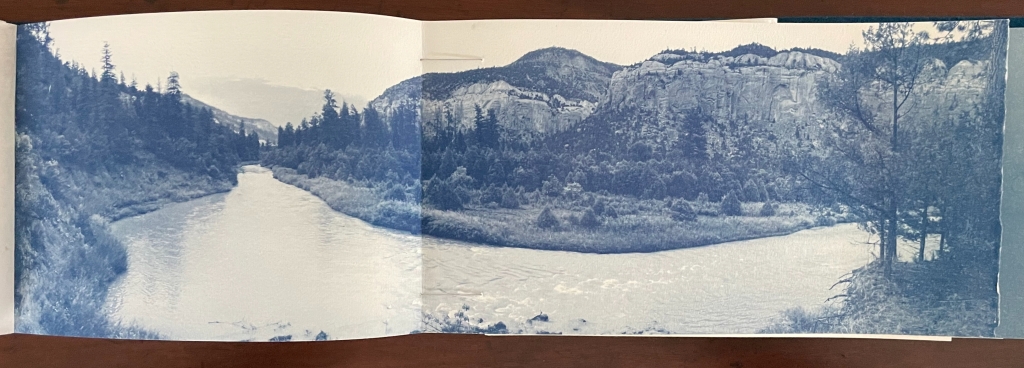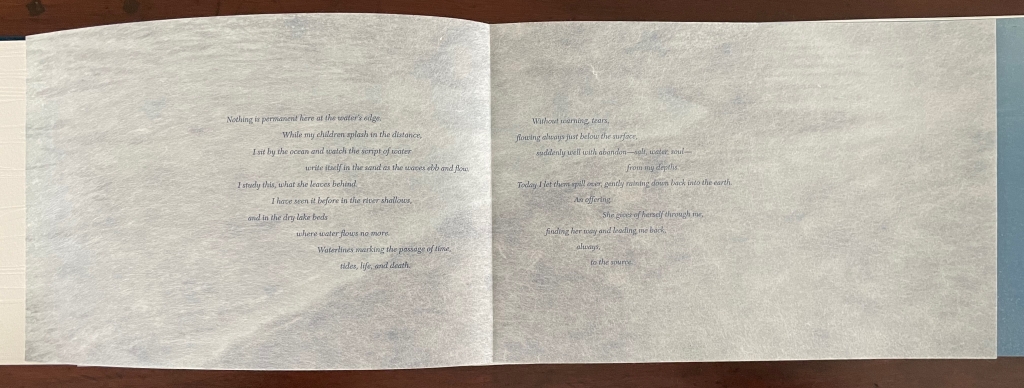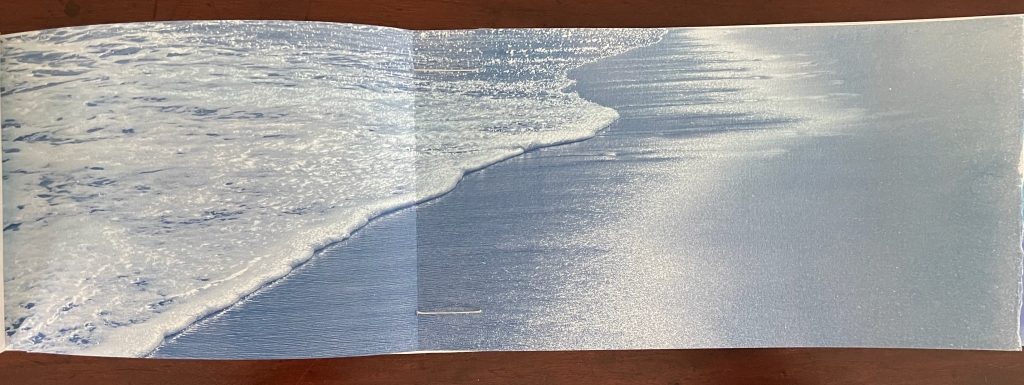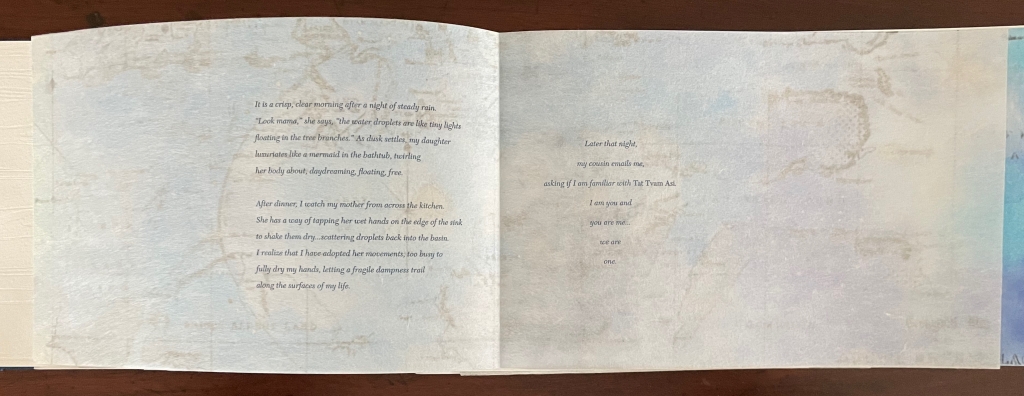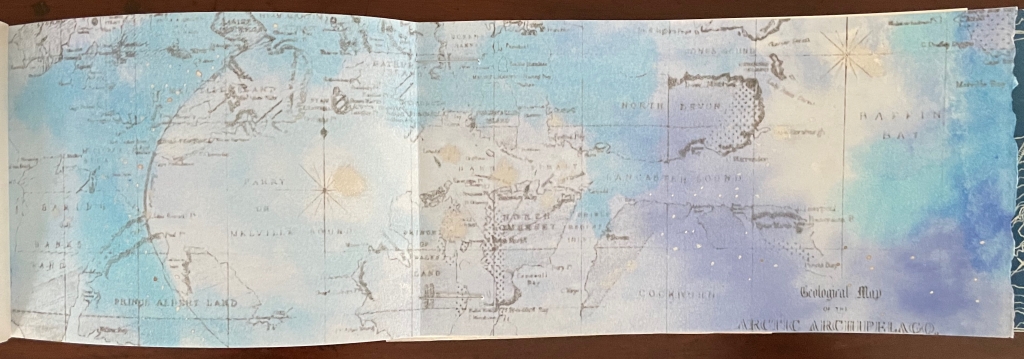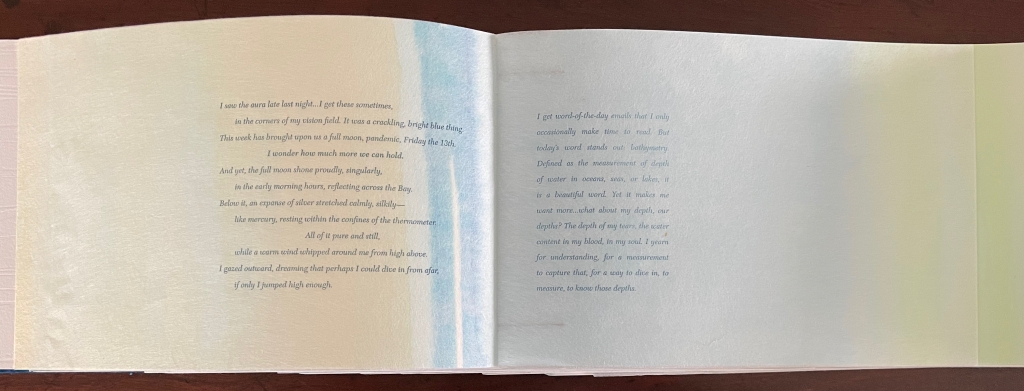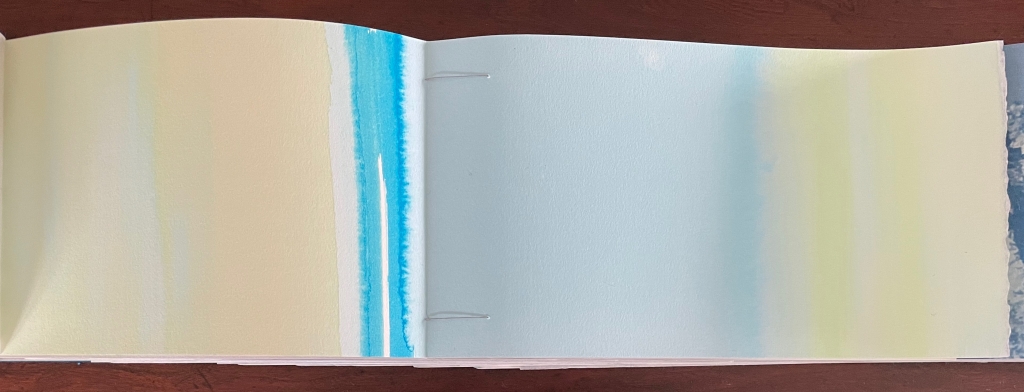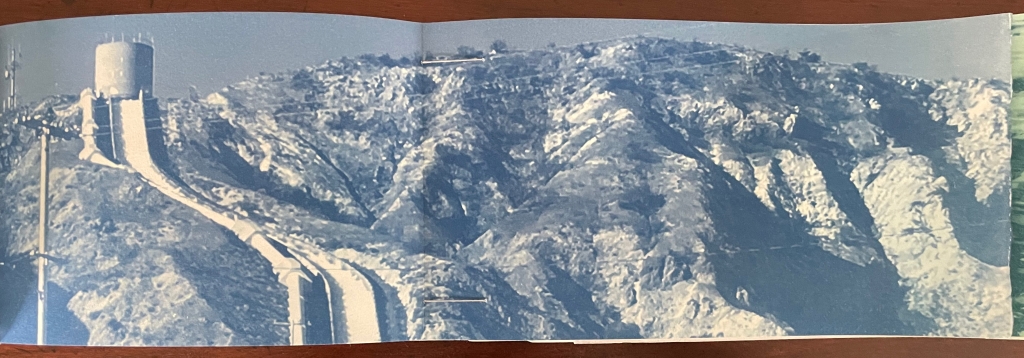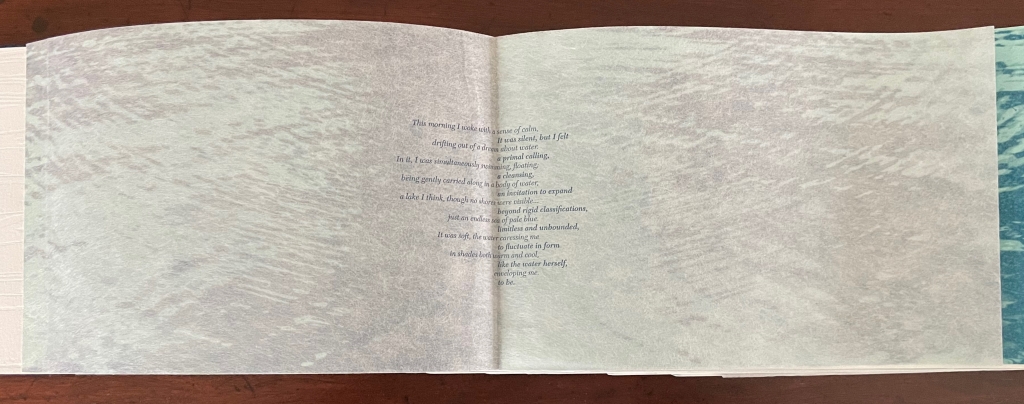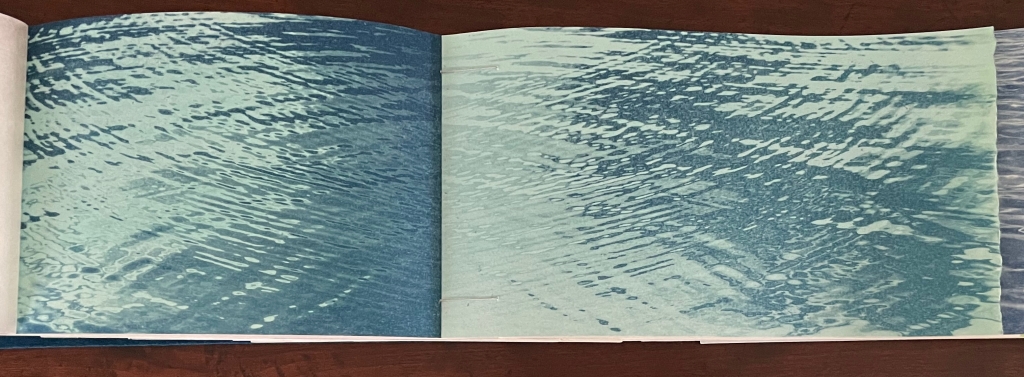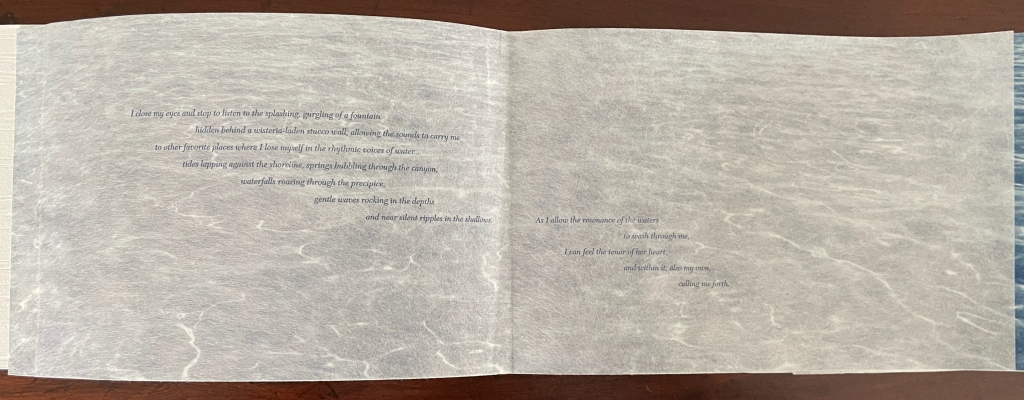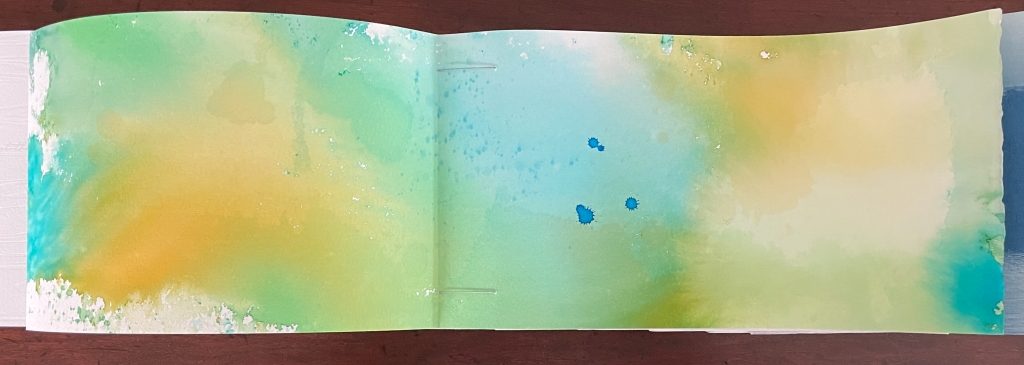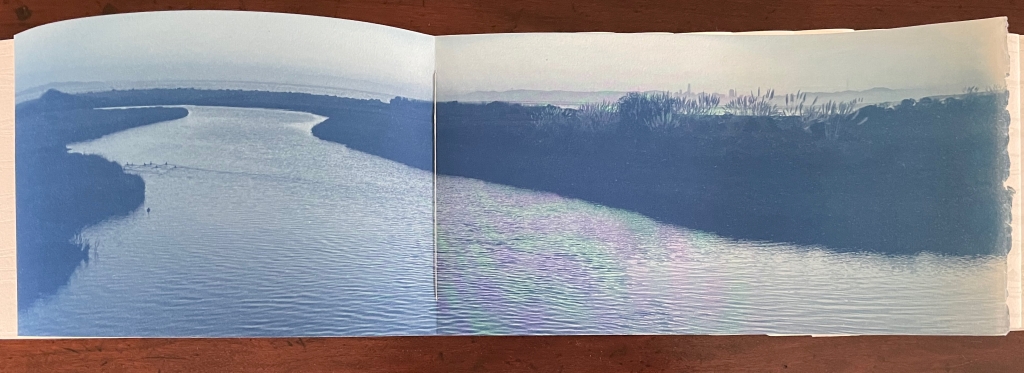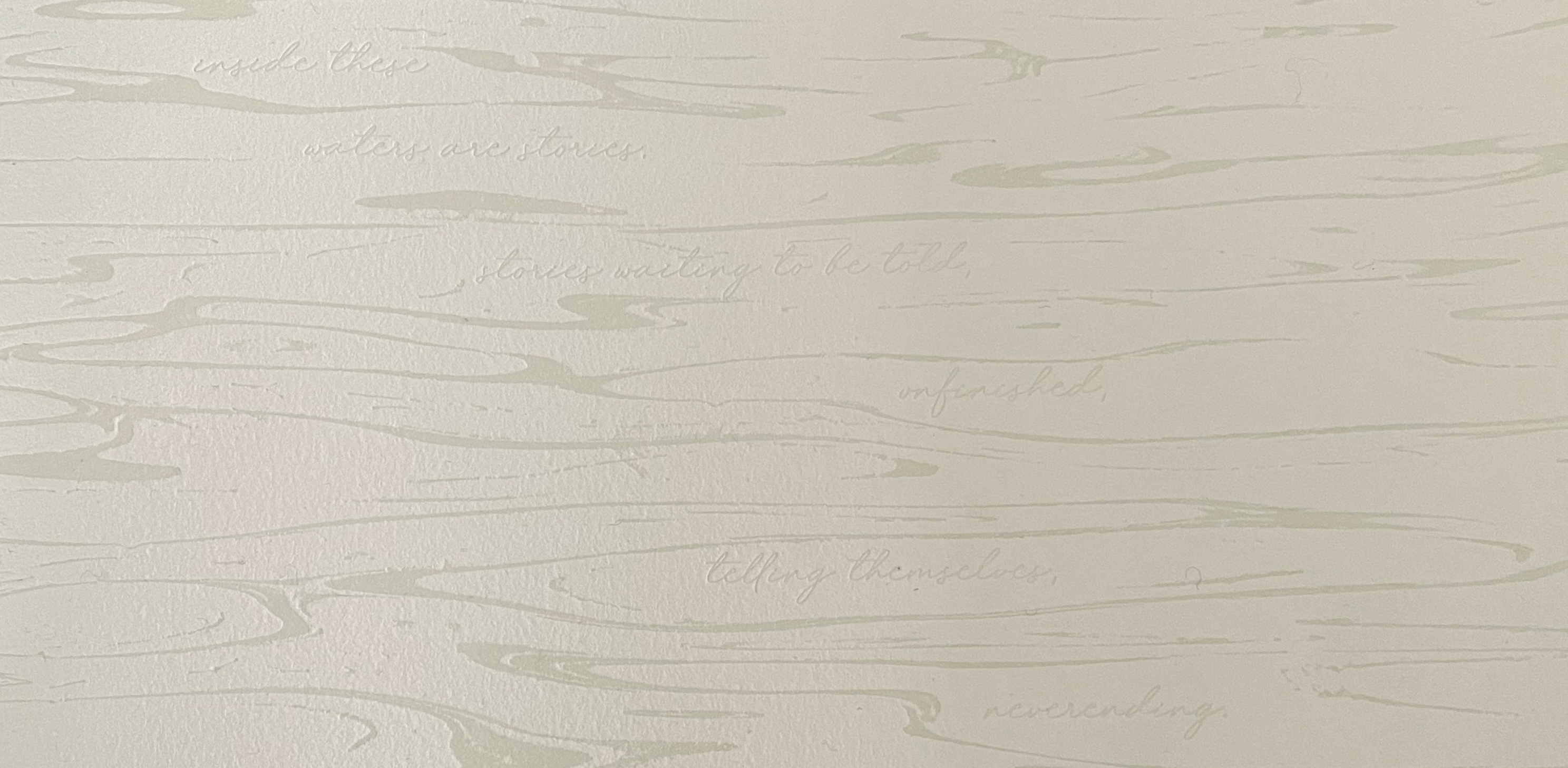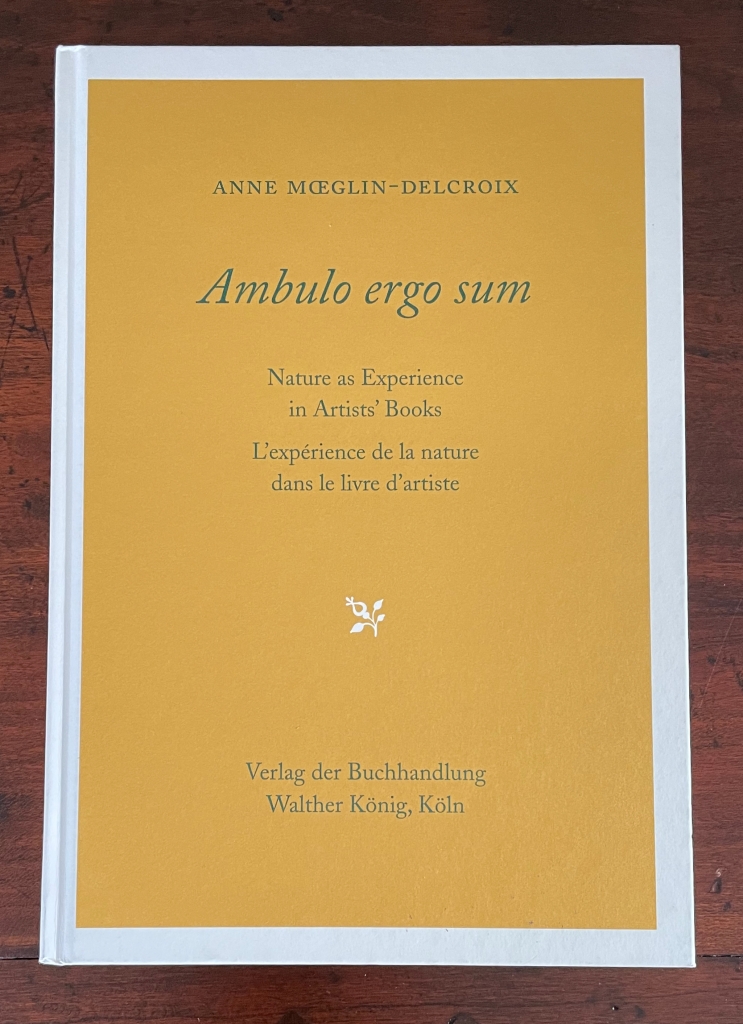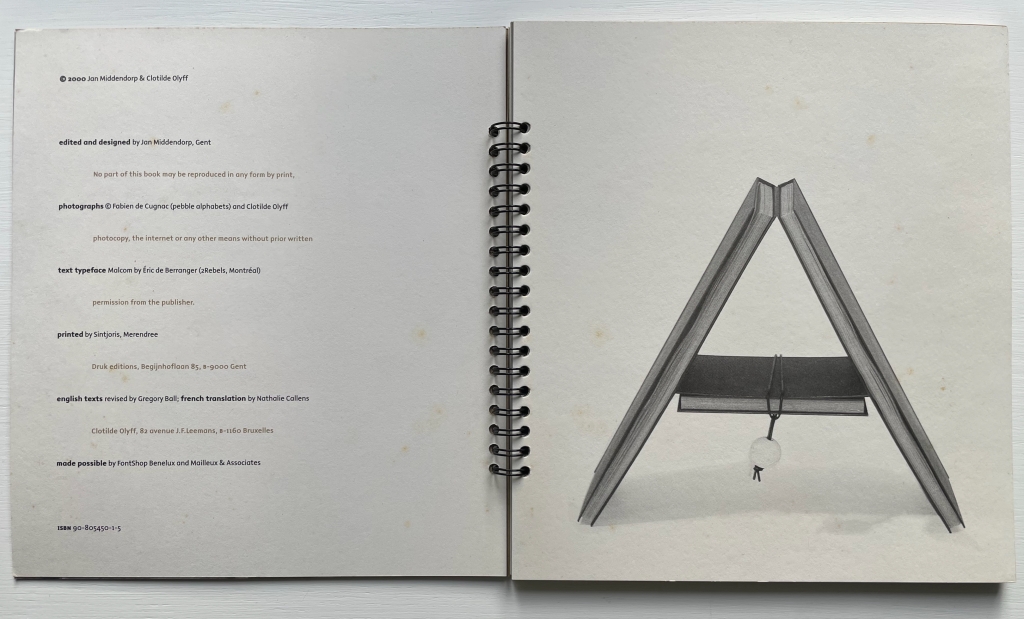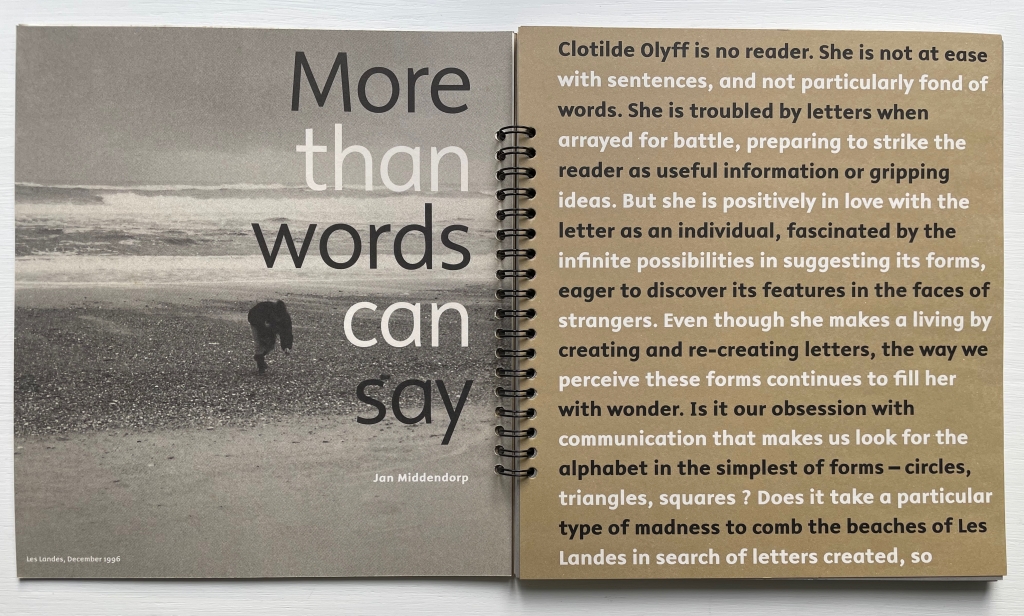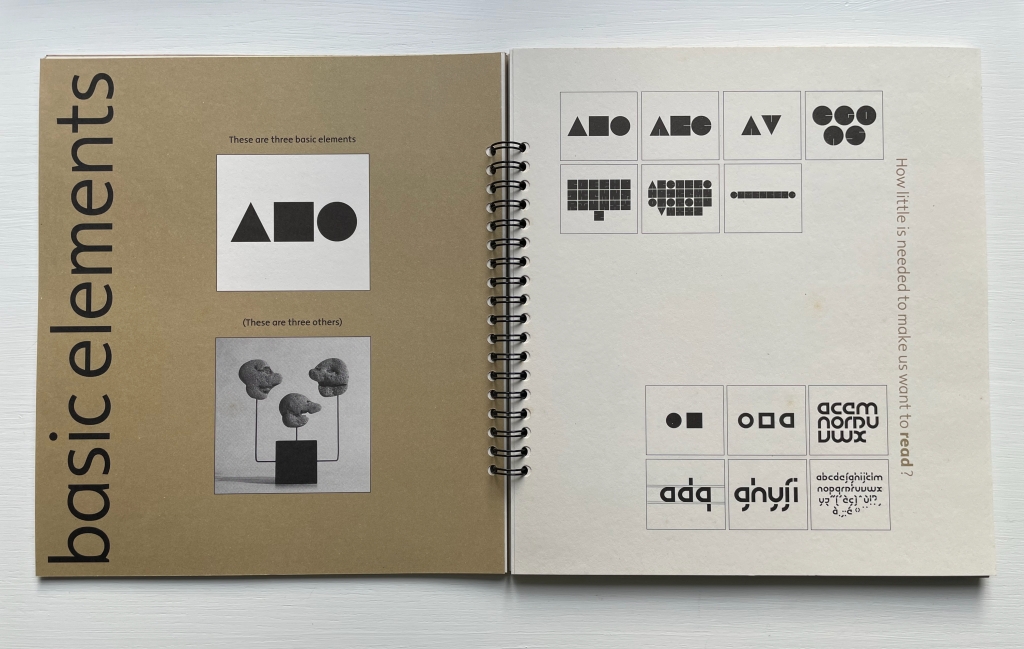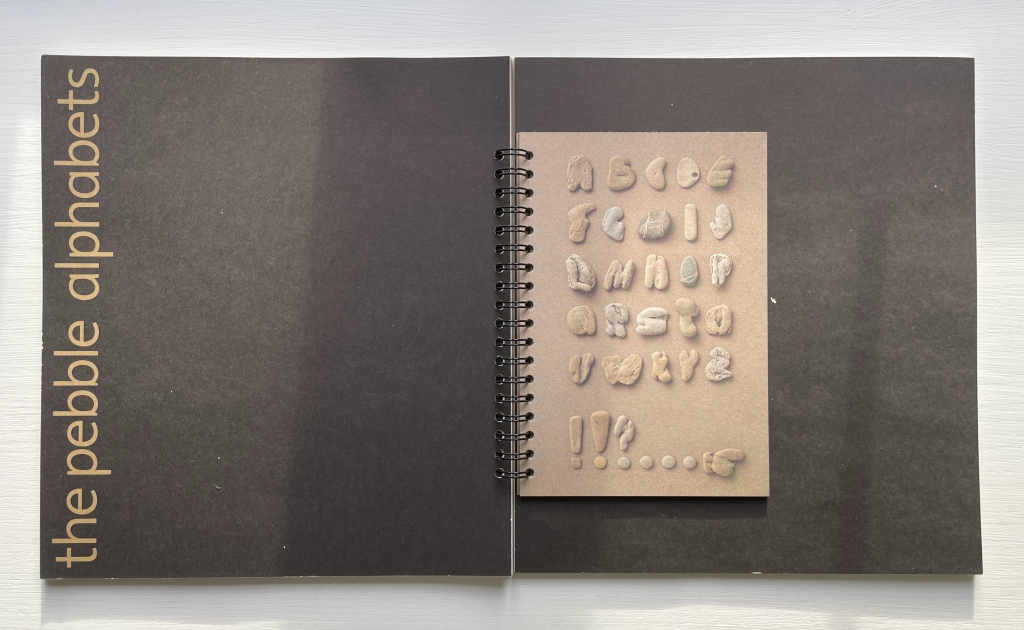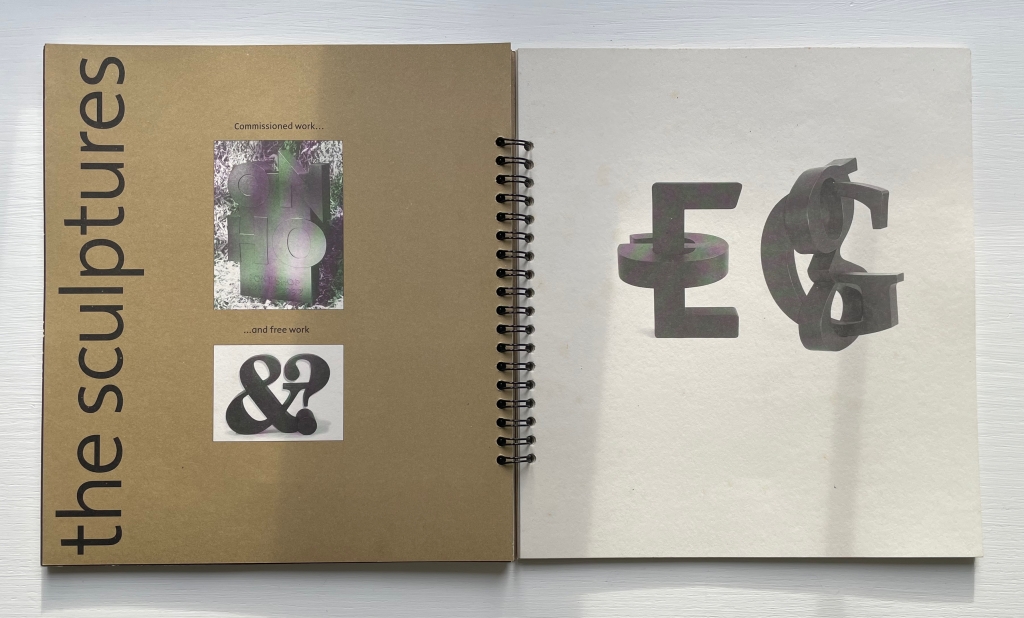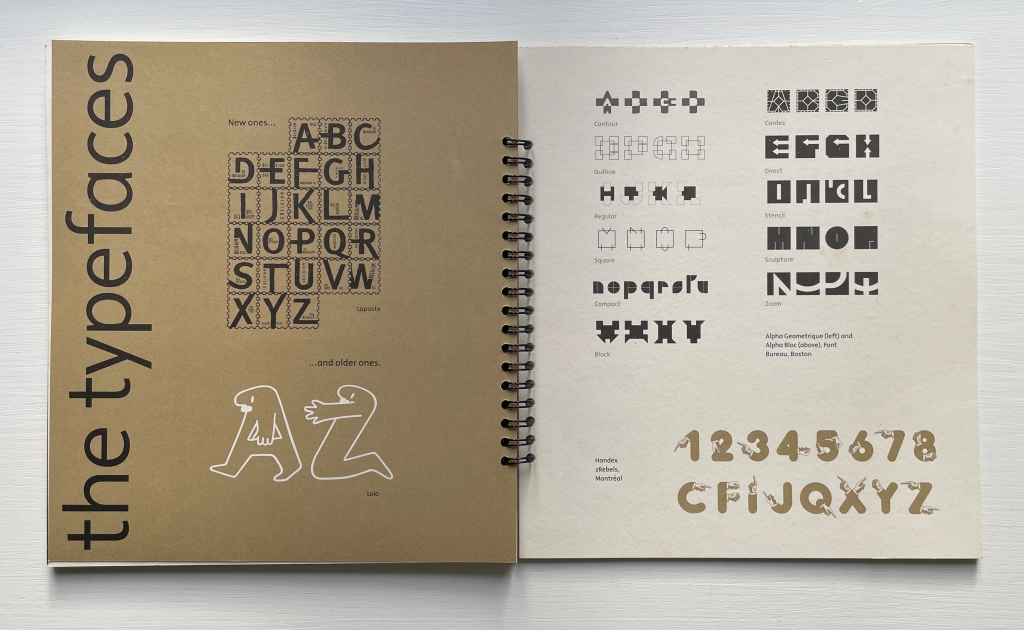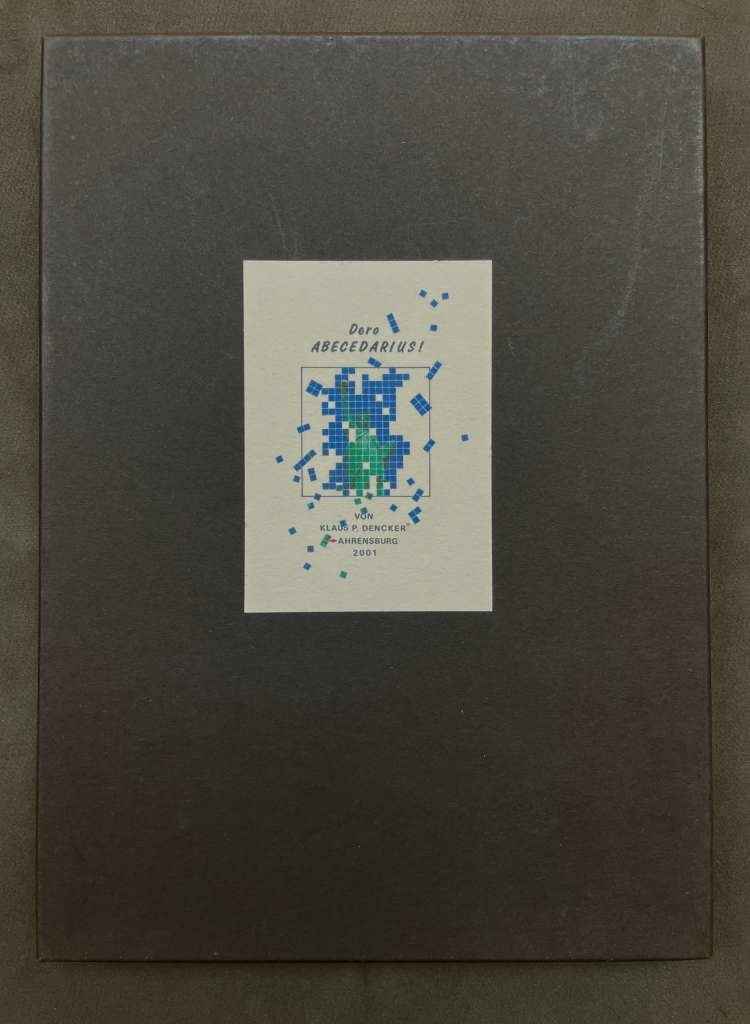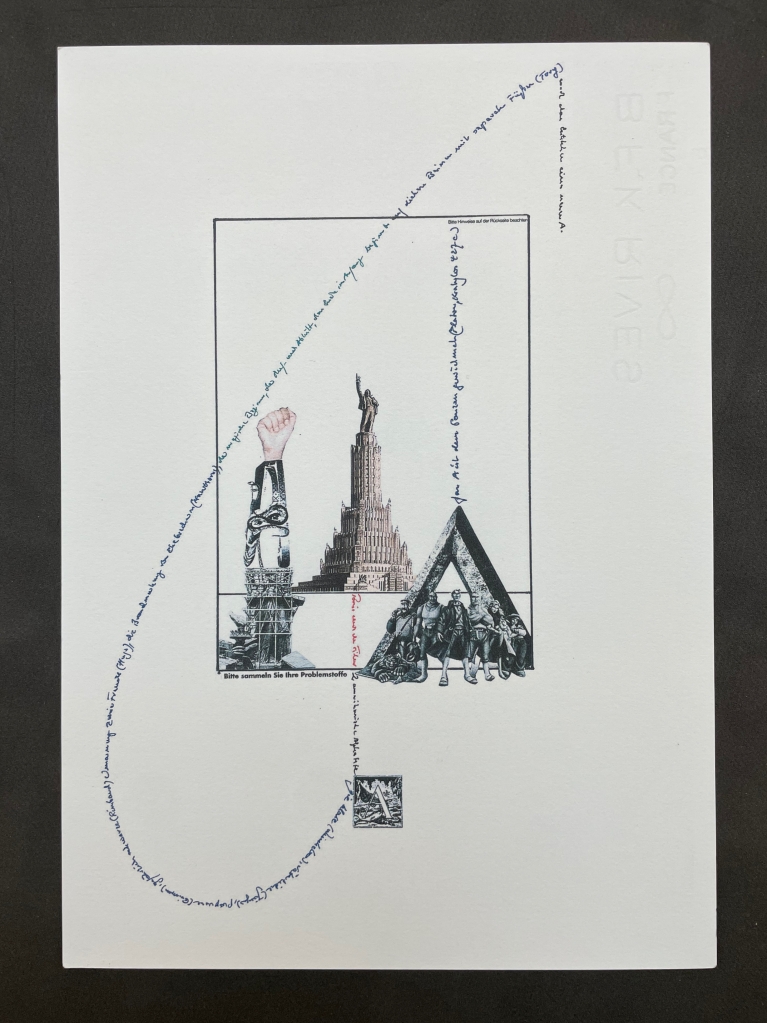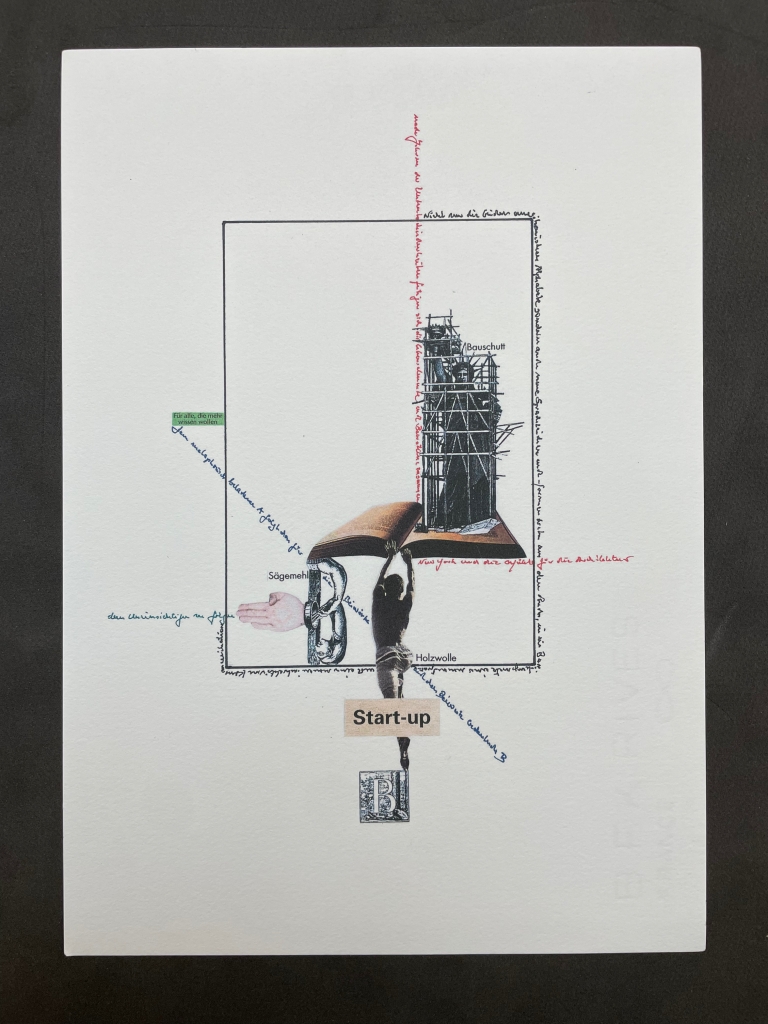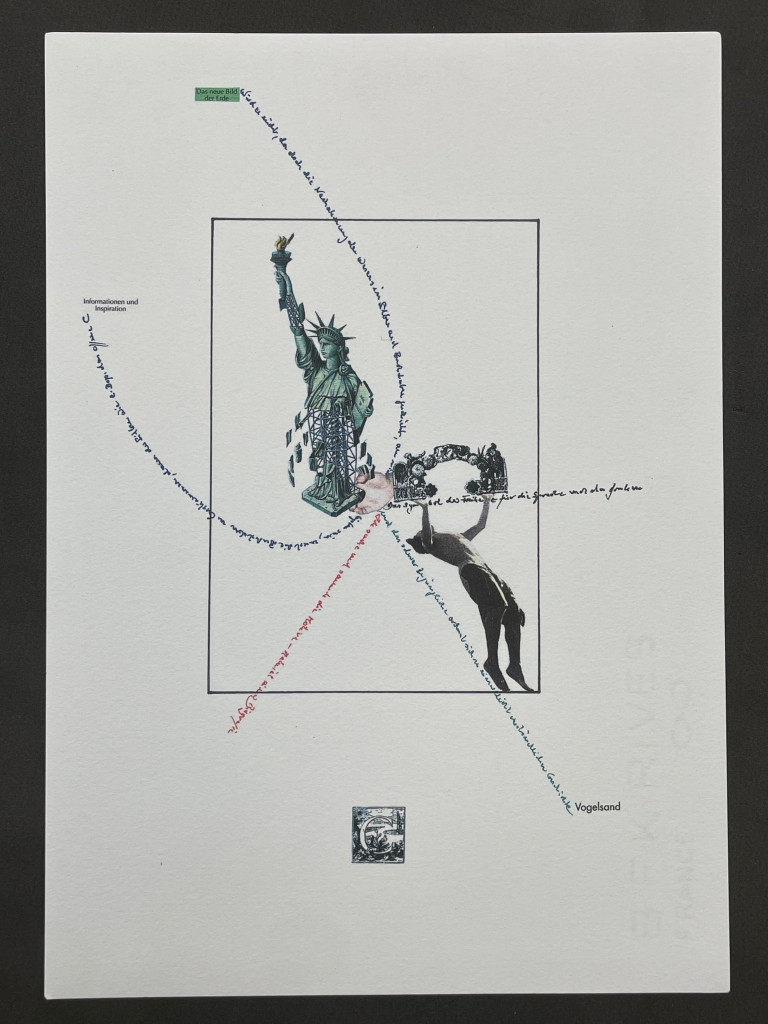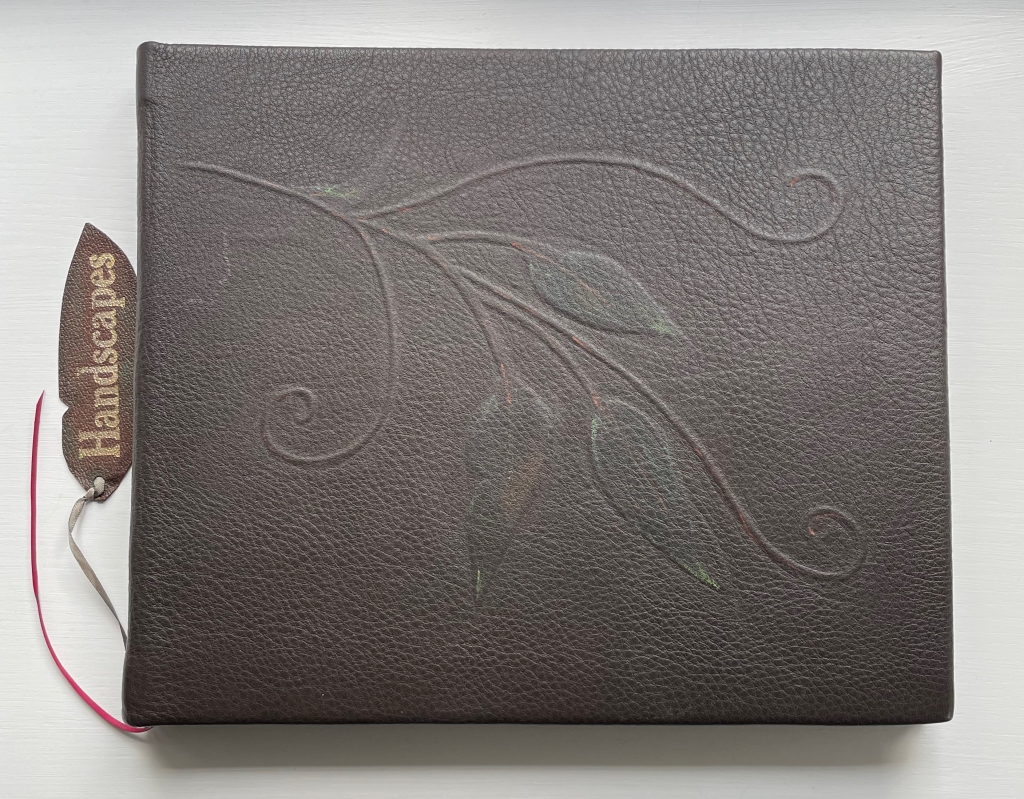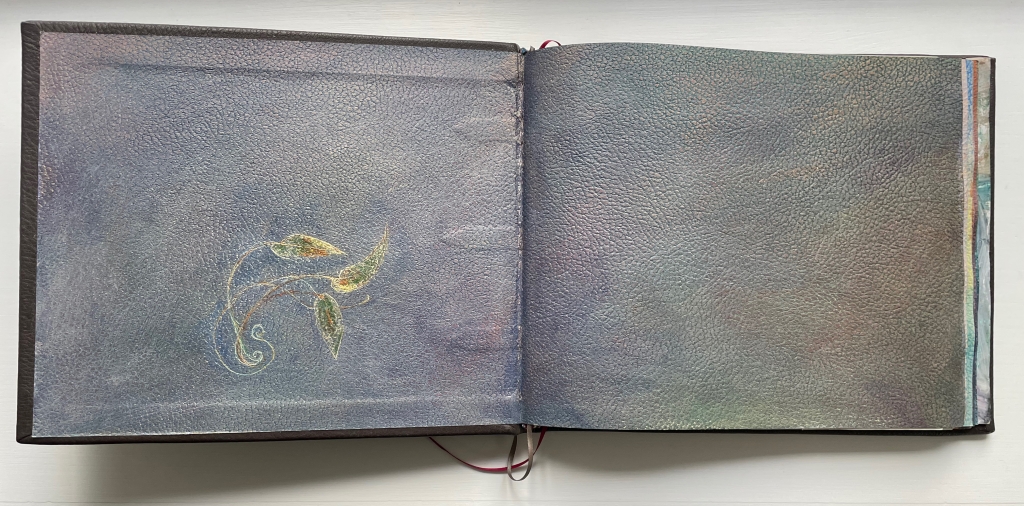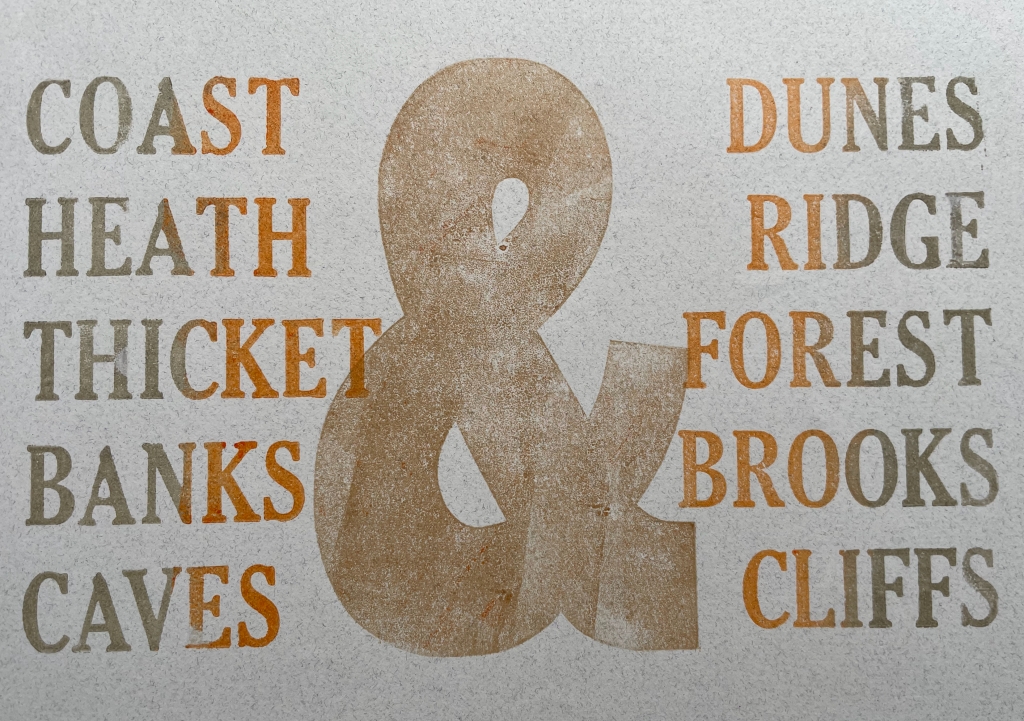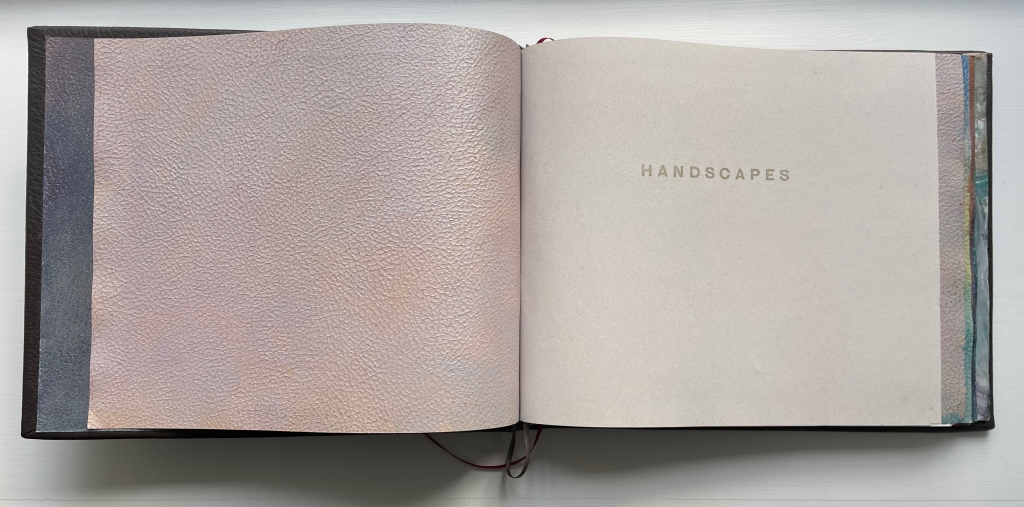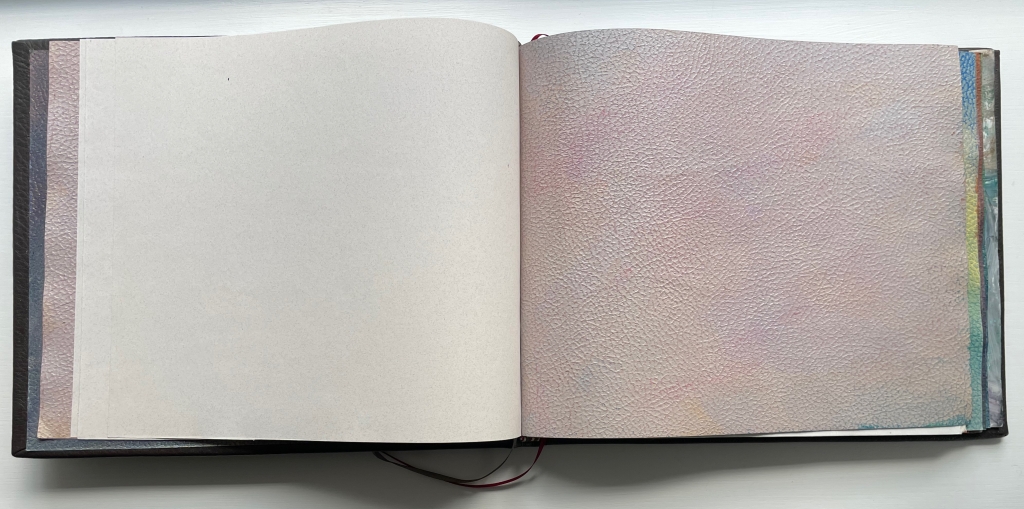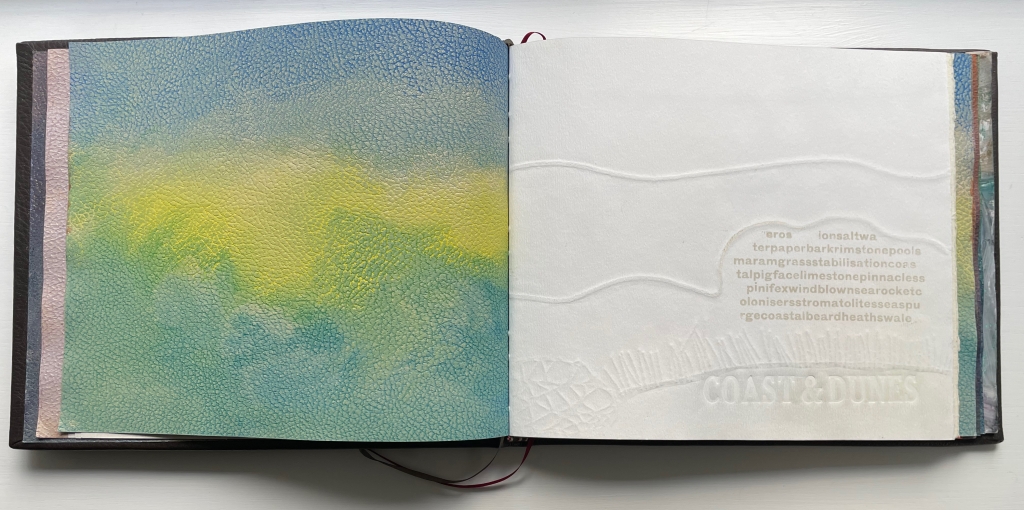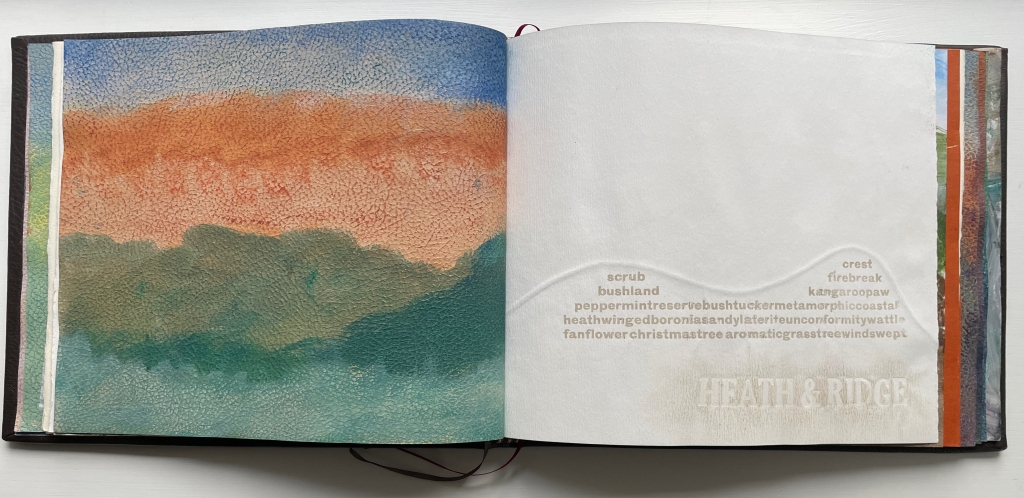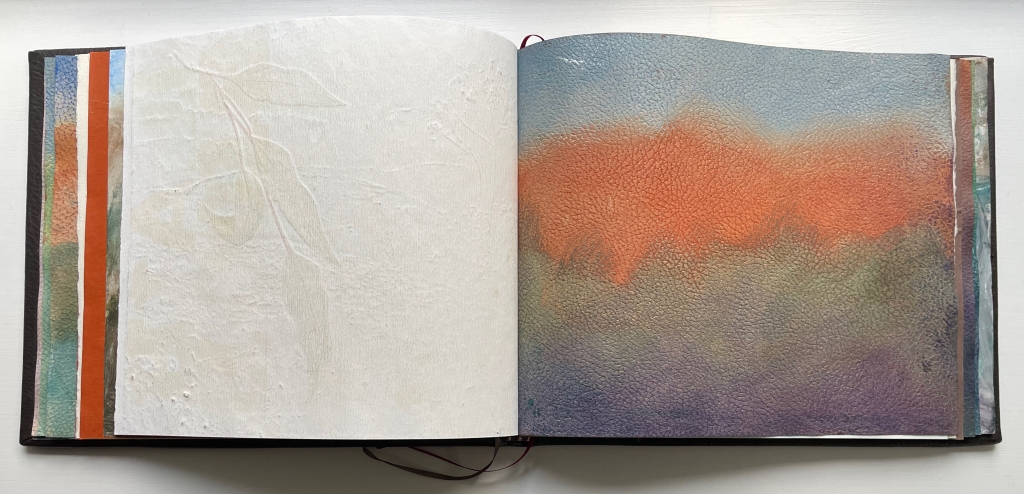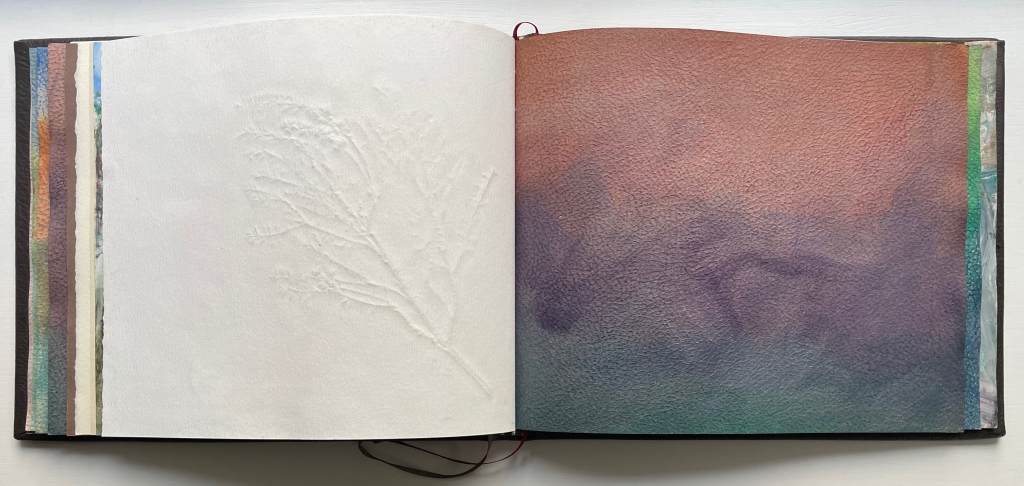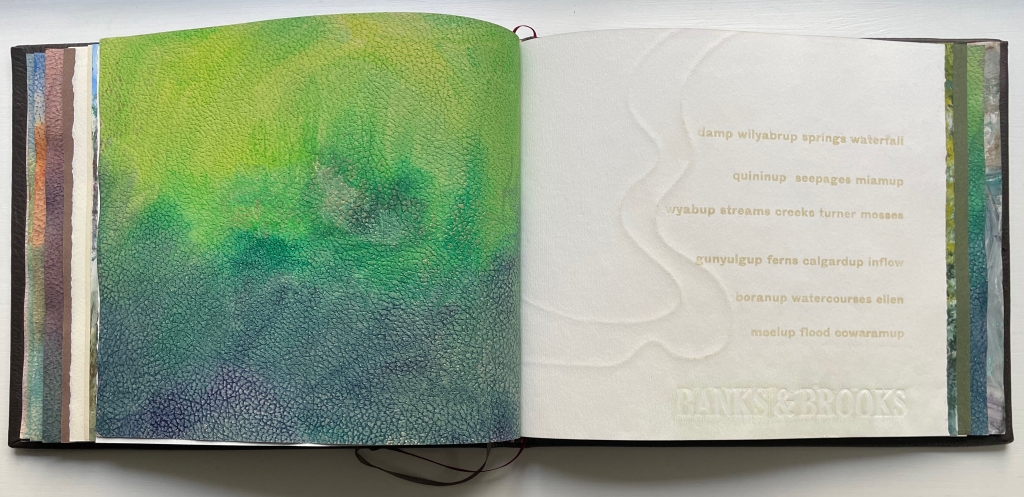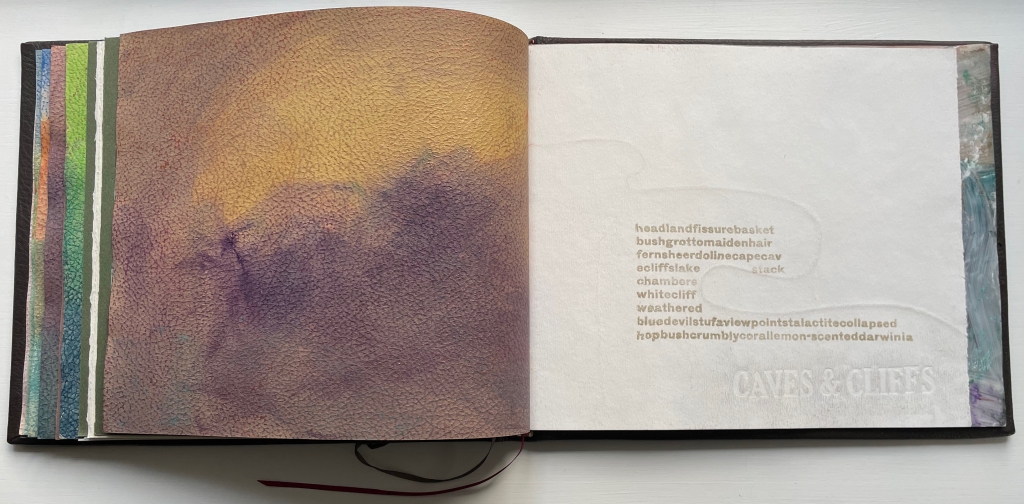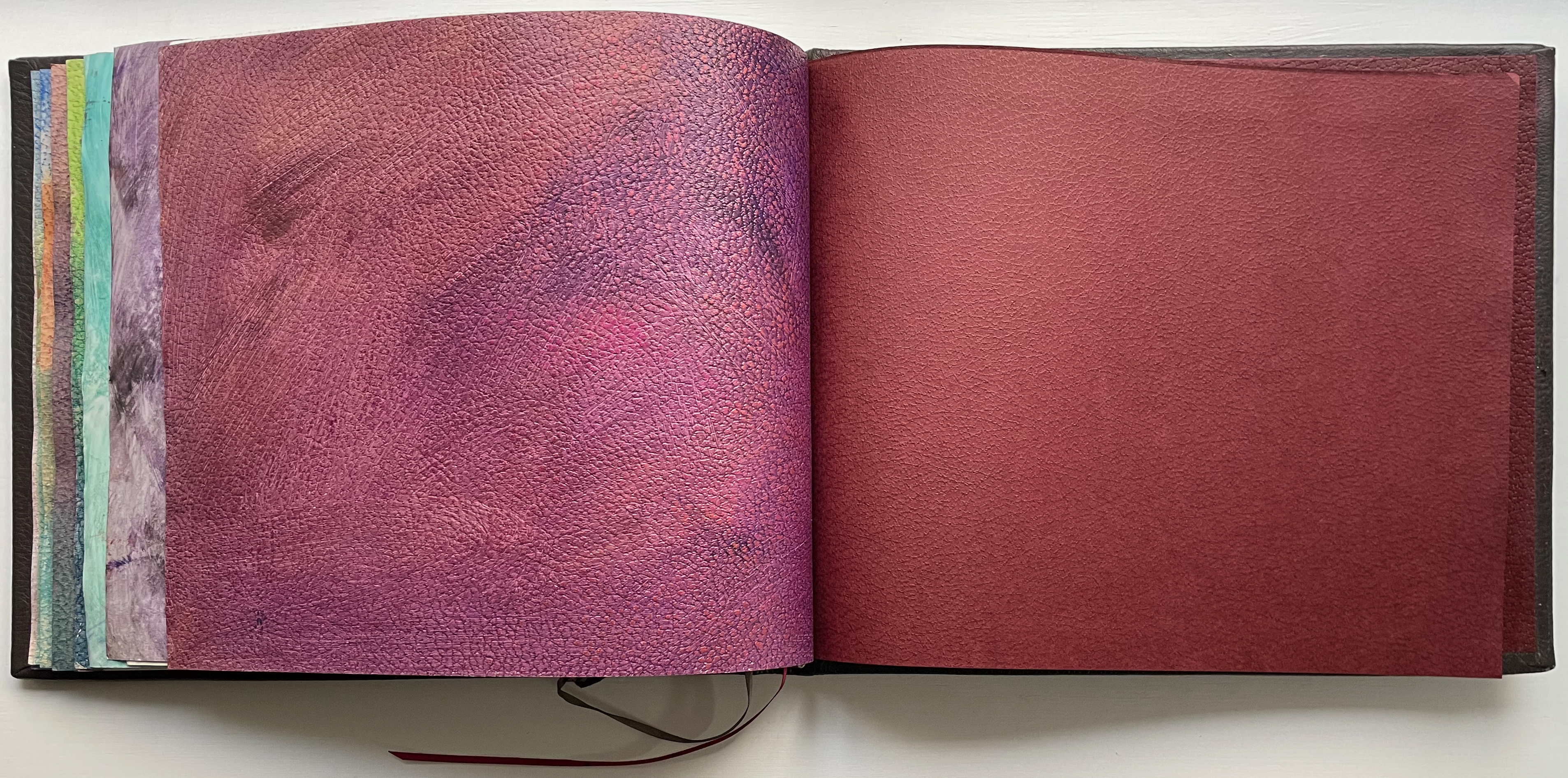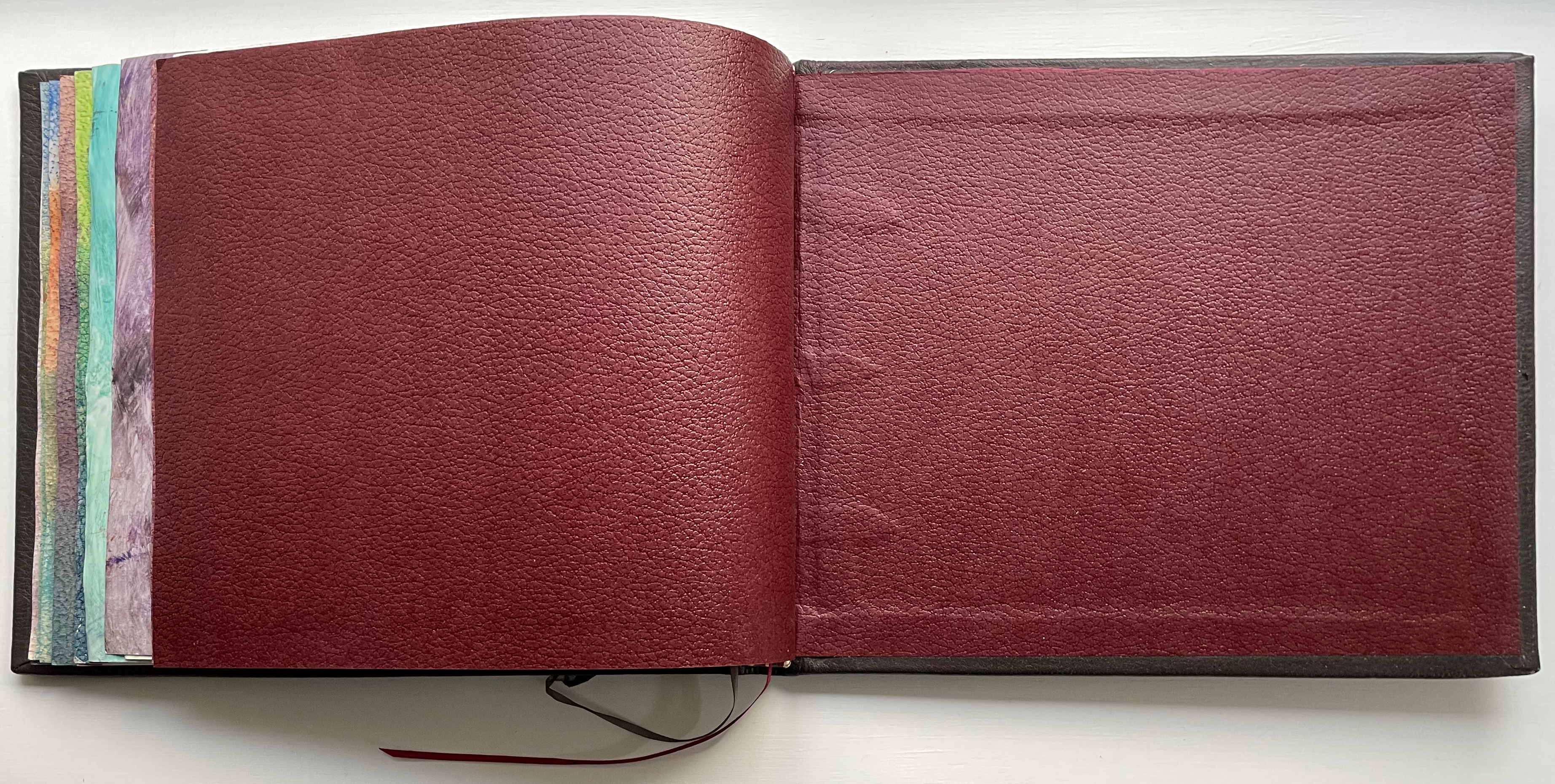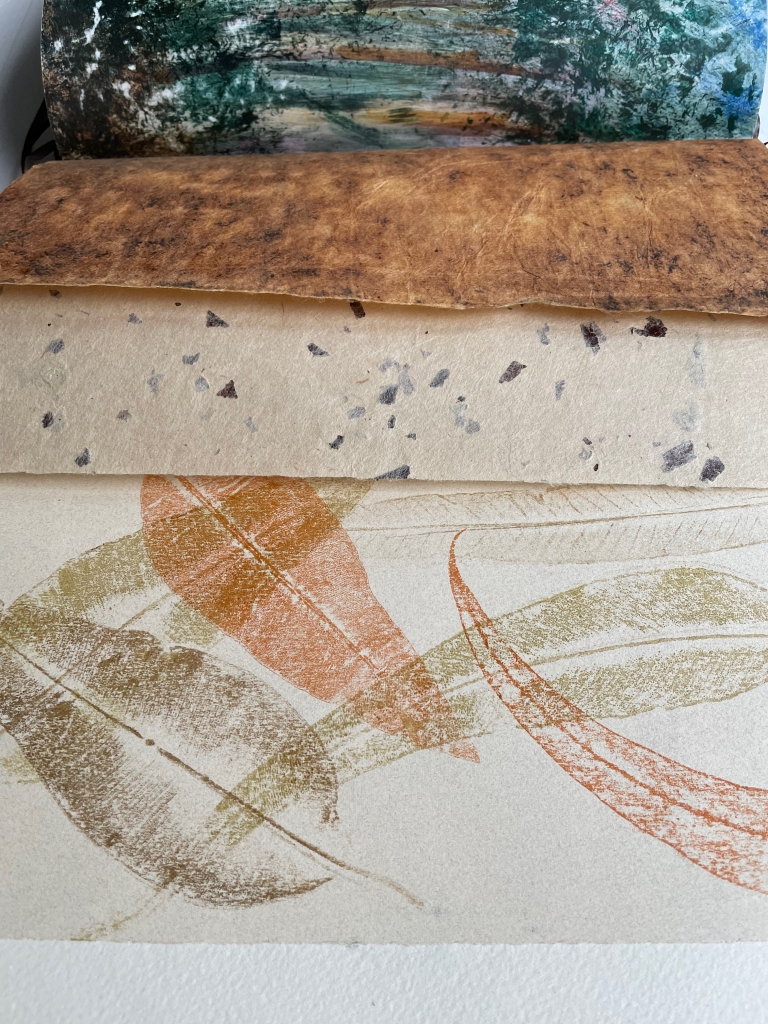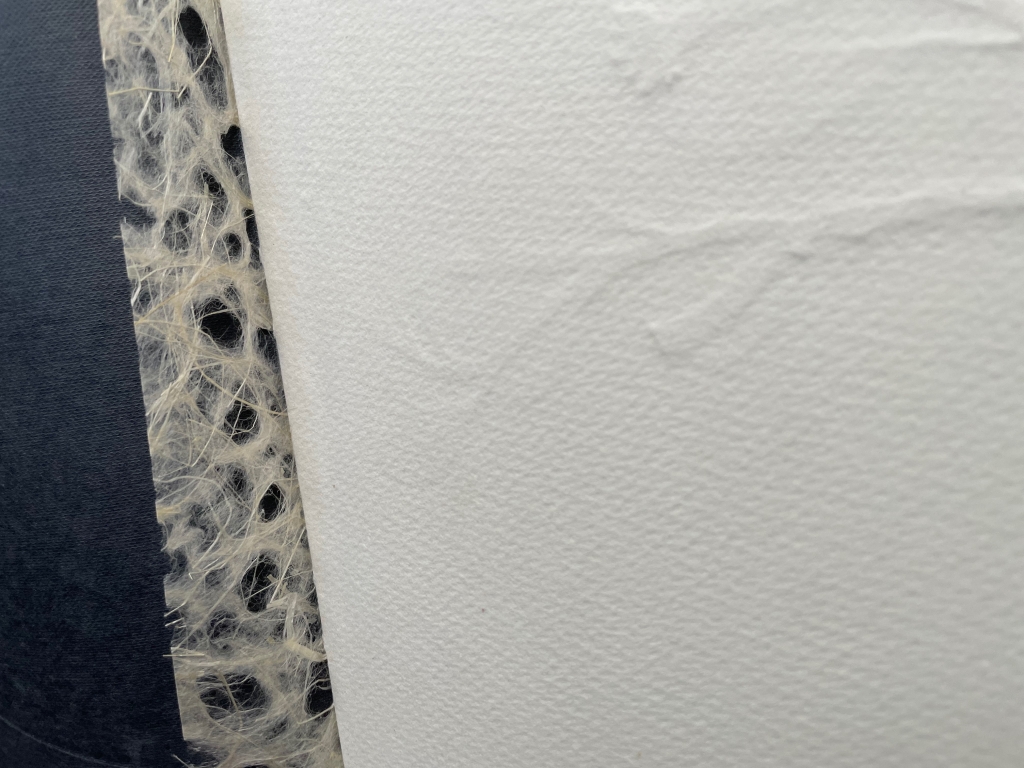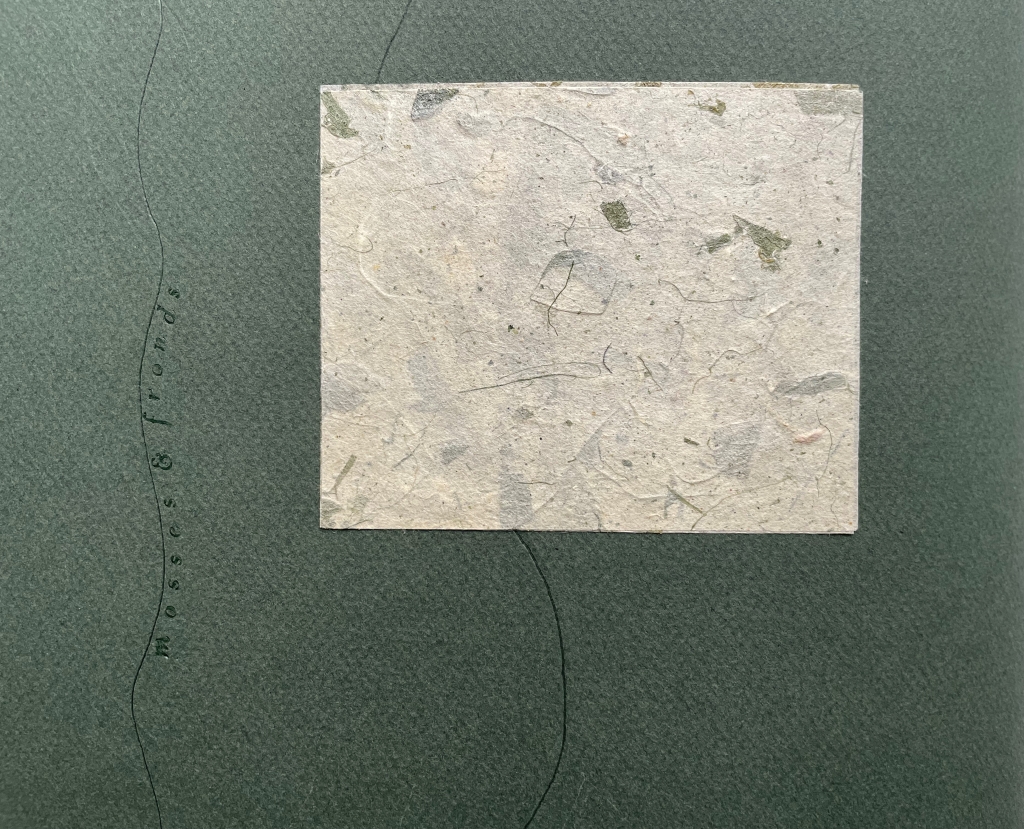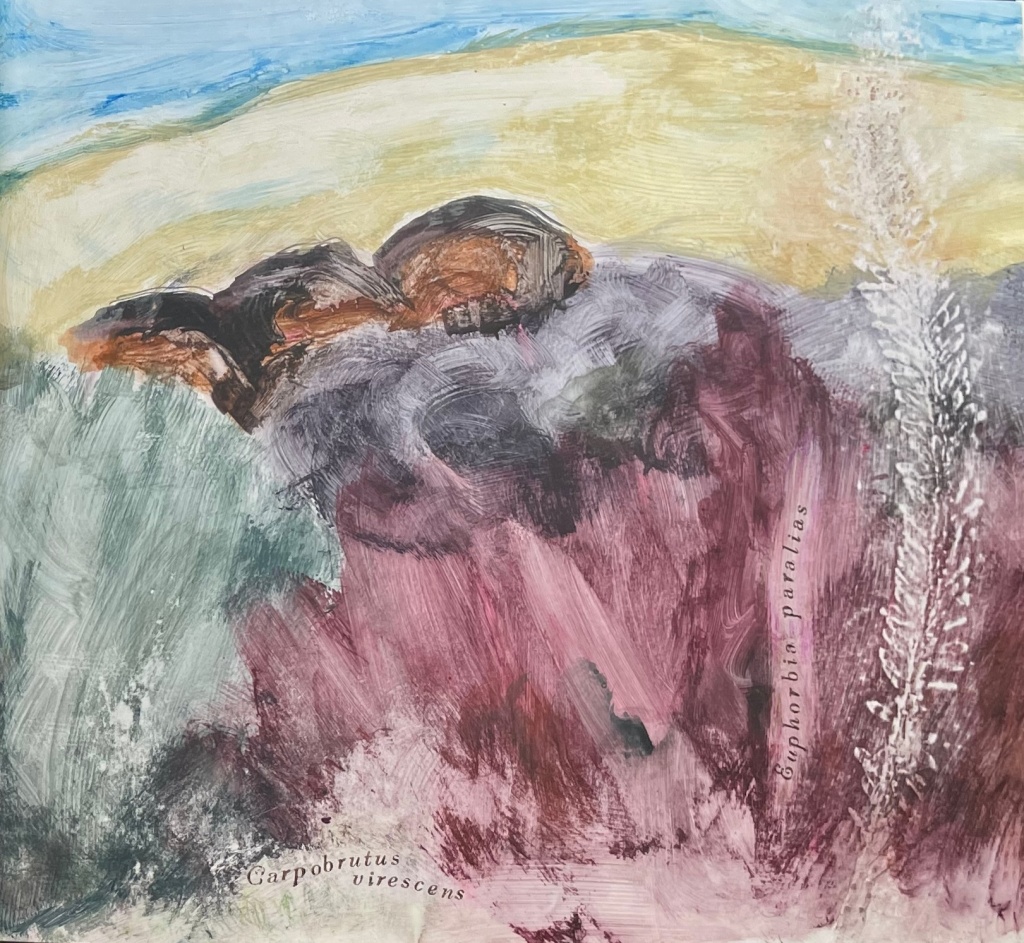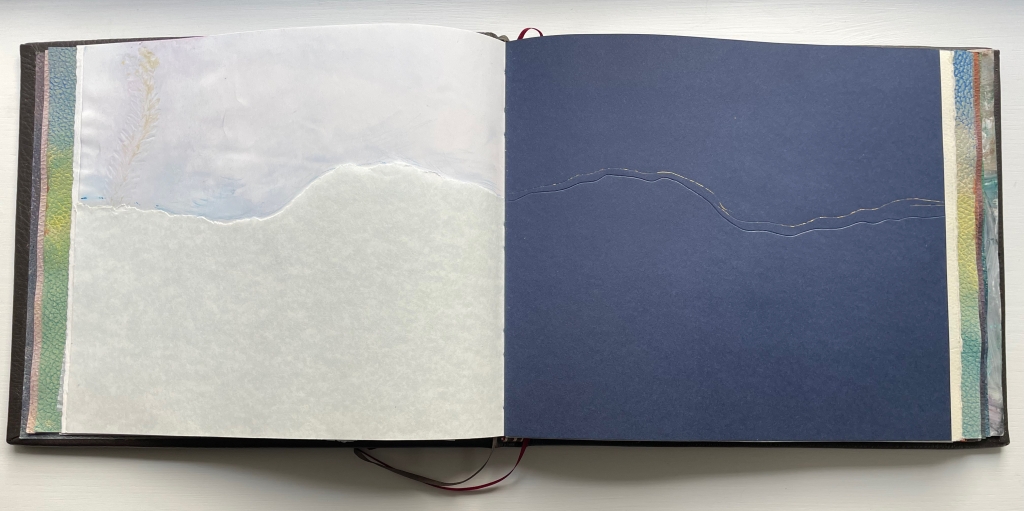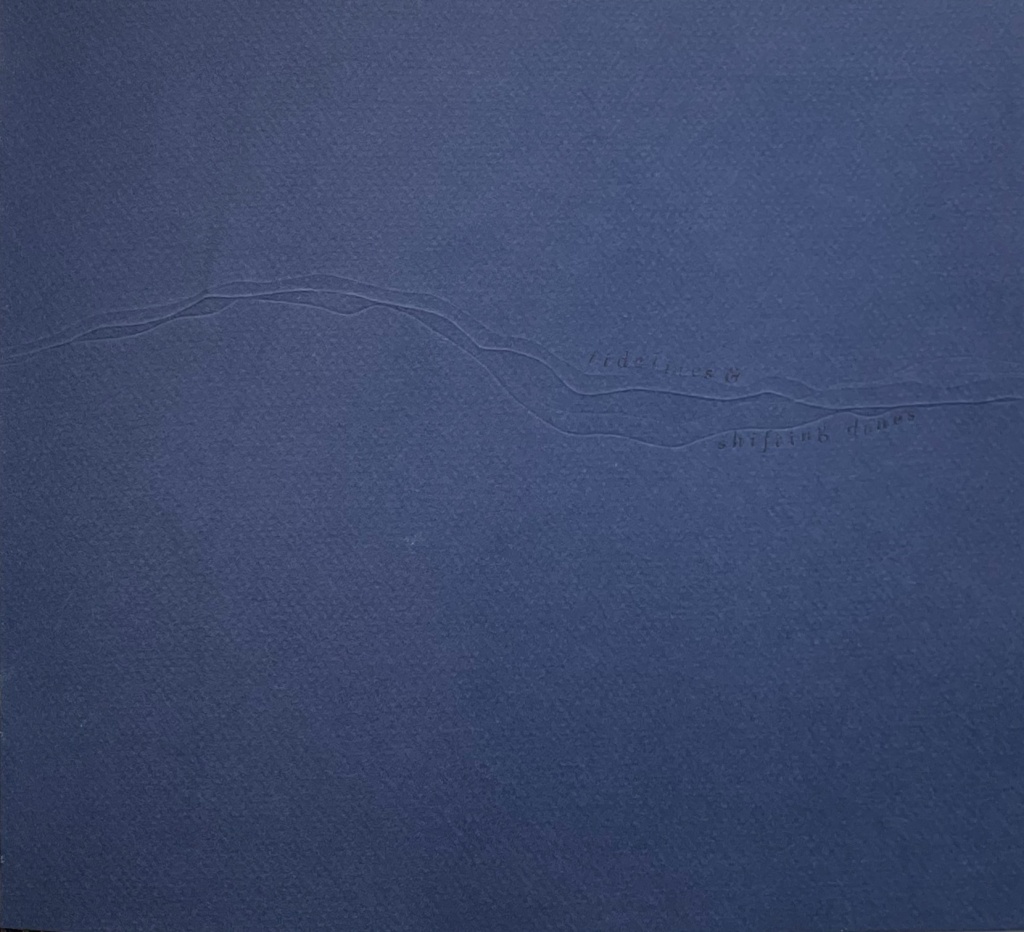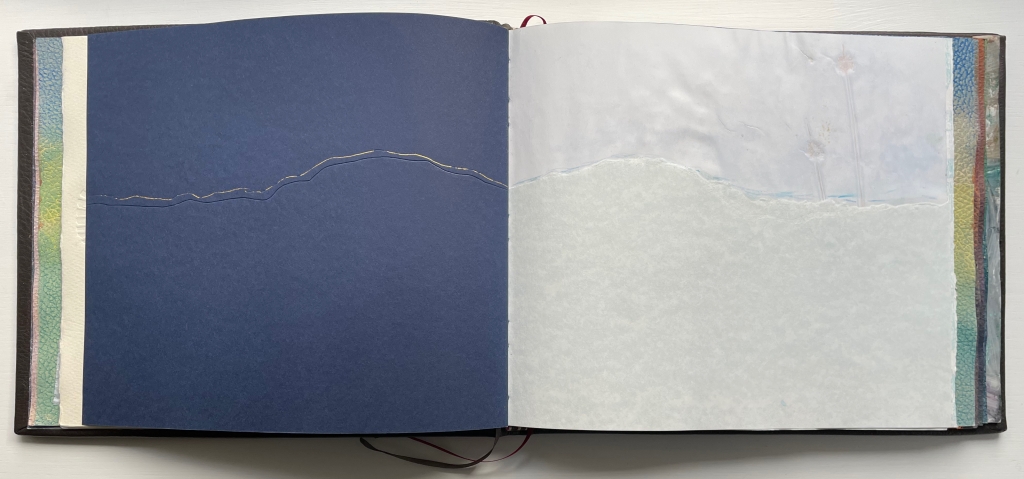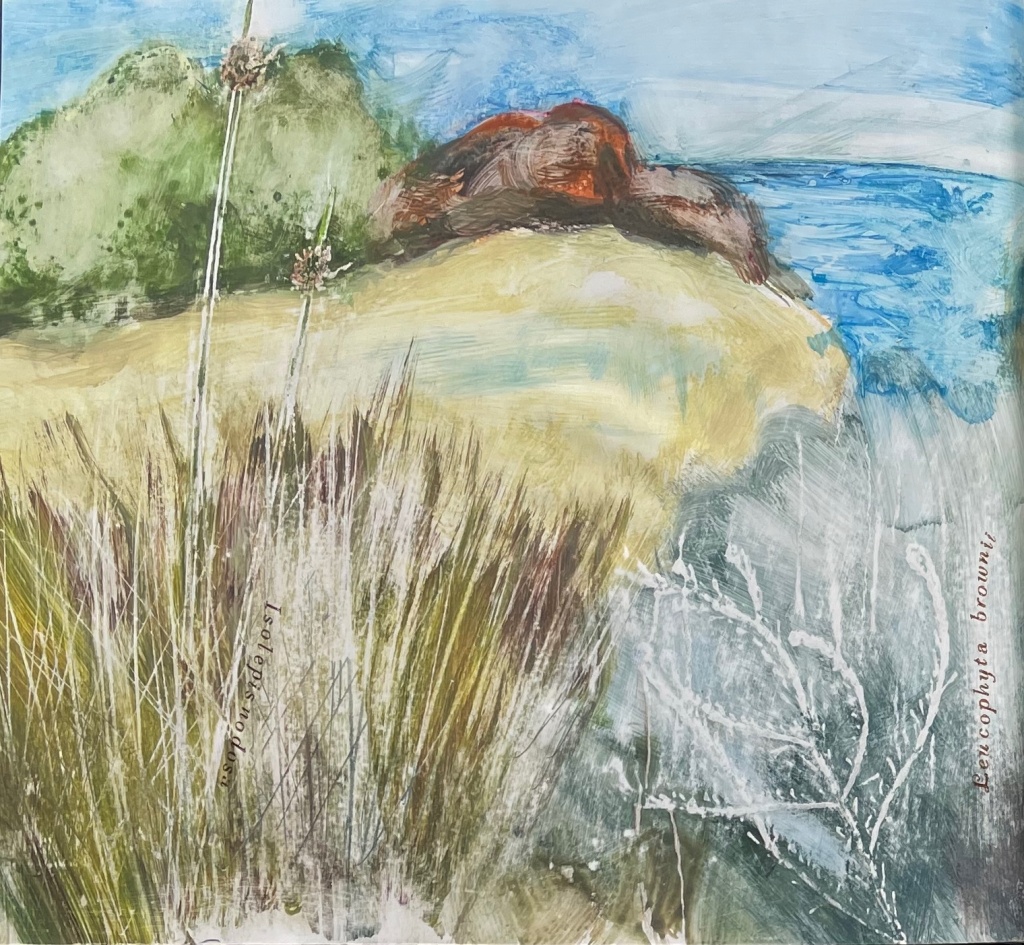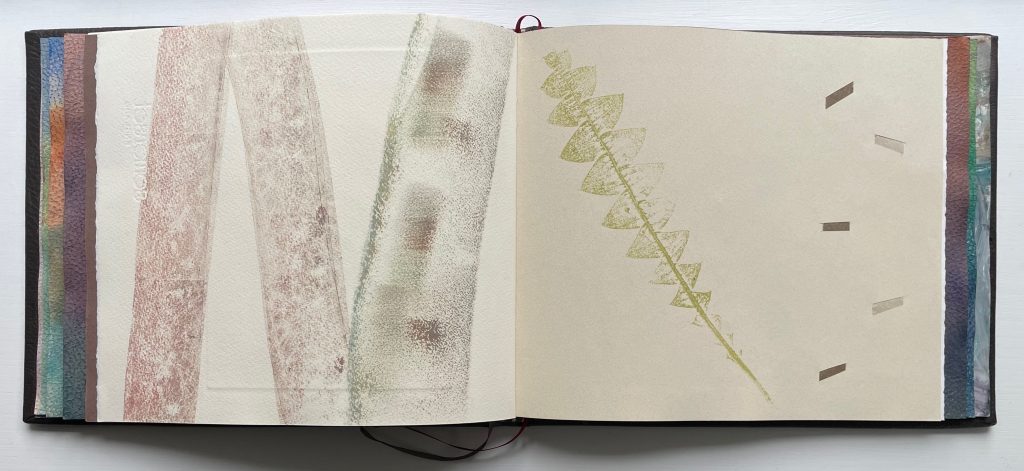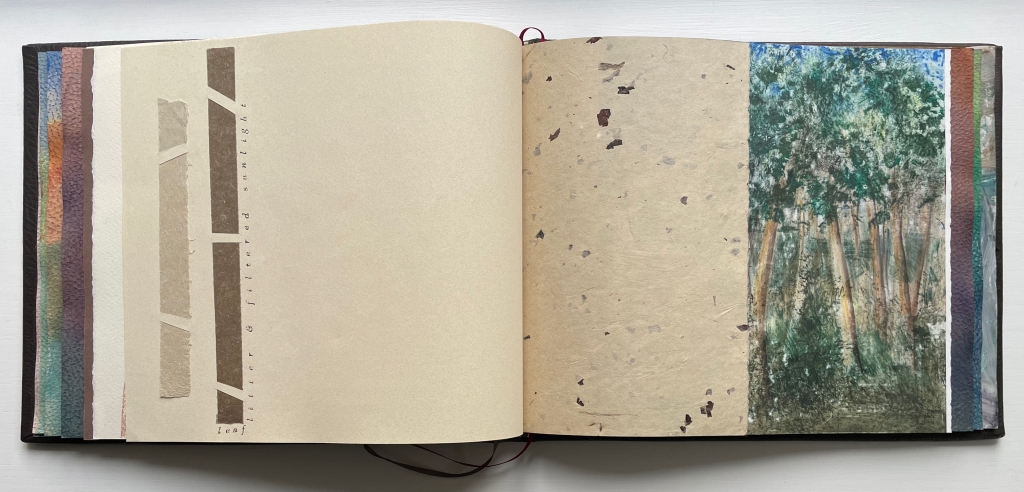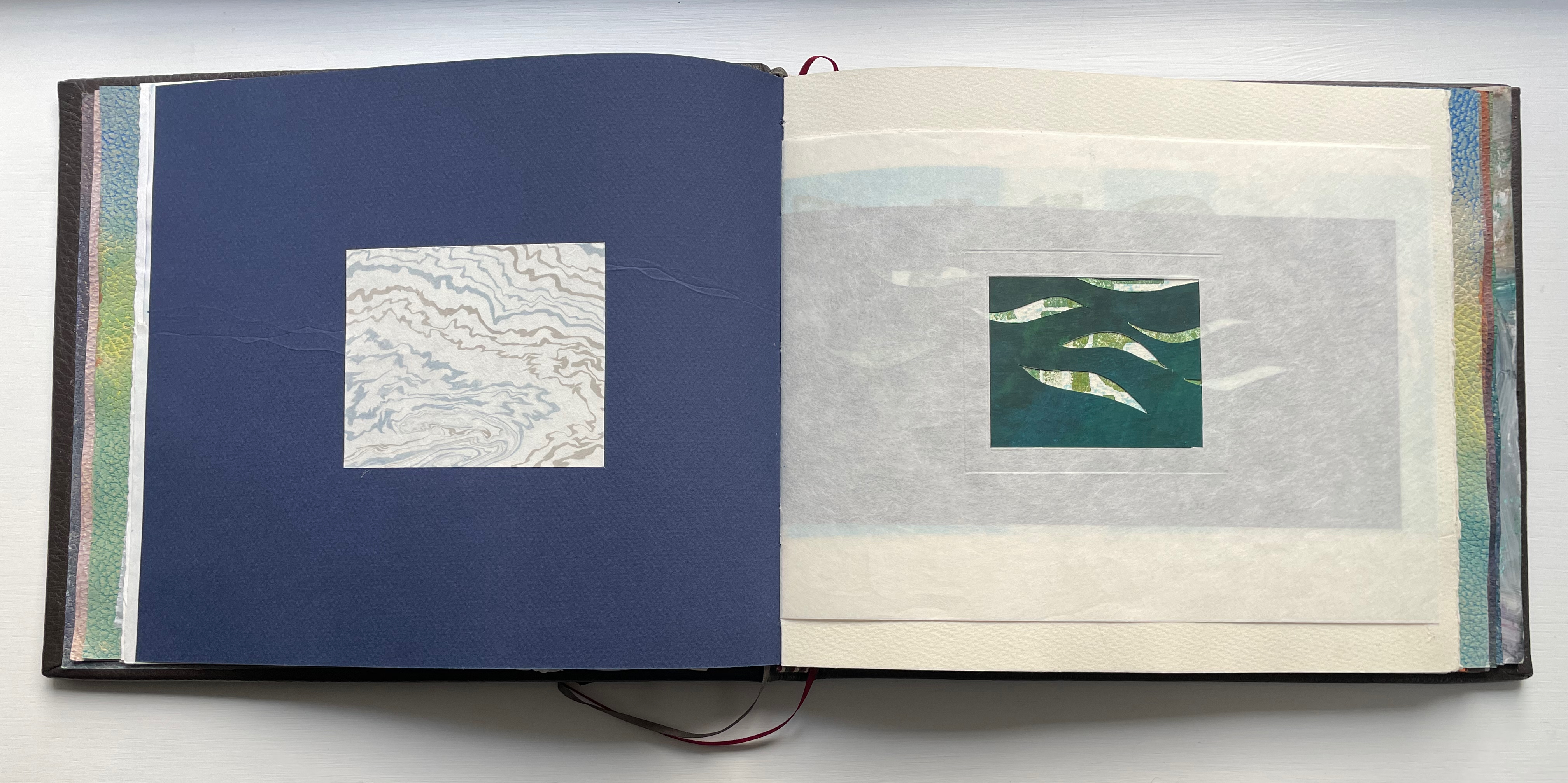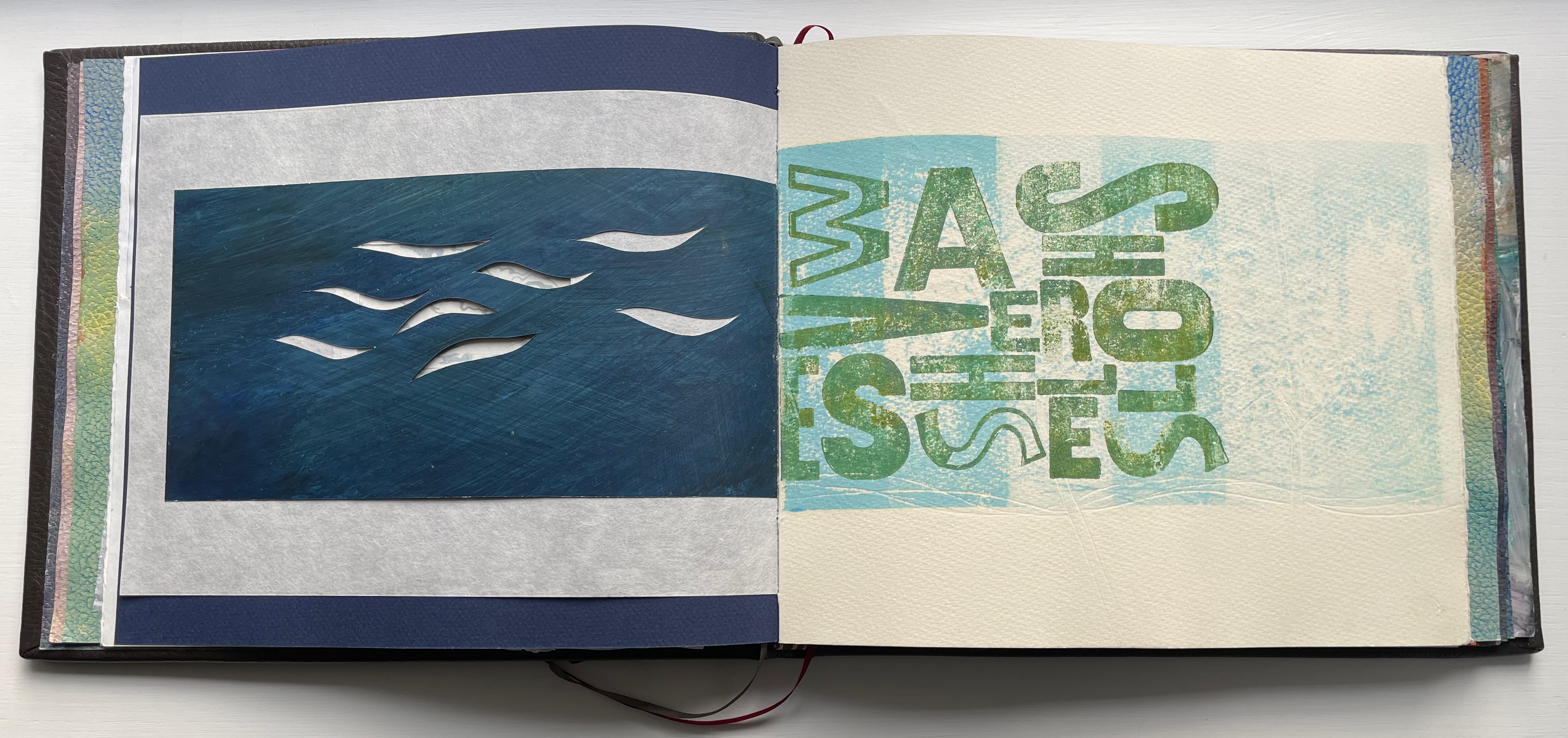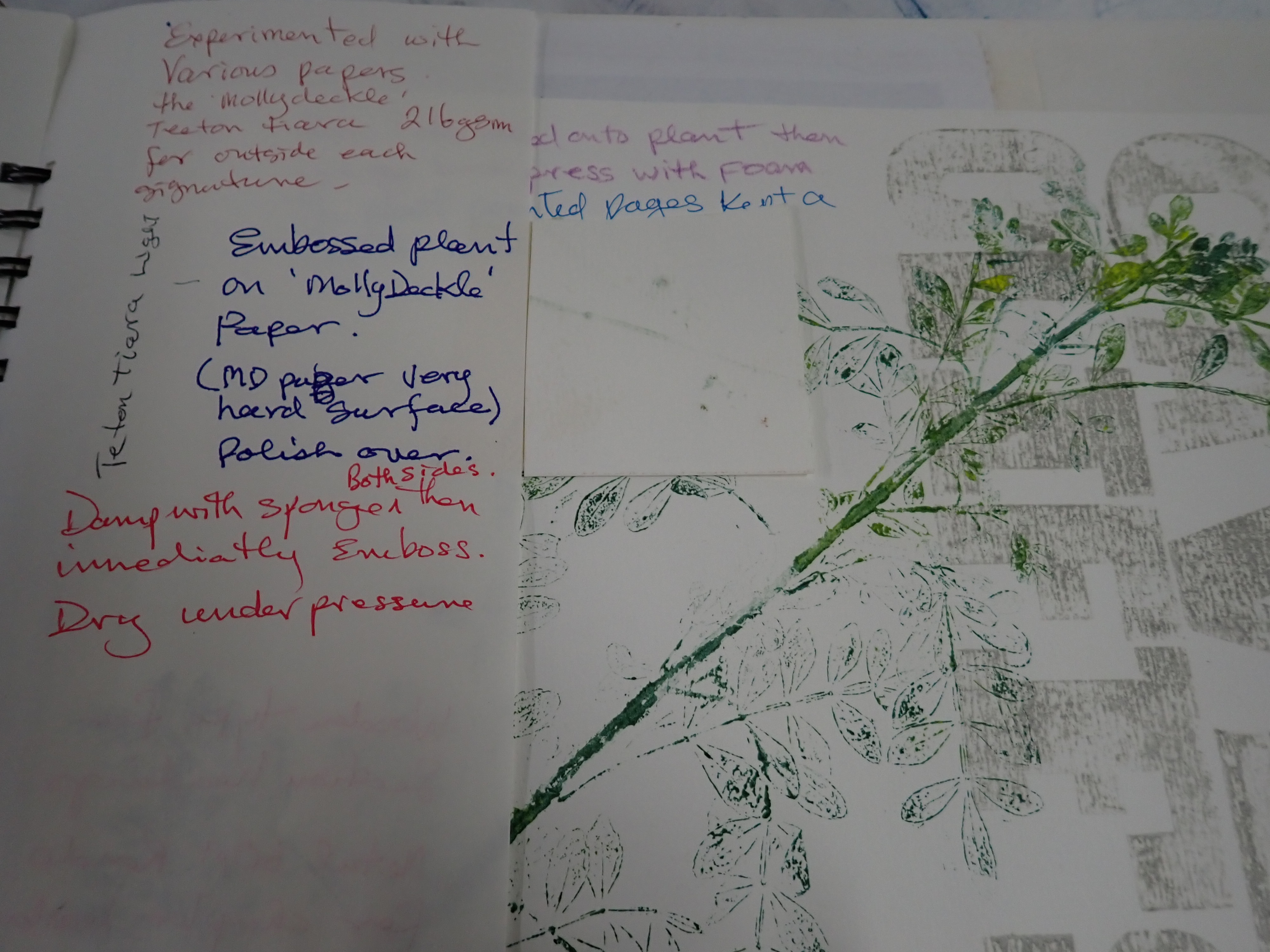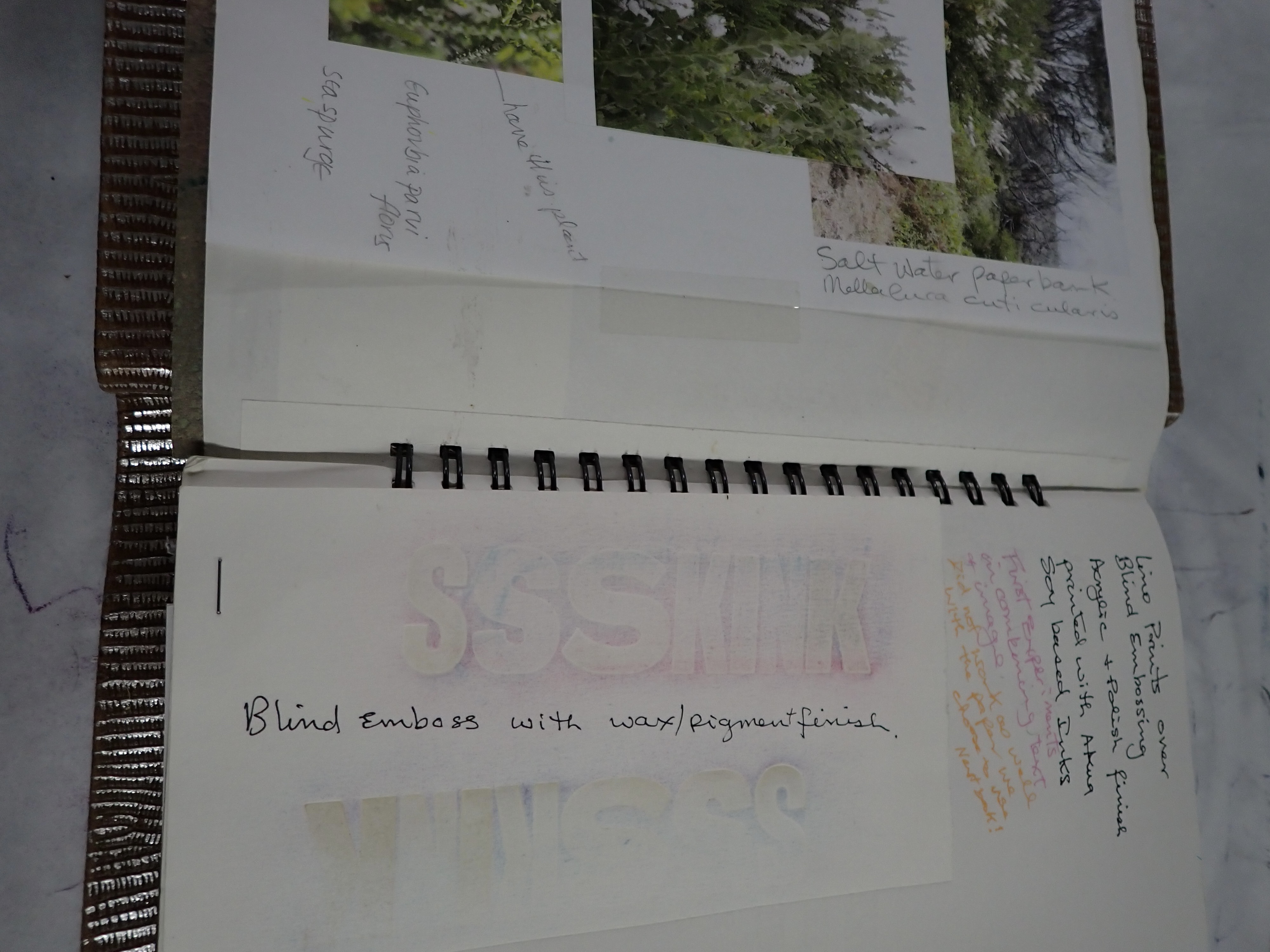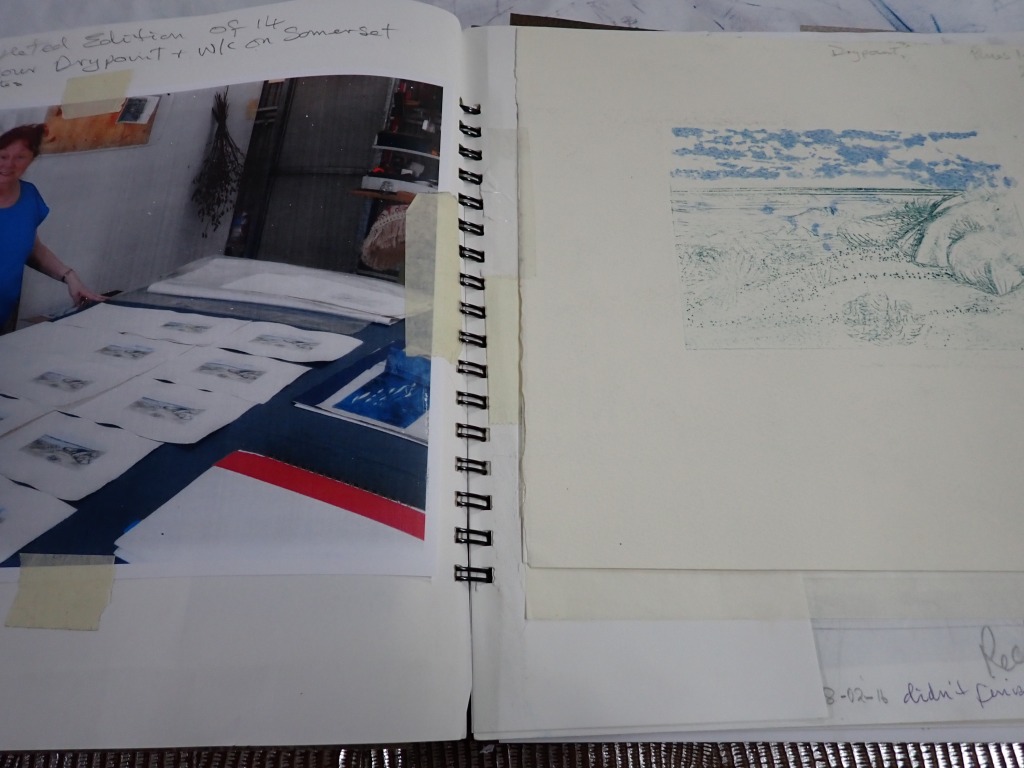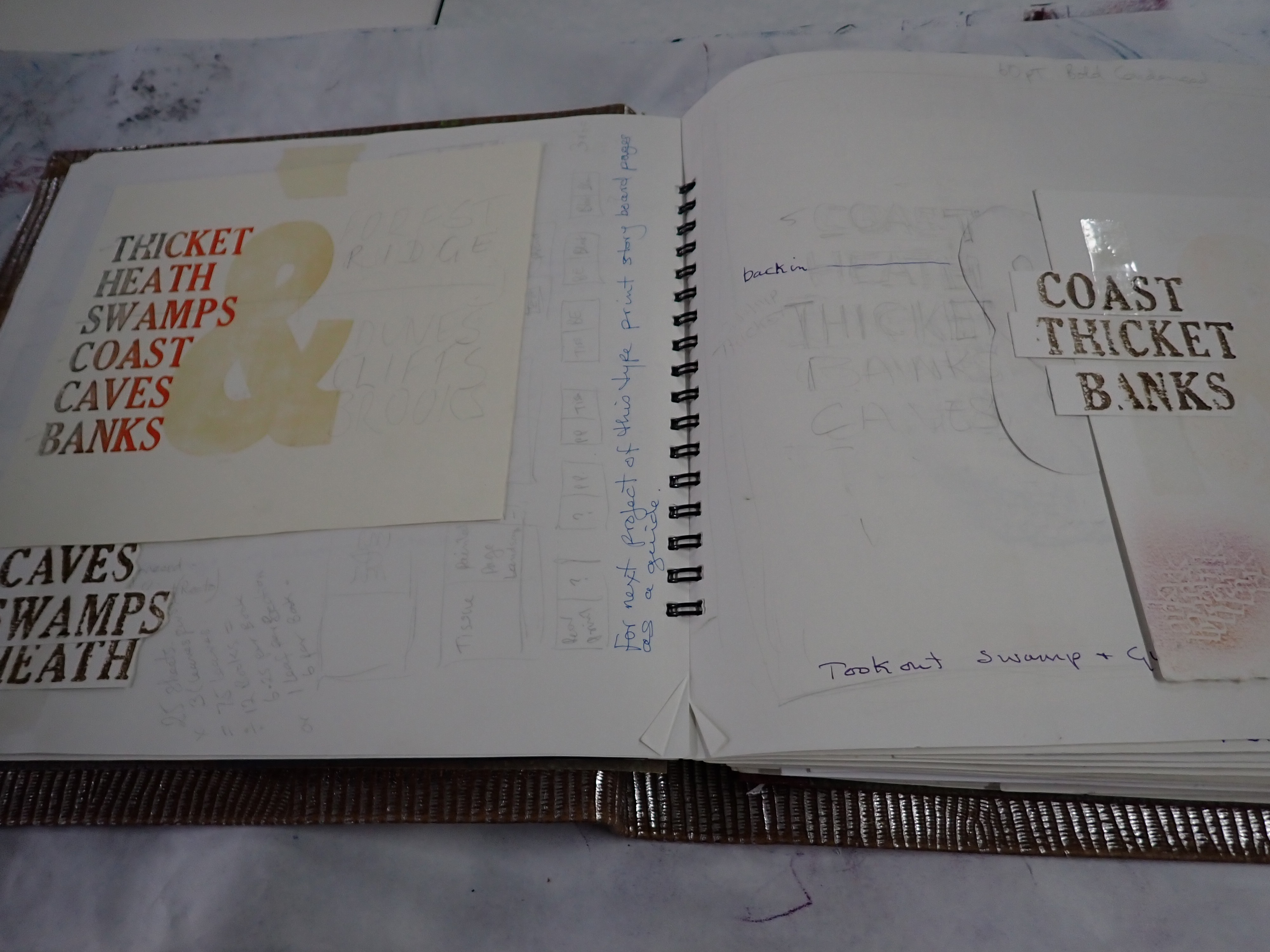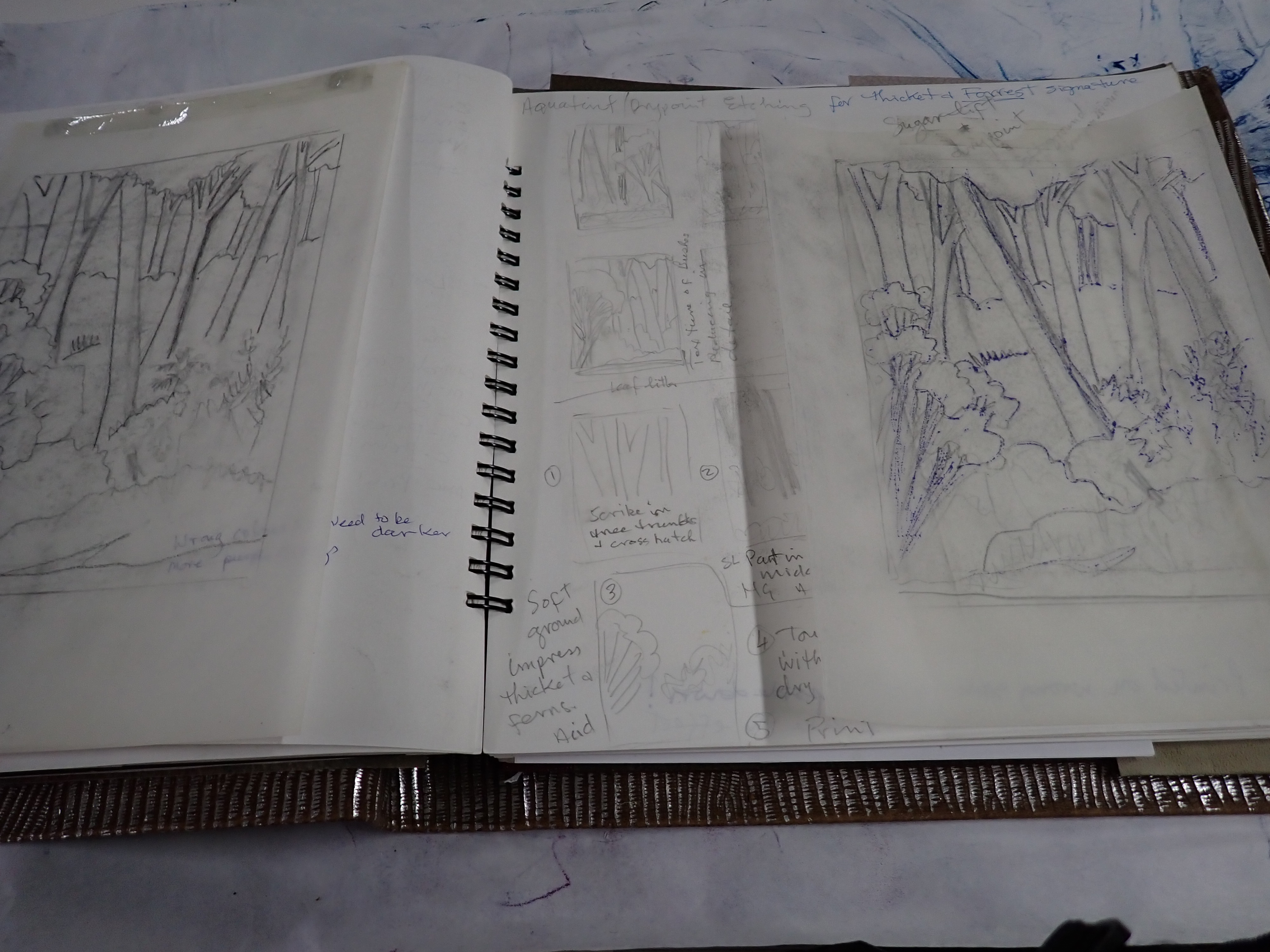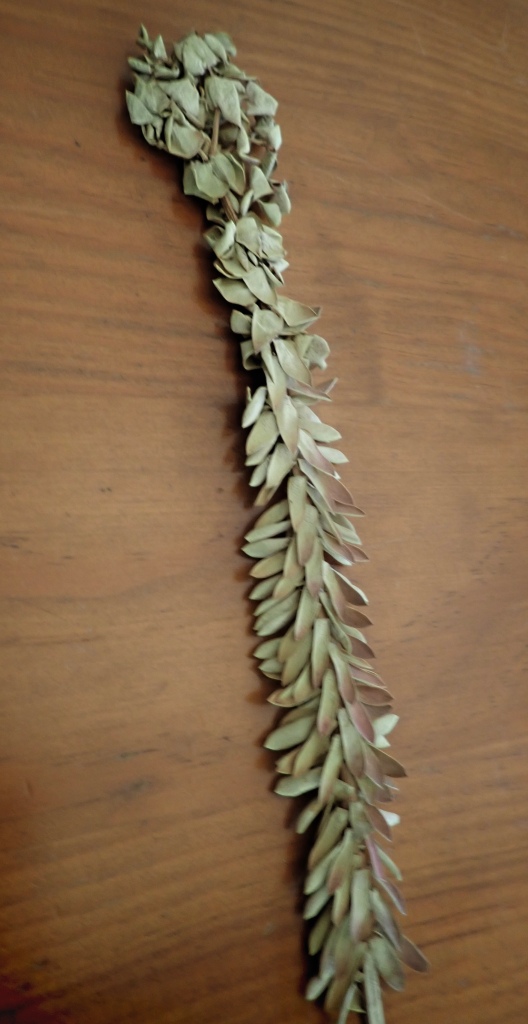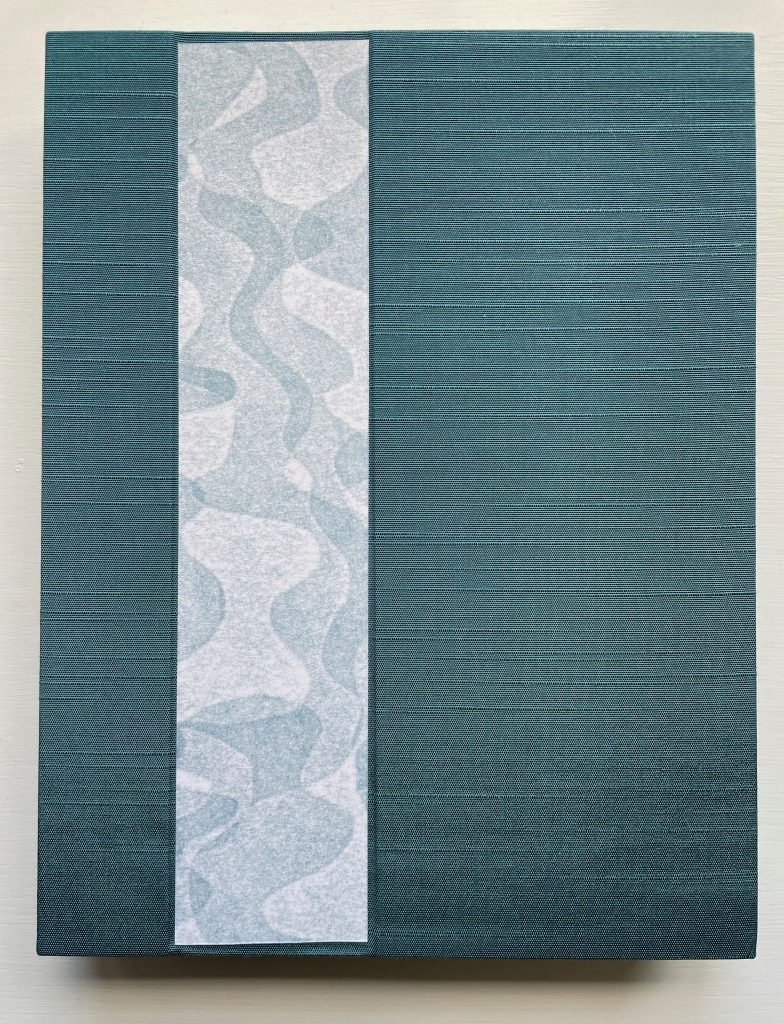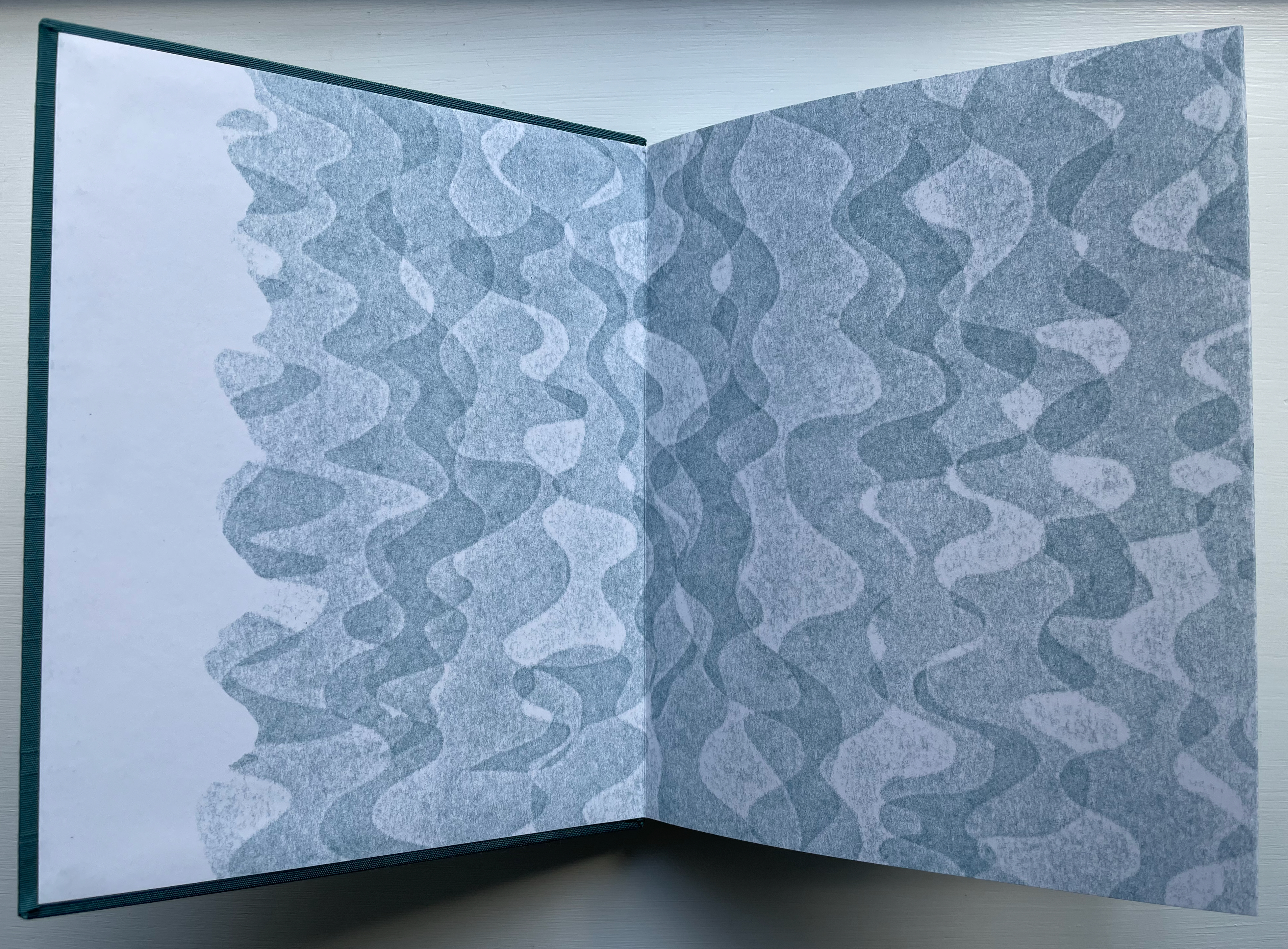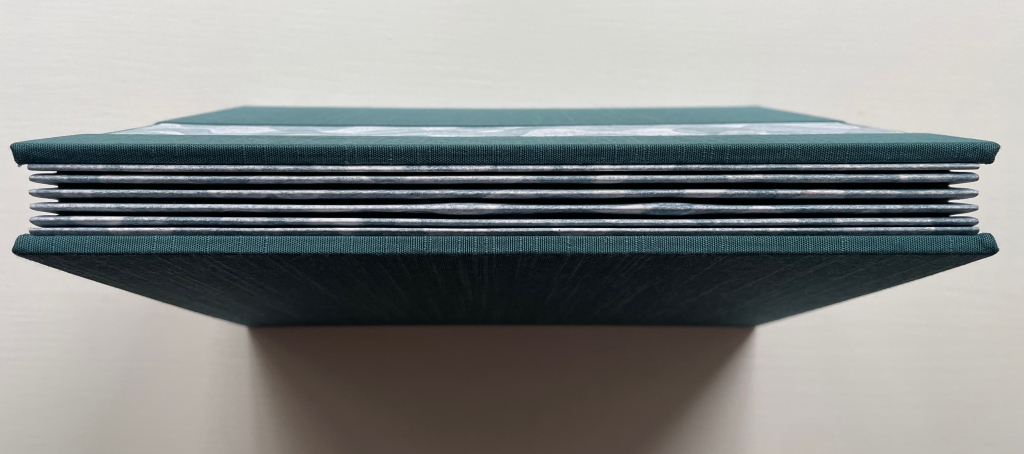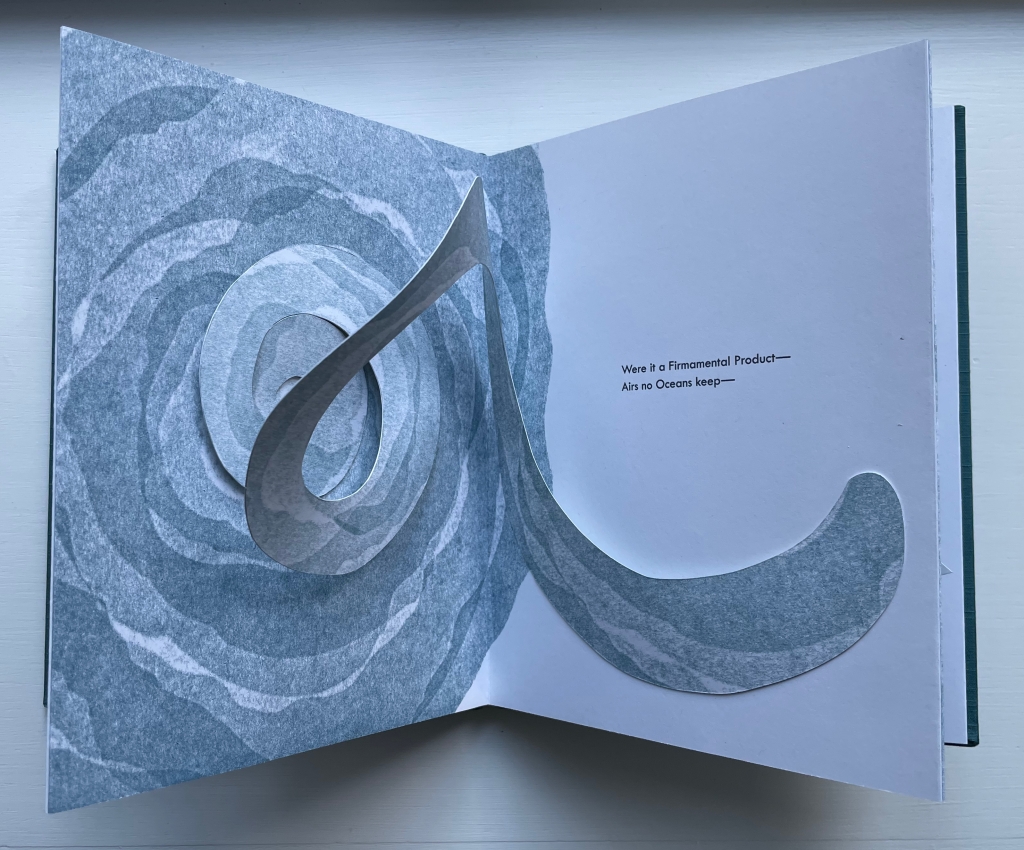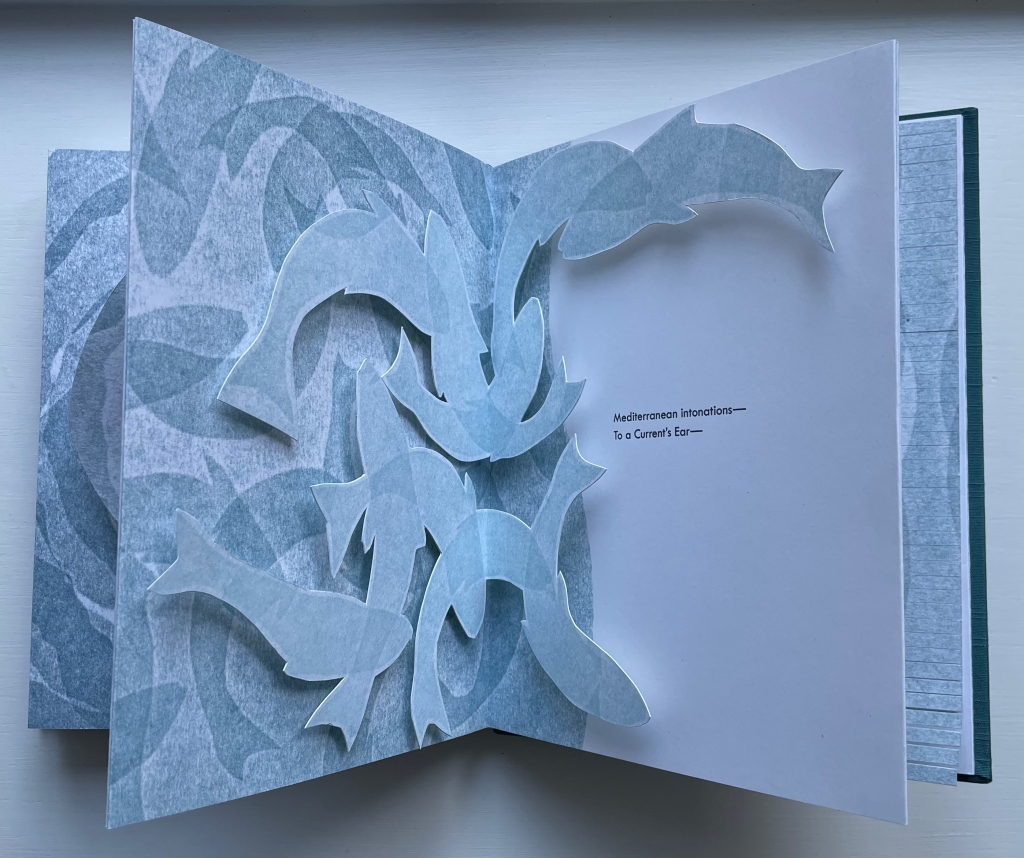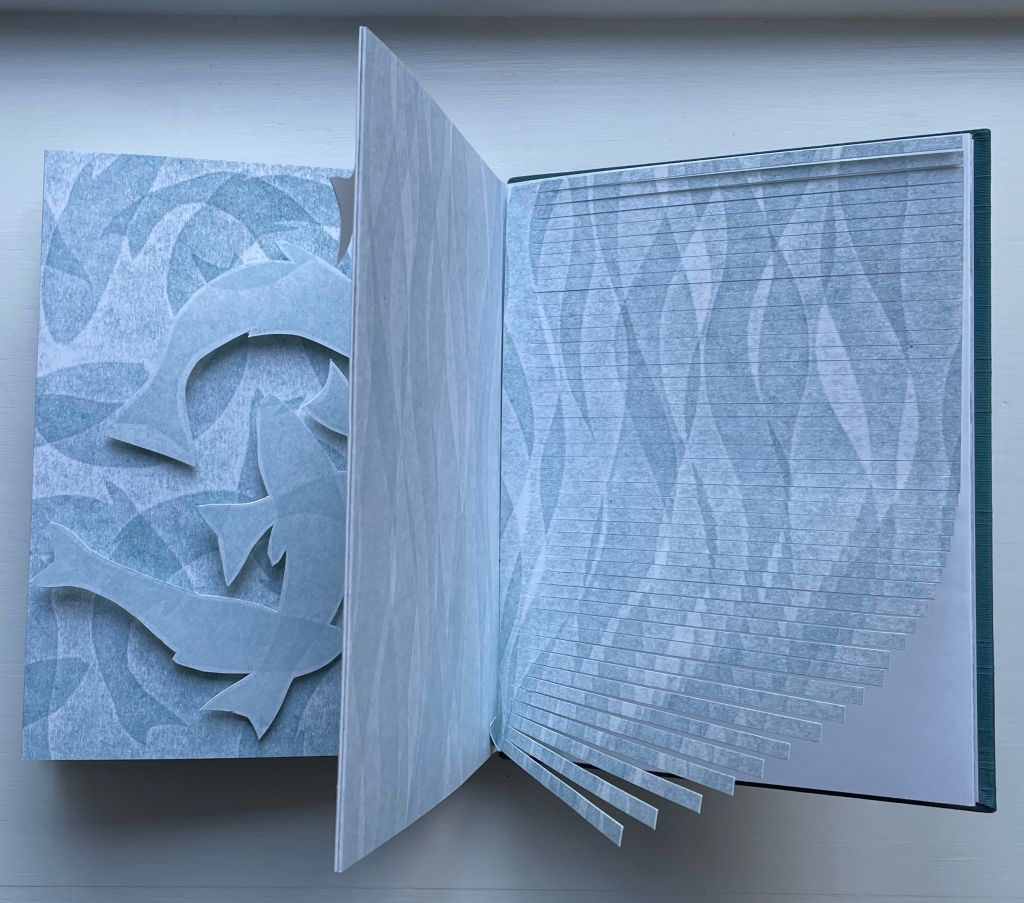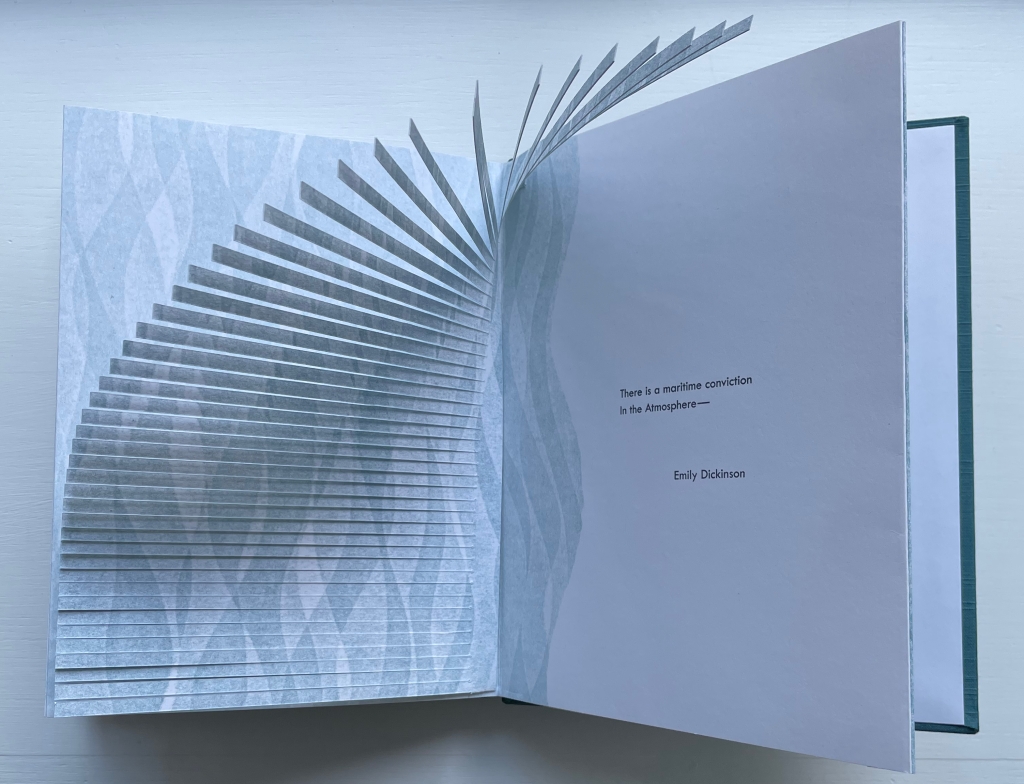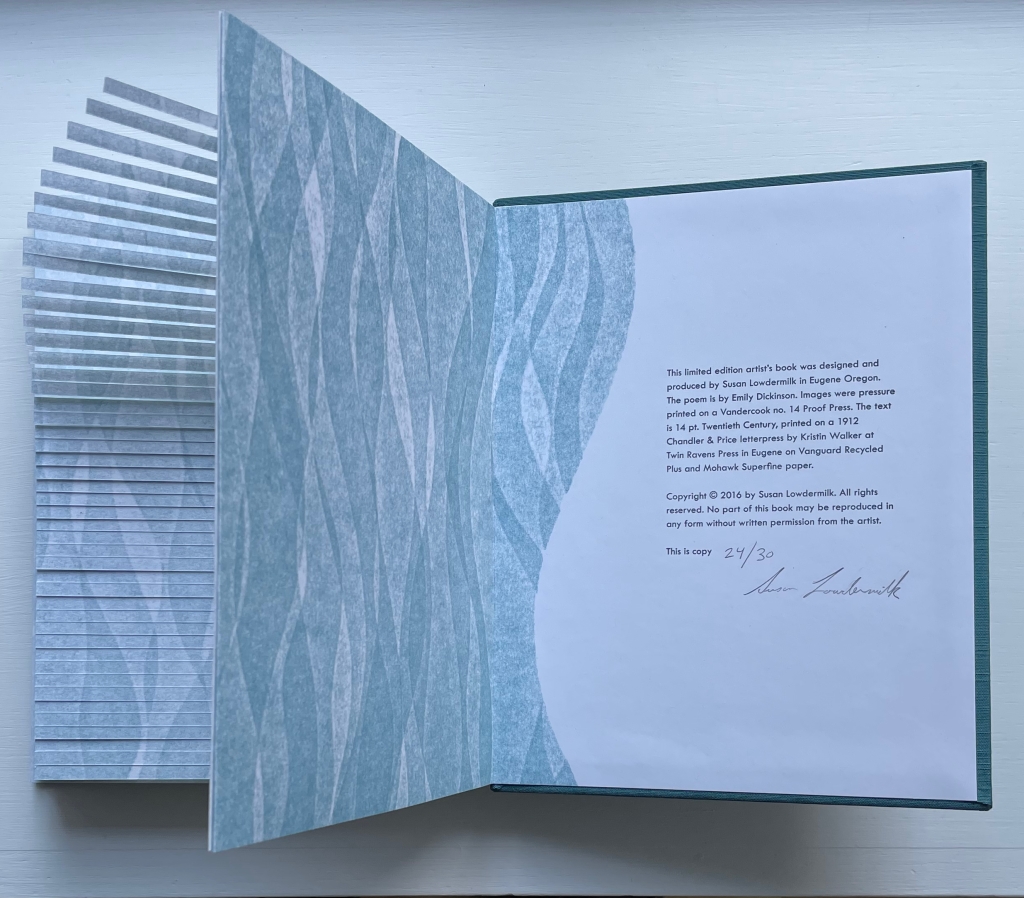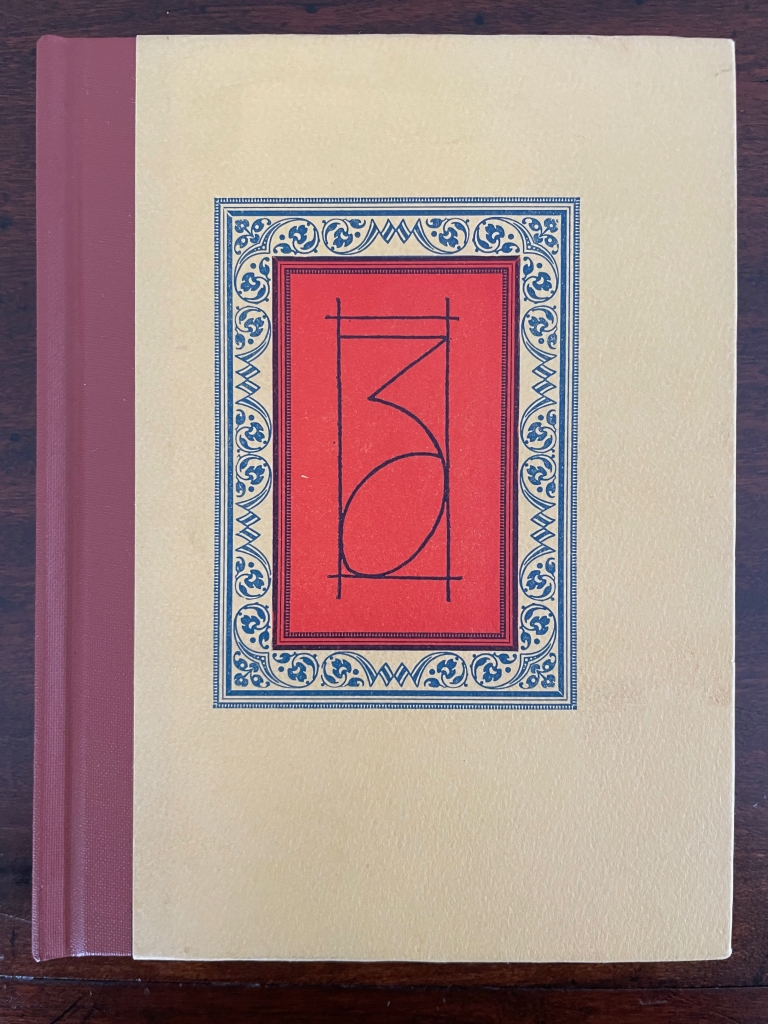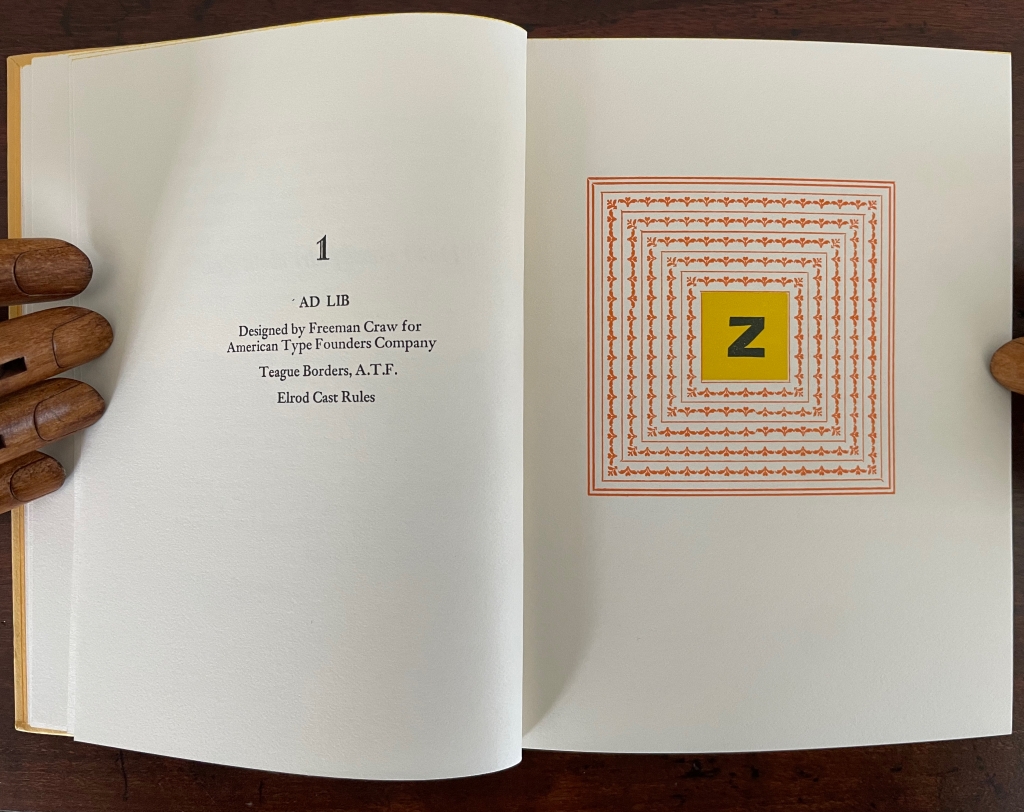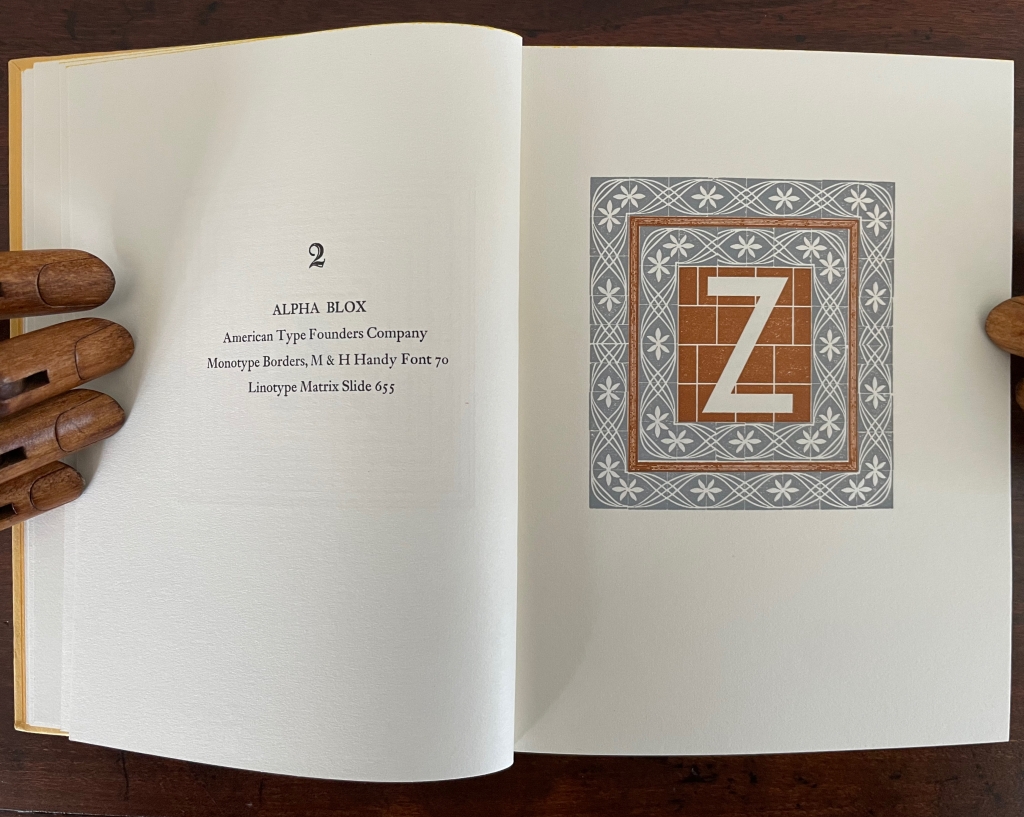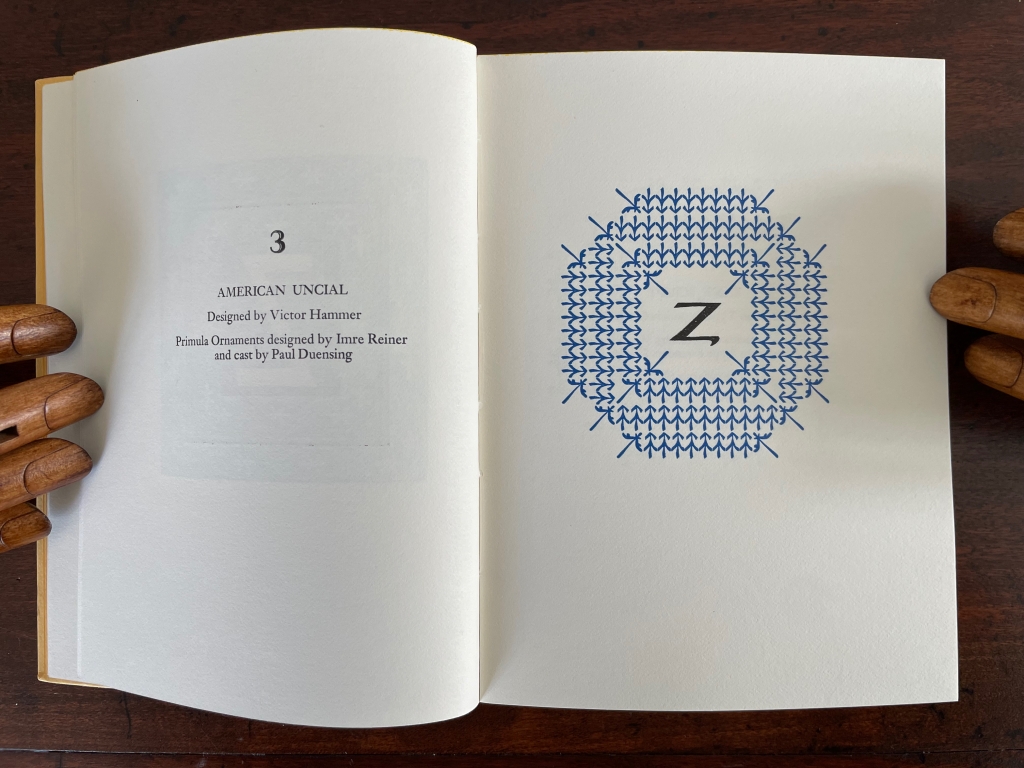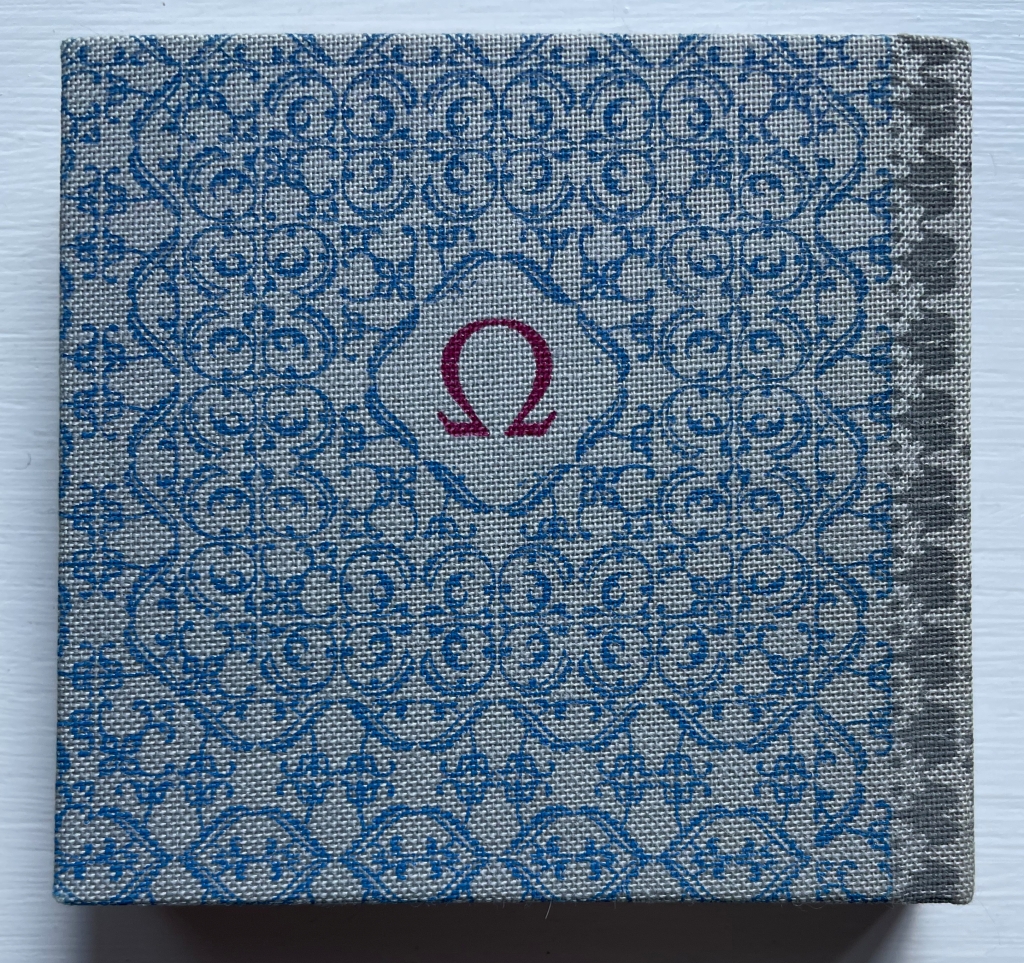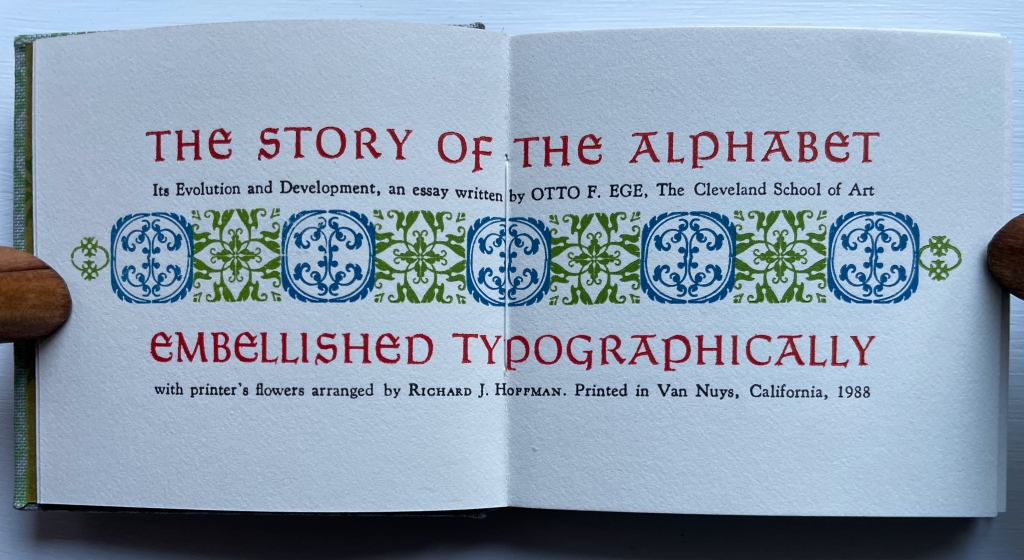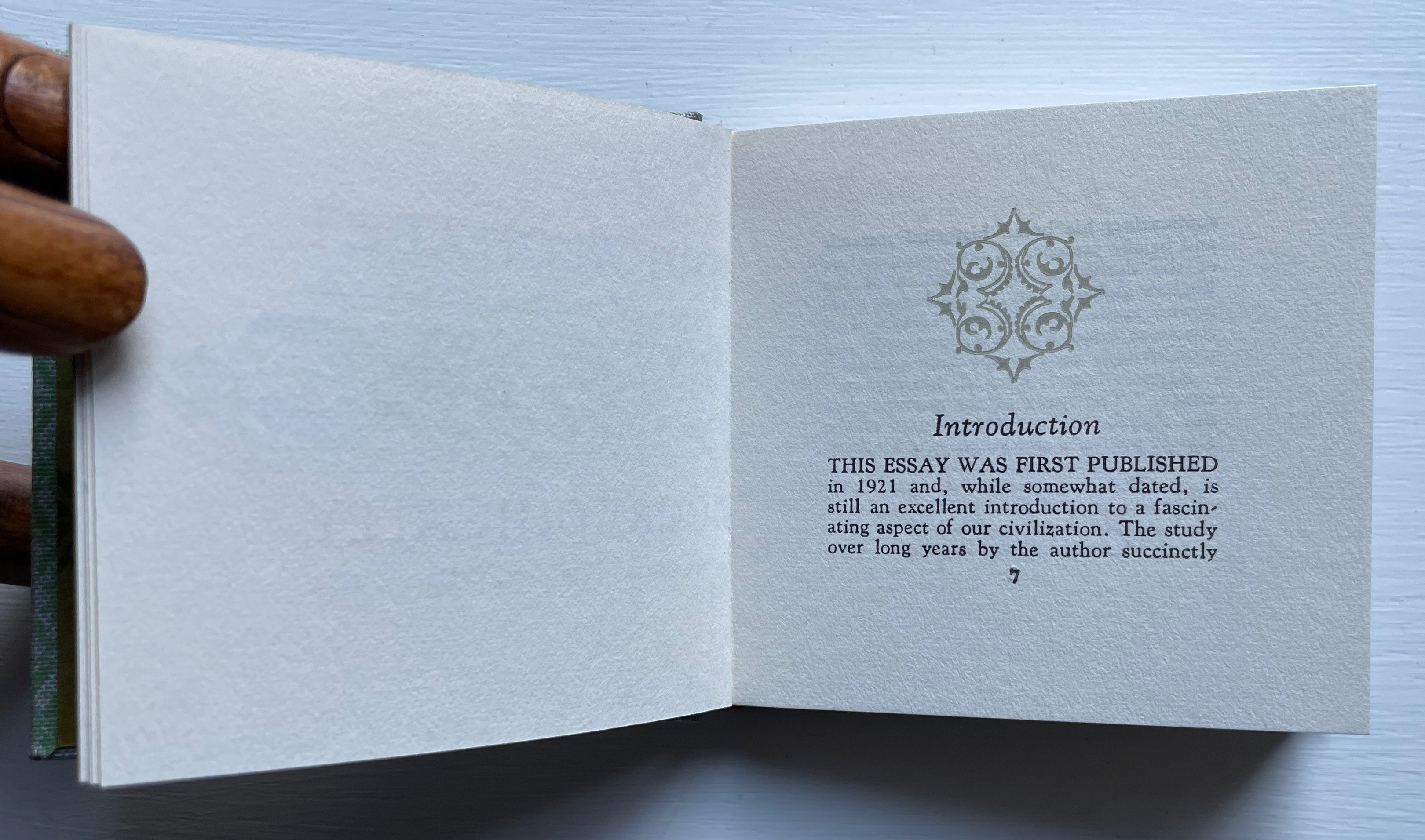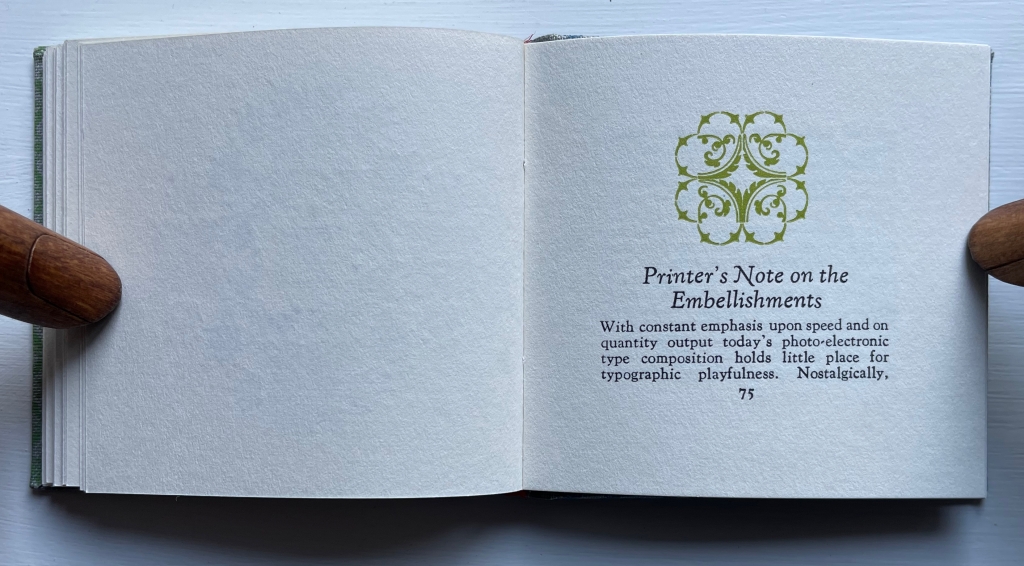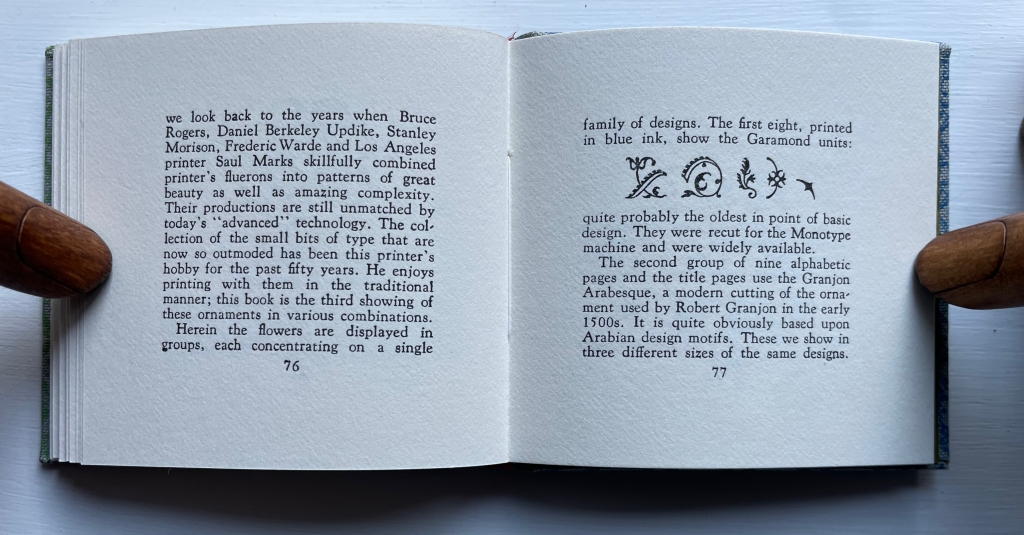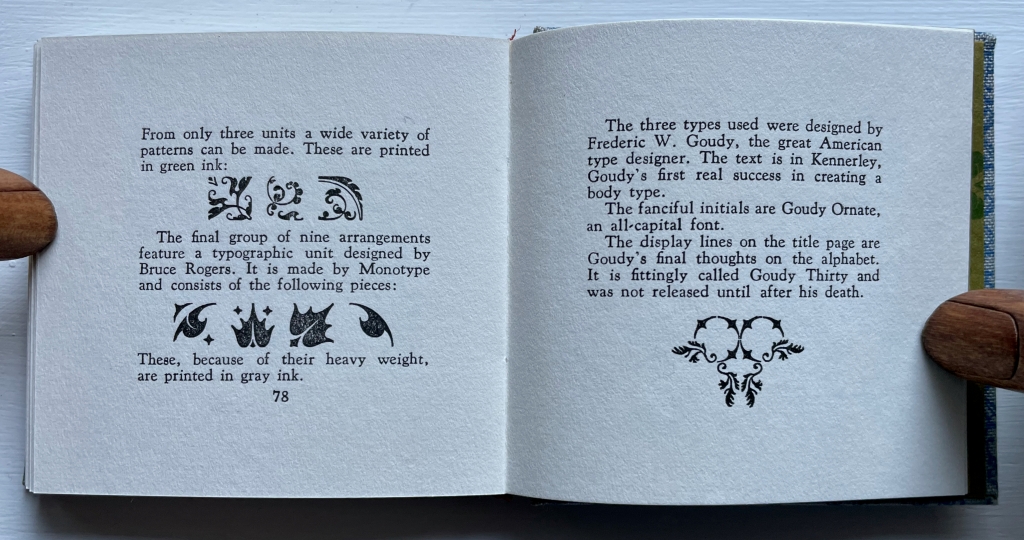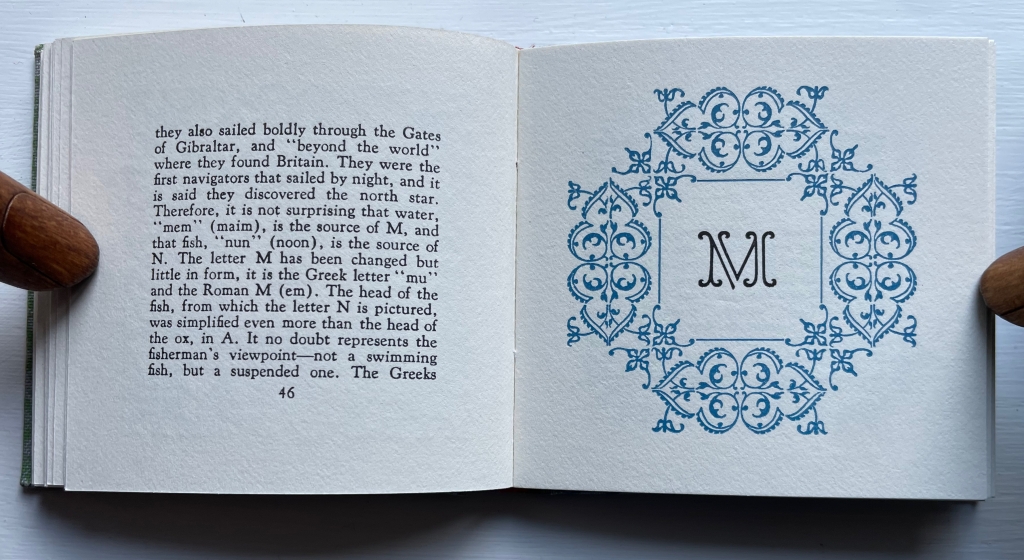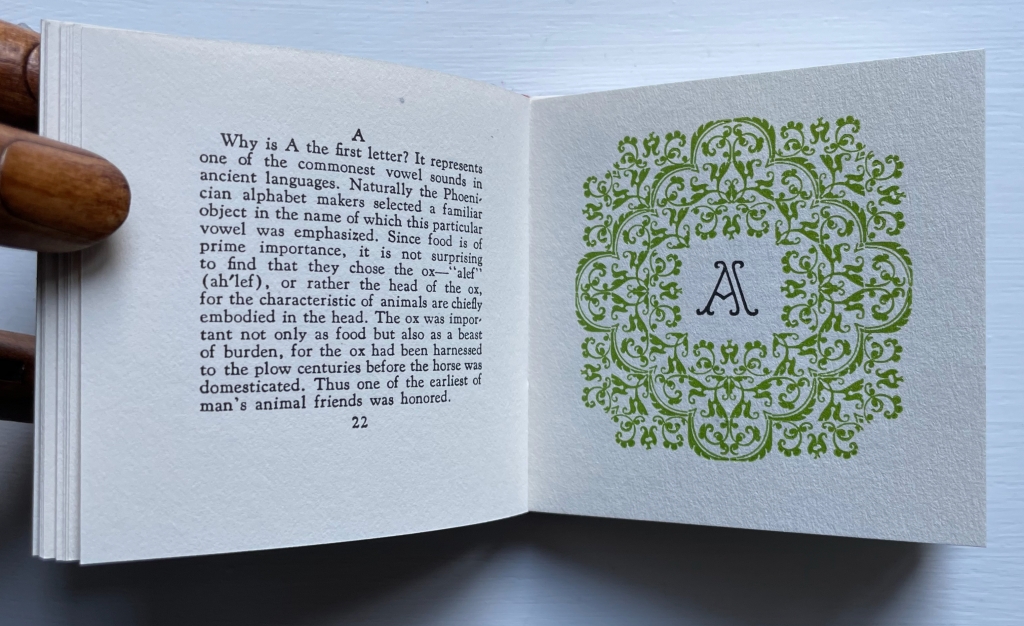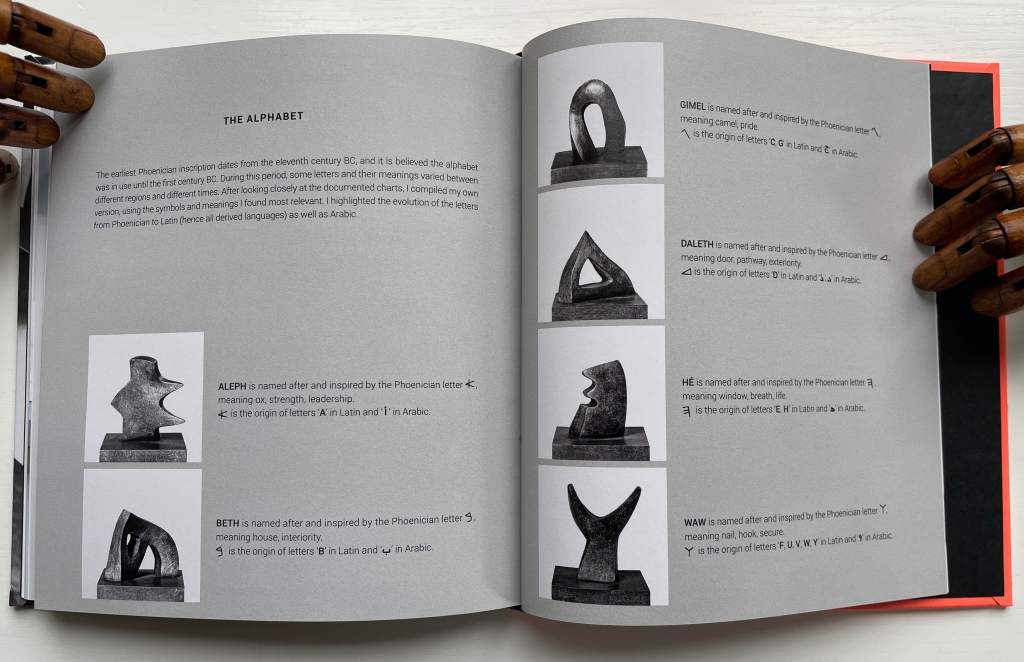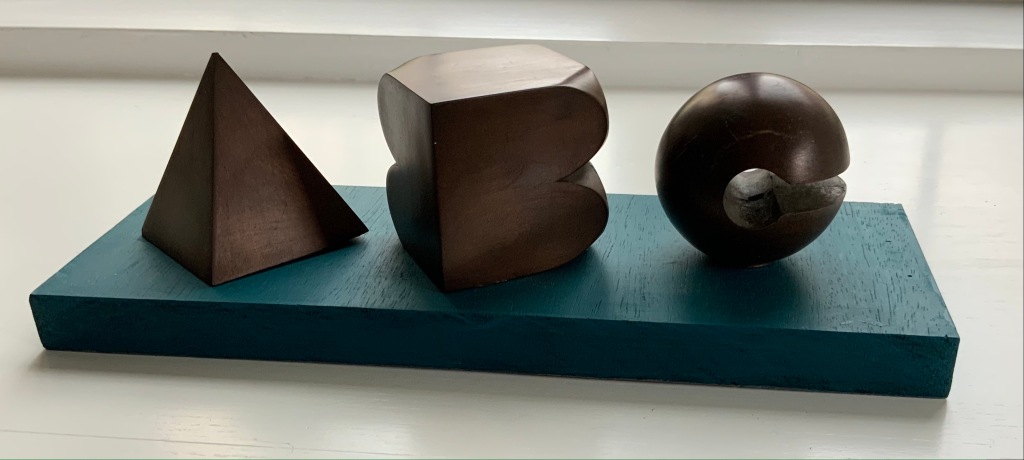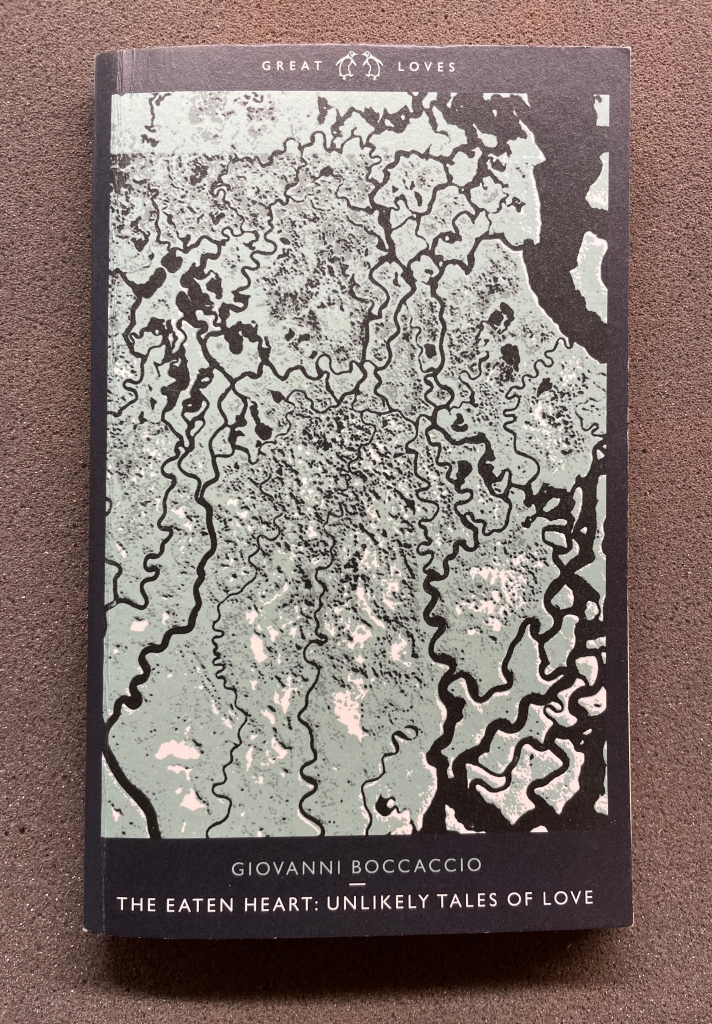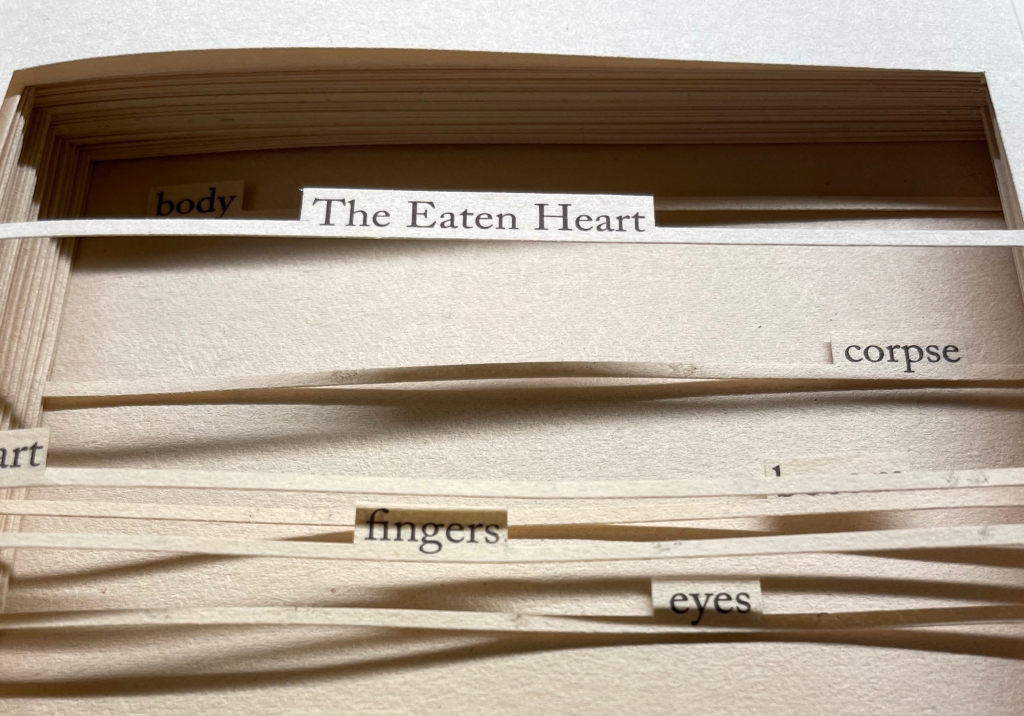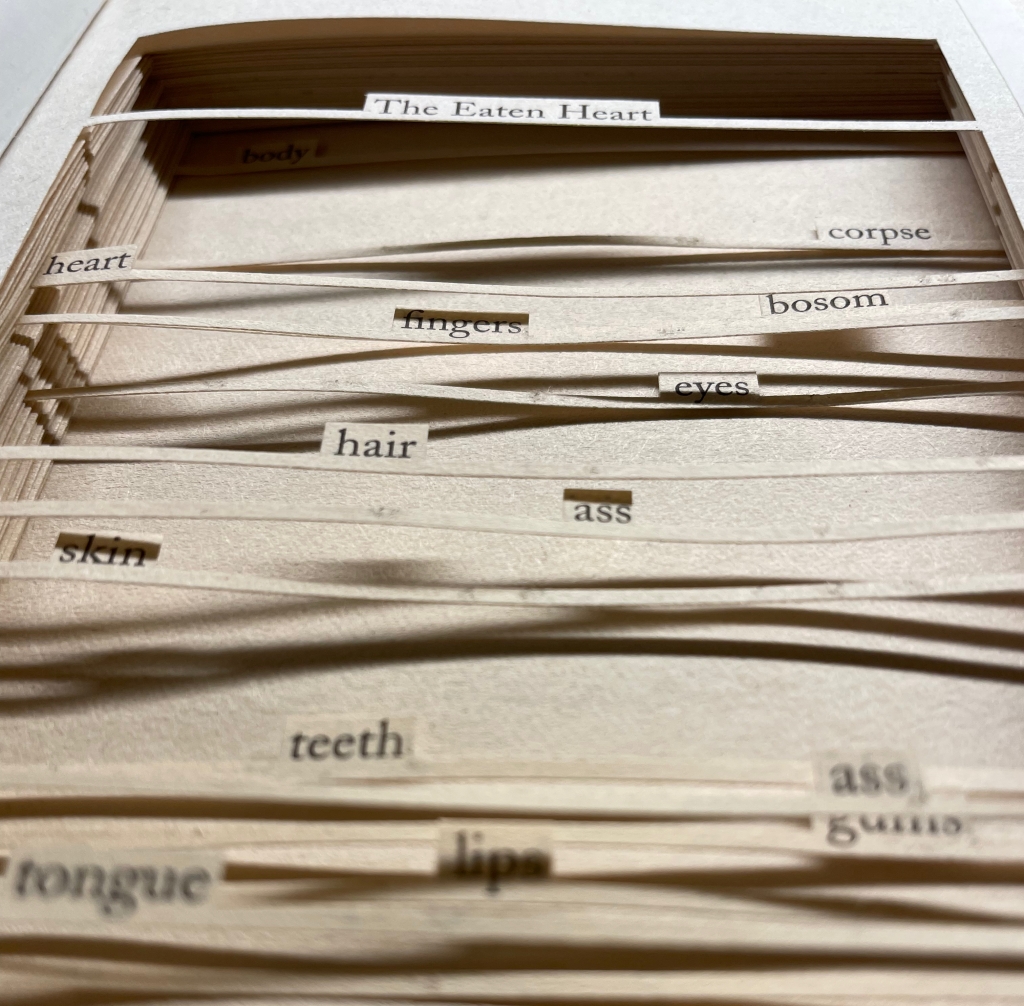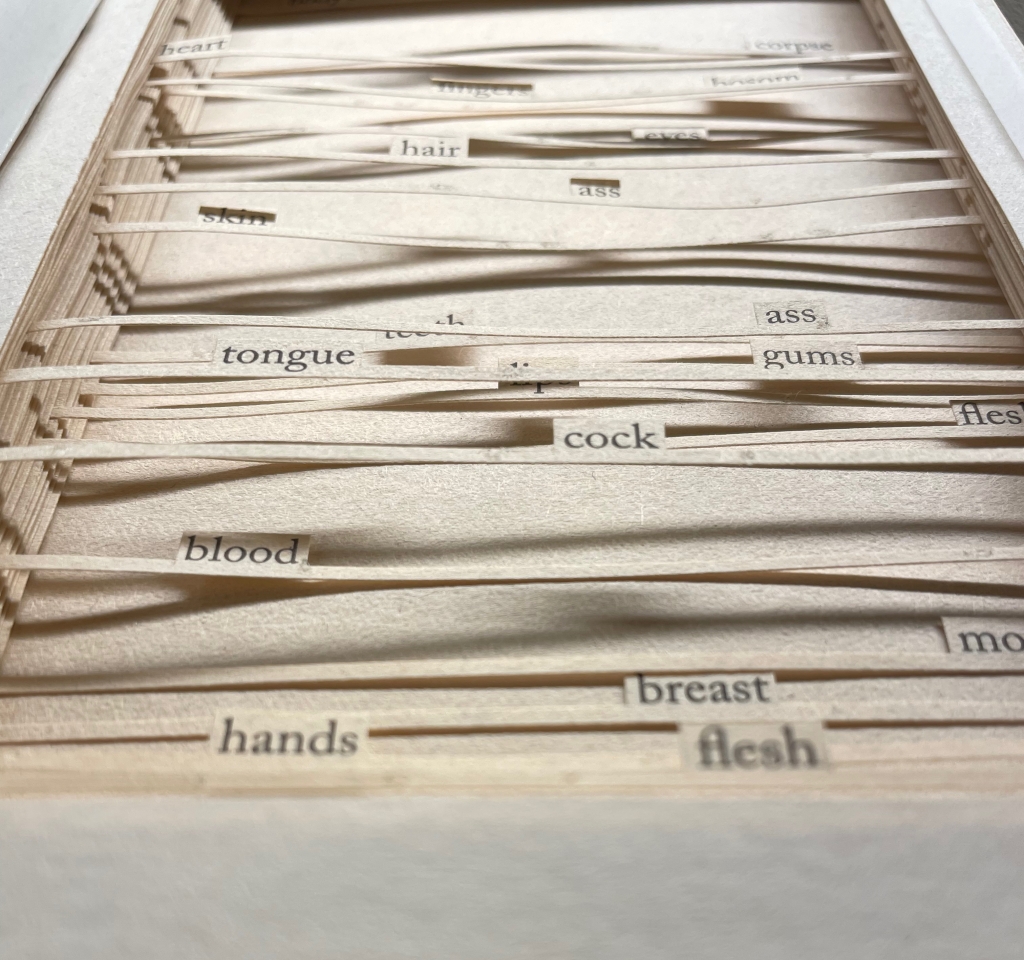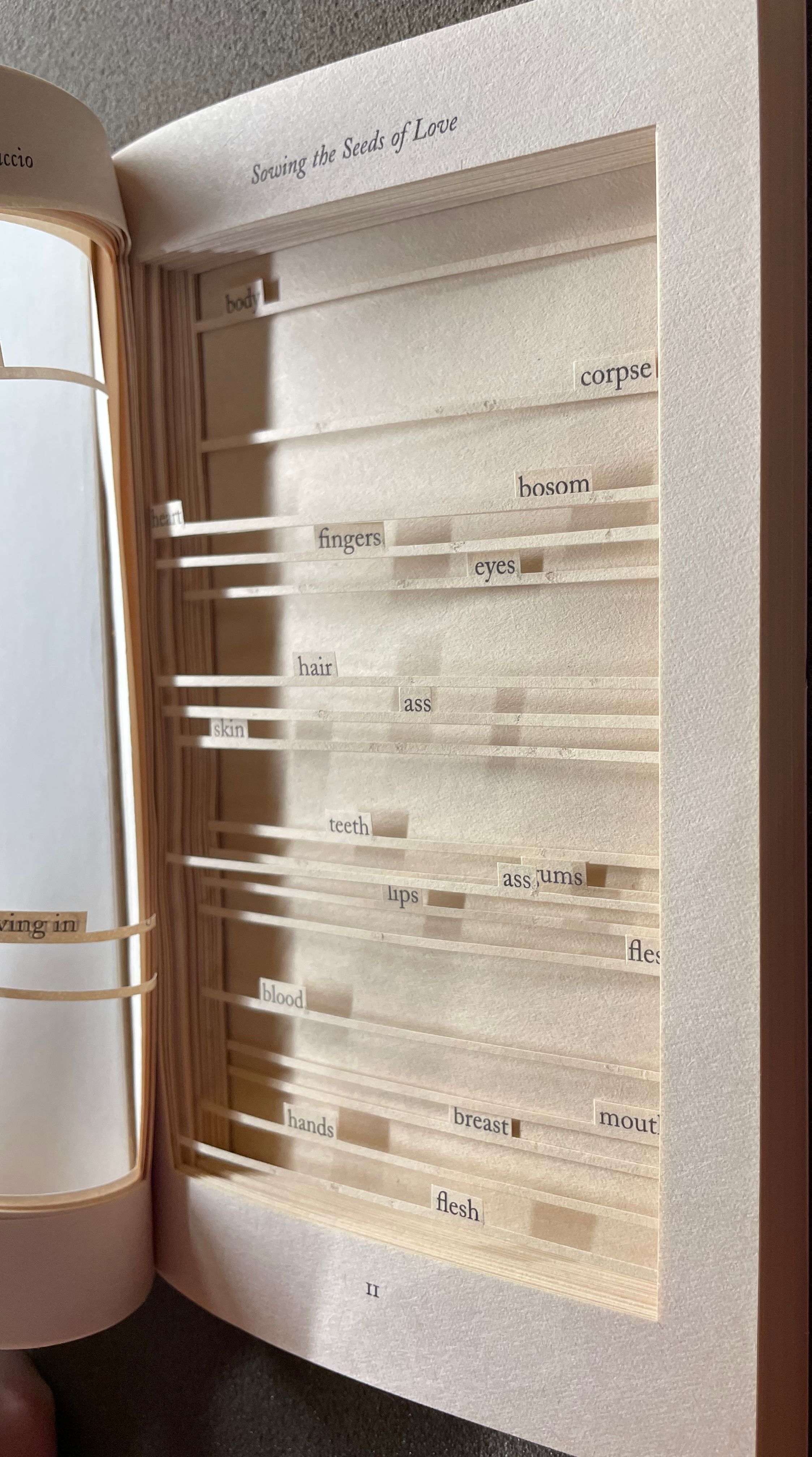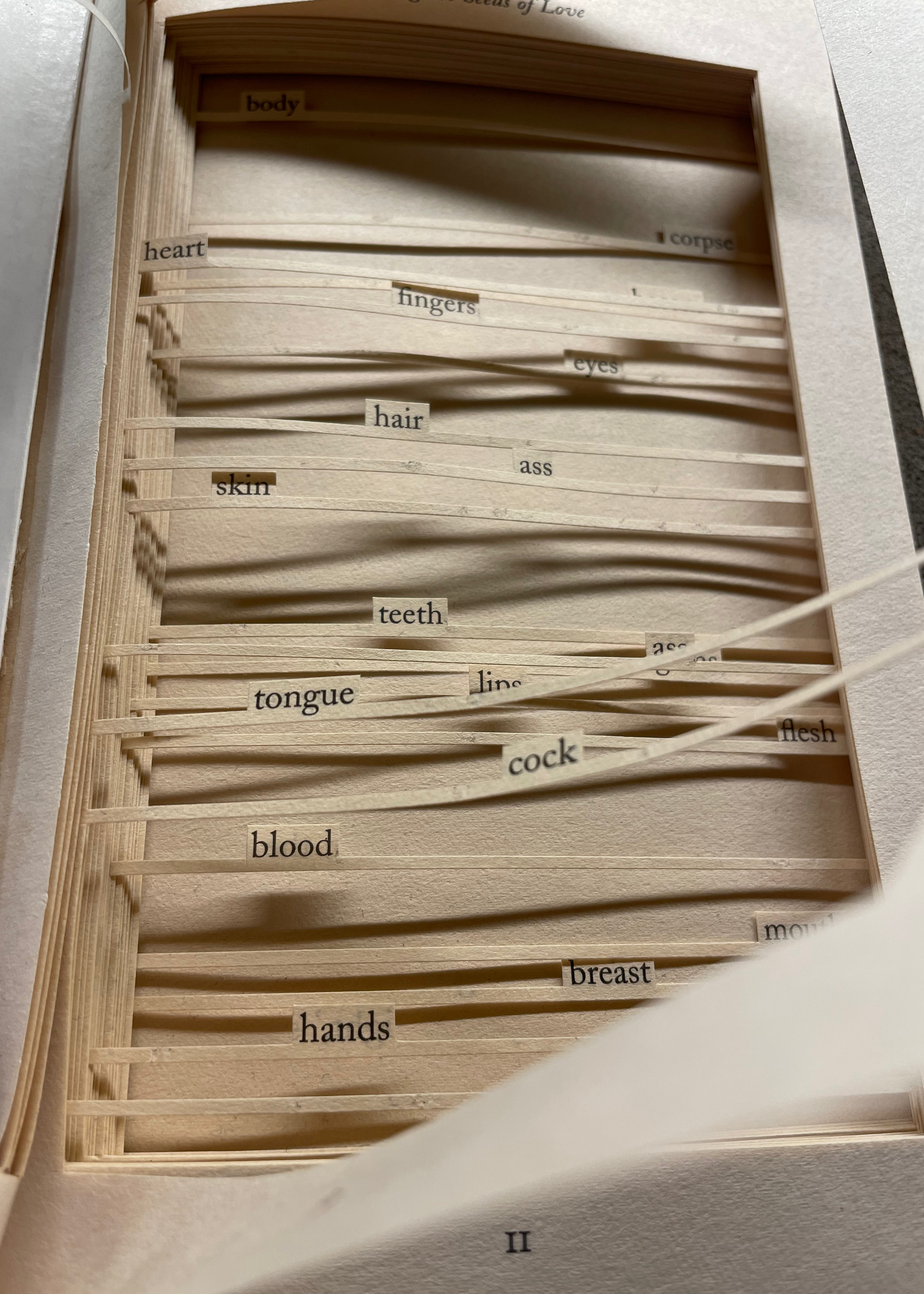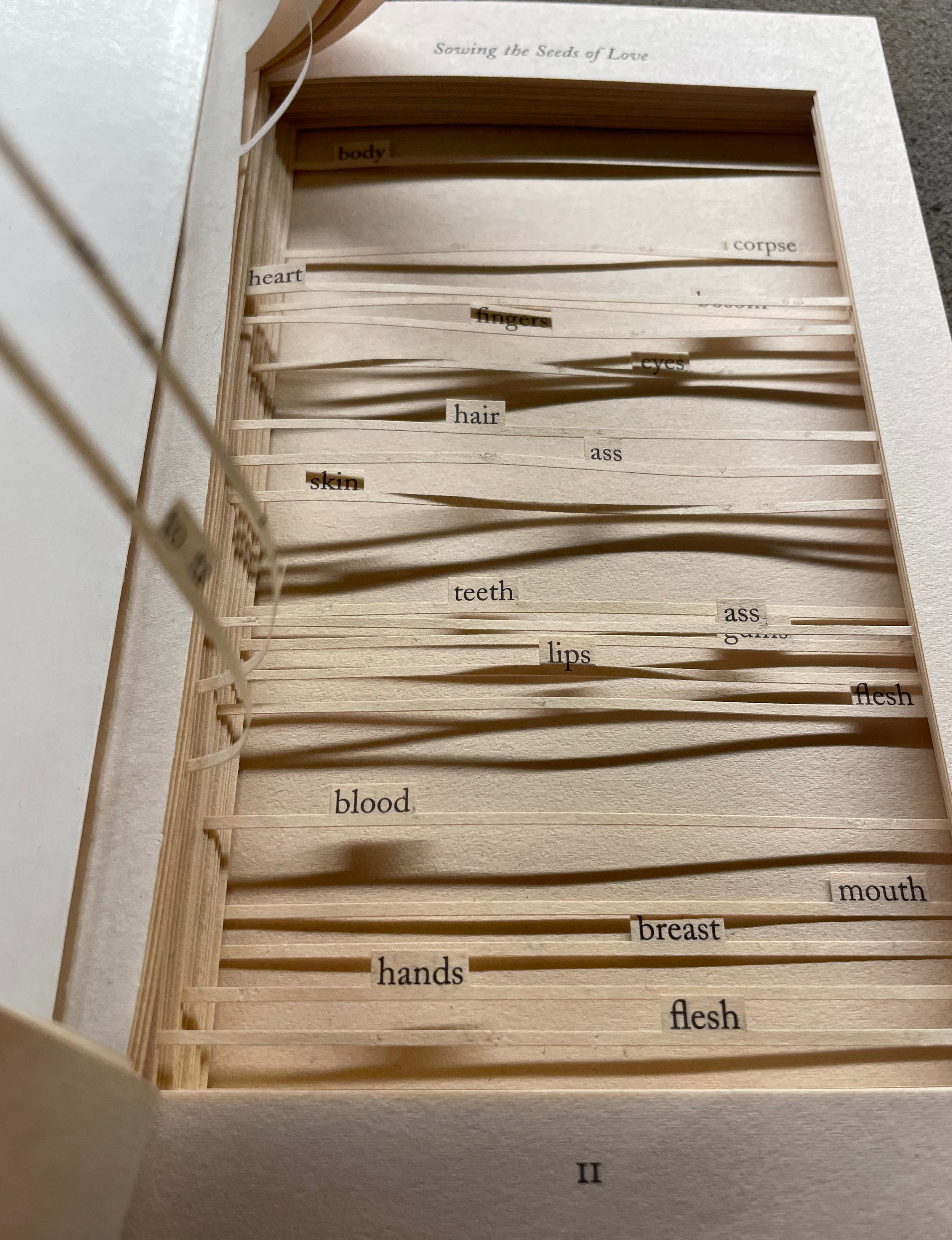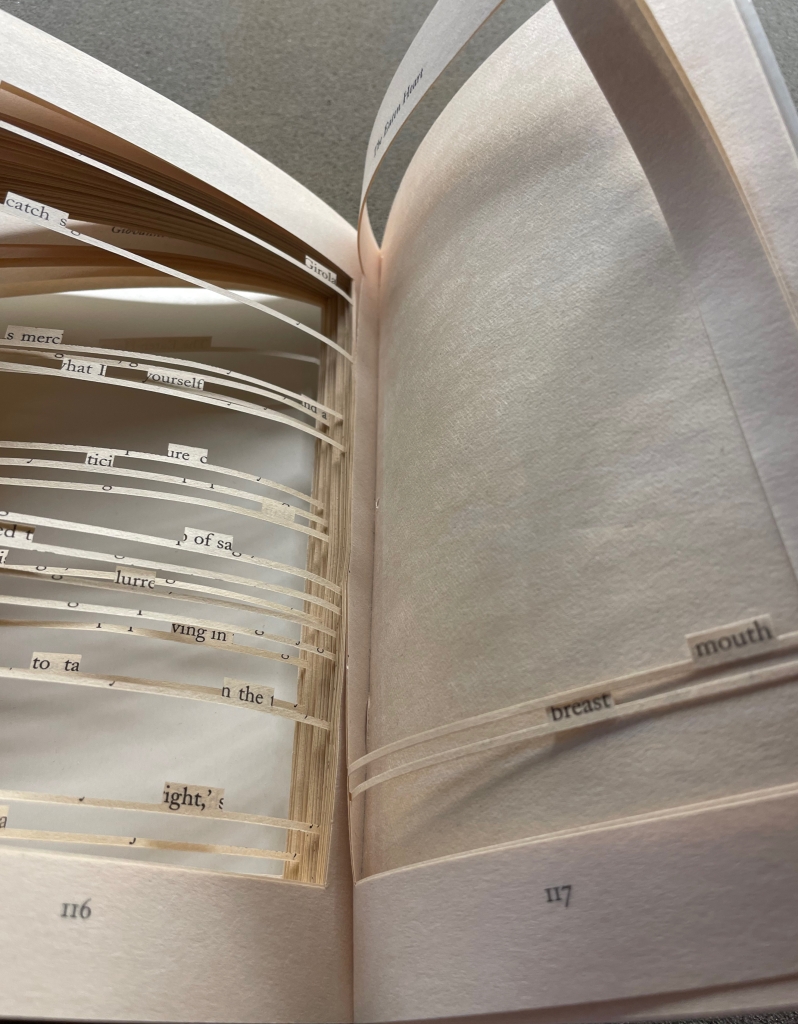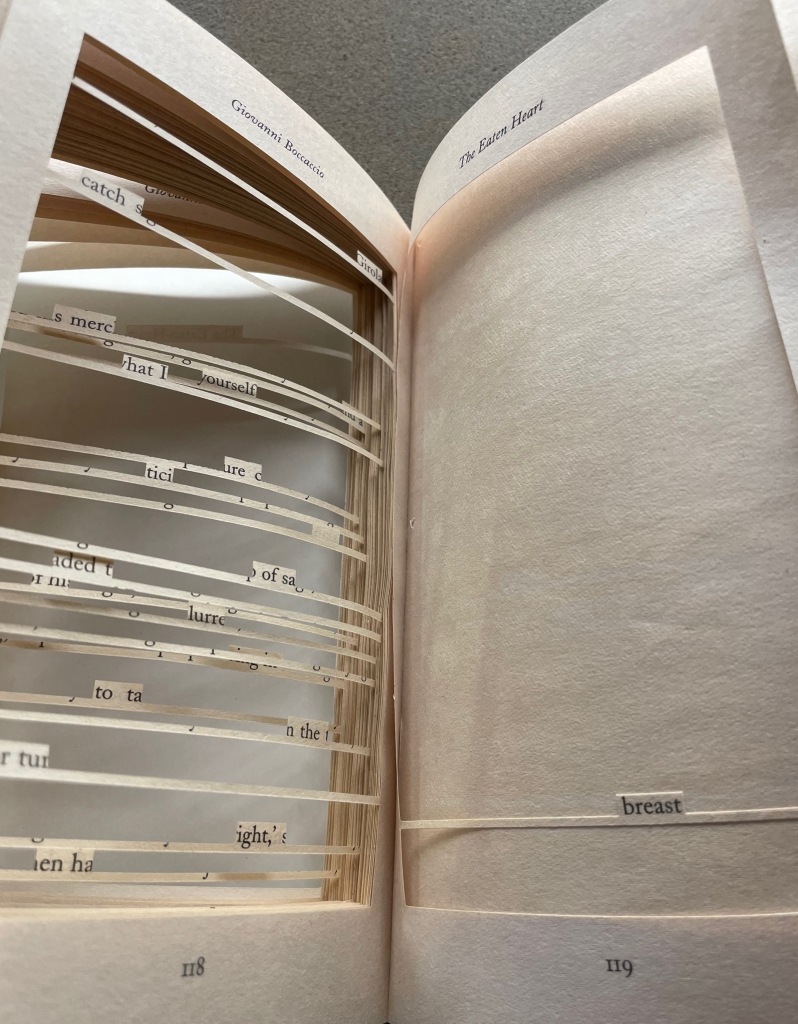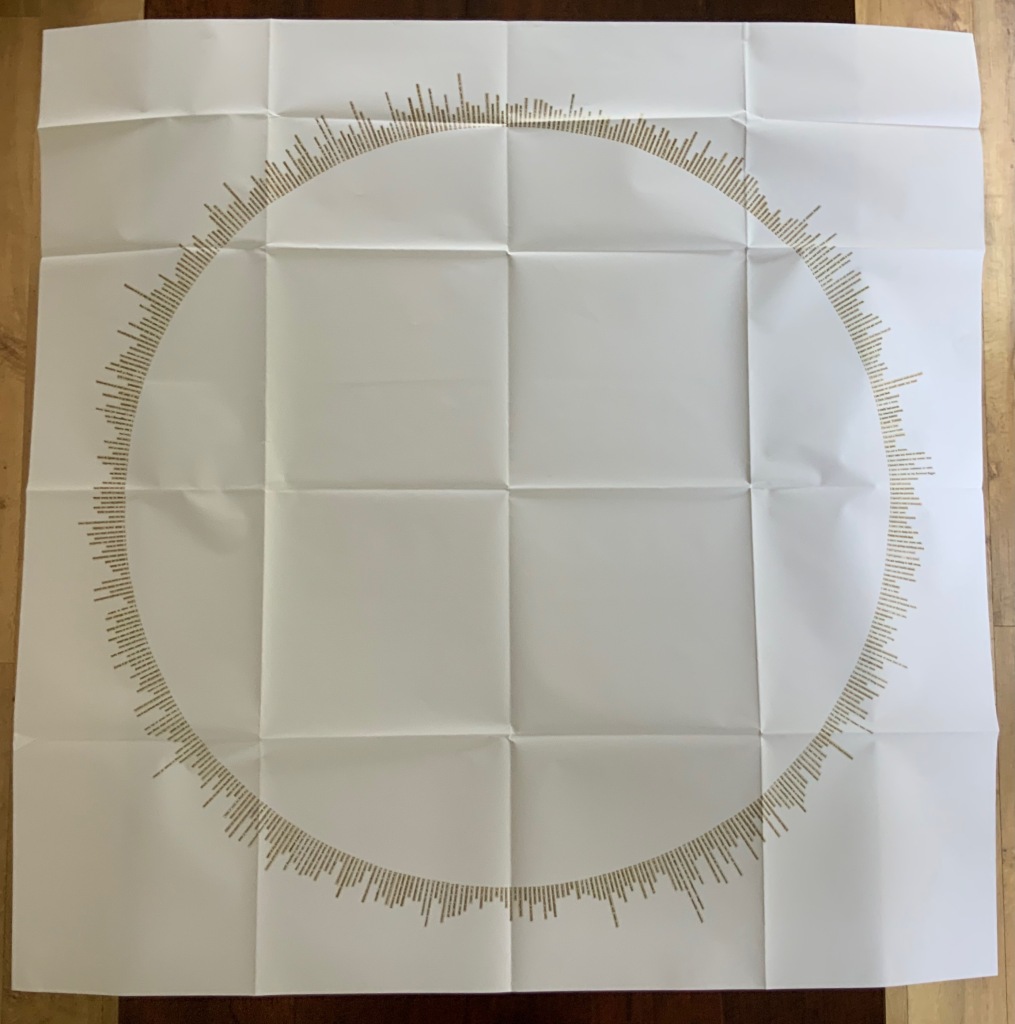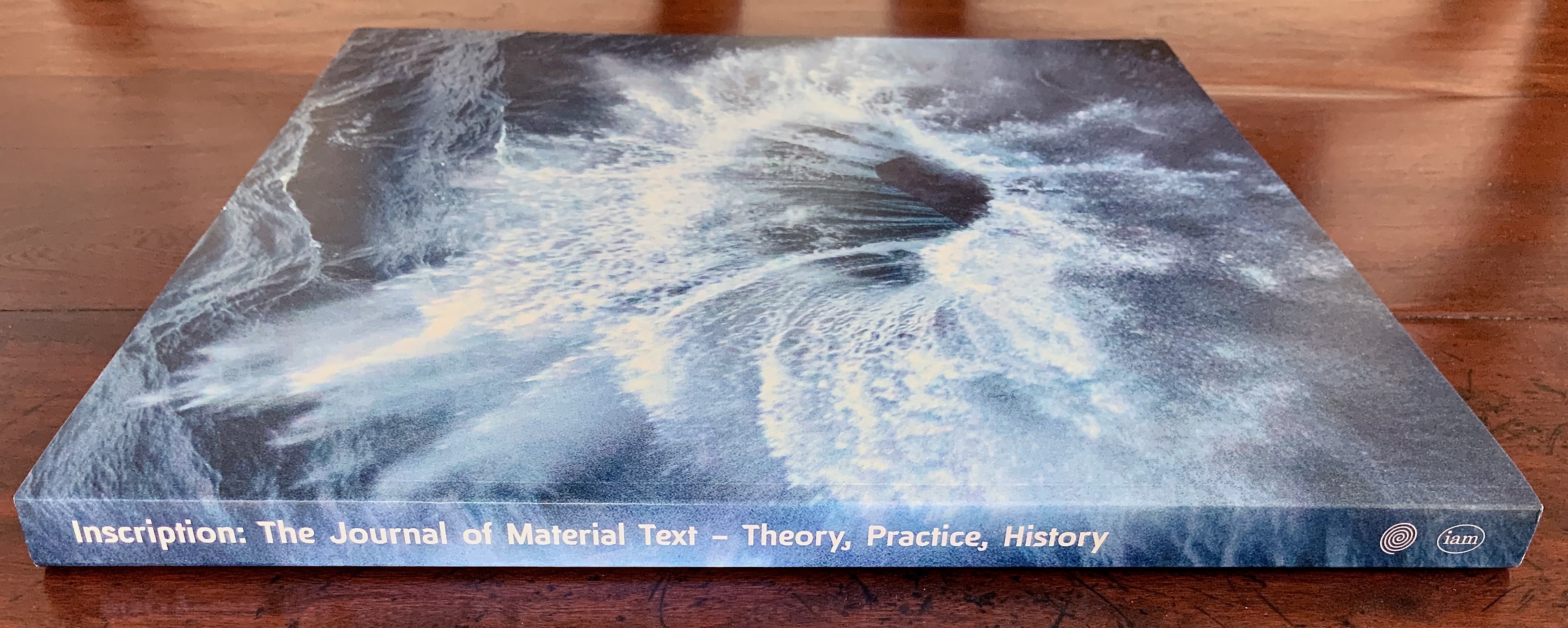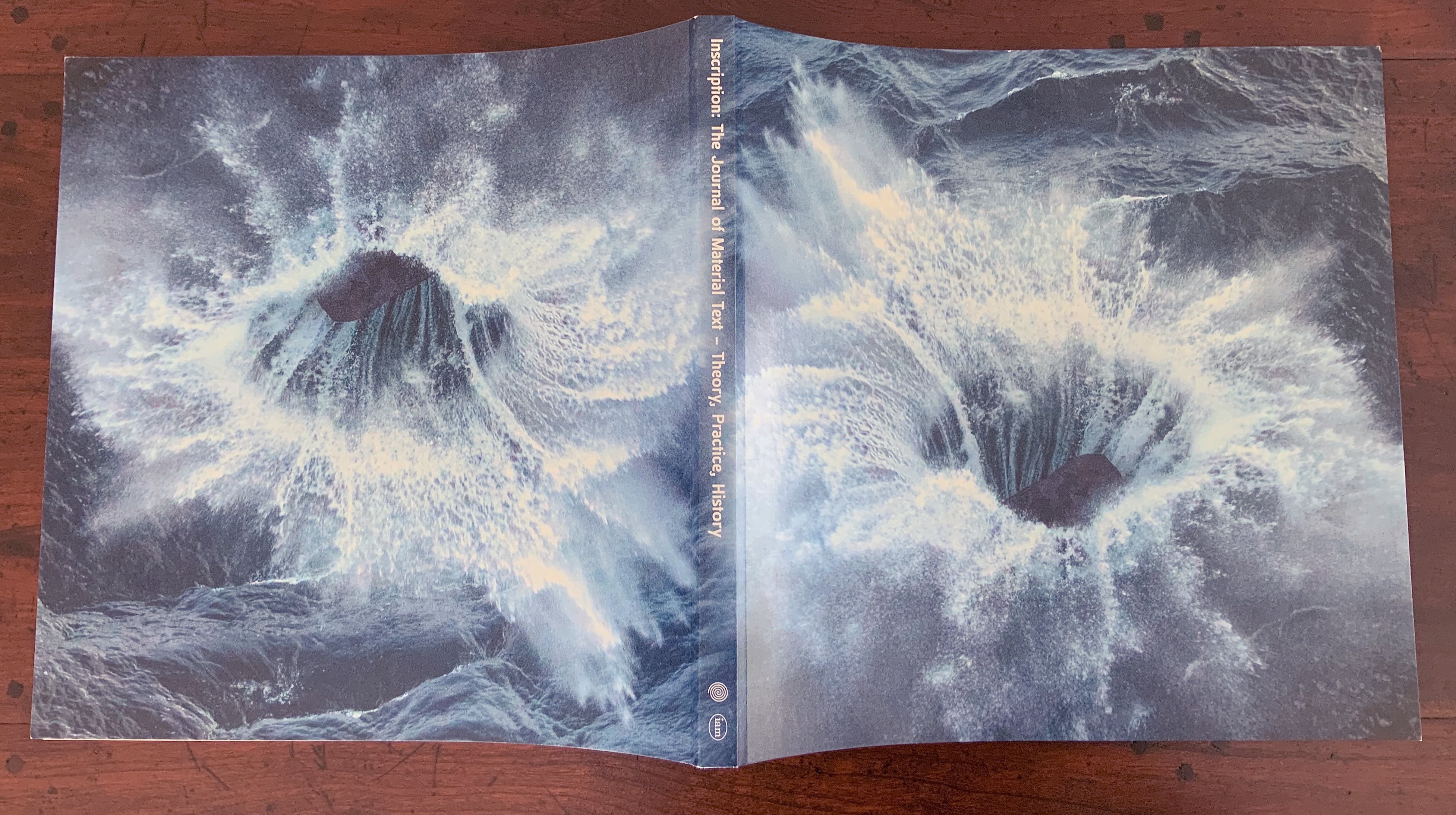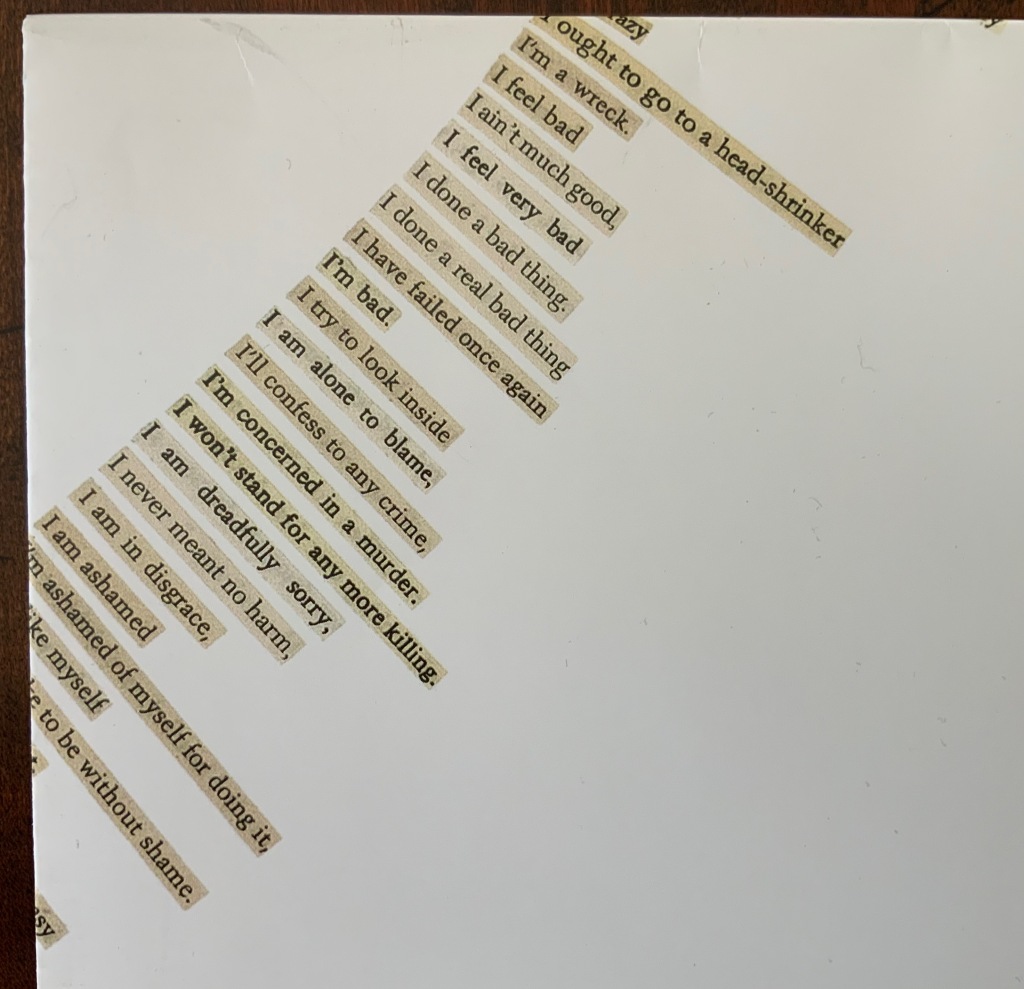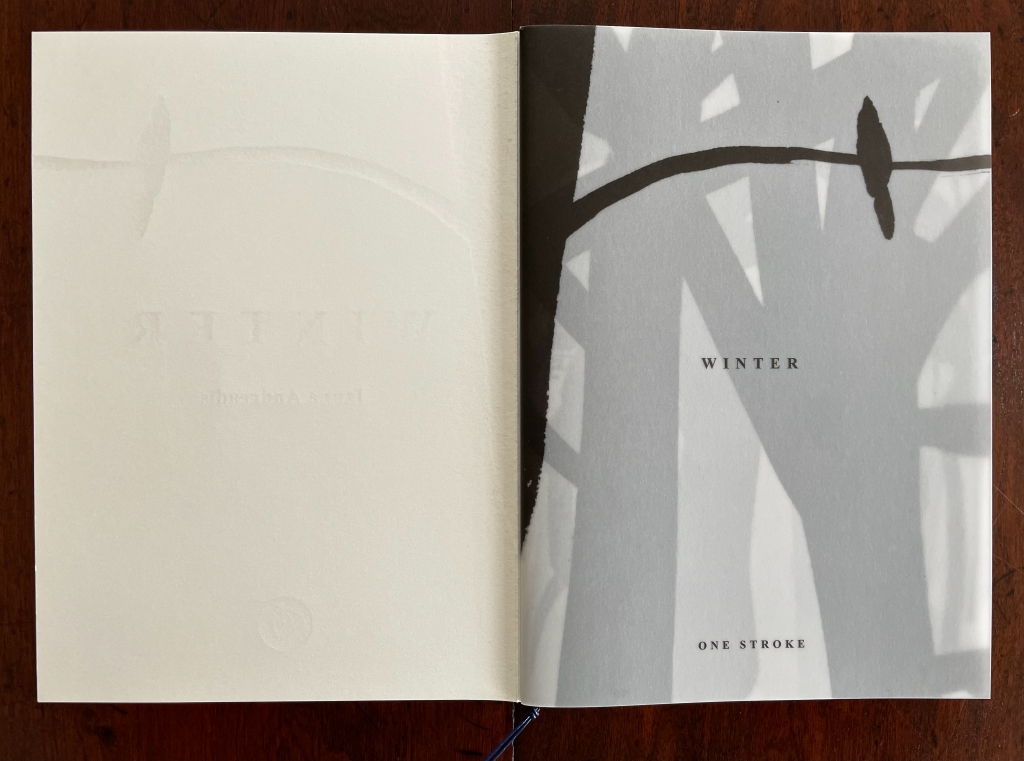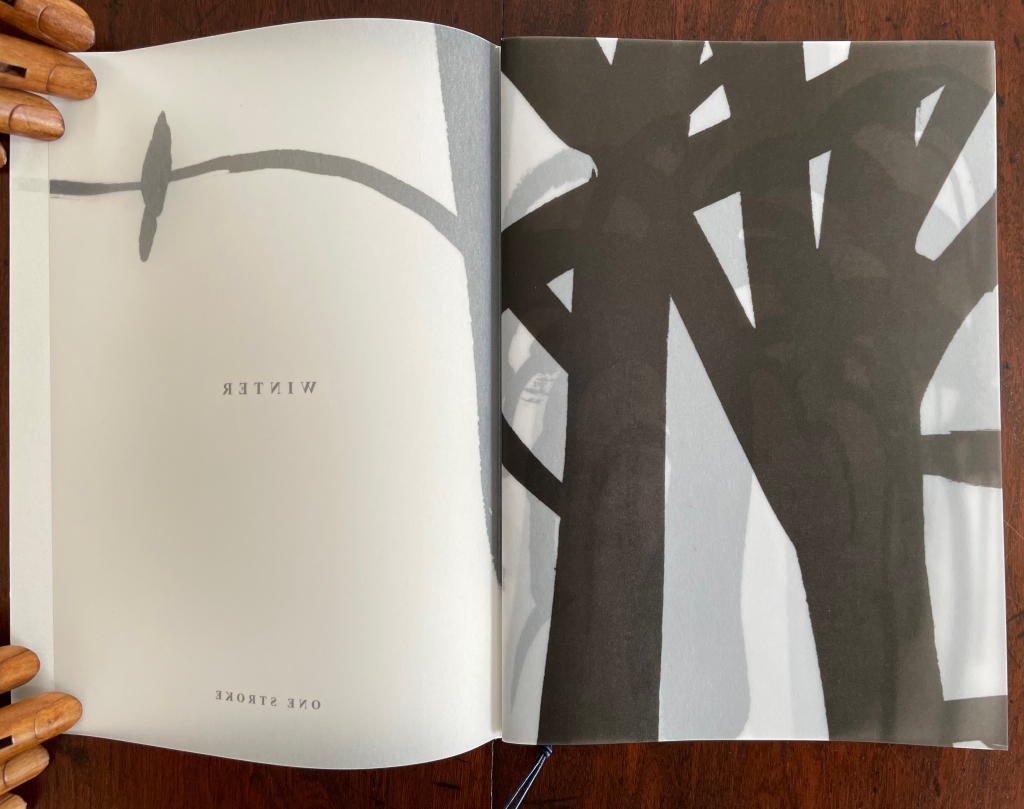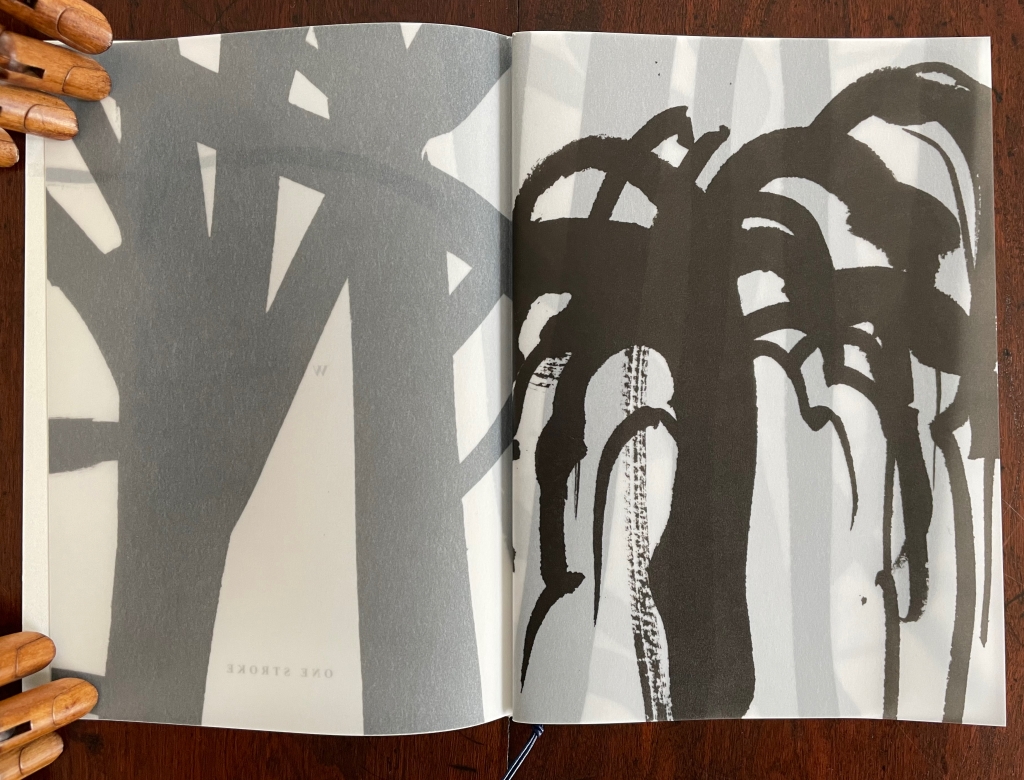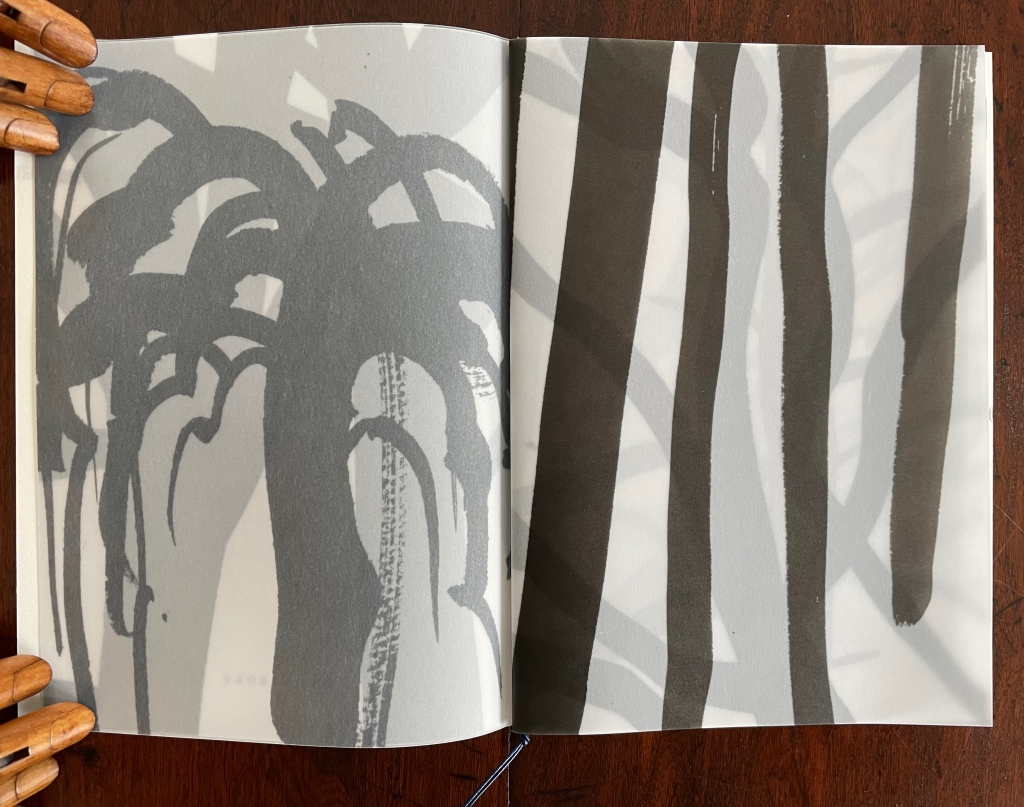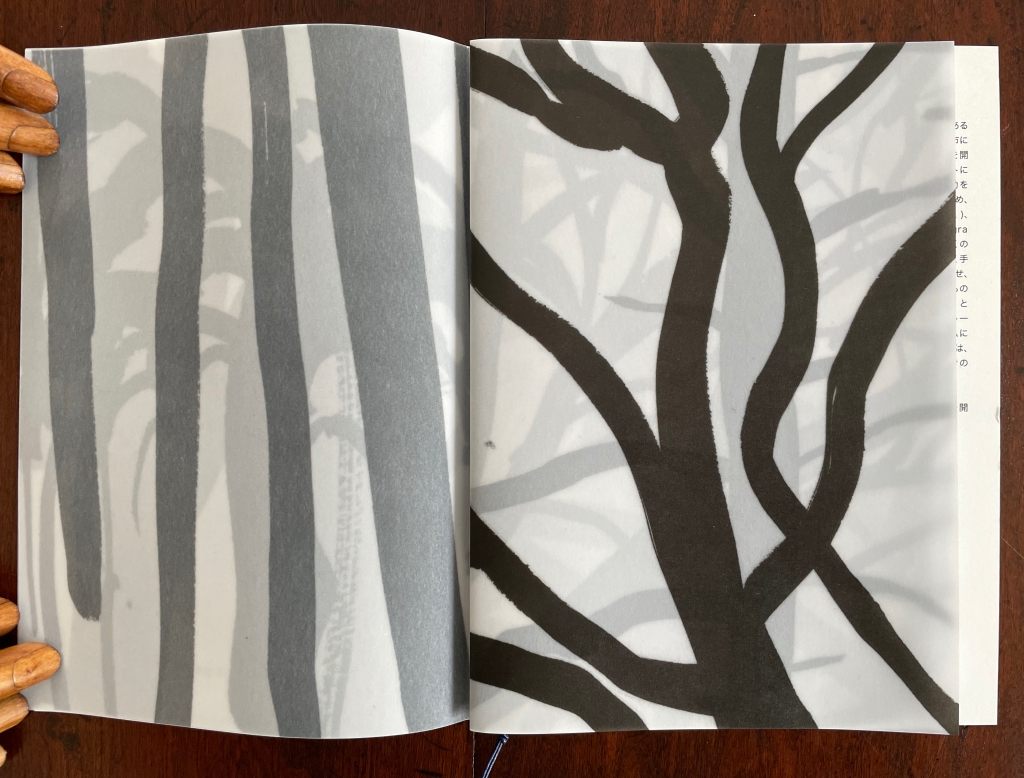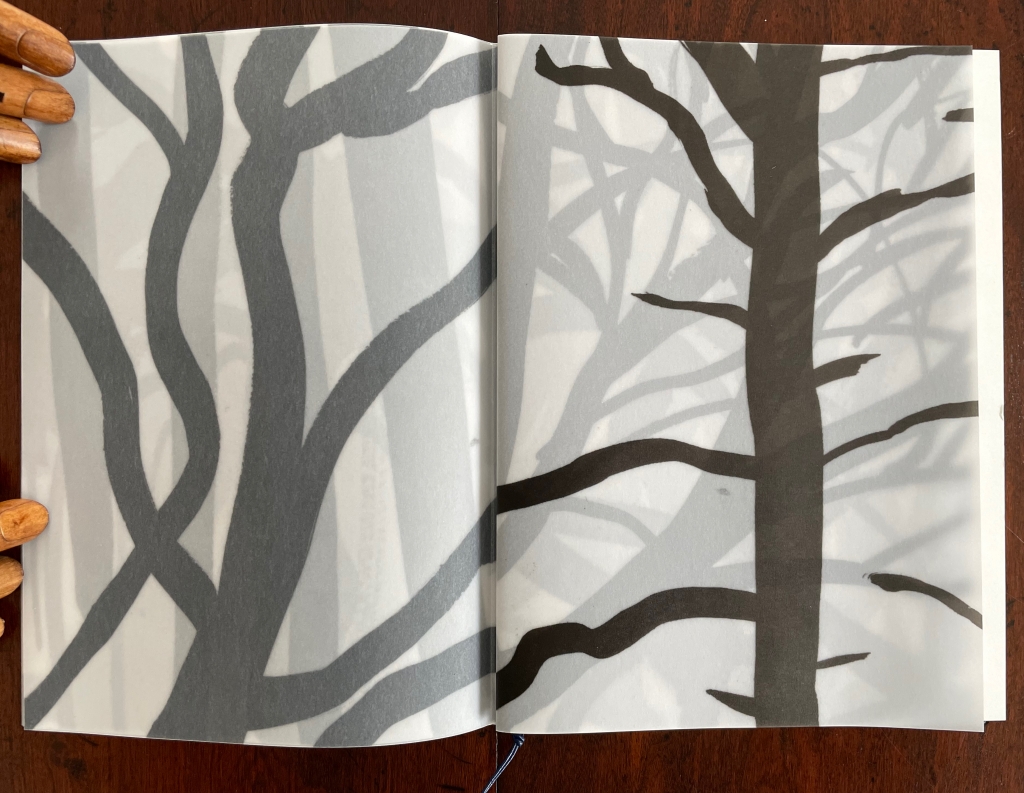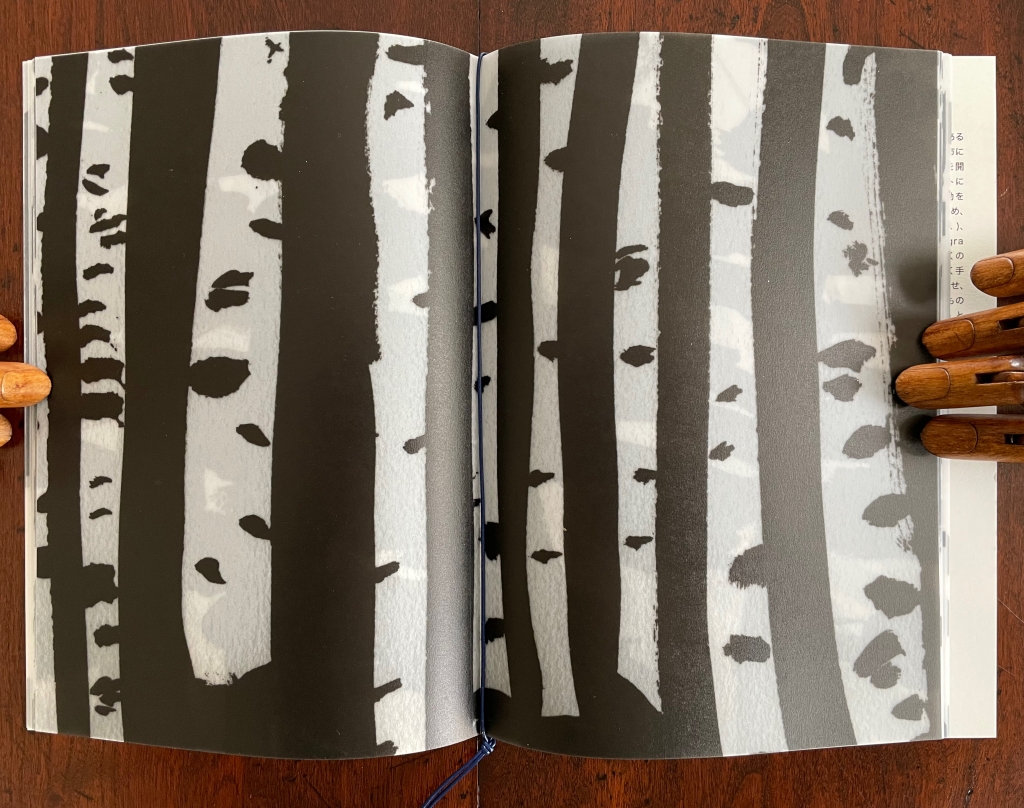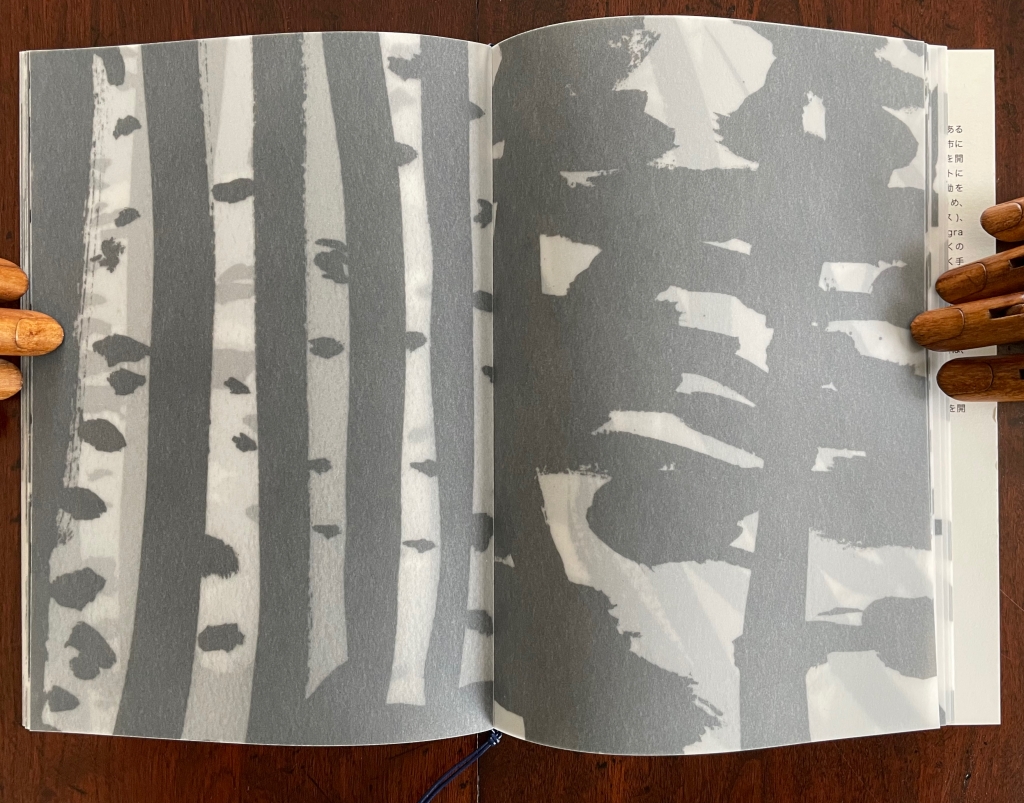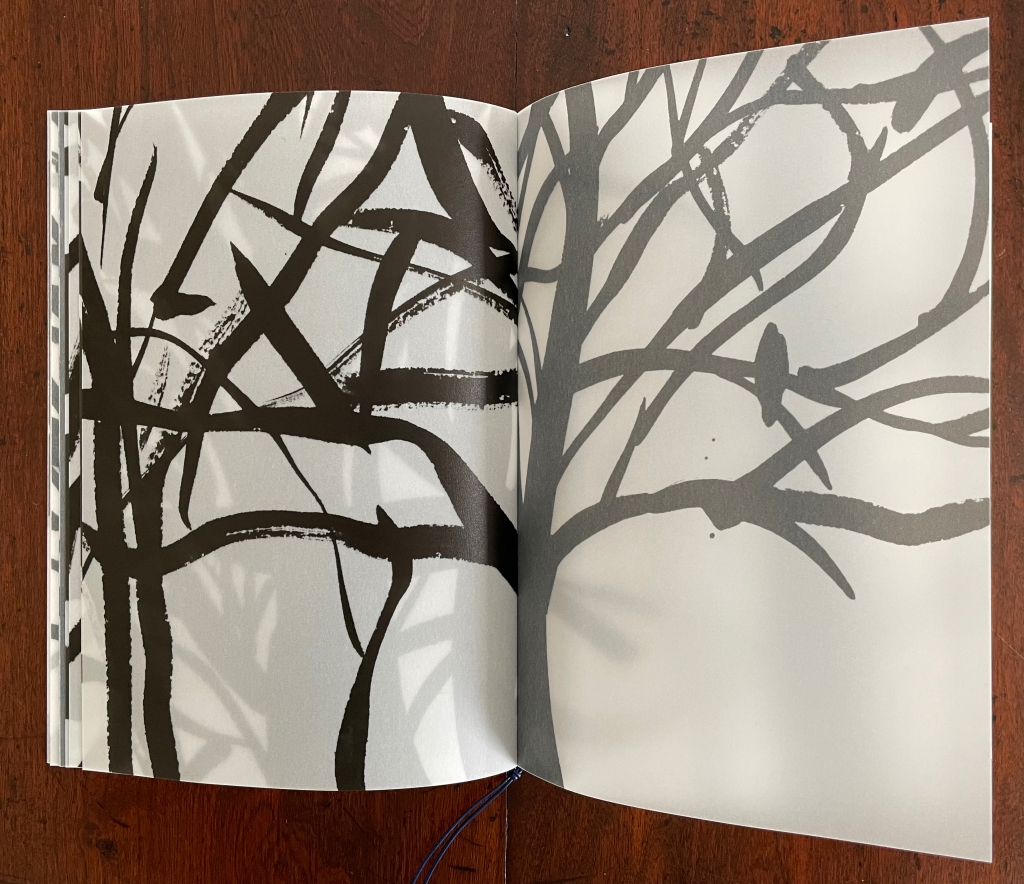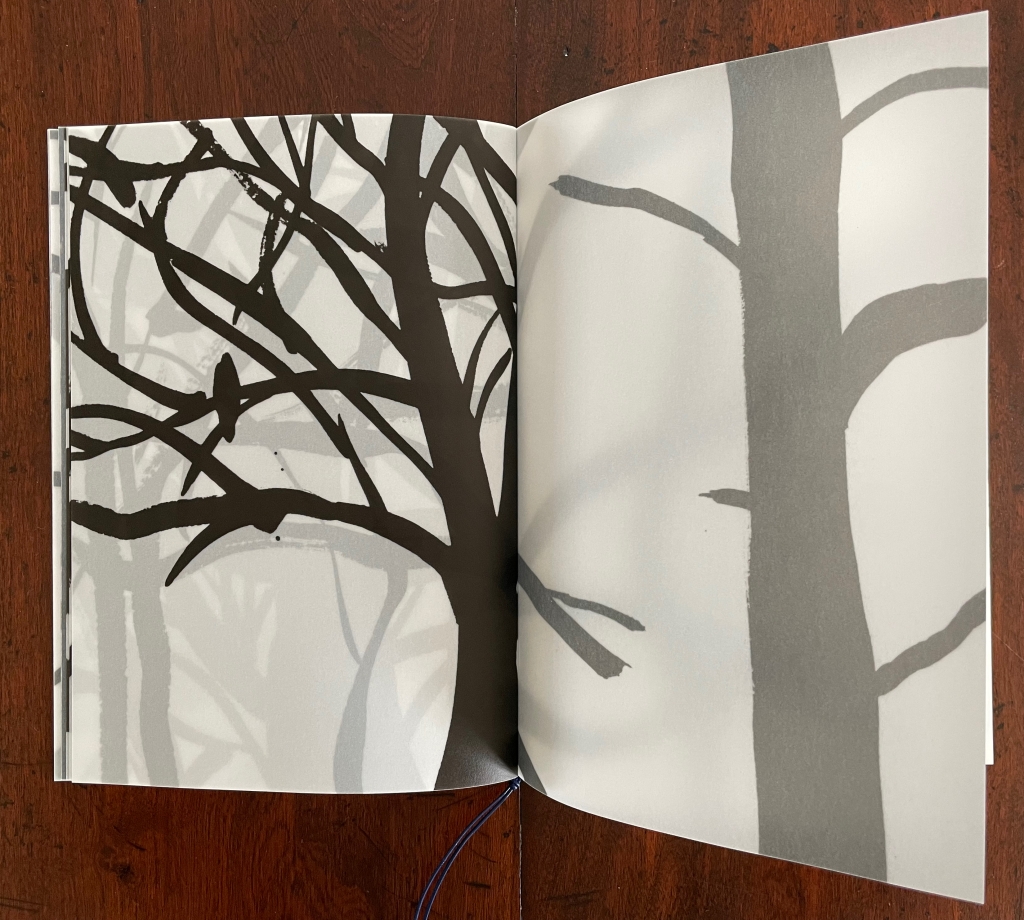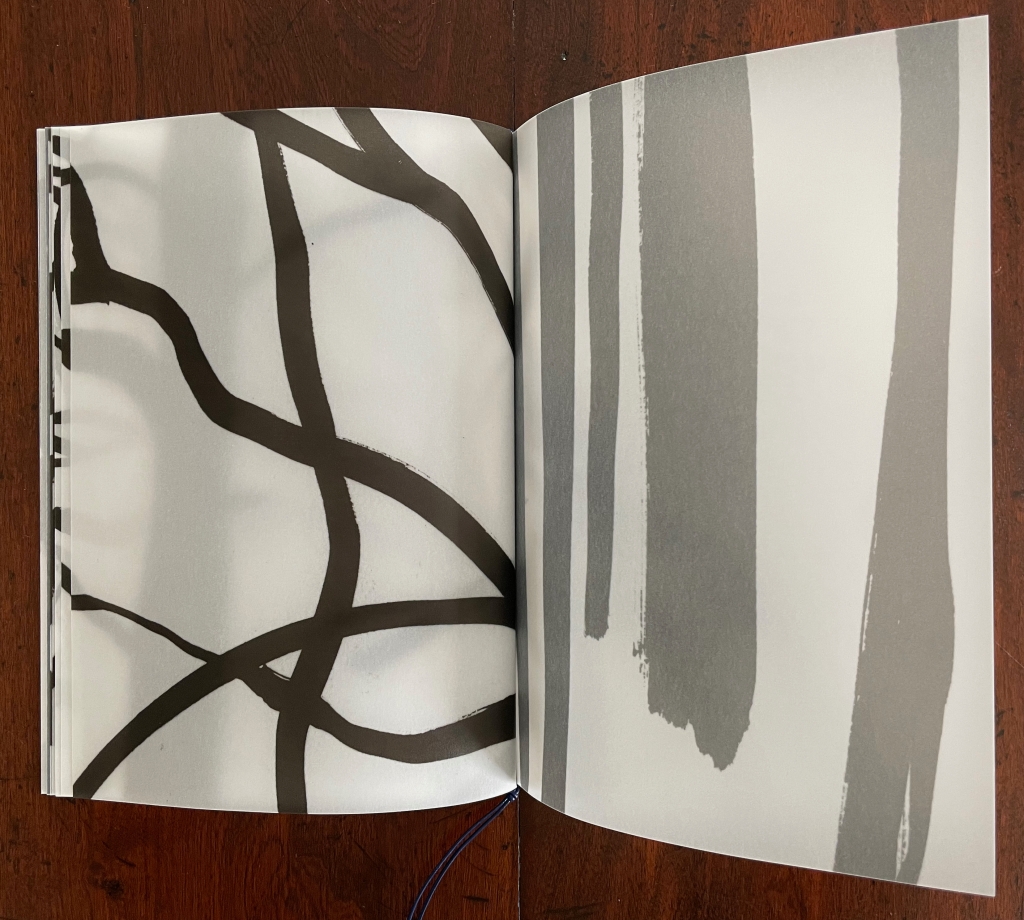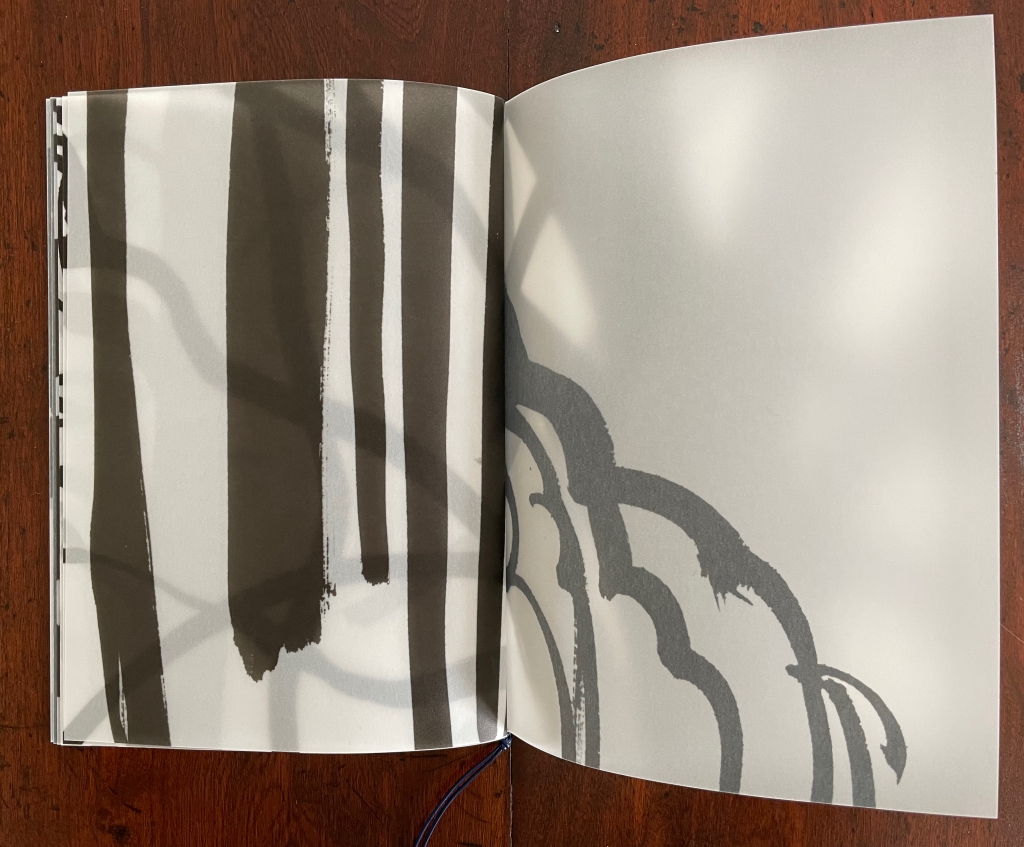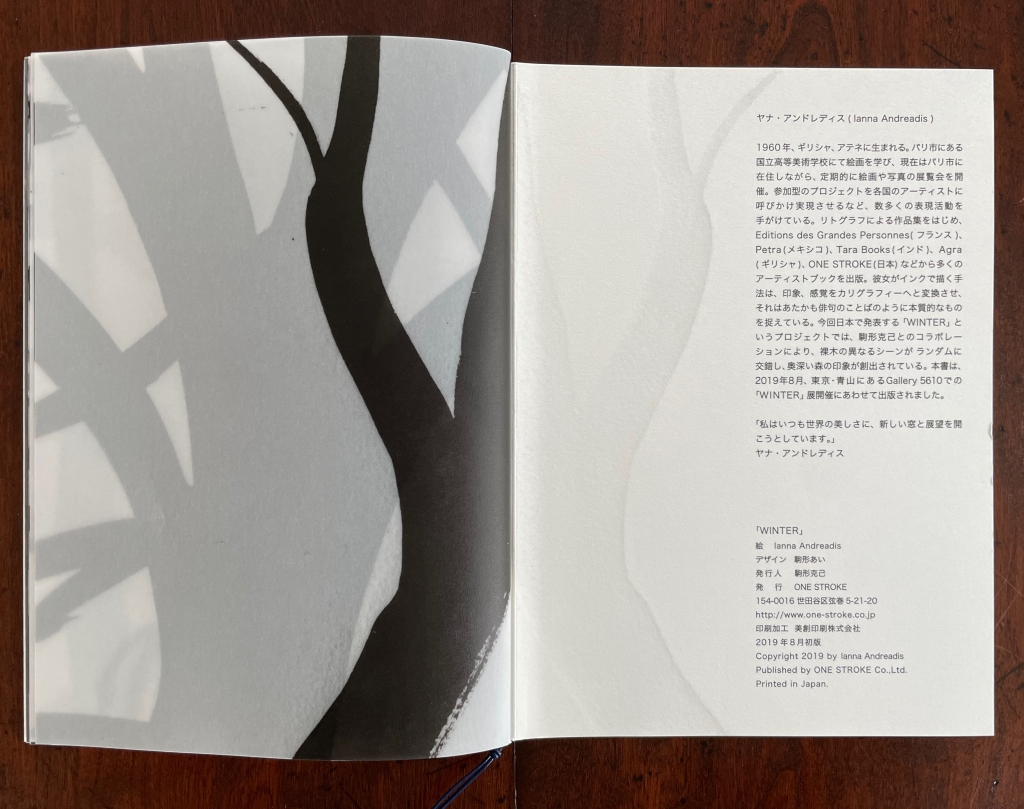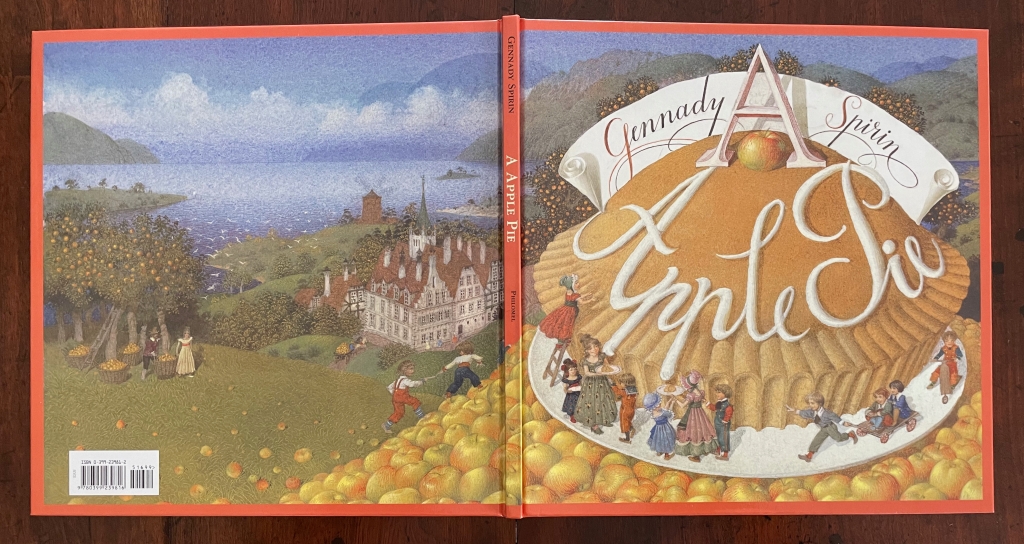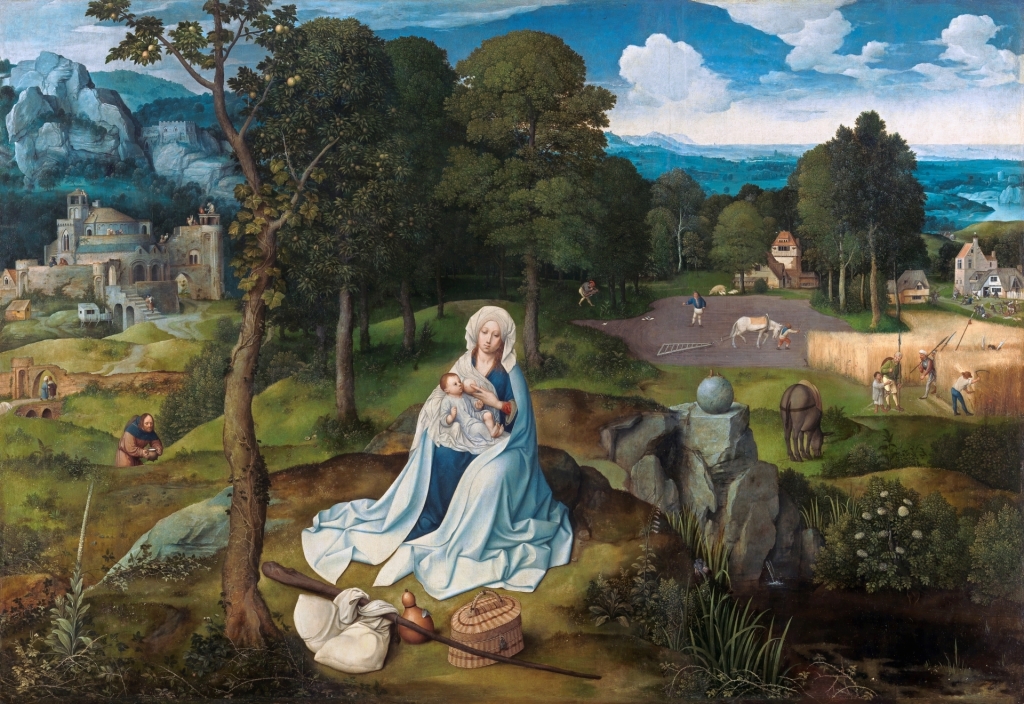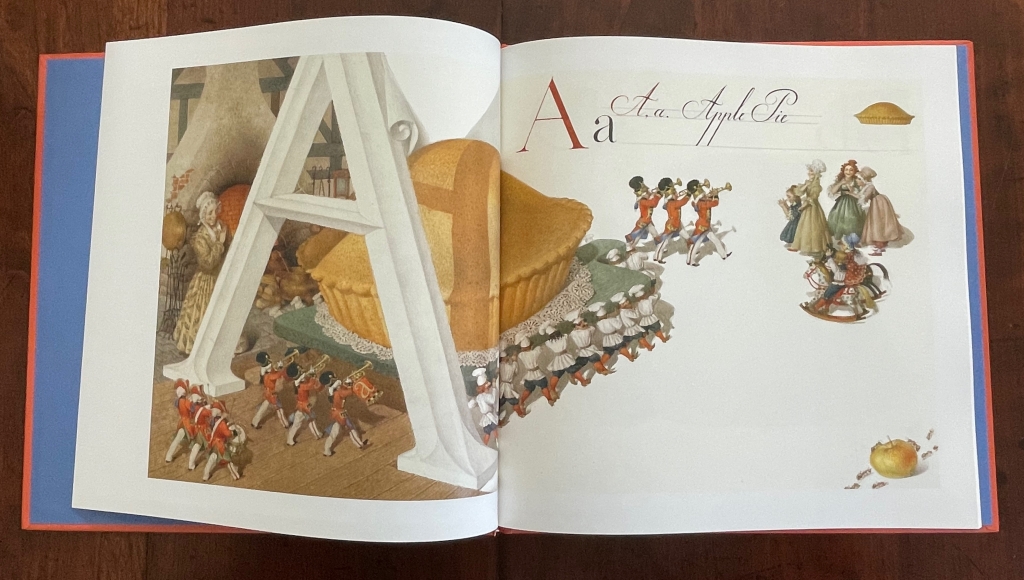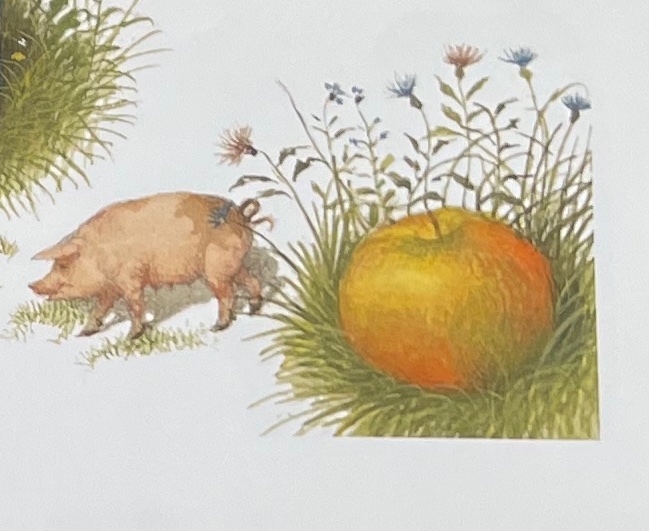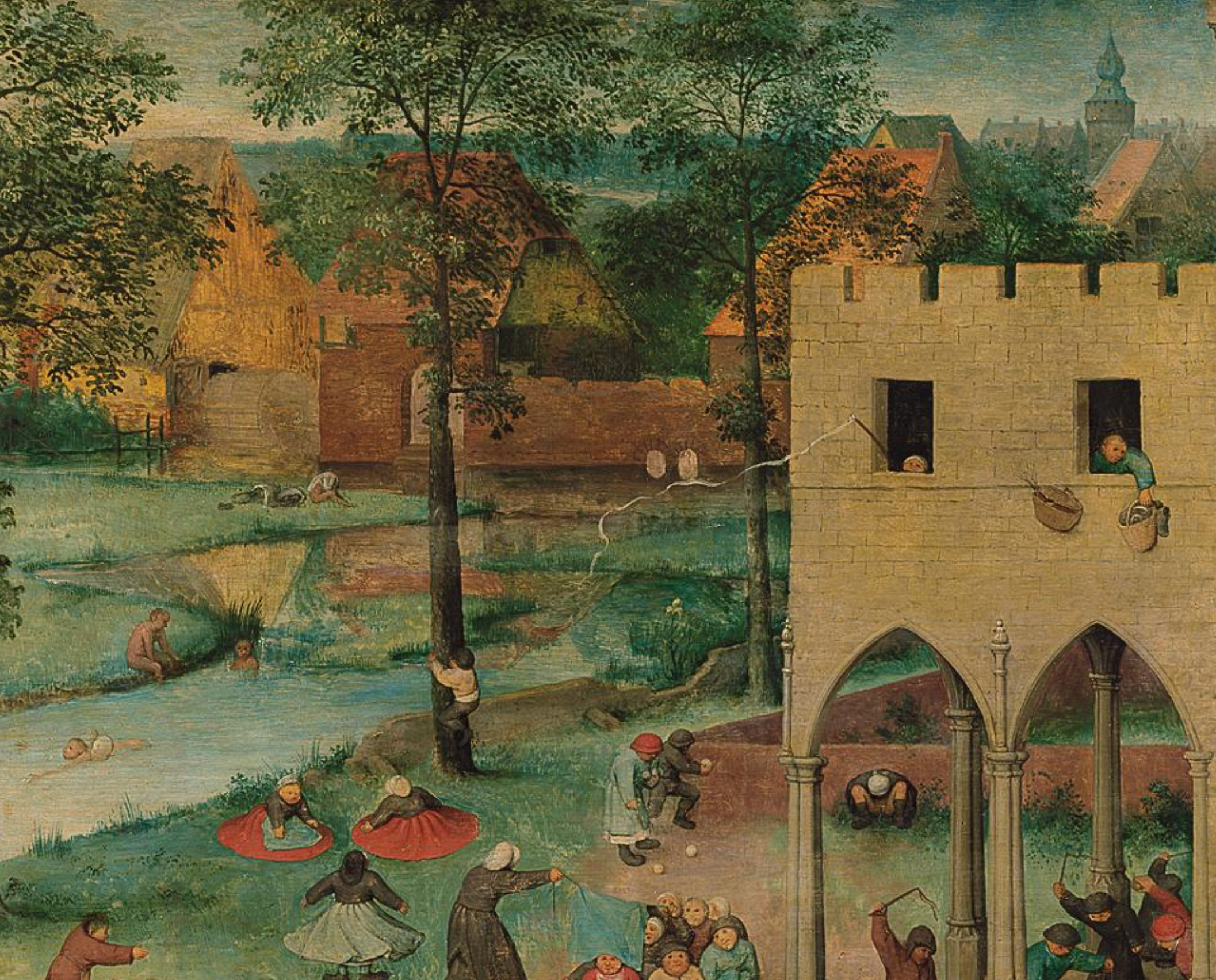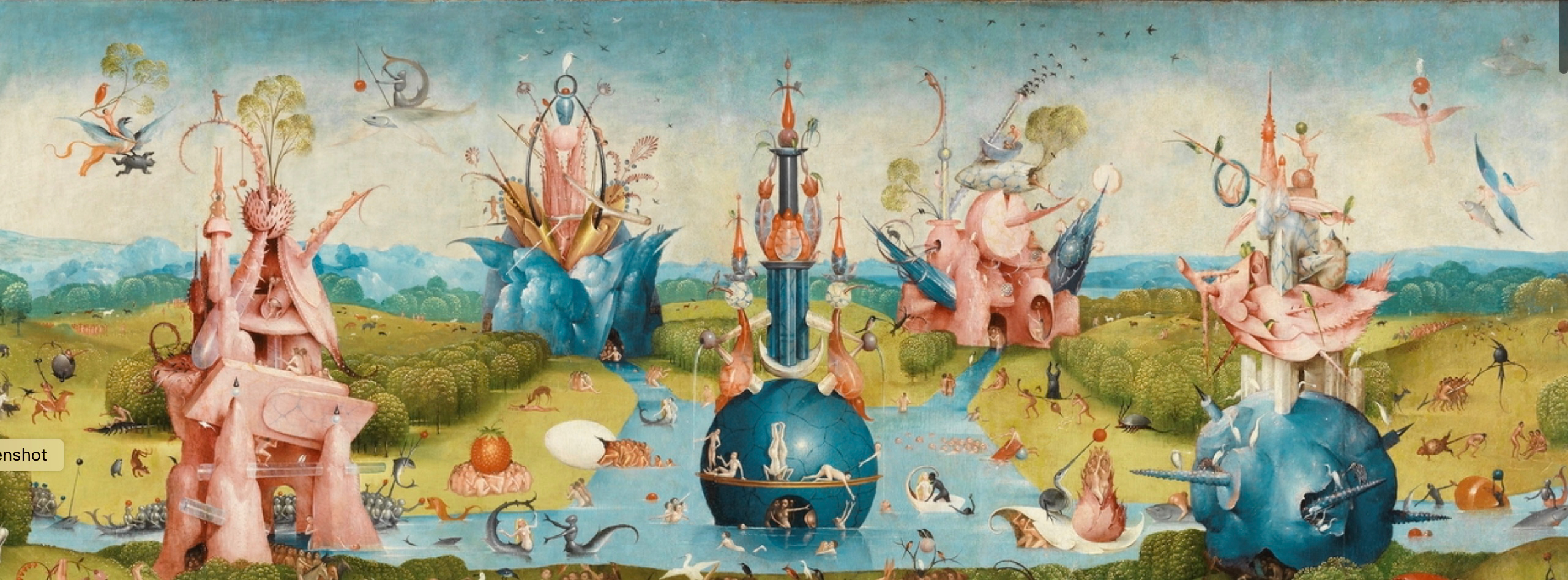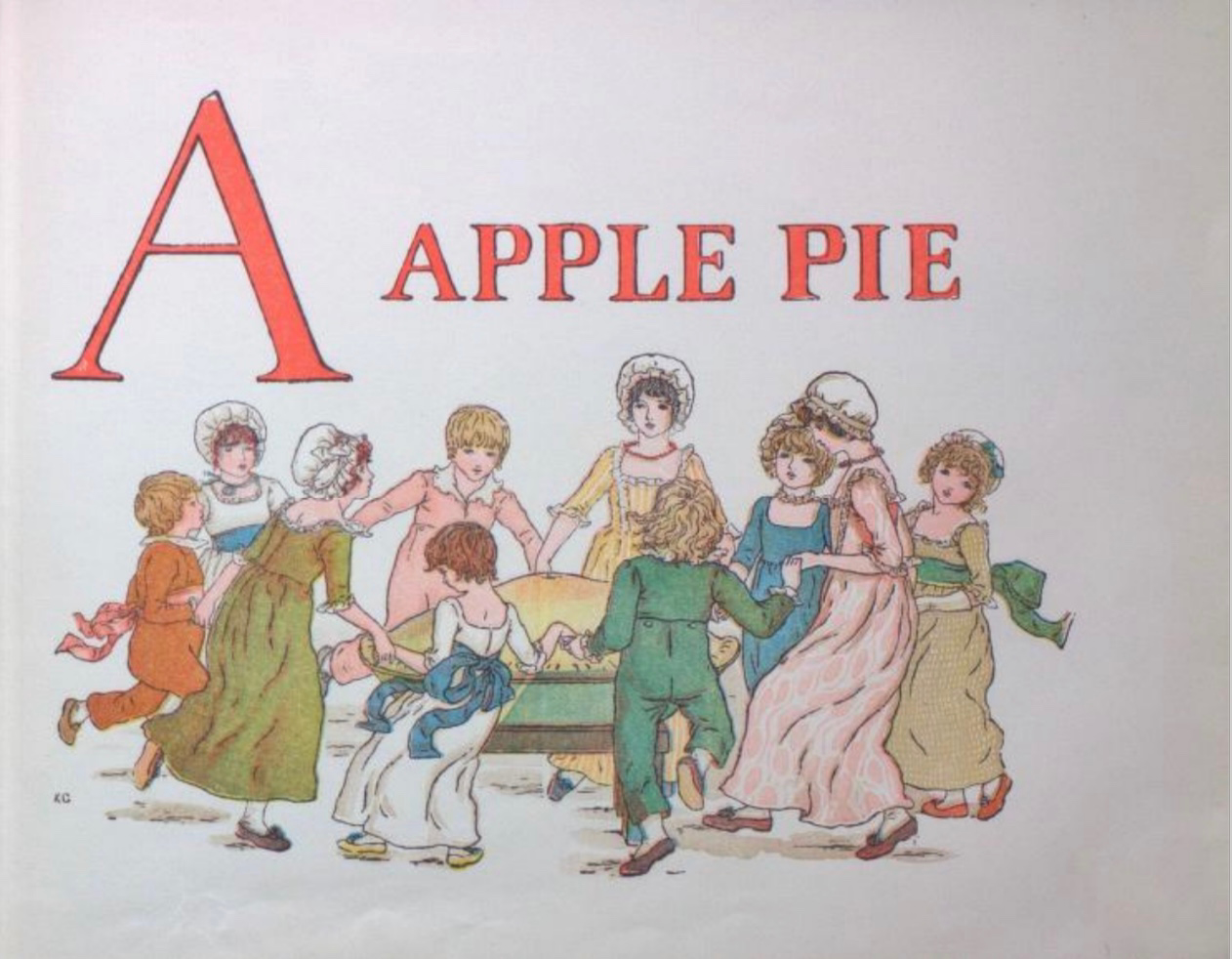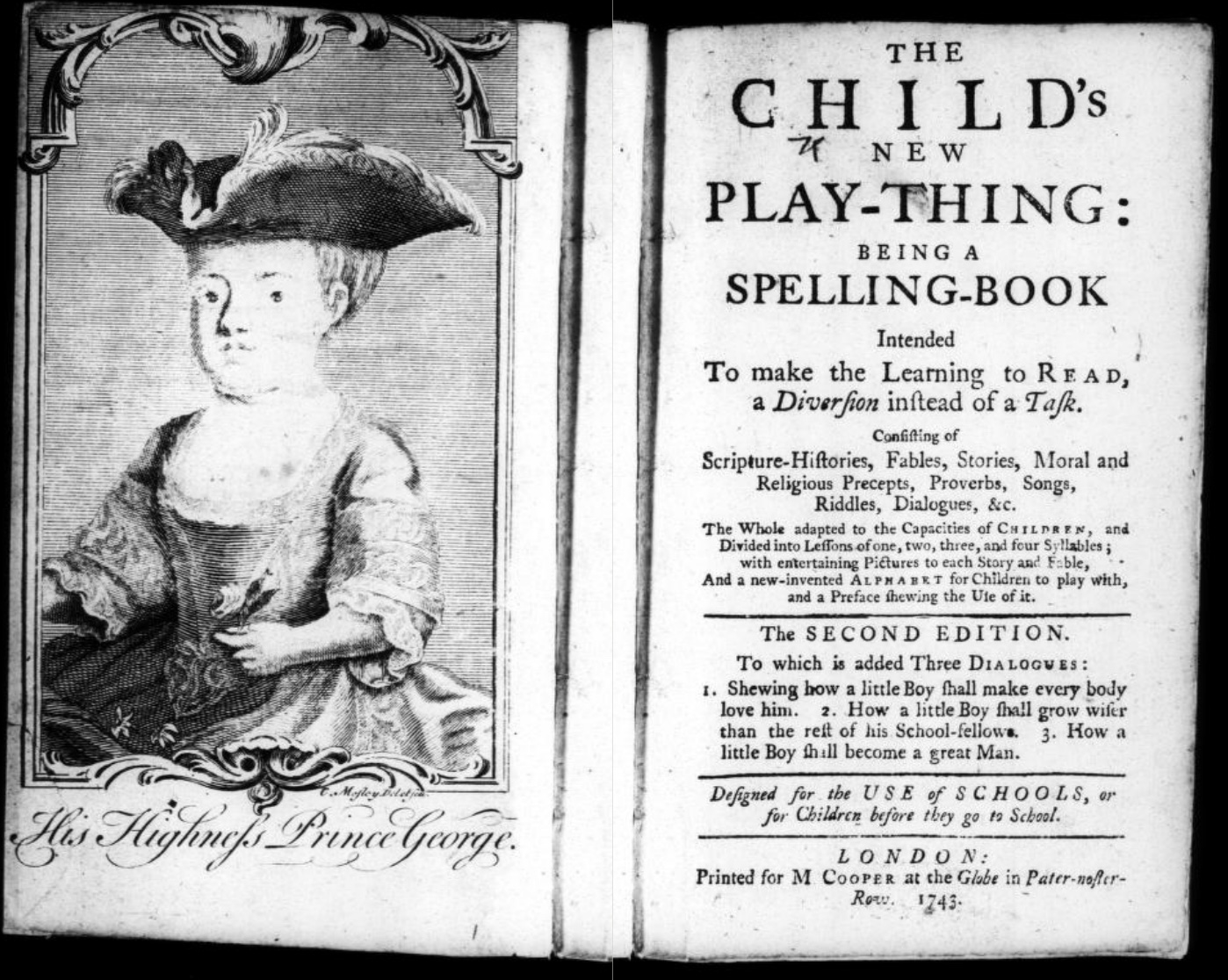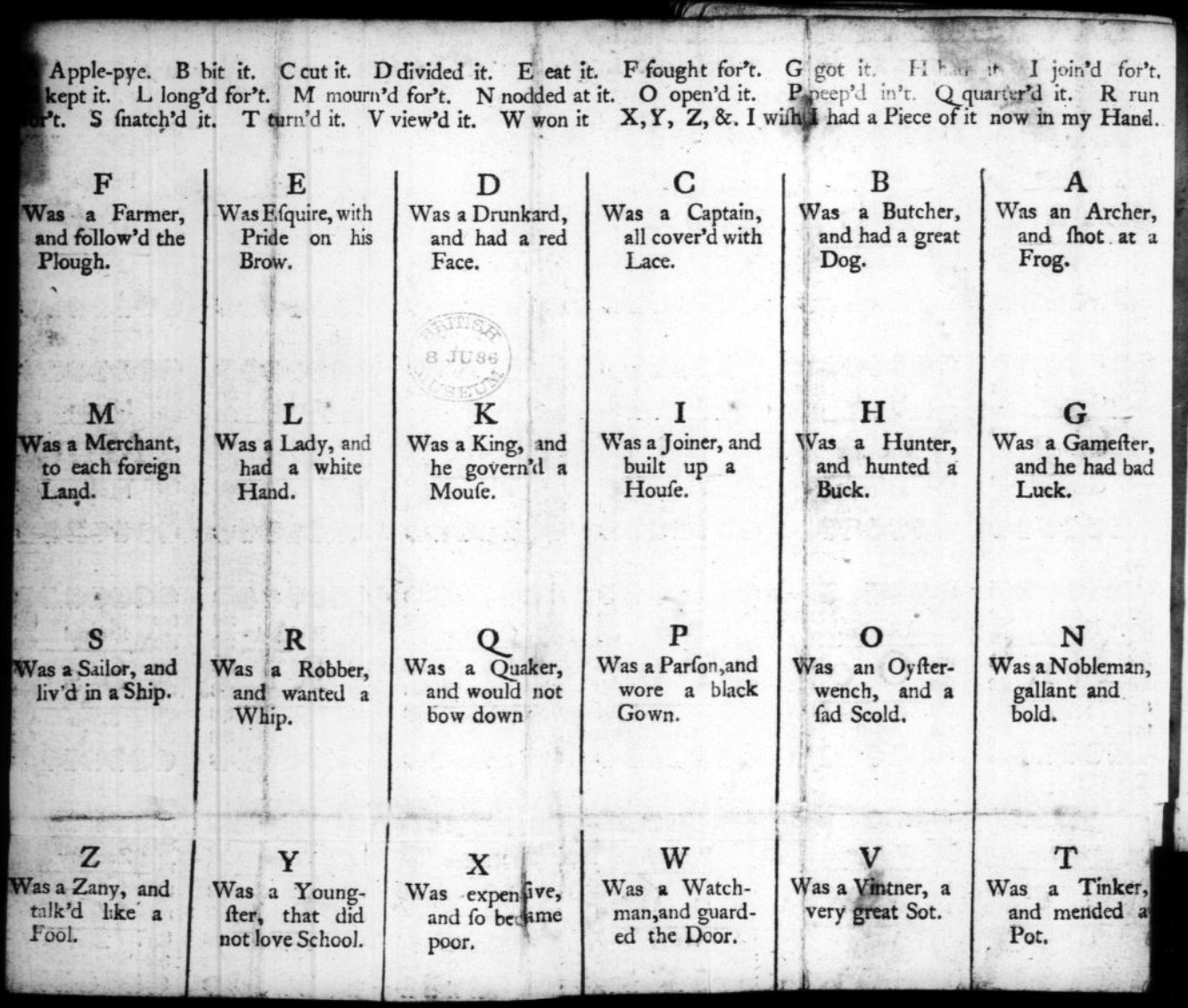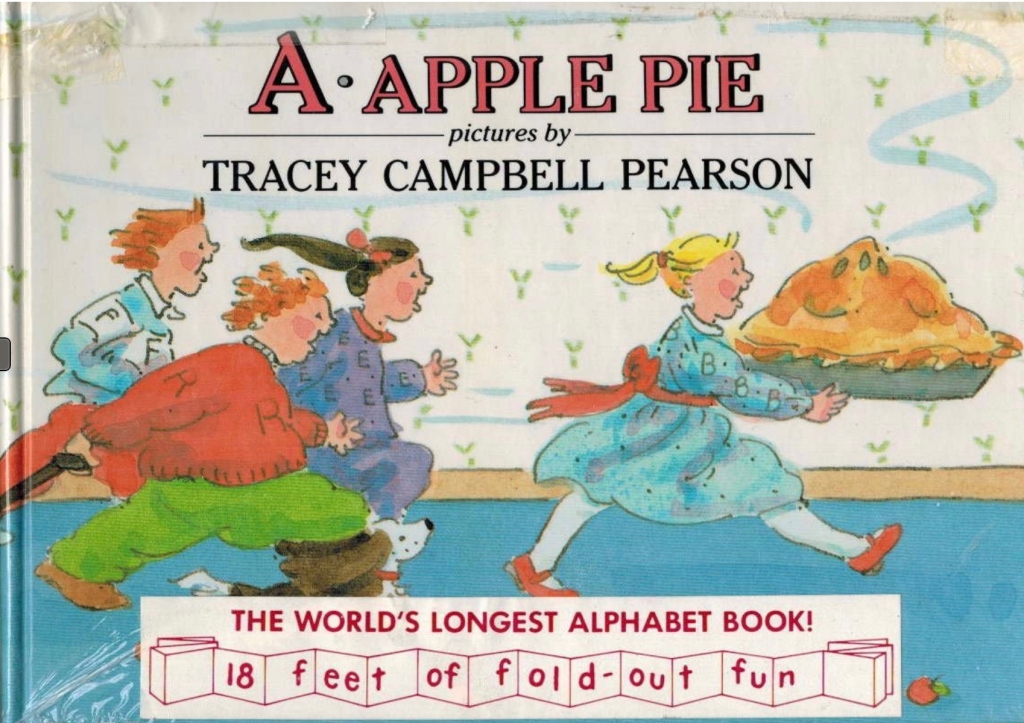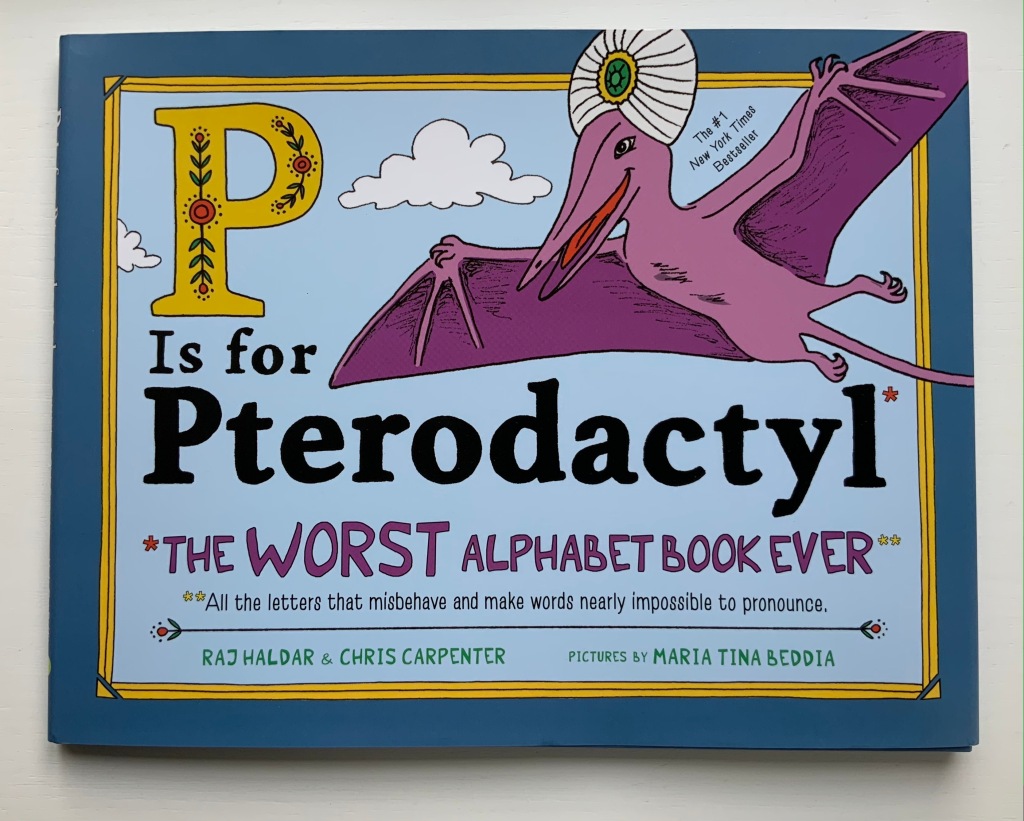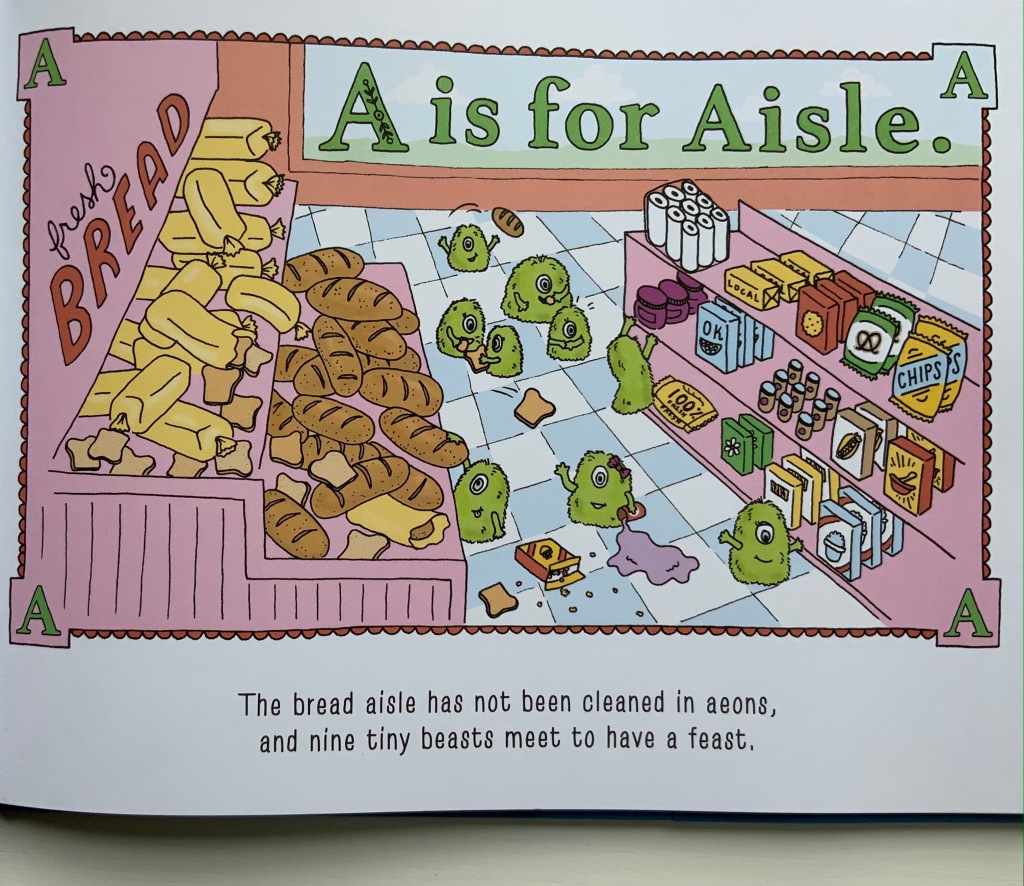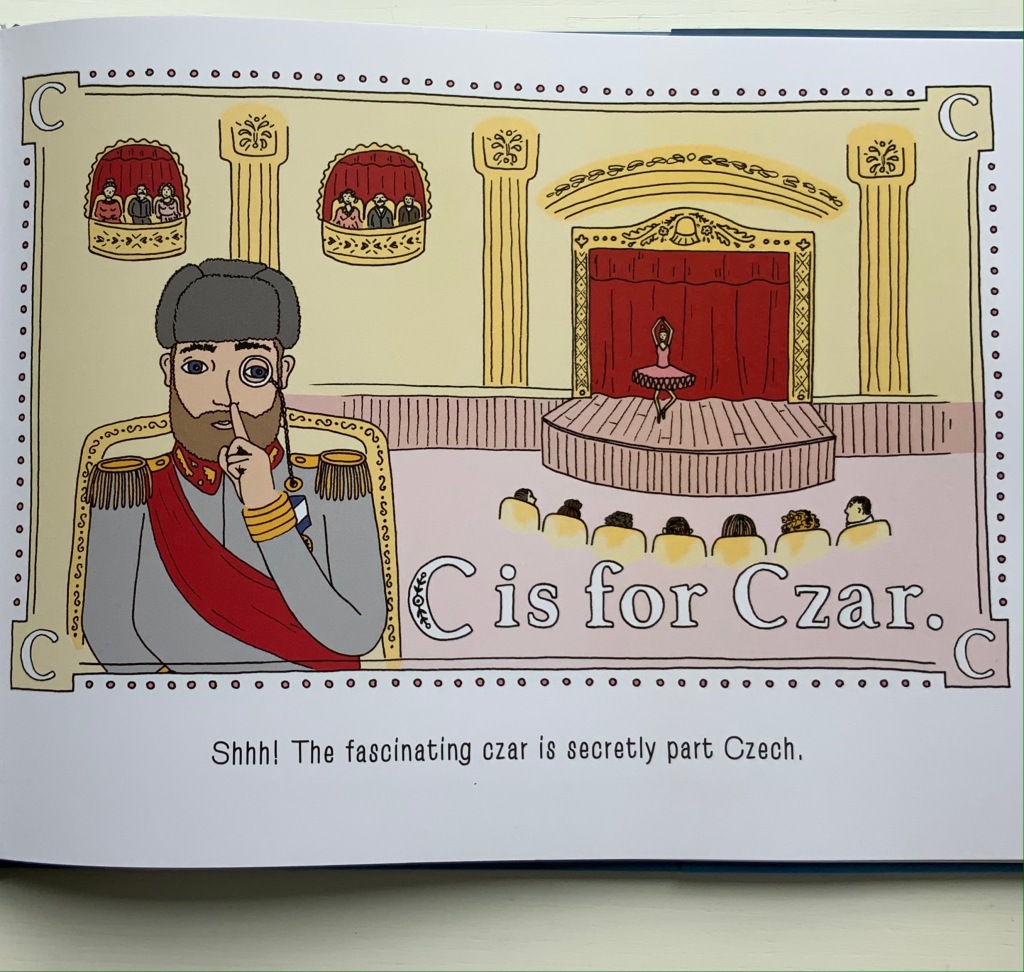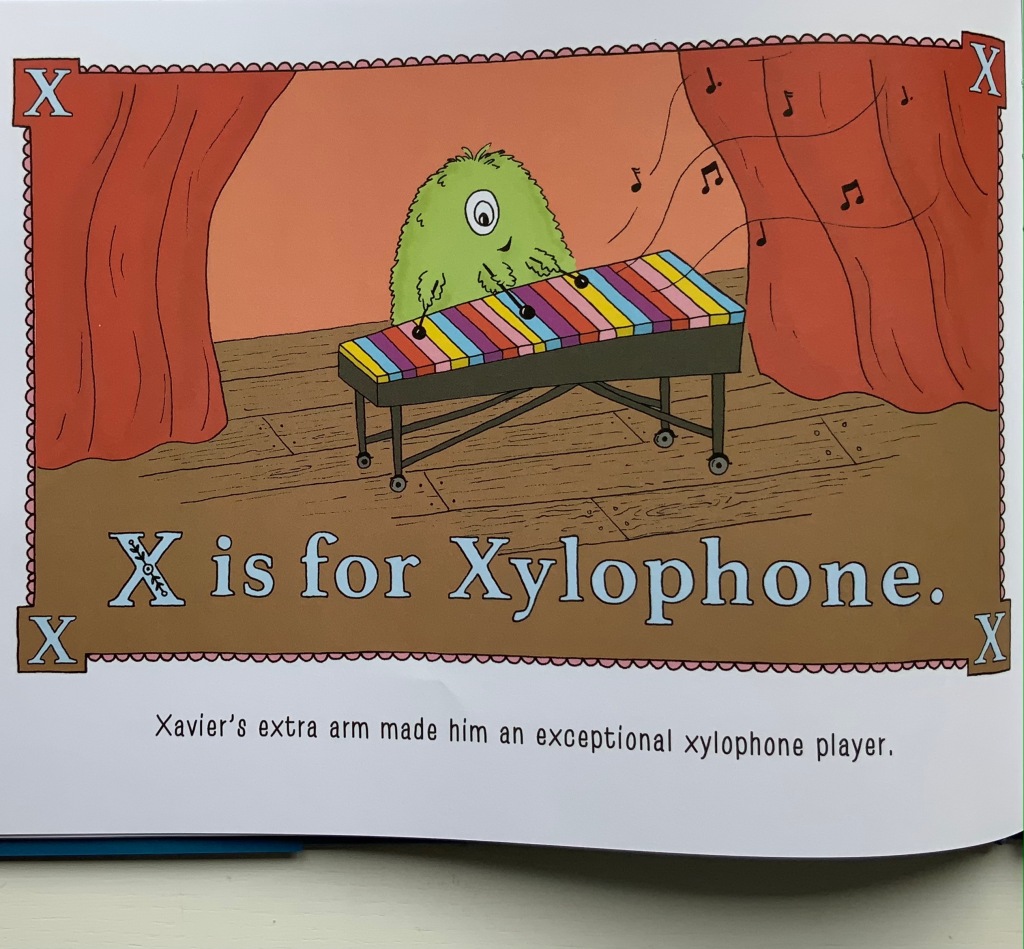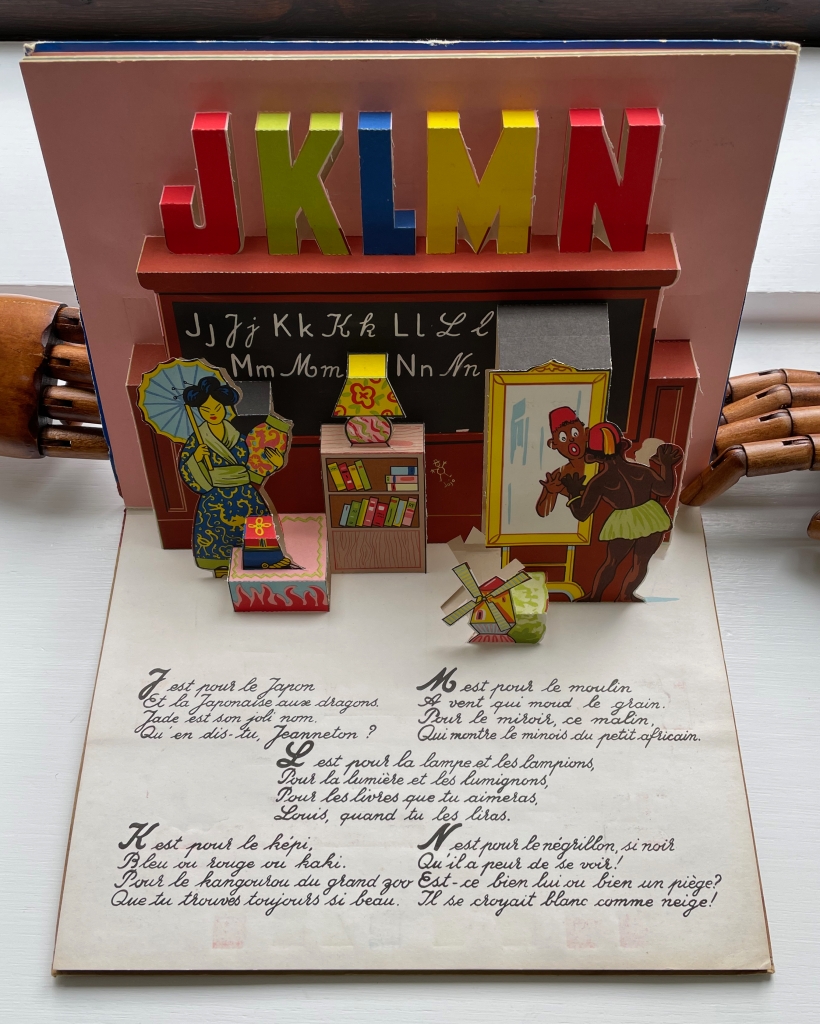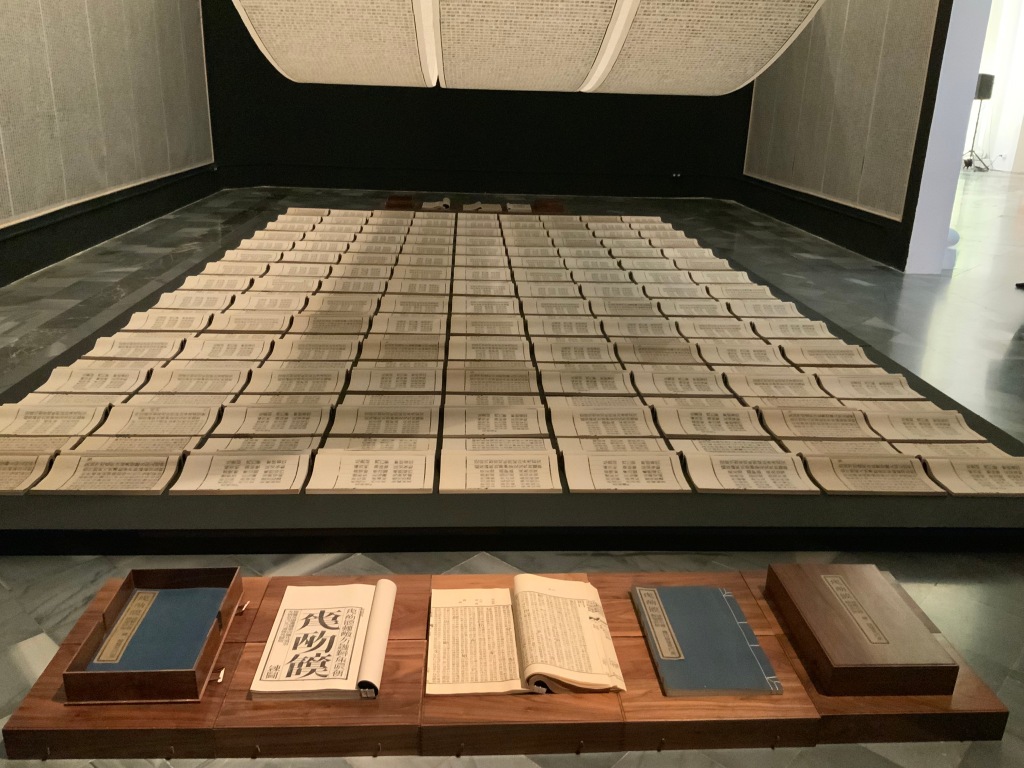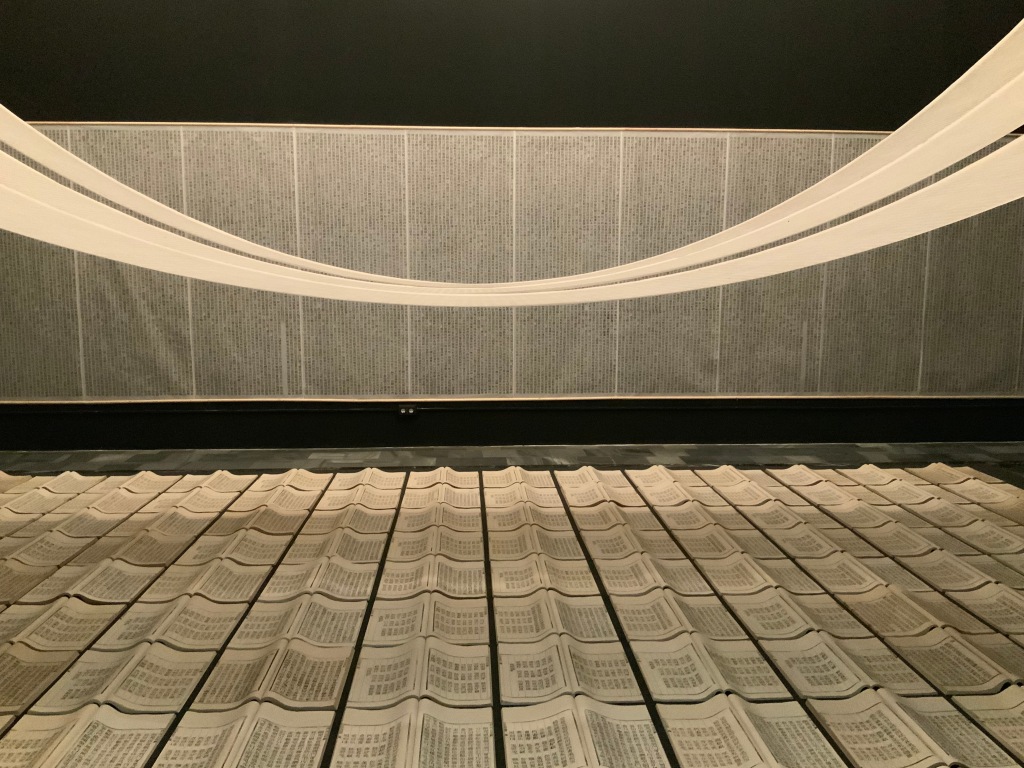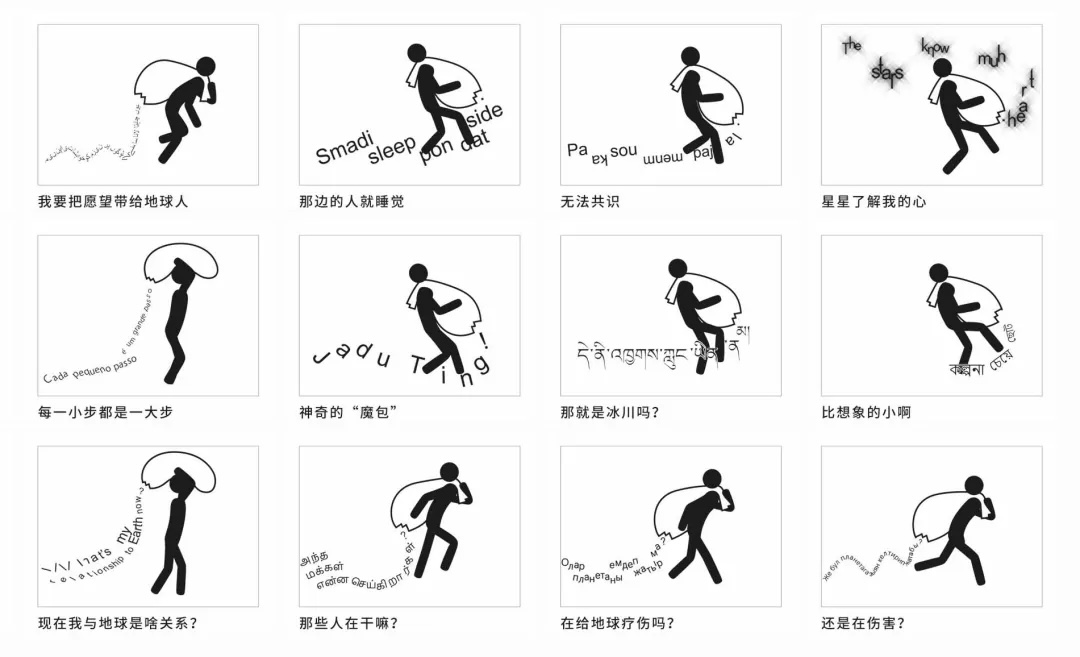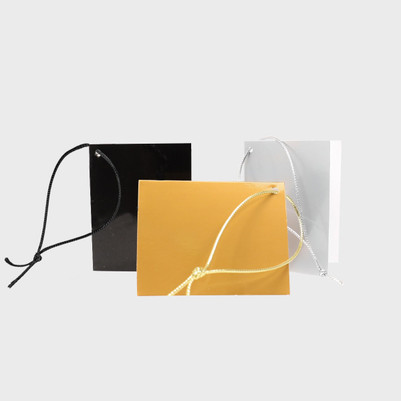The Fall (1976)

The Fall (1976)
Michelle Stuart
Saddlestitched with staples in landscape format, glossy paper. H x W mm. 28 pages. Acquired from Specific Object, 15 March 2024.
Photos of the work: Books On Books Collection.
The Fall is one of the earliest publications of Printed Matter, founded in 1976 by a group of individuals working in the arts (among them artist Sol LeWitt and critic Lucy Lippard).
The Fall juxtaposes pages of handwritten text with reproduced photographic views of California, Oregon, and the Pacific Coast. It begins, however, with a one-page fable without any image. The tale describes a fevered recordkeeping in an unnamed state and country (presumably the US) and how their respective written histories came to occupy an entire city, then the entire state and finally the entire country. According to the story, succeeding generations lost interest in history, deeming it to be useless and consigning it to “its seasonal destiny”. Now, only fragments of it are to be found in the Western deserts. The fable’s conclusion: “Depending on ones [sic] view [,] fragments of time have dimension.” With this introduction, each page of text and its facing image become one of these fragments, and the images’ paired photos for antique stereoscopic viewers add a wryness to the fable’s qualification “depending on one’s view”. The ending, however, signals deeper points to come, as does the absence of an image with the fable.

Place and date introduce almost all of the entries — Monterey 1602, Salinas 1842, Tuolumne 1857, Santa Catalina 1758, Pala 1964, Cuyamaca 1847, Calabasas 1890, El Tejon Pass 1851, Soledad 1906, Yang-Na 1769 — but sometimes there is just a place, sometime just a date. Most of the entries come from the unidentified companion of a female character named Red Poppy, who sometimes makes entries in her own voice, and they end with the undated burial of Red Poppy at Yosemite, Mariposa County, her grave marked “with a pile of white quartz”. The entries come in varied tones — fabulistic, folkloric, vatic, mythic, cosmological, philosophical, reportorial and personal. As the list of places and dates above shows, the entries are not chronological, reflecting how time and space fold separately and together in The Fall. How else to explain the writer’s span of experience from the sixteenth to twentieth century, or to make sense of “vast maps that charted the passage of time and captured the essence of place” carried on the journey recorded. The Borgesian idea of a 1:1 map expands to envelop time as well as space.

Many of the images that follow the fable depict views of waterfalls, yet the title of the work is The Fall. Why the missing “s”?
Another artist’s book in the Books On Books Collection that uses the technique of juxtaposing indirectly related text and photos to capture a mythic sense of time and space is Charles Agel’s Monuments to the Industrial Revolution (1998), but in Agel’s volume, human depredation of the environment goes far beyond the European invasion of North America and the Gold Rush mining in Stuart’s. Outside the collection perhaps among the works associated with Dick Higgins’ Something Else Press, there is book art that offers additional points of comparison and contrast. Alongside The Fall, the ideal point of comparison and contrast would capture its pre-haptic, pre-material lead-up to Stuart’s techniques of rubbing earth into paper or pounding it with rocks or scrolling it 460 feet down a cliff into the Niagara River where the Falls were located in the last Ice Age.

Niagara Gorge Path Relocated (1975)
Rocks, earth (red Iron Oxide) on muslin-backed rag paper (Artpark, Lewiston, NY) 140 x 1.5m (460 feet x 5 feet 2 in)
Courtesy: © Michelle Stuart
Which brings us back to the missing “s” in The Fall. Critics point out Stuart’s constant theme of the interaction of time, place and change, but there is also a layered ache in that theme that emerges from the text and its juxtaposition with those antique stereoscopic images. At one layer, it is the ache for the places and time before those flat images of the North American West. At another, it is for a pre-colonial North America. At another, it is for pre-historic, pre-human North America. In all, it is before the Fall.
Courtesy of the artist, the Alison Jacques Gallery and ADA X Gallery, below are images of Stuart’s more haptic and sculptural artist’s books created in the same period as The Fall.

San Juan Ermita de Chiquimula (1978)
Cloth, string, muslin-mounted rag paper (earth and rock marks from site in San Juan Ermita de Chiquimula, Guatemala). 22.9 x 17.8 x 7.6 cm.
Courtesy: © Michelle Stuart.

Wind Book: Tikal (1978)
Earth and feather from site in Tikal Guatemala, muslin-mounted rag paper. 3.8 x 33 x 25.4 cm.
Courtesy: © Michelle Stuart.

Every Wave Book (for Melville) (1979)
Earth, sand, sea pebbles, linen, muslin-mounted rag paper. Dimensions variable: 35.6 x 20.3 x 8.9 cm.
Courtesy: © Michelle Stuart.
Another of Stuart’s more sculptural artist’s books is Language of Marks (Maroc) (1983), which is displayed in the ADA X exhibition in Zurich (Obere Zäune 8), 23 March – 16 June 2024. Note how the cover alone embodies the themes of The Fall.

Language of Marks (Maroc) (1983)
Mixed media. 30.5 x 25.4 x 7.0 cm.
Courtesy: © Michelle Stuart.
Further Reading
“Charles Agel“. 14 September 2018. Books On Books Collection.
Cotter, Holland. 25 February 2011. “Michelle Stuart: Works from the 1960s to the Present“. New York Times.
Dayal, Mira. February 2020. “Leaves of Grass: Mira Dayal on Michelle Stuart’s books“. Artforum.
Filippone, Christine. Spring/Summer 2011. “Cosmology and Transformation in the Work of Michelle Stuart“. Woman’s Art Journal.
Kino, Carol. 29 August 2013. “A Cosmos of Matter, Enshrined in her Art; Michelle Stuart’s Work at the Parrish Art Museum“. New York Times.
Kent, Sarah. Paperwork. London ([12 Carlton House Terrace, S.W.1]): Institute of Contemporary Arts, 1979. On the occasion of Stuart’s first UK solo exhibition, ICA, 7 September – 7 October 1979. Kent’s extended essay in this pamphlet-cum-catalogue adds four larger (albeit black-and-white) photos to the thumbnail four-color ones in Mira Dayal’s essay above. Also see Kent’s essay in Stuart’s The Nature of Time (see below).

Courtesy: © Michelle Stuart
Liberty, Megan N. 2023. Craft & Conceptual Art : Reshaping the Legacy of Artists’ Books. New York: Center for Book Arts.
Stuart, Michelle. 2019. Michelle Stuart : The Nature of Time. London: Alison Jacques Gallery, 2019. Sarah Kent’s introduction expands on her extended essay for the 1979 ICA exhibition (see above).
Stuart, Michelle, and Anna Lovatt. 2013. Michelle Stuart : Drawn from Nature. Ostfildern, Germany: Hatje Cantz. On the occasion of exhibition curated by Lovatt at the Djanogly Art Gallery, Lakeside Art Centre, University of Nottingham, 16 February – 14 April 2013, the catalogue includes an essay by Nancy Princenthal, who highlights the sculptural nature of Stuart’s book art and their archaeological roots:
All these books, while implicitly a form of time-based art —the pages, even when loose, can be turned and experienced sequentially-are essentially sculptural; the materials of which they are made include earth, rocks, Hydrocal, and muslin-lined paper (a material Stuart first encountered as a mapmaker). At the time the books were produced, an epic surge in visual and textual information, some of it already being distributed electronically, had begun to cloud the cultural atmosphere with data divorced from physical experience. Stuart’s response was to celebrate the materiality of one of the oldest technologies for delivering and storing information- in secret, if need be. Many of her books contain elements not meant to be seen; she has said that “the whole book idea came from the Cave of the 1000 Buddhas,” referring to the caves in western China where masses of texts, in rolls and stacks, were buried, starting in the fourth century, and discovered fifteen hundred years later. — Princenthal, “Michelle Stuart: Horizon Effects”, p.27.
Stuart Michelle. 2010. Michelle Stuart : Sculptural Objects : Journeys in & Out of the Studio. Milano: Charta.
Weiss, Haley. 5 February 2016. “Michelle Stuart’s Mythologies”. Interview Magazine.
